
SCREEN
BUSINESS
How screen sector tax reliefs
power economic growth across
the UK 2017–2019
A report comissioned by BFI
from Olsberg
•
SPI with Nordicity
December 2021

Acknowledgements
Foreword
Summary
Tax relief-supported impact, 2019
Video games impact, 2019
The impact of the film and high-end television tax reliefs UK-wide, 2017-2019
1. Context
2. Key findings
2.1. Delivering growth in production and development investment
2.2. Driving inward investment
2.3. Growth in employment
2.4. Expanding the economy
2.5. Delivering productivity
2.6. Providing return on investment
2.7. Supporting innovation
2.8. Growth in UK film and television studios
2.9. The impact of the film and high-end television tax reliefs UK-wide
2.10. The ripple effect of film and high-end television production
2.11. Delivering wider benefits
2.12. Notes on economic impact methodology
2.13. Key findings by sector
2.13.1. Film
2.13.2. High-end television
2.13.3. Video games
2.13.4. Animation programmes
2.13.5. Children’s television programmes
2.13.6. Visual effects
2.14. Global comparison of production incentives for film, television and
video games
2.15. Findings as a benchmark in the COVID-19 era
Key economic findings, 2016-2019
3. Introduction
3.1. Study scope
3.2. Background
3.3. Aims of the study
3.4. Differences from previous studies
3.5. Definitions of the UK screen sectors
3.5.1. Film
3.5.2. High-end television
3.5.3. Video games
3.5.4. Animation programmes
3.5.5. Children’s television programmes
8
9
12
13
14
15
16
18
19
21
21
22
23
24
25
26
27
28
29
29
30
30
31
31
32
33
33
34
35
37
38
39
39
40
40
41
42
42
42
43
43
2
Contents

3.6. UK tax reliefs and the definition of qualifying projects
3.7. The areas of economic impact
4. The film sector
4.1. Context and key findings
4.2. Value chain overview
4.3. Direct impact
4.3.1. Production
4.3.2. Distribution
4.3.3. Cinema exhibition
4.3.4. Secondary windows
4.3.5. Summary of direct economic impact
4.3.6. International trade
4.4. Total economic impact
4.5. Spillover impacts
4.5.1. Inbound tourism
4.5.2. Merchandise
4.5.3. UK brand promotion
4.5.4. Summary
4.6. Overall economic contribution
4.7. Impact of Film Tax Relief
5. The high-end television sector
5.1. Context and key findings
5.2. Value chain overview
5.3. Direct impact
5.3.1. Production
5.3.2. Television broadcast
5.3.3. Distribution
5.3.4. Video platforms
5.3.5. Summary of direct economic impact
5.4. Total economic impact
5.5. Time series statistics
5.6. Spillover impacts
5.6.1. Inbound tourism
5.7. Overall economic contribution
5.8. Impact of High-end Television Tax Relief
6. The video games sector
6.1. Context and key findings
6.2. Value chain overview
6.3. Direct impact
6.3.1. Development
6.3.2. Publishing
6.3.3. Digital retail
6.3.4. Physical retail
6.3.5. Summary of direct economic impact
6.4. Total economic impact
6.5. Spillover impacts
6.5.1. Merchandising and events
44
44
46
47
48
49
49
53
57
62
66
67
70
72
73
74
74
76
77
78
80
81
82
83
83
85
87
88
89
90
92
93
93
94
95
97
98
99
101
101
102
104
105
106
107
108
108
3

109
110
111
111
113
114
115
116
116
118
119
120
121
122
123
123
126
128
128
130
131
131
132
132
133
134
135
136
137
138
140
140
142
143
143
146
147
149
150
150
152
153
157
6.5.2. Esports
6.5.3. Summary
6.6. Overall economic contribution
6.7. Impact of Video Games Tax Relief
7. The animation programme sector
7.1. Context and key findings
7.2. Value chain overview
7.3. Direct impact
7.3.1. Production
7.3.2. Television broadcast
7.3.3. Distribution
7.3.4. Video platforms
7.3.5. Summary of direct economic impact
7.4. Total economic impact
7.5. Spillover impacts
7.5.1. Merchandise
7.5.2. Tourism
7.6. Overall economic contribution
7.7. Impact of Animation Tax Relief
8. The children's television programme sector
8.1. Context and key findings
8.2. Value chain overview
8.3. Direct impact
8.3.1. Production
8.3.2. Television broadcast
8.3.3. Distribution
8.3.4. Video platforms
8.3.5. Summary of direct economic impact
8.4. Total economic impact
8.5. Spillover impacts
8.6. Overall economic contribution
8.7. Impact of Children’s Television Tax Relief
9. The visual effects sector
9.1. C on tex t
9.2. Direct impact
9.3. Total economic impact across value chain – tax relief-supported
9.4. Overall economic contribution
10. The UK nations and England's regions - The impact of the film and
high-end television tax reliefs UK-wide
10.1. O ve r view
10.2. Outline of approach
10.3. Impacts
10.3.1. High-end television
10.3.2. Film
4

11. The ripple effect - Measuring the micro-economic impact of film and
television production spending across business sectors
11.1. Over v i ew
11.2. Breadth of impact across business sectors
11.2.1. Screen production-specific
11.2.2. Business support
11.2.3. Construction
11.2.4. Digital services
11.2.5. Real estate
11.2.6. Travel and transport
11.2.7. Hospitality and catering
11.2.8. Finance and legal
11.2.9. Fashion and beauty
11.2.10. Music and performing arts
11.2.11. Power and utilities
11.2.12. Safety and security
11.2.13. Training and education
11.2.14. Health and medical
11.2.15. Local labour miscellaneous
11.3. Impacts – overall
11.4. Project one
11.5. Project two
11.6. Project three
12. Comparison of global production incentives for film, television and
video games
12.1. Contex t
12.2. Cultural tests and the European Union’s 80% limit
12.3. Best practice
12.4. Summary of comparable analysis
12.5. Summary of the UK’s Creative Sector Tax Reliefs
12.6. Australia
12.7. Canada
12.7.1. O n t a r i o
12.7.2. Quebec
12.7.3. British Columbia
12.8. France
12.9. Germany
12.10. Greece
12.11. Hun gar y
12.12. New Zealand
12.12.1. VFX eligible formats
12.12.2. 5% uplift
12.13. Republic of Ireland
12.14. Spain
12.15. United States
12.15.1. California
12.15.2. Georgia
12.15.3. Louisiana
12.15.4. New Jersey
161
162
163
163
164
164
164
164
164
164
165
165
165
165
165
166
166
166
166
167
169
171
173
174
175
176
177
187
187
188
189
189
189
189
190
190
190
191
191
192
192
192
193
193
194
194
194
5

195
196
197
198
199
199
202
203
205
207
209
211
213
214
216
218
219
220
220
222
224
225
227
229
230
236
236
237
238
238
239
241
242
245
245
247
248
248
250
252
254
256
258
12.15.5. New Mexico
12.15.6. Pennsylvania
13. UK film and television studio analysis
13.1. O ve r view
13.2. The importance of film and television studios
13.3. Defining and calculating studio investment
14. Screen sector innovation
14.1. Jellyfish Pictures
14.2. StoryFutures and StoryFutures Academy
14.3. Virtual production
14.4. Future Screens NI and Screen Media Innovation Lab
14.5. Media Molecule’s Dreams
15. Conclusions
15.1. Total economic impact
15.2. Impact in UK nations and England’s regions
15.3. Overall economic contribution
16. Appendix 1 - Total video games sector impact
16.1. Direct impact
16.1.1. Deve lop men t
16.1.2. Publishing
16.1.3. Digital retail
16.1.4. Physical retail
16.1.5. Summary
16.1.6. Total economic impact
16.1.7. Impact in UK nations and England’s regions
16.2. Spillover impacts
16.2.1. Merchandise and events
16.2.2. Esports
16.2.3. Summary
16.3. Overall economic contribution
16.4. Corporate investments and acquisitions
17. Appendix 2 - Total VFX sector
17.1. Direct impact
17.1.1. Value chain impact
17.2. Overall economic contribution
18. Appendix 3 - Economic contribution methodology
18.1. Direct impact
18.1.1. Film sector
18.1.2. High-end television sector
18.1.3. Video games sector
18.1.4. Animation programme sector
18.1.5. Children’s television sector
18.1.6. VFX sector
6

259
259
260
261
261
261
262
263
265
266
266
269
270
270
271
272
275
276
279
281
283
285
286
289
291
293
294
296
307
317
18.2. Indirect and induced impacts (multiplier effects)
18.2.1. Indirect impacts
18.2.2. Induced impacts
18.3. Total economic impact
18.4. Additionality and return on investment
18.4.1. Gross additionality
18.4.2. About the survey
18.4.3. Net additionality
18.4.4. Sensitivity analysis
18.5. Audience analysis and derivation of economic shares
18.5.1. Calculation of the economic share in 2016
18.5.2. Calculation of the economic share for 2017 to 2019
18.6. Adjusted economic shares
18.6.1. Distribution
18.6.2. Video platforms
18.7. Tax revenue impacts
19. Appendix 4 - Additional data tables
19.1. Film Tax Relief
19.2. High-end Television Tax Relief
19.3. Animation Tax Relief
19.4. Children’s Television Tax Relief
20. Appendix 5 - Historical analysis
20.1. Film Tax Relief
20.2. High-end Television Tax Relief
20.3. Animation Tax Relief
21. Appendix 6 - Lists of figures and tables
21.1. List of figures
21.2. List of tables
22. Appendix 7 - Bibliography
23. Appendix 8 - Glossary
7

8
The BFI would like to thank all those involved in the production of this
report, in particular those in DCMS, HM Treasury and HMRC who have
provided valuable input to the scope, outputs and, in particular, advice on
the methodology.
We would also like to thank all members of the screen sectors who have
provided data and information in order for us to compile the granular detail
that underpins the findings and to those who have worked tirelessly to
check and validate the findings.
ACKNOWLEDGEMENTS
Olsberg•SPI
Steve Clark-Hall
Leon Forde
Kayleigh Hughes
Claire Lamarra
Jonathan Olsberg
Joe Stirling Lee
Neil Watson
Nordicity
Dustin Chodorowicz
Balvinder Chowdhary
Shruti Srinivasan
John Yun
AudienceNet
Karen Mulvee
Incorporate Design
Ed Bowes
Jo McIlvenna Ltd
Jo McIlvenna
Members of the project
steering group
Neil Hatton, UK Screen Alliance
Luke Hebblethwaite, Ukie
John McVay, Pact
Kate O’Connor, Animation UK
Samantha Perahia, British Film
Commission
Andrew Smith, Pinewood Studios
Jo Twist, Ukie
Richard Wilson, TIGA
Adrian Wootton, British Film
Commission/Film London
Members of the Screen
Industry Research and
Statistics Advisory Group
Charlie Bloye
Caterina Branzanti
Barry Dixon
James Duvall
Eliza Easton
Luke Hebblethwaite
Hana Lewis
Kate O’Connor
Emily Oyama
Faith Taylor
Gillian Youngs
BFI
Ian Cade
Rishi Coupland
Emily Dickie
Harriet Finney
Harriet Francis
Yvonne Harris
Julia Lamaison
Anna Mansi
Nick Mason Pearson
Paul McEvoy
Tina McFarling
Claire O’Brien
Stephanie Redstone
John Sandow
Darren Wood

9
The UK’s creative industries are genuinely world-class, projecting our values
and influence around the world. And whether it is a small theatre in a market
town, an independent cinema or a nationally significant body, they bring joy
and enrichment to our day-to-day lives in all our communities.
So, it is great to see that since the last edition of this report in 2018, the UK’s
unique, world-class creative talent has continued to produce work of the
highest quality.
Whether it is with the development of interactive and immersive games
such as Dreams, award-winning films such as The Favourite, the popular
animation of The Gruffalo, or high-end TV productions such as His Dark
Materials, the UK creative industries have underlined their positions as
global leaders.
2020 and 2021 have been challenging years for the whole country, including
our creative industries which are a vital part of the cultural fabric of the
UK. That is why the Government stepped in. Alongside the Coronavirus
Job Retention Scheme (CJRS) and the Self-Employed Income Support
Scheme, which have protected 11.6 million jobs and supported nearly three
million self-employed individuals respectively, the Government has launched
initiatives such as the £500 million Film & TV Production Restart Scheme,
which has helped productions to continue in the absence of insurance for
COVID-19 related risks, protecting over 80,000 jobs. The Government is also
supporting apprenticeship training, offering employers over 600 employer-
designed, high quality apprenticeships to choose from. This includes key
roles in the creative sector such as Post-Production Engineer, VFX Artist and
Props Technician, helping people of all ages and at all career stages gain
valuable skills and retrain.
The Government will continue to support our highly-skilled and innovative
creative industries through creative sector tax reliefs. In 2020-21 alone the
film, TV, video games, children's TV and animation industries reliefs provided
more than £1.2 billion of support to over 2,000 projects. These reliefs have
also helped to spur a new wave of private investment to develop major
production hubs and centre points for high quality crew and studio space all
over the UK, from Belfast to Buckinghamshire, supporting tens of thousands
of jobs.
I would like to thank the BFI for its efforts in continuously championing the
screen sectors and supporting them through the pandemic.
Looking to the future, I am confident that the creative industries in the UK will
continue to prosper, compete internationally and be a glittering showcase for
British culture.
The Rt Hon Rishi Sunak MP
Chancellor of the Exchequer
FOREWORD

10
This second edition of the Screen Business report provides a comprehensive
analysis of the value of the screen sector tax reliefs to the industry and to the
wider UK economy. It shows the tax reliefs have been instrumental to how
UK made and developed film, high-end, children’s and animation television
and video games have flourished since the reliefs were introduced.
In 2019 alone, these areas of screen production delivered £13.48bn to
the UK economy – a significant increase from £8.6 billion in 2016 – and
generated 218,790 jobs. The reliefs have also helped to attract significant
capital investment into the sector’s facilities and services, generating an
additional £3.60 billion in tax revenue to the Exchequer, as well as driving
business for industries such as merchandising and tourism.
The reliefs are also vital to UK creativity and culture. We make high quality
film, television and screen content that is enjoyed by audiences at home
and around the world, demonstrating our talent and innovation in creative
storytelling, and the skills and expertise of our world-class crew, cast, video
games developers and production businesses.
Over the period of the report and running on into this year’s recovery period,
the sector has been hard at work making international blockbusters such
as Mission: Impossible – Fallout, the new Indiana Jones and Wonka and
independent UK films such as The Personal History of David Copperfield,
Yardie, Mogul Mowgli and Rocks. UK companies have created a string of
global television hits from His Dark Materials, Peaky Blinders and Line of Duty
to the animated Peppa Pig, Shaun the Sheep and Sarah and Duck, and
programmes for children such as The Worst Witch and Horrible Histories.
UK video games developers are also behind some of the world’s biggest
selling titles such as Grand Theft Auto V, Batman: Arkham Knight, the LEGO
and Forza Horizon series and Formula One games.
The report’s analysis concludes before the onset of the pandemic (the
last point at which full data is available), which globally brought many
industries to a halt. Since then, the BFI’s latest statistics have shown a
bounce-back in activity, with £1.24 billion of film and high-end television
spend during the last quarter of 2020. This has only accelerated during
2021 and we are now on a trajectory to surpass pre-pandemic business
levels as we close in on £5 billion production spend solely on film and high-
end television over the past 12 months. The adjustment to the film tax relief
announced in the Government’s November 2021 Spending Review will
support the highly connected way that the film and HETV now work to fund
and produce content.
Screen Business has expanded its analysis in a number of areas to look in
more detail at the UK’s position in a growing and highly competitive industry
globally. For the first time, the report provides a detailed comparison of global
tax reliefs – other countries are now revising their reliefs to encourage specific
types of production. It illustrates the vital role the reliefs play in giving the UK
a competitive and stable market position in a growing and highly competitive
industry globally in which to develop and produce content, as well as
supporting the UK in developing and creating IP.
FOREWORD

11
The new UK Global Screen Fund, administered by the BFI on behalf of the
Government, was launched last year with the aim of boosting our exports,
UK co-productions and the UK’s development of international partnerships.
In recent years, the UK’s nations and England’s regions outside the
London area, have seen increasing amounts of film and high-end television
production generating economic growth and creating jobs. Multi-million
pound investments in expanding studio capacity across the UK have
also accelerated significantly, to meet the demand for production. Actual
production budget breakdowns in the report also demonstrate the ripple
effect spend on local business sectors that supply goods and services to film
and high-end television productions.
The analysis also takes a deeper dive into the UK’s world-leading VFX
sector and screen sector innovations, and the potential they hold for the UK
economy more widely.
This is all good news for the sector overall, however it is not without
significant challenges which have been thrown into sharp focus for
independent film production in the wake of accelerated production growth
- namely higher costs for Covid-safety, skills shortages being addressed
through the government and industry skills review, and a rapidly shifting
international landscape.
This report sets out to empower industry decision-makers in growing their
businesses, and policy-makers at every level of local, national and UK-wide
government in looking to create the best possible conditions for future
growth. The screen sectors are a huge economic asset to the UK and, with
the maintenance of the screen sector tax reliefs and continued investment in
nurturing diverse creative talent, skills and infrastructure by both Government
and industry alike, the screen sector is an engine primed to support the UK’s
economic recovery.
Ben Roberts
Chief Executive, British Film Institute
FOREWORD

12
SUMMARY

Tax relief impact, 2019
13
Animation Children’s
TV
HETV Film
2016 2017 2018
Tax relief impact, 2019
Animation Children’s
TV
HETV Film
2016 2017 2018
Animation Children’s
TV
HETV Film
2016 2017 2018
Animation Children’s
TV
HETV Film
2016 2017 2018
Return on tax relief (RoI)GVA Employment (FTEs) Tax revenue
* The video games methodology has
evolved since the 2018 edition of
Screen Business and also differs from
the approach used to calculate the
economic impact of FTR, HETR, ATR
and CTR. Therefore, the data are not
directly comparable and, as such, the
economic impact of video games is
presented separately.
£12.41bn
overall GVA
R
e
t
u
r
n
o
n
t
a
x
r
e
l
i
e
f
(
R
o
I
)
G
V
A
T
a
x
r
e
v
e
n
u
e
E
m
p
l
o
y
m
e
n
t
(
F
T
E
s
)
A
n
i
m
a
t
i
o
n
£
6
5
.
3
m
C
h
i
l
d
r
e
n
’
s
T
V
£
8
6
.
0
m
H
i
g
h
-
e
n
d
T
V
£
2
.
0
7
8
b
n
F
i
l
m
£
2
.
0
1
6
b
n
F
i
l
m
1
2
0
,
6
5
0
F
i
l
m
£
7
.
6
8
5
b
n
F
i
l
m
£
8
.
3
0
F
i
l
m
£
1
.
8
9
3
b
n
H
i
g
h
-
e
n
d
T
V
7
4
,
6
2
0
H
i
g
h
-
e
n
d
T
V
£
4
.
1
7
7
b
n
H
i
g
h
-
e
n
d
T
V
£
6
.
4
4
H
i
g
h
-
e
n
d
T
V
£
1
.
2
6
3
b
n
C
h
i
l
d
r
e
n
’
s
T
V
4
,
0
3
0
C
h
i
l
d
r
e
n
’
s
T
V
£
2
6
4
.
1
m
C
h
i
l
d
r
e
n
’
s
T
V
£
3
.
2
0
C
h
i
l
d
r
e
n
’
s
T
V
£
8
4
.
0
m
A
n
i
m
a
t
i
o
n
£
4
.
5
3
A
n
i
m
a
t
i
o
n
£
1
1
0
.
2
m
A
n
i
m
a
t
i
o
n
4
,
3
6
0
A
n
i
m
a
t
i
o
n
£
2
8
5
.
2
m
Production Expenditure*
£4.245bn
Tot al production
investment
Including video games tax relief,
overall GVA is £13.48 billion
% growth since 2017
+17.6%
*
Including video games
total production and
video games
investment is £5.11bn
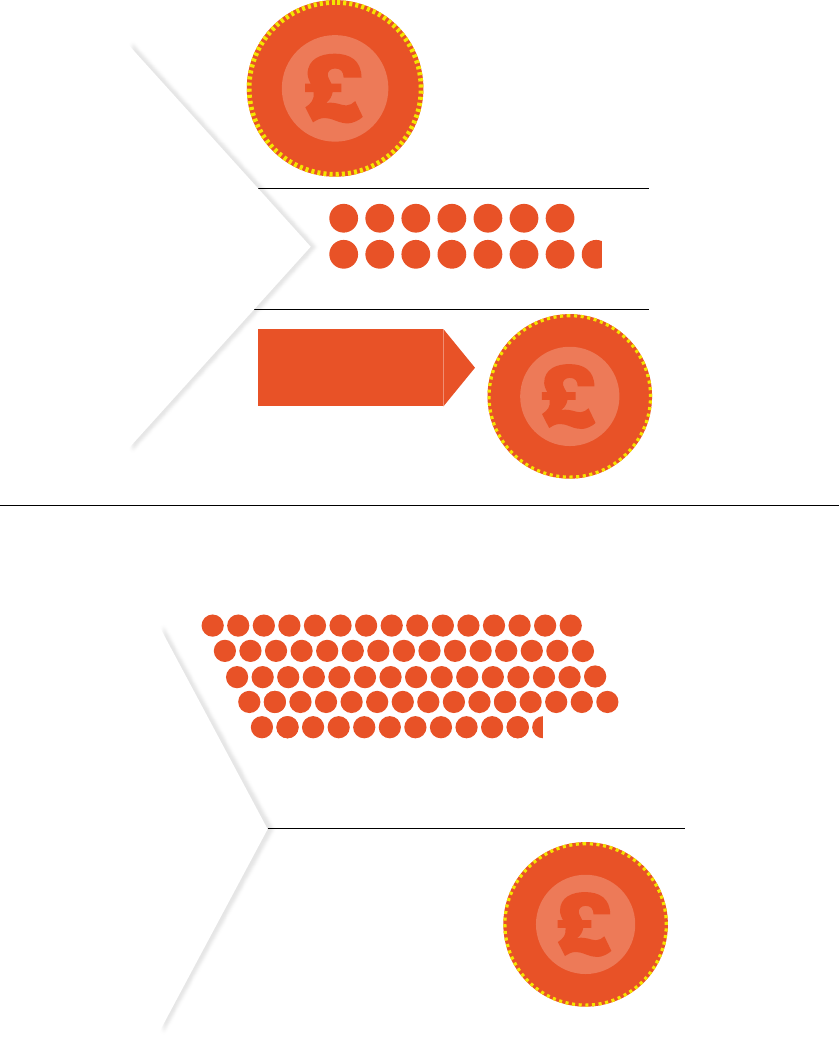
Video games impact, 2019*
14
Return on tax
relief (RoI)
Employment (FTEs):
15,030
Video Games Tax Relief impact, 2019 *
£860.4m
22.8%
growth 2017-2019
* The video games methodology has evolved since the 2018 edition of Screen
Business and also differs from the approach used to calculate the economic impact
of FTR, HETR, ATR and CTR. Therefore, the data are not directly comparable and,
as such, the economic impact of video games is presented separately.
Due to the length of the video games development process and the way in which
the Video Games Tax Relief (VGTR) supports developers, there can be a significant
lag in reporting and it can take several years for actual expenditure figures to
consolidate. Therefore, the profile of video games expenditure supported by the
tax relief in any given year is only a partial picture of the actual expenditure across
the sector.
The VGTR-supported video games sector in the UK represents only a portion of
current activity. To provide a full picture of the impact of the video games sector in
the UK, analysis has been undertaken for Screen Business to estimate the total
economic contribution of video games.
Spend in the UK
supported by the Video
Games Tax Relief is
Employment (FTEs) generated by all
video games developed, published
and sold in the UK: 71,400
GVA generated
by all video games
developed, published
and sold in the UK:
Total video games sector impact, 2019
£2.77bn
Total UK
spend/turnover
relating to direct
impact of video games
development in the UK
Tax revenue
£246.3m
£1.06bn
GVA
£5.12bn
£1.72
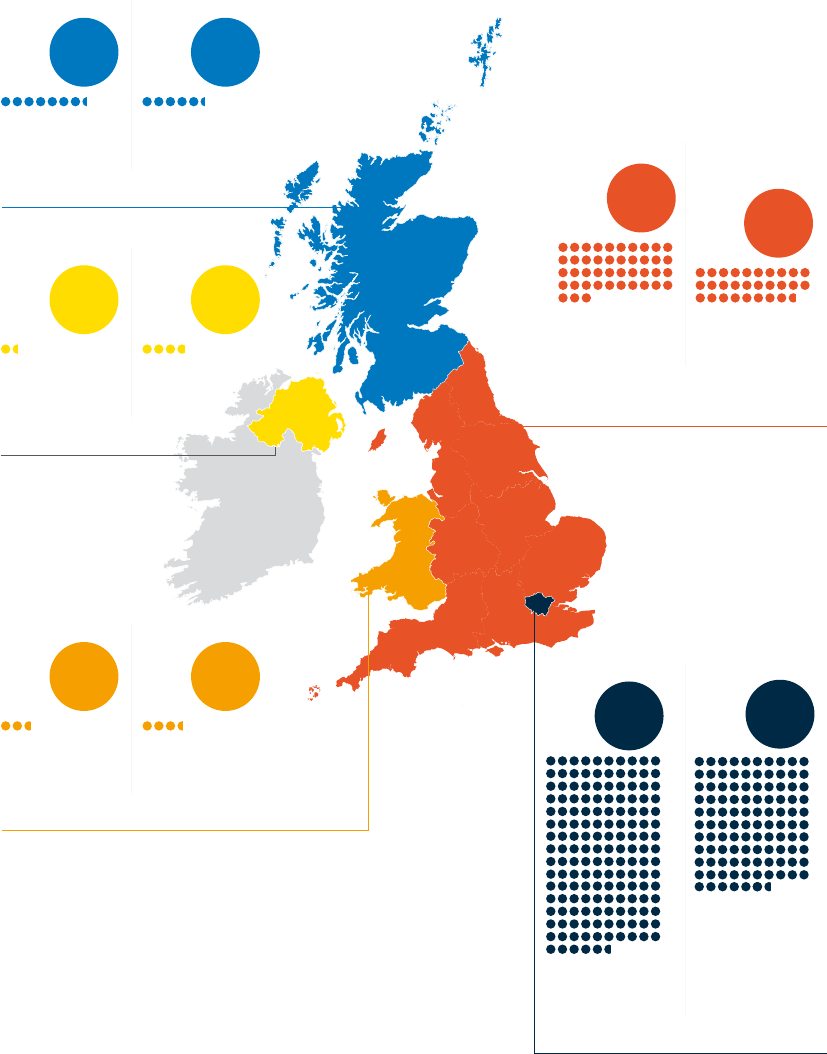
The impact of the film and high-end television tax
reliefs UK-wide, 2017-2019
15
* Metro London combines Greater London with Hertfordshire (from the East of
England) and Buckinghamshire and Surrey (the South East of England) to form
a Metro London region that better reflects the geography of film and HETV
production, given that several of the major studio facilities are located in these
counties. Beyond these changes, the study continues to use the NUTS 1
regions including the South East, which exludes Buckinghamshire and Surrey
Note: Production spend is the direct expenditure on making films and high-end
television productions in each nation. GVA and FTE figures include broader value
and employment generated by production spend through the HETV and film
content value chains (including direct indirect and induced impacts)
The impact of film and high-end television
tax reliefs UK-wide, 2017-2019
Metro London*
Scotland
Northern Ireland
Wales
England's regions
excluding Metro London
Employment (FTEs)
106,528
HETV
GVA
£6.11bn
Employment (FTEs)
155,487
Film
GVA
£11.42 bn
Production
spend
Production
spend
£3.14bn
£5.12 bn
Employment (FTEs)
42,899
Film
GVA
£2.70bn
Production
spend
£922.0m
Employment (FTEs)
3,990
HETV
GVA
£209.2m
Production
spend
£268.3m
Employment (FTEs)
5,645
HETV
GVA
£28 6.1m
Production
spend
£266.5m
Employment (FTEs)
7,591
Film
GVA
£433.1m
Production
spend
£20 6 .1m
Employment (FTEs)
2,792
Film
GVA
£171.6m
Production
spend
£33.6m
Employment (FTEs)
1,621
Film
GVA
£84.7m
Production
spend
£16.0m
Employment (FTEs)
3,733
HETV
GVA
£214.7m
Production
spend
£126.9m
Employment (FTEs)
28,394
HETV
GVA
£1.53bn
Production
spend
£895.1m

16
CONTEXT
1

17
Screen Business provides a comprehensive analysis of the economic contribution of the UK’s
screen sector tax reliefs: Film Tax Relief (FTR), High-end Television Tax Relief (HETR), Animation
Tax Relief (ATR), Children’s Television Tax Relief (CTR) and Video Games Tax Relief (VGTR).
These reliefs help to make the UK a competitive and stable market to develop and produce
content. While the reliefs are a primary driver of production and development growth in the
UK screen sectors, the UK’s highly developed production and development offer are also key
success factors. There is a world-renowned base of talent and creative businesses in the UK,
as well as a specialised offer of physical infrastructure, skilled crew and supply-chain businesses,
which has developed over many years. These areas continue to see strong investment and
strategic development.
Screen Business is published against a backdrop of an unprecedented explosion of screen
production – driven by voracious global consumption and major investment flows from
established players and newer market entrants. In 2019, global expenditure on feature film and
television production – ie investment in scripted film and television and documentaries, but not
sport, news or commercials – was estimated to have reached $177 billion.
1,2
As a result, the
screen sector is a powerful economic driver – particularly in jurisdictions, such as the UK, which
have a highly-developed development and production offer and a stable incentives base.
Undertaken by Olsberg•SPI with Nordicity, and commissioned by the British Film Institute (BFI)
through its National Lottery-supported Research and Statistics Fund, Screen Business updates
previous analyses published in 2015 and 2018.
This edition of the study extends the focus of previous versions of Screen Business by examining
a broader three-year timeframe, spanning 2017, 2018 and 2019.
The analysis is consistent with the 2018 version of Screen Business and applies HM Treasury
Green Book principles and best practice economic modelling to accurately estimate the
impact of these important revenue-generating tax reliefs for the economy, HM Government,
infrastructure investment and employment.
3
A number of new and expanded elements are also included. For the first time, an analysis of the
impact of FTR and high-end television (HETV) production is provided for the UK’s nations and
England’s regions as well as a detailed assessment of key global incentive models that compete
with the UK. As with the 2018 edition of Screen Business, the impact of the tax reliefs on the
visual effects (VFX) sector has also been analysed. While not a direct recipient of its own tax relief,
UK post-production including VFX does qualify within the reliefs, and the sector is an important
and creative element of the UK production value chain.
The study period ends before the onset of the global COVID-19 pandemic, and its impacts
have not been analysed. Nevertheless, this edition of Screen Business will provide an important
benchmark by which impacts can be measured in the future.
1. Global Screen Production - The Impact of Film and Television Production on Economic Recovery from COVID-19. Olsberg•SPI, 25
June 2020. Accessible at: https://www.o-spi.co.uk/wp-content/uploads/2020/06/Global-Screen-Production-and-COVID-19-Economic-
Recovery-Final-2020-06-25.pdf
2. According to data from Newzoo, the global video games market generated revenues of $144.4 billion in 2019, though this revenue
metric is not directly comparable with film and television production expenditure. Global Games Market to Generate $175.8 Billion in 2021;
Despite a Slight Decline, the Market Is on Track to Surpass $200 Billion in 2023. Newzoo, 6 May 2021. Accessible at: https://newzoo.
com/insights/articles/global-games-market-to-generate-175-8-billion-in-2021-despite-a-slight-decline-the-market-is-on-track-to-surpass-
200-billion-in-2023/
3. One exception in terms of continuity is VGTR. While the approach is consistent with that used in the 2018 edition of Screen Business
across FTR, HETR, ATR and CTR, it has been necessary to undertake a revised approach for VGTR because a significant reporting lag
means that it can take several years for actual expenditure figures to consolidate. An estimation of spend for VGTR was therefore
undertaken

2
KEY FINDINGS
18

19
Analysis of the economic contribution of the UK’s screen sector tax reliefs focuses on the
following key areas:
• Investment in film and television production and video games development
4
• Inward investment
• Employment
• The UK economy
• Productivity
• Other benefits such as merchandising, tourism and UK brand promotion
• Return on investment (RoI)
• The impact of film and high-end television (HETV) in the UK nations and England’s regions
• The ripple effect of film and HETV spend into other business sectors
• UK film and television studios
• Innovation
2.1. Delivering growth in production and
development investment
• Production and video games development supported by the UK screen sector tax reliefs –
ie Film Tax Relief (FTR), High-end Television Tax Relief (HETR), Animation Tax Relief (ATR),
Children’s Television Tax Relief (CTR) and Video Games Tax Relief (VGTR) – reached a record
total of £5.11 billion in 2019, an 18.4% increase on 2017. FTR production represented 39.5%
of this total in 2019, while HETR production contributed 40.7% in 2019. VGTR contributed
16.9%, while ATR and CTR contributed 1.3% and 1.7% respectively.
5
• While the tax reliefs have driven growth in the screen sectors, the UK’s base of talent,
skills, physical infrastructure and supply-chain businesses also contributes to its global
competitiveness.
• UK production spend on film was above £2 billion in each of the years analysed for this study.
In 2019, spend was £2.02 billion, which represents an increase from £849.2 million in 2007 –
the year that FTR was introduced.
6, 7
• High-end television (HETV) production supported by the tax reliefs increased from
£1.23 billion in 2017 to £2.08 billion in 2019.
8
This represents an increase from £392.8 million
in 2013 – the year that HETR was introduced.
9
4. While development is a process across the screen sectors, it is used in this study to refer to the development of video games
5. Due to reporting lag, production and development totals are expected to be revised upwards in the coming years
6. Film, high-end television and animation programmes production in the UK: full-year 2020. The BFI Research and Statistics Unit (RSU),
4 February 2021. Accessible at: https://core-cms.bfi.org.uk/media/6334/download
7. 2007 total sourced from the BFI RSU
8. Film, high-end television and animation programmes production in the UK: full-year 2020. Ibid
9. 2013 total sourced from the BFI RSU
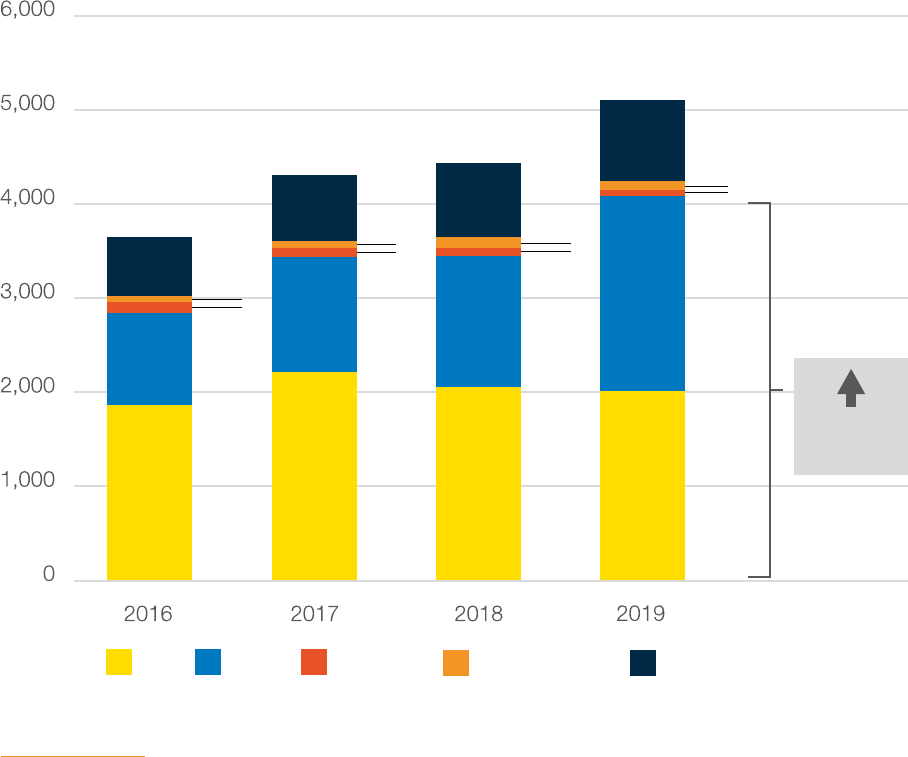
20
• Video games development spending supported by VGTR was an estimated £700.8 million in
2017, £791.0 million in 2018 and £860.4 million in 2019.
10
• The value of animation programme production supported by the tax reliefs declined to
£65.3 million in 2019, from £84.5 million in 2018. This represents a decline from £79.9 million
in 2013 – the year that ATR was introduced.
11
• Children’s television production spend was £74.1 million in 2017, £117.4 million in 2018 and
£86.0 million in 2019. This represents an increase from £43.4 million in 2015 – the year that
CTR was introduced.
12
• While the UK is an attractive production and development market for domestic and
international investors – with an established base of skills, infrastructure and creative talent
– the tax reliefs are a cornerstone element of the UK’s ability to compete for and grow
production and development.
Figure 1
Growth in UK spend supported by the screen sector tax reliefs, 2016-2019 (£m)
10. Because of a significant reporting lag, a different approach to estimating expenditure has been undertaken for VGTR. As the 2019
total is an estimation, it has not been compared to spend in the year that VGTR was introduced, unlike the other sectors in this section
11. 2013 total sourced from the BFI RSU
12. 2015 total sourced from the BFI RSU
1,871.9
977.2
624.5
65.8
114.7
74.1
89.0
117.4
84.5
86.0
65.3
700.8
791.0
860.4
1,226.1
1,390.6
2,078.3
2,220.9
2,061.3
2,015.8
5,105.8
4,444.8
4,310.9
3,654.1
Film HETV Animation
Video GamesChildren's TV
+18.4%
Spend
Growth
2017-2019
Production/development
spend £m
Source: The BFI

21
2.2. Driving inward investment
• On a combined basis, the screen sectors in receipt of tax relief attracted significant amounts
of inward investment into the UK between 2017 and 2019.
13
• Throughout this period, spend on inward investment production accounted for the vast
majority of film production in the UK. In 2019, inward investment film production reached
£1.77 billion, or 87.9% of total film spend. With co-productions, this increases to 89.7% of
total spend.
• Of the £2.08 billion spend on qualifying HETV production in the UK in 2019, £482.4 million
was contributed by domestic UK productions and just under £1.60 billion – 76.8% of the total
– by inward investment and co-production spend.
• Of the £65.3 million spent on the production of animation programmes supported by tax relief
in 2019, £31.8 million – 48.7% of the total – was contributed by inward investment and co-
production spend.
2.3. Growth in employment
• Screen sector production and development is a strong generator of employment.
• In 2019, the screen sector value chain generated 156,030 full-time equivalent (FTE) jobs
(ie from direct, indirect and induced impacts) in comparison to 132,300 in 2017.
• Growth in HETR-related employment has been significant since 2017. A total of 64,310 FTEs
were generated in the sector’s value chain (ie including direct, indirect and induced impacts)
in 2019. This represents an increase of 57.8% from 40,760 FTEs in 2017.
• FTR-related employment in the sector’s value chain decreased from 73,000 in 2017 to
68,930 in 2019 which relates to fluctuations in total production expenditure across the
study timeframe.
• Employment in the VGTR-related value chain grew by 31.3% between 2017 and 2019, from
11,450 in 2017 to 15,030 in 2019.
• ATR-related employment in the sector’s value chain was 3,730 FTEs in 2019. This
represented a decline of 9.3% from 2017.
• CTR-related employment increased by 35.2% between 2017 and 2019, from 2,980 FTEs
to 4,030.
• Screen sector production and development supported by the tax reliefs in 2019 – ie overall
economic contribution including direct, indirect, induced and spillover impacts – generated a
total of 218,790 FTEs, an increase of 20.3% on 2017.
14
13. The BFI’s definition of an inward investment production is a feature film, HETV programme or animation programme which is substan-
tially financed and controlled from outside the UK, where the production is attracted to the UK because of script requirements, the UK’s in-
frastructure or UK tax reliefs. Many (but not all) inward productions are UK films, HETV programmes or animation programmes by virtue of
their UK cultural content and the fact that they pass the cultural test administered by the BFI Certification Unit on behalf of the Secretary of
State for Digital, Culture, Media and Sport. Film, high-end television and animation programmes production in the UK: full-year 2020. Ibid
14. Indirect and induced impacts include employment, employment compensation in the supply chain, and re-spending of employment
income. Spillover impacts include screen tourism, merchandise sales, UK brand promotion and esports in the video games sector
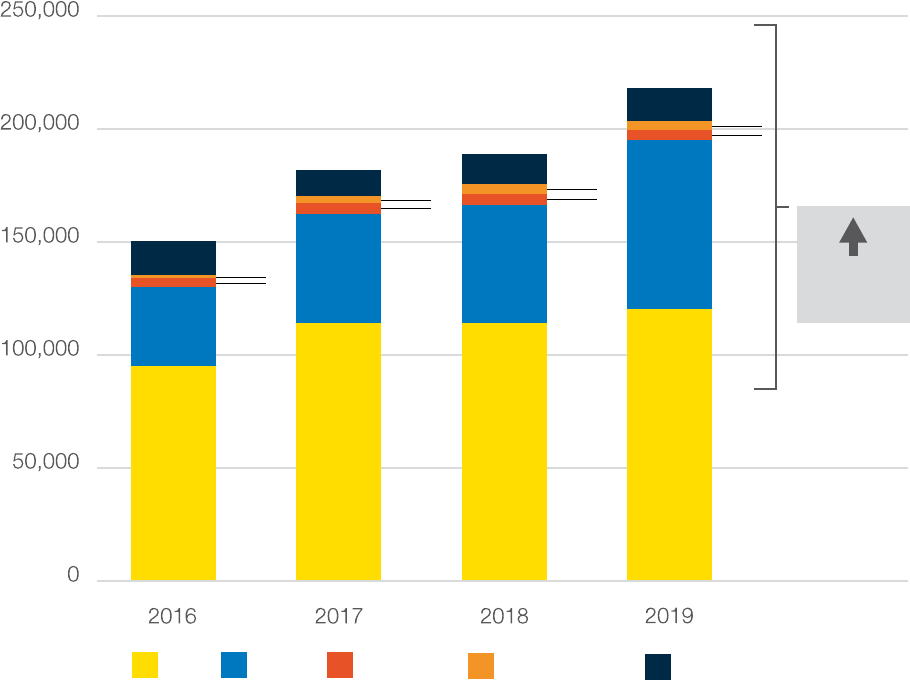
22
Figure 2
Growth in overall UK employment supported by the screen sector tax reliefs,
2016-2019 (FTEs, overall economic contribution including direct, indirect, induced and
spillover impacts)
2.4. Expanding the economy
• In 2019, the tax relief-supported screen sectors together delivered a total of £13.48 billion in
gross value added (GVA) for the UK economy, including direct, indirect, induced and
spillover impacts.
• This represents an increase in overall economic contribution from £10.90 billion in GVA in
2017 and £11.70 billion in 2018.
• Together, production spend and related job creation led to the generation of significant tax
revenues for HM Government, estimated for all tax relief screen sectors in overall terms to be
£3.60 billion in 2019. This represents an increase from £3.11 billion in 2018 and £2.84 billion
in 2017.
Film HETV Animation
Video Games
Children's TV
Total FTE Jobs
34,900
14,830
95,130
114,200
48,320
52,320
114,290
120,650
74,620
11,540
14,230
15,130
4,030
4,360
4,220
4,780
2,980
4,810
1,660
4,030
218,790
189,840
181,850
150,550
+20.3%
Employment
Growth
2017-2019
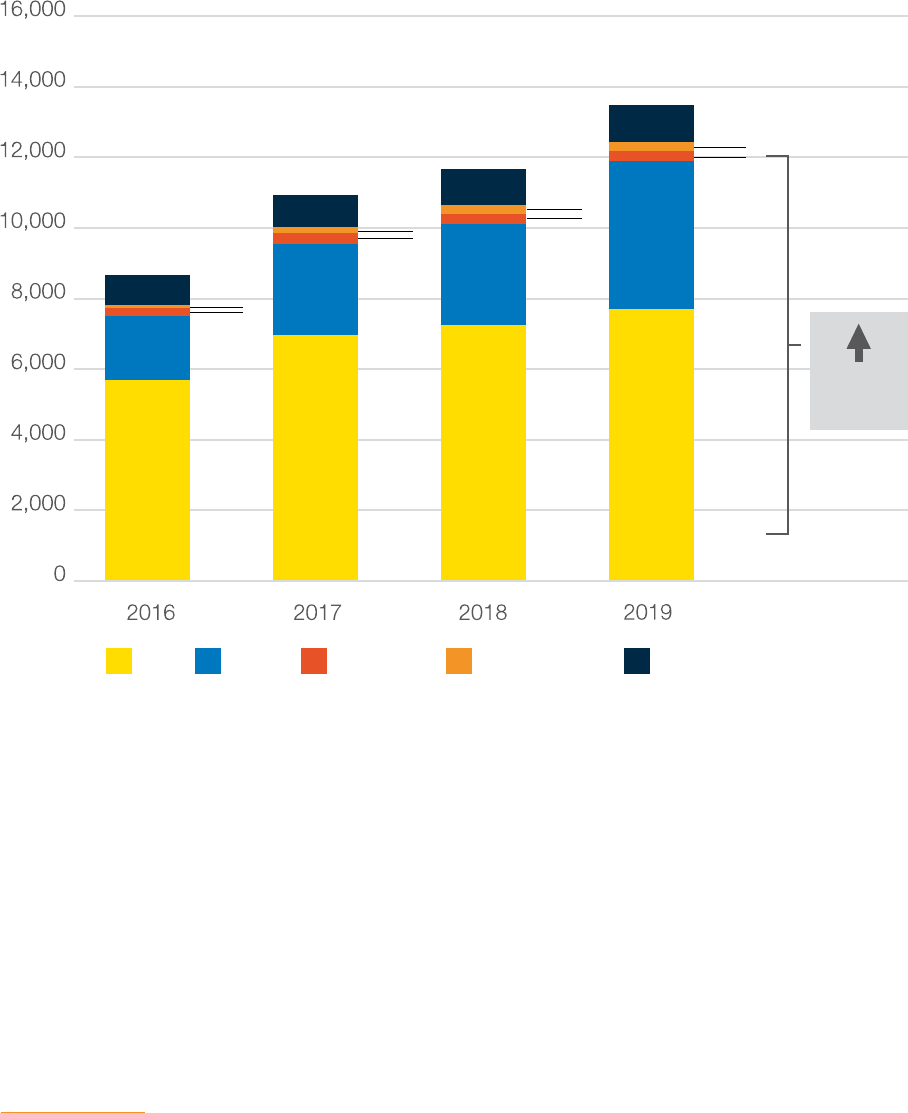
23
Figure 3
Growth in overall GVA supported by the screen sector tax reliefs, 2016-2019 (£m,
overall economic contribution including direct, indirect, induced and spillover impacts)
2.5. Delivering productivity
• In terms of productivity, the GVA per FTE generated across the tax relief-supported screen
sectors is higher than for the economy as a whole.
• Video games delivered the highest average productivity in 2019, with a GVA per FTE of
£121,000.
15
• In 2019, FTR, HETR and CTR displayed a GVA per FTE of £81,500. Animation production
displayed an average GVA per FTE of £84,000.
• The visual effects (VFX) sector delivered GVA per FTE of £89,743 in 2019.
• Meanwhile across the UK economy, average GVA per FTE was an estimated £66,100 in
2019.
16
15. Productivity is an economic measure that assesses how efficient firms, industries or the overall economy is in converting economic
inputs (for example, labour, capital, materials) into economic outputs (for example, finished goods or consumer services) for sale to other
firms or consumers. Productivity is often assessed in terms of labour productivity. Within economic policy, growth in productivity or labour
productivity is a precursor to higher living standards within an economy. In Screen Business, labour productivity is measured using GVA
per FTE
16. GVA per job of £58,377 has been converted to GVA per FTE based on an observed average workweek of 33.1 hours across all
employed workers
Film HETV Animation Video GamesChildren's TV
1,822.0
2,589.6
2,860.2
843.6
893.1
1,061.8
5,673.4
6,946.1
7,231.5
4,177.0
1,070.4
7,684.9
264.1
285.2
251.2
293.0
179.1
290.5
83.9
220.1
13,481.6
11,697.6
10,898.4
8,643.0
+23.7%
GVA
Growth
2017-2019
£m

24
2.6. Providing return on investment
• All of the screen sectors supported by tax reliefs generated RoI when viewed in terms of the
additional GVA returned for every £1 of tax relief.
• This was most significant for FTR, which returned £8.30 in 2019 – an increase of 10.5% from
£7.51 in 2017.
• In 2019, each pound of HETR granted returned £6.44. This represented a slight decrease
from £6.67 in 2017.
17
• ATR and CTR delivered a GVA RoI of £4.53 and £3.20 in 2019 respectively.
• VGTR delivered a GVA RoI of £1.72 in 2019.
18
• The wide range in RoI is addressed in the table below.
Table 1
Annual GVA return on investment, 2016-2019 (£)
Annual RoI 2016 2017 2018 2019
Film 7.47 7.51 7.96 8.30
High-end television 5.98 6.67 6.72 6.44
Animation 4.41 3.94 3.74 4.53
Children’s television 2.72 2.90 2.65 3.20
Video games 1.83 1.75 1.83 1.72
17. As explained in Section 5.8, while total expenditure increased significantly between 2018 and 2019, RoI actually reduced between
2018 and 2019. This is due to the lag between production and the economic impact of screen tourism. It results in reduced RoI because
tax relief is being paid out on increased production in the short term, while one of the sources of economic benefit – screen tourism – is
not yet appearing as a return in the economic model
18. This is not directly comparable with the VGTR RoI reported in the 2018 edition of Screen Business. See Note on RoI box

25
2.7. Supporting innovation
• In addition to generating a range of economic impacts, the UK’s screen sectors are also a
significant innovation hub.
• With technology and creativity at their core, the screen sectors are at the cutting edge of
innovation, in regard to both the products they create and the technology, processes and
skills involved in this creation.
• Notably, some creative and technical developments in one screen sector are impacting other
screen sectors – for example, virtual production technology. At the confluence of film, video
games, animation, visual effects and HETV production, virtual production allows filmmakers
to use VFX and computer graphic technologies in real time, to design sequences and provide
data and an offline (‘previs’) version of a final sequence or to combine final pixel computer
graphics (CG) with live action as it is being filmed.
• Creative and technical innovations are also benefitting the wider UK economy. StoryFutures,
for example, is a programme of research and development (R&D) projects with screen sector
businesses west of London that drives innovation in story form into storytelling, business
behaviours and audience development.
Note on RoI
All of the tax reliefs displayed positive RoI in terms of additional GVA, but a wide range of
return is evident across the sectors. This range can be linked to three key factors:
1. Sectors in which inward investment accounts for a larger share of overall spending
will display higher rates of additionality and RoI, since this inward investment spending
is more globally mobile than domestic spending on production or video games
development. Indeed, the vast majority of FTR and HETV production is inward
investment and highly mobile.
2. Inbound screen tourism is another key driver of additional GVA and a higher RoI.
Spending in the UK by inbound tourists is highly additional to the UK economy –
much like merchandise or services exports. Unlike spending on production or video
games development, tourist spending does not trigger a partially offsetting tax relief
outlay by HM Treasury. The economic benefits of inbound screen tourism are highest
in the film sector because FTR has been in place longer than the other tax reliefs and,
therefore, has helped the UK build a stock of screen tourism assets that continue
to attract inbound tourists long after the screen content has been first released. In
contrast, in the video games sector, esports has the potential to generate inbound
tourism, but not at the same scale as the screen tourism associated with films or
television programmes. The lack of screen tourism is one reason why the VGTR RoI is
lower than that for the other tax reliefs.
3. The methodology used for VGTR for this edition of Screen Business differs from the
2018 edition. As part of this, the method for measuring additionality for VGTR was
harmonised with the approach used for other tax reliefs in this study. This has led to a
lower RoI that is not directly comparable to the previous edition of Screen Business.

26
• The screen sectors create highly unique products. One example from the video games sector
is Dreams from UK developer Media Molecule. Dreams is a video game environment that not
only provides visual and immersive gameplay but, through its content creation and sharing
mechanisms, is able to develop the creativity of individuals and even offer opportunities and
routes into the video games sector.
• A range of innovation case studies are included in Section 14, outlining the scale of
development as well as the broad impacts across the UK – from leading VFX and animation
company Jellyfish Pictures establishing its first studio outside of London, in Sheffield, to the
Future Screens NI initiative and the Screen Media Innovation Lab in Northern Ireland, both
part of strategic plans to further increase local economic growth and high-value employment.
2.8. Growth in UK film and television studios
• The significant amount of expenditure undertaken in the UK by film and television projects
accessing the UK’s screen sector tax reliefs has helped to attract investment from private and
public investors into film and television production infrastructure – particularly studio facilities.
• While investment in film and television studios has, in the past, mainly centred on the Metro
London cluster, recent years have seen some infrastructure planning and development
across the UK, with investment in all UK nations and in several of England’s regions. While
comparatively limited when considered against the scale of development in Metro London,
these developments represent notable evolution of the production offer across the UK.
• Regional developments reported include new stages at Belfast Harbour Studios, the opening
of First Stage Studios in Edinburgh and new film and television studio facilities in Leeds and
Liverpool.
19, 20
• As part of this study, investment in new studio developments and in the expansion of
existing sites since 2017 has been tracked. This includes both purpose-built studios and
converted spaces.
• In total, an estimated £131.6 million was spent in building or expanding UK studios over the
period of the study between 2017 and 2019. This included £24.6 million of capital invested in
the period in building or expanding studios outside of Metro London.
• In addition to tracking capital expenditure between 2017 and 2019, analysis was also
undertaken into plans for studio projects or expansions which were announced between
2017 and 2020. This analysis focused on intended projects where planning permission had
already been granted. The timeframe was extended to the end of 2020 to reflect the fact that
the underlying investment decisions would have been based, in part, on the performance of
the UK film and television sector between 2017 and 2019.
• In total, an estimated £785.4 million of potential spend was announced for projects which
had received planning permission by the end of 2020. This is in addition to the £131.6 million
of actual spend highlighted above.
19. Belfast Harbour seeks to develop six new film and television studios. Irish Times, 17 February 2020. Accessible at: https://www.
irishtimes.com/business/economy/belfast-harbour-seeks-to-develop-six-new-film-and-television-studios-1.4175621
20. First Stage Studios to open in Leith. Film Edinburgh, 13 March 2020. Accessible at: https://www.filmedinburgh.org/News/First-Stage-
Studios-to-open-in-Leith-56570

27
2.9. The impact of the film and high-end television
tax reliefs UK-wide
• Recent years have seen increasing amounts of film and HETV production taking place outside
of the Metro London hub. This includes Game of Thrones, Line of Duty and Ordinary Love
in Northern Ireland, Outlander, Shetland and Wild Rose in Scotland and Sex Education, His
Dark Materials and Eternal Beauty in Wales. A broad range of productions have been made
in England’s regions, including Peaky Blinders, Ackley Bridge, The Personal History of David
Copperfield and How to Build a Girl.
• This study examines how total UK expenditure supported by FTR and HETR is dispersed
across the UK’s nations and England’s regions.
21, 22
• Since there is currently no standard approach to measuring UK production spend in this
way across the UK nations and England’s regions, a new production spend rate card was
developed, based on analysis of different production budgets provided by the BFI. This
analysis created a set of daily spend averages for different types of projects and budget
levels, which were then multiplied by location filming days data, sourced from national and
regional agencies.
• A significant amount of the HETV sector’s production activity impacts the UK nations and
England’s regions, with an estimated £1.56 billion in production spend, or around 33% of the
UK total, being undertaken outside of Metro London between 2017 and 2019.
• In 2019, HETV production spend generated 33,548 FTE jobs in Metro London and 15,612
throughout the rest of the UK, including direct, indirect and induced effects. Taking into
consideration the total impact of the HETV content value chain, including direct, indirect
and induced effects, 45,240 FTE jobs were created in Metro London in 2019 and 19,070
throughout the rest of the UK.
21. An analysis of the impact of the overall video games sector on the UK nations and England’s regions is provided in Section 16.1.7.
22. Since a wide range of factors influence a producer’s decision to locate a production in a nation or region – including the availability of
locations, talent, infrastructure and finance – this should be considered an analysis of how FTR and HETR spend is dispersed, and not an
analysis of how these tax reliefs specifically influence production flows around the UK
Note on Metro London
While this study uses Eurostat’s Nomenclature of Territorial Units for Statistics (NUTS) 1
approach to define England’s regions, a new Metro London definition has also been created.
Metro London combines Greater London with Hertfordshire (from the East of England) and
Buckinghamshire and Surrey (the South East of England) to form a Metro London region that
better reflects the geography of the film and television production sector, given that several
of the major studio facilities are located in these counties. The Metro London approach
overcomes the imbalance that using NUTS 1 definitions around London would have created.
Beyond these changes, the study continues to use the NUTS 1 regions including South
East, which excludes Buckinghamshire and Surrey.
28
• In GVA terms, HETV production spend generated £1.67 billion in GVA in Metro London in
2019 and £778.3 million throughout the rest of the UK, including direct, indirect and induced
effects. Taking into consideration the total impact of the HETV content value chain, including
direct, indirect and induced effects, £2.64 billion in GVA was generated in Metro London in
2019 and £1.04 billion throughout the rest of the UK.
• There is evidence of particular HETV activity between 2017 and 2019 in Northern Ireland,
Scotland and Wales, as well as the North West of England, the South West of England, and
Yorkshire and the Humber.
• The film sector, in comparison, has been more focused on Metro London – partly because
of the region’s developed and long-standing base of high-end studio facilities, supply chain
businesses and crew. Nevertheless, outside of Metro London, the analysis shows that
film production activity has been taking place in Scotland, the South East of England and
Yorkshire and the Humber, as well as other locations. Film spend generates significant
impacts across the UK, with around £1.18 billion spent outside Metro London between 2017
and 2019, representing around 19% of the total.
• In 2019, film production spend generated 37,685 FTE jobs in Metro London and 7,775
FTEs throughout the rest of the UK, including direct, indirect and induced effects. Taking
into consideration the total impact of the film content value chain, including direct, indirect
and induced effects, 49,845 FTE jobs were created in Metro London in 2019 and 19,085
throughout the rest of the UK.
• In GVA terms, film production spend generated £1.96 billion in GVA in Metro London in
2019 and £404.1 million throughout the rest of the UK, including direct, indirect and induced
effects. Taking into consideration the total impact of the film content value chain, including
direct, indirect and induced effects, £3.74 billion in GVA was generated in Metro London in
2019 and £1.24 billion throughout the rest of the UK.
2.10. The ripple effect of film and high-end
television production
• In addition to the macro-economic effects modelled by this study, research has also been
undertaken into specific micro effects generated by film and HETV productions in the UK.
• Film and HETV production are specialist manufacturing processes which require significant
inputs such as workers, equipment, infrastructure and services.
• While some of these inputs will be sourced directly from the screen sector – ie from
individuals or vendors who only work in film and HETV production – a significant degree
will be hired from other areas of the economy. This is referred to as the ripple effect – ie the
micro-economic impacts that each production generates for other business sectors.
• To demonstrate this impact, forensic analysis of three production budgets was undertaken.
For each project, production spend was assigned to the business sector into which the
money was spent. The focus of the analysis was on below-the-line production expenditure.
• The analysis found that the proportion of production costs across the three projects that was
spent in the general economy was between 40% and 60% of the total. Importantly, significant
amounts (depending on the size of the production) were spent in sectors which have been
particularly affected by the COVID-19 pandemic, such as travel and transport, and hospitality
and catering.

29
• The analysis also provides important insights into the regional impacts that are created by film
and HETV production. Indeed, the three projects were all made outside of Metro London: two
were filmed predominantly in UK nations outside of England, and one was filmed in an
English region. The projects were treated confidentially, and no identifying
factors have
been included.
2.11. Delivering wider benefits
• Spillover impacts – including merchandising, inbound tourism and UK brand promotion – are
part of the overall economic contribution delivered by the tax reliefs and are also significant in
the revenues and jobs they generate.
• The UK has produced film and television drama with a strong sense of place and culture in
recent years. Projects have included The Secret Garden, which used multiple filming locations
in Yorkshire including Helmsley Walled Gardens, T2 Trainspotting, which filmed in Edinburgh,
The Favourite, which filmed at Hatfield House in Hertfordshire, and the production of Sex
Education in Wales. Meanwhile, Game of Thrones has showcased Northern Ireland’s locations
to global audiences.
• In 2017, inbound tourists spent an estimated £729.4 million in film-related screen tourism in
the UK. This is estimated to have increased to £892.6m in 2019.
• For the video games sector, the impact of esports and video games merchandise has also
been included in the overall spillovers.
23
2.12. Notes on economic impact methodology
• A bespoke economic impact model has been developed for this study, reflecting current
best practice in economic impact modelling, aligning the analysis with current government
evaluation methodology (HM Treasury Green Book).
• The previous edition of Screen Business, published by the BFI in 2018, replaced the use of
a strictly multiplier-based approach which had previously been used with an input-output
(I-O) approach. This ensures that there is temporal consistency between production spend
statistics and the economic contribution that this spend generates. It also ensures that input
data are not double counted – a risk when multipliers are applied – and also that the base
data is validated.
• The approach taken for this study is consistent with the approach used in 2018 across FTR,
HETR, ATR and CTR. For VGTR it has been necessary to undertake a revised approach.
This is because a significant reporting lag means that it can take several years for actual
expenditure figures to consolidate. To calculate impacts, the year-to-year growth in VGTR
payments reported by HM Revenue & Customs (HMRC) for 2016/17 to 2018/19 (accrual
basis) was applied to the total development spending supported by VGTR in 2016 (as
reported by the BFI) to estimate the levels of VGTR-supported development spending in
2017, 2018 and 2019.
23. As outlined in Section 6.5.2., the economic benefits of esports are counted as a spillover from the UK video games sector for the
purposes of this study on the basis that VGTR contributes to a small extent to the overall strength of the esports ecosystem in the UK.In
fact, the modelling used for this analysis found that VGTR titles only accounted for 4.4% of GVA generated by the UK’s esports industry in
2019. While esports growth is not directly driven by VGTR, some titles with esports elements have accessed VGTR

30
• For each sector, the value estimated relates only to tax relief-supported content and does not
represent all content produced, licensed, sold, viewed or exhibited in the UK.
• For each sector in receipt of tax relief, economic impact is presented in several ways:
• Direct economic impact – economic activity (employment and GVA) generated directly
throughout the value chain by the element of the sector in receipt of tax relief
• Total economic impact – the direct impact throughout the value chain, plus indirect and
induced impact
24
• Overall economic contribution – the impacts of all parts of the value chain plus spillover
impacts such as merchandise and screen tourism
2.13. Key findings by sector
2.13.1. Film
• The UK has a very well-developed offer as a film production hub, combining specialist skills,
a strong talent base and established infrastructure. Films made in the UK include both
major-budget inward investment projects – such as No Time To Die and The Lion King – and
domestic UK films that achieve wide acclaim. The Favourite is an example of the latter.
• FTR has stimulated substantial growth in production expenditure in the UK film sector since
its introduction in 2007. Although there are slight fluctuations from year to year triggered
by the start of production on high-budget films, spend overall has risen from £849.2 million
in 2007 to £2.22 billion in 2017, £2.06 billion in 2018 and £2.02 billion in 2019.
25
These
fluctuations between 2017 and 2019 affect related GVA and FTEs.
• In 2017, film sector production in receipt of FTR directly contributed £1.21 billion to the UK’s
Gross Domestic Product (GDP). In 2018, the contribution was £1.13 billion and in 2019 it was
£1.10 billion.
• Films qualifying for FTR are a significant employer, directly generating 33,430 FTE jobs
throughout all parts of the value chain in 2017, 31,630 in 2018 and 31,160 in 2019.
26
In GVA
terms, films qualifying for FTR delivered £2.86 billion to the UK’s Gross Domestic Product
(GDP) in 2017 throughout all parts of the value chain, £2.88 billion in 2018 and £2.91 billion in
2019.
• With value chain, indirect and induced impacts, FTR generated 73,000 FTEs in 2017, 68,460
in 2018 and 68,930 FTEs in 2019.
• With value chain, indirect and induced spending, the total economic impact of the tax relief-
supported UK film sector in 2017 amounted to £4.93 billion in GVA in 2017, £4.91 billion in
2018 and £4.98 billion in 2019.
27
• FTR generated strong returns for HM Treasury over 2017-2019. In 2017, each pound of FTR
granted yielded an additional £7.51 in GVA for the UK economy. In 2018, this was £7.96 and
in 2019 it was £8.30.
24. See Section 3.7. for an explanation of the areas of economic impact
25. Film, high-end television and animation programmes production in the UK: full-year 2020. Ibid. As outlined, the differences in spend
across 2017-2019 may not represent decline as such, and may instead relate to the start date of high-budget films in specific years. Totals
may also increase in future in relation to the BFI’s tracking of production data. Total for 2007 sourced from the BFI RSU
26. As noted, changes over the study timeframe reflect underlying production expenditure
27. See Section 3.7. for an explanation of the areas of economic impact

31
2.13.2. High-end television
• The UK produces a range of HETV content that attracts significant attention, both within the
UK and around the world. Between 2017 and 2019, productions qualifying for HETR included
Game of Thrones, The Virtues and Quiz.
• HETV production investment has also increased throughout the UK, contributing to
production growth in the UK nations and England’s regions. This is evidenced by productions
such as Game of Thrones in Northern Ireland, His Dark Materials in Wales, Outlander in
Scotland and Peaky Blinders in England.
• Since HETR was introduced in 2013, production in the high-end television sector has
undergone a very substantial increase, with UK expenditure rising from £392.8 million in 2013
to £1.23 billion in 2017, £1.39 billion in 2018 and £2.08 billion in 2019.
28, 29
• In 2017, the HETV sector production directly contributed £707.5 million to the UK’s GDP. In
2018, the contribution was £802.4 million and in 2019 it was £1.20 billion.
• As a result, HETV production spend generated 18,600 direct FTE jobs throughout all parts of
the value chain in 2017, increasing to 19,770 in 2018 and 28,760 in 2019.
• With value chain, indirect and induced impacts, HETV generated 40,760 FTEs in total in
2017, increasing to 43,220 in 2018 and 64,310 FTEs in 2019.
• With value chain, indirect and induced impacts, HETV content generated a total economic
impact of £2.24 billion in GVA for the UK in 2017, £2.43 billion in 2018 and £3.67 billion
in 2019.
• HETR generated strong returns for HM Treasury over 2017-2019. In 2017, each pound of
HETR granted yielded an additional £6.67 in GVA for the UK economy. In 2018, GVA RoI was
£6.72 and in 2019 it was £6.44.
2.13.3. Video games
30
• The video games sector is a significant component of the UK screen landscape, with UK-
made video games – such as LEGO Star Wars – The Force Awakens, Total War: Warhammer
II, Yooka-Laylee and the Impossible Lair, Monument Valley 2 and Sackboy: A Big Adventure –
making huge commercial and cultural impacts globally.
• The UK Government introduced VGTR from April 2014. In 2017, expenditure on video games
development supported by VGTR was an estimated £700.8 million. In 2018, it was estimated
to be £791.0 million and in 2019 it was an estimated £860.4 million.
• In 2017, VGTR-supported video games development directly contributed £567.6 million to
the UK’s GDP. In 2018, the contribution was £585.3 million and in 2019 it was £559.3 million.
• Throughout all parts of the value chain, VGTR-supported spend directly generated 5,890 FTE
jobs in 2017, 6,190 in 2018 and 5,640 in 2019.
• With value chain, indirect and induced impacts, the VGTR-supported sector generated
11,450 FTEs in 2017, 14,130 in 2018 and 15,030 in 2019. In terms of GVA, the sector
generated £887.5 million in 2017, £1.06 billion in 2018 and £1.06 billion in 2019.
28. 2013 total sourced from the BFI RSU
29. Film, high-end television and animation programmes production in the UK: full-year 2020. Ibid
30. Because of a significant reporting lag in the sector, it has been necessary to revise the methodology used in the previous edition of
Screen Business for video games. See Section 2.12.

32
• VGTR-supported development generates strong returns for HM Treasury. In 2017, each
pound of VGTR granted leveraged an additional £1.75 in economic activity for the UK
economy. In 2018, it was £1.83 and in 2019 it was £1.72.
• The sector is also a driver of cutting-edge innovation. This includes innovations in technology,
which can impact widely across other screen sectors. For example, video game engine
technology is a key component of virtual film and television production, which enables
filmmakers to utilise VFX and computer graphic technologies in real time.
31
Video games also
innovate in terms of content, creating new forms of storytelling and story engagement.
32
2.13.4. Animation programmes
• The UK has a long tradition of producing animation television programmes, with content such
as The Adventures of Paddington and Pip and Posy achieving success.
• ATR was introduced in 2013 for animation programmes intended for broadcast on television
or via the internet. Animation feature films are eligible for FTR, with examples including The
Lion King, Sherlock Gnomes, Early Man and Isle of Dogs.
• Considering only ATR programme production – ie excluding other types of non-eligible
animation such as advertising – expenditure was £89.0 million in 2017, £84.5 million in 2018
and £65.3 million in 2019.
33
• In 2017, ATR programme production directly contributed £60.7 million to the UK’s GDP. In
2018, the contribution was £57.6 million and in 2019 it was £44.5 million.
• Throughout all parts of the value chain, ATR-supported spend directly generated 1,850 FTE
jobs in 2017, 1,800 in 2018 and 1,460 in 2019.
• With value chain, indirect and induced impacts, ATR-supported spend generated 4,110 FTEs
in total in 2017, decreasing to 4,100 in 2018 and 3,730 FTEs in 2019.
• With value chain, indirect and induced impacts, the total economic impact for the component
of the UK animation sector supported by tax relief amounted to £258.1 million in GVA in
2017, £261.0 million in 2018 and £254.6 million in GVA in 2019.
• ATR-supported production generates strong returns for HM Treasury. In 2017, each pound of
ATR granted leveraged an additional £3.94 in economic activity for the UK economy. In 2018,
it was £3.74 and in 2019 it was £4.53.
31. See virtual production case study in Section 14.3. While not examined in this study, video games innovations can also impact other
sectors such as transport and health
32. A case study of Media Molecule’s Dreams is included in Section 14.5.
33. It should be noted that theanimation sector’s overall sizeandvalue are considerably more significant thantheelement capturedin
relation to ATR.In 2019,theBFIcommissionedthefirst of two broader animation ‘mapping’ studies to analysethesector’s value,in-
cluding animationforcorporate and digital marketingandadvertising. Most animation companies operate mixed business models:
thesewillbeanalysedinthesecond ofthetwo mapping studies, due to be published in 2022

33
2.13.5. Children’s television programmes
• From Horrible Histories to The Athena, the UK has a long tradition of producing high-quality
children’s television programmes.
• CTR was introduced in 2015 with the aim of encouraging the production of culturally British
children’s television programmes in the UK.
34
CTR supported £74.1 million of spend in 2017,
£117.4 million in 2018 and £86.0 million in 2018.
35
• In 2017, CTR production directly contributed £43.9 million to the UK’s GDP. In 2018, the
contribution was £69.5 million and in 2019 it was £50.9 million.
• Throughout all parts of the value chain, CTR-supported spend directly generated 1,330 FTE
jobs in 2017, 1,920 in 2018 and 1,610 in 2019.
• With value chain, indirect and induced impacts, the CTR-supported sector generated 2,980
FTEs in 2017, 4,220 in 2018 and 4,030 in 2019.
• With value chain, indirect and induced impacts, the total economic contribution for the
component of the UK children's television sector supported by tax relief amounted to £179.1
million in GVA in 2017, £251.2 million in 2018 and £264.1 million in 2019.
• CTR-supported production generates strong returns for HM Treasury. In 2017, each pound of
CTR granted leveraged an additional £2.90 in economic activity for the UK economy. In 2018,
it was £2.65 and in 2019 it was £3.20.
2.13.6. Visual effects
36
• With its cutting-edge digital skills, the VFX sector is an important component of the UK screen
ecosystem. VFX is highly impactful across both film and HETV production, and UK VFX
studios such as DNEG, Milk, Framestore and BlueBolt have contributed to such innovative
and award-winning productions as Tenet, Chernobyl and His Dark Materials.
• While VFX is not the recipient of a standalone tax relief, the value of VFX as a separate
element of the production sector has been analysed due to its importance as part of the
production process. Some projects accessing tax relief may only undertake VFX work in the
UK; FTR and HETR both require at least 10% of a project’s core expenditure to be UK spend
and VFX spend alone may reach this level on some projects.
• In 2017, an estimated £301.3 million was spent on VFX services for FTR, HETR, ATR and
CTR projects in the UK. This increased to £361.9 million in 2018 and £363.5 million in 2019.
FTR-related production was the largest proportion of this over 2017-2019.
• In 2017, the direct economic impact of VFX production within the tax reliefs was
£251.9 million. In 2018, it was £302.6 million and in 2019 it was £303.9 million.
• As a result of this activity, the VFX sector generated 9,440 FTE jobs throughout all parts of the
value chain in 2017, 11,570 in 2018 and 11,840 in 2019.
34. Children’s television tax relief. HM Revenue & Customs, 10 December 2014. Accessible at: https://assets.publishing.service.gov.uk/
government/uploads/system/uploads/attachment_data/file/385183/TIIN_2020.pdf
35. Source: The BFI RSU
36. Analysis of the VFX sector represents a restatement of value outlined above with a focus on VFX production. It should not be added to
the impacts of the individual tax reliefs. The importance of VFX within the screen sector tax reliefs is outlined in this section. As the analysis
has not included areas of production undertaken without relief, such as commercials which benefit from UK skills and creativity in this area,
the value of the whole UK VFX sector has also been assessed and is included in Appendix 2
34
• With value chain, indirect and induced spending, and spillover impacts, the sector generated
14,630 FTEs in 2017, 19,030 in 2018 and 20,050 in 2019.
• Including value chain and spillover impacts, the overall economic contribution across the
screen sector value chain attributable to VFX was £903.6 million in GVA in 2017, £1.21 billion
in 2018 and £1.29 billion in 2019.
2.14. Global comparison of production incentives
for film, television and video games
• The UK operates in a highly competitive global production and development market, and its
screen sector tax reliefs are among around 100 automatic incentives on offer around
the world.
• The UK competes with major global production centres for film, television and video games
such as California and Georgia in the US, several Canadian provinces (including British
Columbia, Quebec and Ontario) and Australia. In Europe, it also competes with countries
such as France, Germany, Hungary and Ireland.
• As in the UK, many of these jurisdictions offer well-established, stable incentives for
production and development, as well as strong workforce and infrastructure offers.
• In other jurisdictions, incentives are being revised to encourage specific types of production
or development activity.
• Canada offers a range of automatic incentives, administered at both federal and provincial
levels, for film and television. Individually, these incentives can appear relatively low in terms of
headline percentage, but productions may ‘stack’ provincial and federal incentives – making
Canada’s incentives highly competitive globally.
• As with film, Canada offers a number of provincial incentives for video games development
in British Columbia, Manitoba, Ontario, Quebec, Nova Scotia, Prince Edward Island and
Newfoundland and Labrador. As a result, Canada is one of the largest video games
development hubs in the world.
• In France, live-action productions which undertake a substantial portion of their VFX work in
the country may be eligible for an incentive worth 40% on all eligible French expenditure (not
just any relevant VFX expenditure), instead of the standard 30% incentive.
• Also in France, the video games incentive was increased from 20% to 30% in 2017, and the
maximum annual threshold per company was increased to €6 million.
• In Ireland, a temporary Regional Uplift was introduced in 2018 for film and television,
animation and creative documentary productions substantially produced outside Dublin/
Wicklow and Cork City and County. Eligible productions benefit from a 5% uplift on regional
expenditure, subject to specific training related requirements. The 5% uplift applies in 2020
and 2021, then tapers off to 3% in 2022 and 2% in 2023 (its final year).

35
• Australia offers two major incentives for international productions, the automatic Location
Offset (worth 16.5%) and the Location Incentive (worth 13.5%). The two incentives can
be used in conjunction with each other, resulting in an incentive worth 30% of eligible
expenditure in Australia. The country also offers the Producer Offset for domestic productions
with significant Australian content, worth 40% for theatrically released feature films and 30%
for all other eligible formats.
• For post-production, digital, and visual effects (PDV) work, productions can access a
refundable tax credit worth 30% of qualifying expenditure in those areas. The PDV incentive
can be combined with state and territory government incentives in New South Wales, South
Australia, Western Australia, Victoria and Queensland.
• While Australia does not offer a video games incentive at time of writing this study, in May
2021 the Australian Government committed to a 30% refundable tax offset in the 2021-22
Federal budget to be offered from 1 July 2022.
2.15. Findings as a benchmark in the
COVID-19 era
• The timeframe of this study – 2017-2019 – is of course just before the beginning of the global
COVID-19 pandemic, which has caused unprecedented disruption to the screen sectors
across the world.
• According to the BFI, almost all UK film and HETV productions were suspended or
postponed by the end of the first quarter of 2020. The combined total spend on film and
HETV production in the UK was £918 million lower for the first half of 2020 than for the first
half of 2019.
37
• In June 2020, COVID-19 health and safety guidelines were brought in as one of a number
of priorities to support the industry into recovery, led by the BFI Screen Sector Task Force
(SSTF) and working with the British Film Commission (BFC), Pact, broadcasters and the UK
Screen Alliance.
• In July 2020, the UK Government also announced the launch of a significant £500 million Film
and TV Production Restart Scheme to assist UK film and television productions struggling to
get insurance for COVID-19 related costs.
38
• Demonstrating the resilience of the sectors, and the high degree of investor interest, the BFI
has reported that the combined spend on film and HETV production in the UK in the first half
of 2021 was, at £3.6 billion, the highest combined film and HETV reported in the quarterly
official statistics release on record.
39, 40
37. Film and high-end television production in the UK, January-June (H1) 2020. The BFI RSU, 30 July 2020. Accessible at: https://www2.
bfi.org.uk/sites/bfi.org.uk/files/downloads/bfi-film-other-screen-sectors-production-uk-h1-2020.pdf
38. Guidance – Film & TV Production Restart Scheme. Department for Digital, Culture, Media & SportandHM Treasury, 17 September
2020. Accessible at: https://www.gov.uk/government/publications/film-tv-production-restart-scheme
39. Film, and high-end television production in the UK; January-June (H1) 2021. The BFI RSU, 29 July 2021. Accessible at: https://core-
cms.bfi.org.uk/media/11588/download
40. The global value of screen production and its potential role in COVID-19 economic recovery was examined in Global Screen
Production – The Impact of Film and Television on Economic Recovery from COVID-19. Ibid

36
• In the video games sector, research from Ukie undertaken in 2020 shows that overall
productivity in the industry remained high through the pandemic, with businesses working
at 80% productivity during the worst of the COVID-19 crisis. The research also showed that
80% of video games businesses were making no plans to reduce headcount in response to
the crisis.
41
• Against this backdrop, the data and analysis in this edition of Screen Business show the
development of the screen sectors in receipt of tax relief in the pre-COVID-19 era. For
policymakers, the study provides clear evidence of the impacts generated by the reliefs. For
future analyses, the study will provide the baseline for further understanding of the impacts of
COVID-19 on the UK screen sectors – and the role these sectors are able to play in driving
economic growth.
41. Playing On – The UK games and interactive entertainment industry during the COVID-19 pandemic. Ukie, 22 July 2020. Accessible
at: https://ukie.org.uk/news/ukie-s-playing-on-report-highlights-the-resilience-of-uk-games-industry-during-covid-19
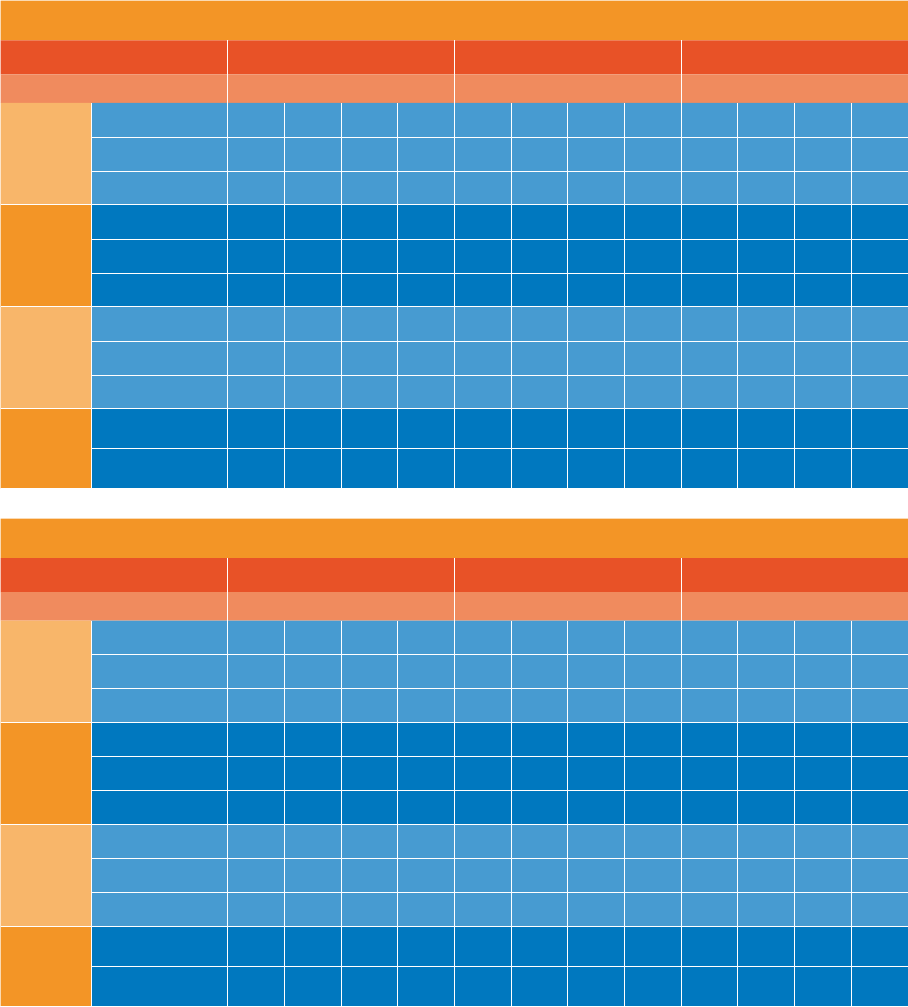
37
Notes:
1. Includes direct impact of the production sub-sector and other value chain sub-sectors
2. Includes direct and multiplier effects (ie indirect and induced impacts) for all value chain sub-sectors
3. Equal to sum of direct, indirect and induced impacts and spillover effects
4. Return on investment (RoI) data relate to returns per £ (GVA) or £m (FTEs) of tax relief granted; based on additional total
economic impact + additional tourism spillovers
5. Full economic impact of the UK video games sector – including elements not applying or eligible for VGTR – can be found in
Appendix 1. This shows a total economic contribution, including spillovers, of 73,370 FTEs in 2019, with a GVA contribution of
£4.63 billion
6. See note on RoI and VGTR in Section 2.6. for context
7. As no spillover value has been included for CTR, the overall economic contribution is the same as total economic impact
across the value chain
GVA refers to gross value added; FTEs refers to full-time equivalent jobs; RoI not applicable for total column; no spillover
effects have been estimated for CTR due to a lack of data
Tax relief-supported impact
FTR HETR VGTR
5 6
2016 2017 2018 2019 2016 2017 2018 2019 2016 2017 2018 2019
Direct
economic
impact
1
Employment (FTEs) 29,560 33,430 31,630 31,160 13,950 18,600 19,770 28,760 7,410 5,890 6,190 5,640
GVA (£m) 2,443.1 2,862.3 2,877.7 2,912.5 817.3 1,116.8 1,184.3 1,798.7 469.3 607.5 655.2 592.7
Taxation (£m) 628.6 709.4 736.7 729.1 252.3 405.9 451.4 668.0 165.9 139.8 160.1 143.9
Total
economic
impact
2
Employment (FTEs) 63,180 73,000 68,460 68,930 28,910 40,760 43,220 64,310 14,680 11,450 14,130 15,030
GVA (£m) 4,162.9 4,929.6 4,906.0 4,975.5 1,553.9 2,242.9 2,431.5 3,674.3 834.5 887.5 1,055.4 1,064.2
Taxation (£m) 994.5 1,181.6 1,202.1 1,199.9 413.3 667.7 743.3 1,105.0 236.2 196.3 238.9 246.3
Overall
economic
contrbution
3
Employment (FTEs) 95,130 114,200 114,290 120,650 34,900 48,320 52,320 74,620 14,830 11,540 14,230 15,130
GVA (£m) 5,673.4 6,946.1 7,231.5 7,684.9 1,822.0 2,589.6 2,860.2 4,177.0 843.6 893.1 1,061.8 1,070.4
Taxation (£m) 1,702.2 1,702.2 1,801.4 1,892.9 497.6 776.7 878.1 1,263.1 238.3 197.6 240.3 247.7
Return on
Investment
4
Economic (GVA per
£ of tax relief)
7.47 7.51 7.96 8.30 5.98 6.67 6.72 6.44 1.83 1.75 1.83 1.72
FTEs per £m
tax relief
147 147 148 152 125 136 132 126 32 22 24 4
Tax relief-supported impact
ATR CTR
7
Total
2016 2017 2018 2019 2016 2017 2018 2019 2016 2017 2018 2019
Direct
economic
impact
1
Employment (FTEs) 1,780 1,850 1,800 1,460 860 1,330 1,920 1,610 53,560 61,100 61,310 68,630
GVA (£m) 112.1 140.0 135.2 130.6 43.8 92.3 127.1 132.2 3,885.6 4,818.8 4,979.5 5,566.7
Taxation (£m) 43.6 72.5 77.1 74.2 13.4 35.4 51.8 56.2 1,103.8 1,363.0 1,477.2 1,671.4
Total
economic
impact
2
Employment (FTEs) 3,290 4,110 4,100 3,730 1,660 2,980 4,220 4,030 111,720 132,300 134,130 156,030
GVA (£m) 186.4 258.1 261.0 254.6 83.9 179.1 251.2 264.1 6,821.7 8,497.2 8,905.1 10,232.8
Taxation (£m) 58.8 98.2 104.7 101.3 21.6 53.5 77.7 84.0 1,724.4 2,197.3 2,366.8 2,736.4
Overall
economic
contrbution
3
Employment (FTEs) 4,030 4,810 4,780 4,360 1,660 2,980 4,220 4,030 150,550 181,850 189,840 218,790
GVA (£m) 220.1 290.5 293.0 285.2 83.9 179.1 251.2 264.1 8,643.0 10,898.4 11,697.6 13,481.6
Taxation (£m) 68.3 107.6 114.0 110.2 21.6 53.5 77.7 84.0 2,211.0 2,837.6 3,111.6 3,597.9
Return on
Investment
4
Economic (GVA per
£ of tax relief)
4.41 3.94 3.74 4.53 2.72 2.90 2.65 3.20 -- -- -- --
FTEs per £m
tax relief
86 70 66 75 55 54 49 55 -- -- -- --
Key economic findings, 2016-2019

INTRODUCTION
3

39
3.1. Study scope
This study represents an update and development of previous economic analyses published by
the British Film Institute (BFI) and, previously, the UK Film Council.
While the previous edition of Screen Business assessed the economic impacts of the screen
sector tax reliefs in 2016, this study looks at three years – 2017, 2018 and 2019. It also provides
updates to previously published estimates of the economic contributions in 2016, where the
underlying statistics have changed.
42
The findings demonstrate how the incentives contributed to the growth of the screen sectors in
the UK, which is held in high regard globally as a centre of technological innovation, creativity and
excellence in talent, skills and infrastructure.
3.2. Background
The 2017-2019 period has seen the UK screen sectors further strengthening their position as a
significant economic and creative force. In spend terms, over £5.1 billion of qualifying
expenditures were supported by the screen sector tax reliefs in 2019. This represented an
increase of 18.4% from 2017.
Table 2
Total spend in the UK supported by the screen sector tax reliefs, 2016-2019 (£m)
2016 2017 2018 2019
Film Tax Relief 1,871.9 2,220.9 2,061.3 2,015.8
High-End Television Tax Relief 977.2 1,226.1 1,390.6 2,078.3
Animation Tax Relief 114.7 89.0 84.5 65.3
Children’s Television Tax Relief 65.8 74.1 117.4 86.0
Video Games Tax Relief 624.5 700.8 791.0 860.4
Total 3,654.1 4,310.9 4,444.8 5,105.8
Source: The BFI, HMRC
Note:
VGTR spend estimated for 2017-2019
The UK Government’s ongoing support of the screen sectors through public policy initiatives –
particularly the screen sector tax reliefs – is essential in driving these expenditures and associated
economic impacts.
42. 2016 data have been revised from the previous edition of Screen Business to account for updates in projects tracked by the BFI
since publication

40
3.3. Aims of the study
As a key reference document, Screen Business provides independent and robust analysis of the
screen sector tax reliefs for the UK’s film, high-end television (HETV), animation programmes,
children’s television programmes and video games sectors. These are Film Tax Relief (FTR),
HETV Tax Relief (HETR), Video Games Tax Relief (VGTR), Children’s Television Tax Relief (CTR)
and Animation Tax Relief (ATR).
The study also captures the economic contribution of the total scope of the visual effects (VFX)
and video games sectors beyond tax relief-supported screen content.
The study aims to provide a comprehensive and clear analysis related to the impact generated
for the UK economy by these tax reliefs, providing stakeholders and policymakers with a detailed
evidence base.
For most sectors, it provides continuity with the methodology and time series data presented in
the 2018 edition of Screen Business – How screen sector tax reliefs power economic growth
across the UK and is consistent with HM Treasury Green Book guidelines.
43
One exception
in terms of continuity is the video games sector. Because of a significant reporting lag, it can
take several years for actual expenditure figures to consolidate and an estimation of spend was
therefore undertaken.
44
This edition of Screen Business also aims to broaden the evidence base provided by previous
studies to look at key economic impacts of production expenditure on film and HETV on the UK
nations and England’s regions. This and other key updates are outlined in Section 3.4.
As outlined in Section 2.15., the study also provides a benchmark of the economic impacts
generated by the UK’s screen sectors prior to the COVID-19 pandemic.
3.4. Differences from previous studies
The previous edition of Screen Business, published in October 2018, provided a refreshed
approach to calculating the economic contribution of the UK’s screen sector tax reliefs.
A new methodology was developed which better reflected economic best practices and the
structures of the sectors and sub-sectors being analysed. The new methodology also:
• Incorporated the results of specific empirical research on job creation commissioned by
the BFI to generate revised estimates of the number of direct full-time equivalents (FTEs)
generated by film, HETV and VFX production
• Replaced a multiplier-based approach with a bespoke economic impact model based on
the input-output (I-O) tables published by the Office for National Statistics (ONS), in order to
estimate indirect and induced economic impacts
• Used primary research to establish the rate of additionality for the various tax reliefs
43. The 2018 edition of Screen Business was the first analysis of all five sectors
44. To calculate impacts, the year-to-year growth in VGTR payments reported by HMRC for 2016/17 to 2018/19 (accrual basis) was
applied to the total development spending supported by VGTR in 2016 (as reported by the BFI) to estimate the levels of VGTR-supported
development spending in 2017, 2018 and 2019

41
The 2018 edition of Screen Business also included, for the first time, an analysis of the economic
impact of animation programmes, children’s television and video games, as well as a separate
analysis of the impacts of the tax reliefs on the VFX sector. While not a direct recipient of a
specific tax relief structure, this sector is a key component of the production value chain.
In methodological terms, this study is generally comparable with the 2018 edition of Screen
Business, but contains a number of updates and developments. These include:
• A revised approach to estimating video games development spend in 2017, 2018 and 2019,
as previously outlined
• A broader analysis of the contribution of the VFX sector, which incorporates the results of an
industry-mapping exercise
• A deeper focus on evidence from the UK nations and England’s regions of the sectors’
production expenditure and economic impact. This reflects the increasing amount of activity
taking place outside of the South East of England, and aligns with the UK Government’s
focus on ‘levelling up’
• To estimate the audience and economic shares of screen content supported by HETR, ATR
and CTR, a new approach was adopted based on the BFI’s own analysis of the Broadcasters
Audience Research Board (BARB) audience data. This replaced the analysis conducted by an
outside organisation, Attentional, for the 2018 edition of Screen Business
• A more robust analysis of investment in film and television studio space in the UK
• Comparable analysis of key incentives in other jurisdictions. The UK operates in a highly
competitive global production market, and its screen sector tax reliefs are among around 100
automatic incentives on offer. This study therefore includes, for the first time, analysis of a
number of comparable systems. These are outlined in Section 12
3.5. Definitions of the UK screen sectors
Most statistics on the UK screen sectors – whether from the ONS, the BFI, the Department for
Digital, Culture, Media & Sport (DCMS), Ofcom, or other agencies – quantify the total impact or
value of the sectors they describe. These data do not consider country of origin – for example,
the ONS data on the cinema exhibition sector, including turnover, gross value added (GVA), and
employment, includes the screening of films originating from around the world, including the UK.
This study has focused on the economic contribution generated by screen content supported by
the various UK tax reliefs.
45, 46
45. This model is slightly altered for the video games sector. Because VGTR-supported video games represent a minority of current activ-
ity in the sector, analysis has been undertaken to estimate the total economic contribution of the sector. This is presented in Appendix 1
46. It should be noted that theanimation sector’s overall sizeandvalue are considerably more significant thantheelement capturedin
relation to ATR.In 2019,theBFIcommissionedthefirst of two broader animation ‘mapping’ studies to analysethesector’s value,in-
cluding animationforcorporate and digital marketingandadvertising. Most animation companies operate mixed business models –
thesewillbeanalysedinthesecond ofthetwo mapping studies, due to be published in 2022

42
3.5.1. Film
Because only a limited number of films produced in the UK are made without qualifying for
FTR, there is little difference between the broader production sub-sector and the component
supported by FTR. At other points in the value chain the economic role of non-UK content
becomes more significant – for example, in the distribution sub-sector, where significant numbers
of films not qualifying for FTR will be released and generate impact.
To specifically analyse the contribution of tax relief-supported films only within the distribution,
exhibition, television broadcasting and video platforms sub-sectors, it has been necessary to
develop an estimation approach. To achieve this, the market or audience share of UK-made
productions – the vast majority of which are supported by tax relief – in the cinema exhibition,
television broadcasting and video platform sub-sectors has been used to estimate the
contribution attributable to screen content supported by tax relief.
3.5.2. High-end television
A similar approach has been taken for HETV although, because HETV is part of a larger television
market, sector-wide statistics relating to the television industry as a whole are less relevant than
they are for film (where there is a strong correlation between FTR-supported production and the
total industry). As a result, the BFI’s published statistics on HETR-supported expenditure in the
UK have been used as the basis for estimating economic contribution.
To specifically analyse the economic contribution of HETV in other parts of the value chain
– including television broadcasting and digital video platforms – the contribution of HETV
programming to UK broadcasters’ revenue was estimated.
47
As with FTR-supported films, the
contribution of HETR-supported programming was estimated by either directly examining the
audience share garnered by the programming on UK-based TV broadcasters or by modelling its
audience share on other platforms. As a result, the methodology used for HETV programming is
comparable to the approach applied to the film sector.
3.5.3. Video games
In analysing the impact of the UK video games sector as a whole, and VGTR as a part of this,
a company-based model of the UK video games sector was built. This used Ukie’s UK Games
Map, specifically examining games development companies and publishers within this and
acquiring granular data on the GVA and employment of individual companies within the sample.
48
VGTR spend was further separated from this using data from the BFI to analyse the tax relief
within the context of the sector as a whole.
47. For further details on this approach, see sections 5.3.2. and 5.3.4.
48. The UK Games Map is accessible at: https://gamesmap.uk/

43
To identify the impact of UK-developed games within the value chain, Ukie conducted an analysis
of the market shares (in terms of units sold and revenue) accounted for by UK-made titles in the
physical and digital consumer markets in the 2016-2019 period.
49
The results of this market-
share analysis were used to apportion the economic activity within the domestic publishing and
consumer retail sub-sectors to estimate the value of UK content through these.
3.5.4. Animation programmes
As with HETV, analysis of the animation programme sector focused only on programming that
qualified for tax relief – ie ATR programmes. The estimates of the economic contribution from the
production of ATR programmes were based on expenditure data published by the BFI. A survey
of animation companies was used to gather additional information on the licensing and other
ancillary revenue generated by this ATR-supported content.
To specifically analyse the economic contribution of ATR programmes in other areas of the value
chain, including television broadcasting and video platforms, estimates of employment and GVA
linked to the audience share of productions in receipt of ATR were developed.
50
3.5.5. Children’s television programmes
To measure the impact of children’s television programmes, the model used for HETV was
followed. Through this, production spend data published by the BFI were analysed using sector
statistics on production spend and ONS I-O tables to generate direct impact data.
51
These data
were then passed through the value chain, using estimates of employment and GVA linked to the
audience share of the programmes in receipt of the tax relief.
49. See Sections 6.3.2. to 6.3.4. for details
50. Further details on this approach can be found in Sections 7.3.2. to 7.3.4.
51. For further details on this approach, see Section 8.3.

44
3.6. UK tax reliefs and the definition of qualifying
projects
To qualify for the UK’s screen sector tax reliefs, all films, HETV programmes, animation
programmes, children’s television programmes and video games must be certified as British
through a sector-specific cultural test, or, for the film and television tax reliefs, qualify as an official
co-production through the use of one of the UK’s bilateral co-production treaties or the European
Convention on Cinematographic Co-production.
52, 53
The cultural tests and co-production treaties
are administered by the BFI.
Under the sector-specific cultural tests, projects can apply for interim certification at any point
during the production or development process – and can claim relief during production on costs
incurred to date using the interim certificate – but either way a final certification application must
be made following completion of the project.
54
For film or television productions using official co-production treaties, certification as a co-
production is sufficient to access the tax relief without applying for the cultural test; an application
must be submitted for an interim certificate at the pre-production stage and must also be made
for final certification once the project is completed. Official co-production projects are jointly
approved by each country’s competent authority. Non-treaty co-productions, however, are still
required to apply for the cultural test.
3.7. The areas of economic impact
There are a variety of areas through which the production or development of screen content has
an impact on the UK economy. In accordance with other economic contribution analyses, there
are four key areas which have been applied to the screen sectors throughout this study.
52. More information on qualifying for the reliefs can be accessed at: http://www.bfi.org.uk/supporting-uk-film/british-certification-tax-relief
53. Not all bilateral co-production treaties allow television co-production, and the European Convention on Cinematographic Co-produc-
tion applies only to works intended to be shown in cinemas
For further details on co-production treaties to which the UK is a party, and certification as an official co-production, see: bfi.org.uk/film-
industry/british-certification-tax-relief/co-production
54. In this instance, ‘development process’ refers to development in the video games sector; ‘development’ as it occurs in the other
screen sectors is not an eligible cost for the tax reliefs
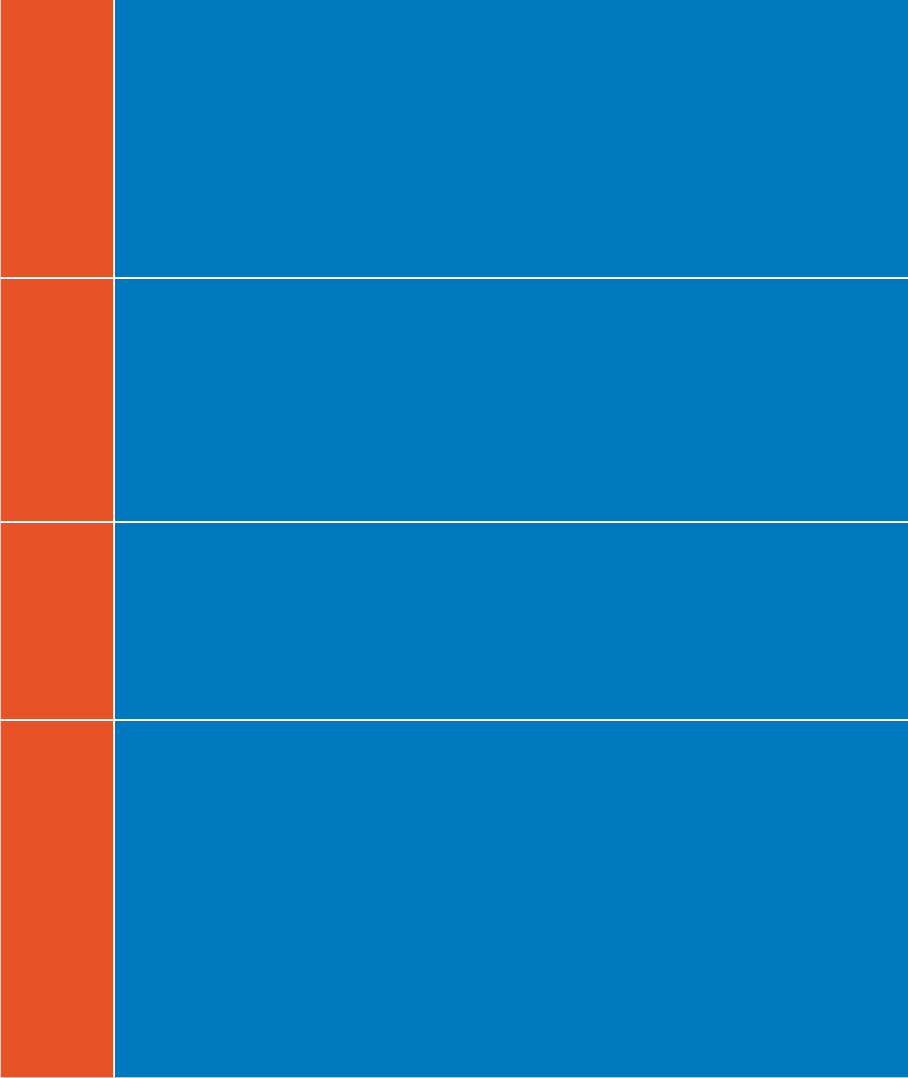
45
Table 3
Summary of areas of economic impact
Direct
impact
This refers to the economic activity (ie employment and GVA) generated directly
within the particular screen sector.
In the context of this study, it refers to economic activity generated directly in the
value chain. For example, it includes employment, employment compensation
and GVA earned at companies in the sub-sectors that comprise the screen sector
value chains. This element of the analysis is conducted with reference to the
component of each screen sector supported by tax relief.
Indirect
impact
When companies in the screen sector value chain procure supplies and services
from outside the value chain, they generate an indirect economic impact.
Procurement spending by screen sector companies raises income and
employment in other sectors. For example, when the screen sector purchases
catering or accounting services, it generates an indirect economic impact for
these businesses.
Induced
impact
The employment generated at both the direct and indirect impact stages raises
these employees’ household income as they earn wages and salaries; while these
households will save part of their additional income, they will also spend it on
goods and services in the UK. This spending and subsequent re-spending within
the UK economy further increases activity across the broader economy.
Spillover
impacts
Some sectors can also have impacts beyond the screen sector value chain and
their own supply chains. For the screen sectors, the most notable, specific and
discrete spillover impacts are often in the form of tourism or merchandise sales.
In the case of tourism, attractions, hotels and restaurants experience higher
income and employment on account of tourism visits stimulated by the desire to
visit filming locations or settings.
In addition, broader impacts can also be generated by the outputs of the screen
sectors, which can promote positive conceptions of UK culture and enhanced
perceptions of the UK brand.

46
THE FILM SECTOR
4

47
4.1. Context and key findings
The UK has a well-developed offer as a film production hub, combining specialist skills, a strong
talent base and established infrastructure. Films made in the UK include both major-budget
inward investment projects – such as Avengers: Infinity War, Mission: Impossible – Fallout and
Star Wars: The Rise Of Skywalker – and domestic UK films that achieve wide acclaim. Examples
of the latter include Darkest Hour and Blue Story. UK-made animated feature films include Early
Man and Isle of Dogs.
Film production also occurs across the UK. This includes films such as Ordinary Love in Northern
Ireland, Wild Rose in Scotland and Six Minutes to Midnight in Wales. Productions taking place in
England’s regions include The Personal History of David Copperfield and How To Build A Girl.
Film Tax Relief (FTR) has stimulated substantial growth in production expenditure in the UK film
sector since its introduction in 2007. Spend has risen from £849.2 million in 2007 to £2.22 billion
in 2017, £2.06 billion in 2018 and £2.02 billion in 2019
55,
56
Films qualifying for FTR are a significant employer, directly generating 31,160 full-time equivalent
(FTE) jobs throughout all parts of the value chain and directly contributing £2.91 billion to the UK’s
Gross Domestic Product (GDP) in 2019.
57
The film sector generates a significant trade surplus for
the UK and is highly export-driven.
With value chain, indirect and induced spending, the total economic contribution of the UK film
sector supported by tax relief in 2019 amounted to £4.98 billion in gross value added (GVA).
58
This economic activity supported 68,930 FTEs.
There are also major spillover benefits contributed by FTR to the UK economy. For example,
some films can generate domestic and international tourism to locations and settings, or to
specific visitor attractions such as Warner Bros. Studio Tour London – The Making of Harry
Potter. Films can also generate soft power and national branding impacts – underlined by the
utilisation of UK film content in the UK Government’s GREAT campaign to promote the UK.
59
Including tourism spillovers, FTR generated strong returns for HM Treasury over 2017-2019. In
2019, each pound granted yielded an additional £8.30 in GVA for the UK economy.
Note
2016 data have been revised from the previous edition of Screen Business to account
for updates in projects tracked by the BFI since publication. For example, when Screen
Business was published in 2018, total film expenditure was reported by the BFI to be
£1.72 billion. This total has since been revised to £1.87 billion. Analysis in this chapter is
based on projects certified to the end of 2020 only, so data may change in time as new
applications for the years in question are submitted.
55. 2007 total sourced from the BFI Research and Statistics Unit (RSU)
56. Film, high-end television and animation programmes production in the UK: full-year 2020. Ibid
57. See Section 4.3. for full analysis of direct impact
58. See Section 3.7. for an explanation of the areas of economic impact
59. As noted by a British Council study: ‘In a multipolar, hyperconnected world, a country’s power is increasingly measured by its ability to
inspire and attract citizens of other nations to take an interest in its national story, enjoy its passions, and ultimately respect its values, ideas
and aspirations.’ As Others See Us. British Council, 2014. Accessible at: https://www.britishcouncil.org/sites/default/files/as-others-see-
us-report.pdf

48
4.2. Value chain overview
A complex international ecosystem, the film sector has been undergoing a period of
unprecedented change in recent years as digital technology continues to transform the
production, distribution and consumption of films.
As outlined in the previous edition of Screen Business, digital video platforms – which include
video-on-demand (VoD), subscription video-on-demand (SVoD) and transactional video-on-
demand (TVoD) – have radically altered value within the sector.
60
This technology has created
new revenue streams and digital distribution opportunities, but also added complexities and
challenges, particularly for the independent film model.
To simplify this complexity, the traditional value chain components of production, distribution and
exhibition have been used to assess the economic impact of the film sector (Figure 4). Although
not all films are exploited this way, it remains the most suitable approach – not least because
qualification for FTR requires films to be intended for theatrical release.
Production is the stage of the value chain in which films are created. For this study, the
production component of the value chain is defined as including pre-production, principal
photography, visual effects (VFX), music recording and audio and picture post-production.
The distribution stage for independent film generally involves companies acquiring rights to sell
the intellectual property (IP) held by the production company, and planning how to market the
film. In some cases, sales agents will act as a bridge between producers and distributors, taking
an expert role in selling the product internationally on a territory-by-territory basis. In comparison,
the US studio model generally sees the studio producing and distributing their films globally.
Cinema exhibition is the traditional primary release window for films, although recent years have
seen disruption to this model as distributors, including digital video platforms, opt for alternative
release strategies. These can include straight-to-broadcast or direct digital video release, or
a day-and-date strategy through which films are released on multiple platforms – including
theatrical, digital video and television – simultaneously.
Under the traditional theatrical model, the cinema exhibition window is followed by secondary
release windows, including DVD/Blu-ray sales and rentals, digital video sales, rental and
subscription, and free-to-air and paid-for television broadcast. The impacts outlined below
account for these windows.
60. Screen Business. Olsberg•SPI with Nordicity, 2018. Accessible at: https://www.bfi.org.uk/industry-data-insights/reports/uk-screen-
sector-economy

49
Figure 4
Film sector value chain
4.3. Direct impact
4.3.1. Production
The production sub-sector is the largest economic contributor in the film value chain. UK
production spend, and the employment, compensation of employment (CoE) and GVA
generated, are outlined in this section.
Expenditure
In spend terms, investment in film production in the UK reached an all-time high of £2.22 billion in
2017 and has continued to deliver spend of over £2 billion in the UK in subsequent years.
Throughout the 2017 to 2019 period, spend on inward investment production accounted for
the vast majority of film production. Inward investment film production peaked at £1.92 billion in
2017, or 86.2% of total spending; in 2019, it totalled £1.77 billion, or 87.9%.
The production of a film generally occurs over a period of several months. For this reason, it
is important to note that annual time-series data on film expenditure are highly susceptible to
spending being concentrated for reporting conventions, ie all production spend may be assigned
a year based on the start of principal photography when production may in fact span two years.
This can result in significant fluctuations, which can distort year-on-year trends. In addition, and
as previously noted, it is likely that totals will be revised upwards by the BFI in the future as new
project data are received.
Primary window Secondary window
Production Distribution
Cinema
Exhibition
DVD/
Blu-ray sales and
rentals
VoD/SVoD/TVoD
Film on Television
Other consumer platforms
Consumption
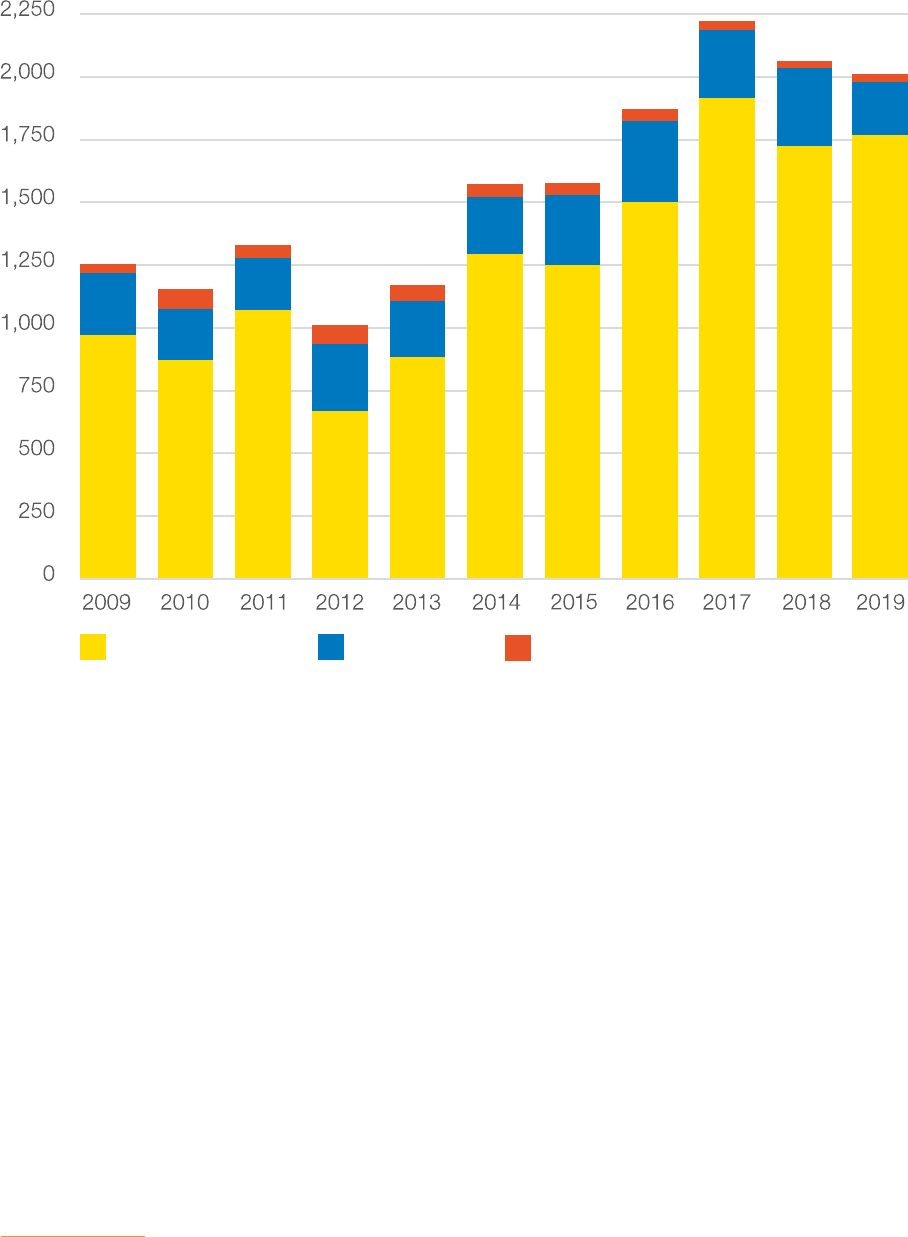
50
Figure 5
UK spend on film production, 2009-2019 (£m)
Employment
Film production is a labour-intensive activity. To estimate the employment generated by film
production, a Job Creation Model developed for the BFI as part of the study Research Into Job
Creation through Production Investment, was used (see box below for further detail).
61
The Job
Creation Model indicated that:
• Each £1 million spent on the production of inward investment films in the UK in 2016 led to
11.2 direct FTEs being hired
62
• Each £1 million spent on the production of domestic UK and UK co-production feature films
in 2016 led to 12.9 direct FTEs being hired
61. The Job Creation Model was also used in the 2018 edition of Screen Business
62. 11.2 FTE jobs would represent a significantly larger number of short and long-term roles in headcount terms
£m
Inward investment Domestic UK
Co-production
Source: The BFI
Note:
Figures may not sum to totals due to rounding
39.0
1,256.0
973.0
873.9
668.6
885.0
1,293.5
1,250.2
1,499.7
1,915.4
1,723.5
1,772.2
1,070.5
244.0
199.8
206.6
266.1
221.6
266.4
280.5
325.6
272.8
310.1
208.5
80.5
1,154.2
52.4
75.5
63.7
53.6
47.7
46.6
32.7
27.7
35.1
1,329.5
1,010.1
1,170.3
1,573.7
1,578.3
1,871.9
2,220.9
2,061.3
2,015.8

51
• Both estimates of the rate of job creation in 2016 were adjusted on the basis of annual trends
in median hourly earnings in the UK so that they could be used to estimate job creation for
the 2017-2019 period.
63, 64
About the Job Creation Model
In 2016, the BFI commissioned Nordicity and Olsberg•SPI through its National Lottery-
funded Research and Statistics Fund to research the rate of job creation in the film and
television production sector in the UK. The objective of this research was to prepare a
set of formulae to estimate the total number of FTEs generated for each million pounds
of production expenditure in various genres and budget ranges of live action film and
television production. A Job Creation Model specific to VFX production in the UK was
also developed.
The project involved undertaking a granular review of a cross-section of production
budgets to ascertain how production spend was allocated across various categories of
labour and non-labour inputs (ie purchases of supplies and services from other sectors),
and how that spending translated into direct, indirect and induced employment.
Each budget line item was scrutinised and assigned to either labour or non-labour
categories, and then mapped to an associated Standard Occupation Classification
(SOC) or Standard Industrial Classification (SIC) code. The average FTE costs in the
related SOC (adjusted for a film and television sector premium) or employment intensity
in the related SIC was then used to estimate the number of direct or indirect FTEs
generated by each million pounds of production expenditure.
The development of the Job Creation Model for VFX was not based on the same
detailed budget approach. Instead, the UK Screen Alliance workforce survey and a
survey of five leading VFX studios were used to prepare estimates of direct, indirect and
induced employment.
Through developing the Job Creation Model, Nordicity and Olsberg•SPI and the BFI
also gained insights into the portion of live action production budgets devoted to
wages paid to crew and supporting artists, ie employment compensation, and to mixed
income, ie fees paid to producers, directors, cast and other key creative personnel;
and remuneration for IP. The combined portion of production budgets devoted to
employment compensation and mixed income gave the consultancies and the BFI an
indication of the GVA generated by production spending.
These data permitted the consultancies to estimate employment compensation and GVA
ratios – ie employment compensation and GVA generated for each million pounds of
production spending. The data gathered for the VFX sector allowed the consultancies to
also estimate employment compensation and GVA ratios for VFX.
Based on the Job Creation Model, film production in the UK generated 25,050 direct FTEs in
2017 – including employees and freelancers (Figure 6). In 2019, employment impact was 21,750
FTEs. Of this total, 18,780 FTEs were generated by the production of inward investment films.
63. The job creation ratios were also adjusted based on annual trends in median hourly earnings, so that they could be used to estimate
the levels of direct employment during the 2009-2015 historical period
64. While there are likely to be changes in the types of skills required by productions over time due to changing technology, the Job
Creation Model is considered relevant to the study period as any changes over 2017-2019 are not considered to substantially change
the findings
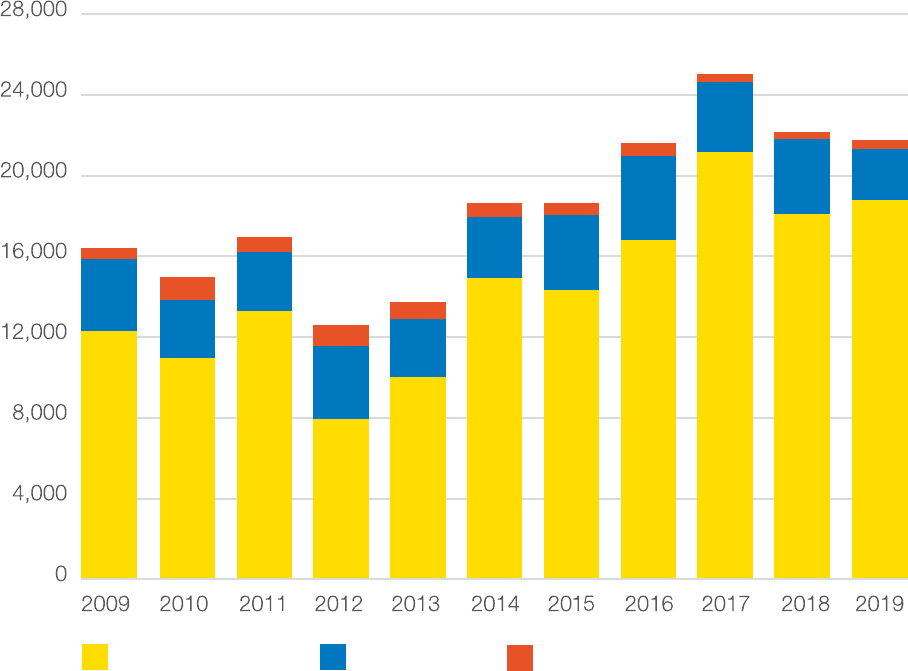
52
Figure 6
Direct employment generated by film production in the UK, 2009-2019 (FTEs)
Employment compensation and Gross Value Added
In addition to the employment impact, film production also generates significant levels of GVA
for the UK economy. This GVA largely comprises employment compensation paid to crew and
supporting artists, although it also includes fees paid to key creative personnel (for example,
producers, directors, screenwriters and actors) for royalties or licensing the use of IP on which
the production is based. This component of GVA is defined as mixed income. Other key
elements of GVA (ie depreciation and operating surplus) are less relevant to film production, and
may be recognised in other parts of the value chain.
FTEs
Inward investment Domestic UK
Co-production
Source: Nordicity/Olsberg•SPI estimates based on data from the BFI, the Annual Business Survey (ABS) and
ASHE
Note:
Figures may not sum to totals due to rounding
1,160
14,990
750
16,980
1,030
12,610
830
13,750
710
18,670
630
18,660
600
21,600
420
25,050
330
22,160
430
21,750
10,950
13,280
7,940
10,030
14,950
14,330
16,800
21,160
18,080
18,780
570
16,430
12,310
3,550
2,880
2,950
3,640
2,890
3,010
3,700
4,200
3,470
3,750
2,540

53
The Job Creation Model indicated that:
• Each million pounds spent on the production of inward investment films in the UK between
2016 and 2019 generated £0.44 million in direct employment compensation and
£0.53 million in direct GVA
• Each million pounds spent on the production of domestic UK and UK official co-production
feature films generated £0.47 million in direct employment compensation and £0.63 million in
direct GVA
Based on these employment compensation and GVA ratios, film production in 2019 generated
£893.5 million in direct employment compensation and £1.10 billion in direct GVA (Table 4).
Table 4
Direct economic impact of film production in the UK, 2016-2019
2016 2017 2018 2019
UK spend (£m) 1,871.9 2,220.9 2,061.3 2,015.8
Employment (FTEs) 21,600 25,050 22,160 21,750
CoE (£m) 834.8 985.7 916.7 893.5
GVA (£m) 1,031.9 1,210.5 1,129.0 1,095.2
Source: Olsberg•SPI/Nordicity estimates based on data from the BFI, ABS and ASHE
4.3.2. Distribution
The distribution of films provides a significant source of activity for the UK economy, as UK-based
companies earn licensing revenue – both in the UK and internationally – from exploitation of the
various release windows and platforms, including cinema exhibition, digital video, physical video
(ie DVD and Blu-ray) and television broadcast.
Reflecting the fact that the distribution sub-sector earns revenues from both UK and non-
UK produced films, the portion of its revenues which relate to tax relief-supported films were
analysed by multiplying overall turnover, employment and economic activity in the sub-sector (ie
SIC 59.13/1, Motion picture distribution activities) by the three-year moving average for UK films’
share of the UK box office (Figure 7).
65
The three-year average has been used to account for the fact that distribution companies earn
revenues from multiple production years and to smooth out the year-to-year fluctuations in the
UK box office share created by FTR-qualifying global blockbusters. For 2017, the use of the
three-year moving average indicated that UK films accounted for 39.3% of economic activity in
the distribution sub-sector; by 2019, this share had risen to 43.7%.
65. The three-year moving average is the mean of the annual box office share in the most recent three years. For example, for 2019, the
three-year moving average is the mean of the box office for UK films in 2017, 2018 and 2019
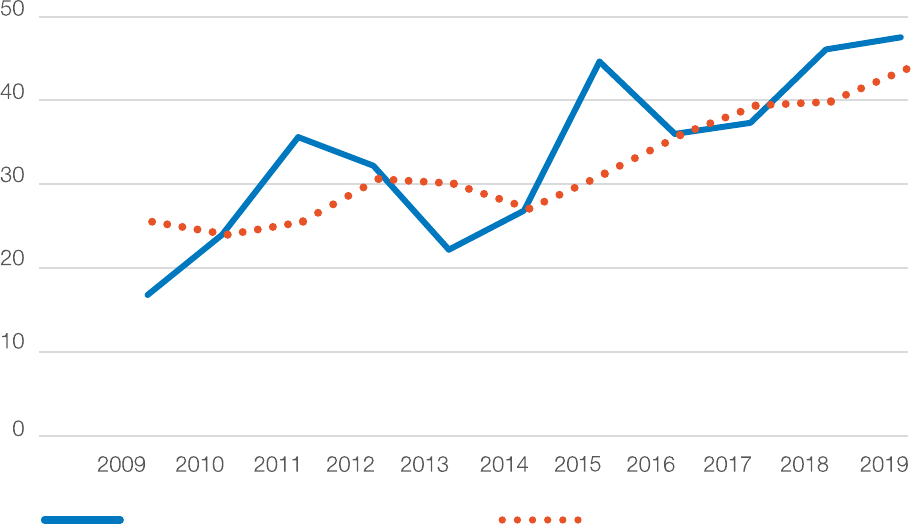
54
Figure 7
UK films’ share of domestic box office, annual and three-year moving average,
2009-2019
The three-year moving average was multiplied by the annual revenue reported for SIC 59.13/1,
Motion picture distribution to estimate the portion of distribution sub-sector revenue generated
by UK films. Based on this approach, UK films generated an estimated £3.16 billion in distribution
revenue in 2017, increasing to £3.52 billion in 2019.
Statistics from the Office for National Statistics (ONS) and the BFI indicated that distribution
revenue generated by UK films has increased rapidly since 2014. This is related to two factors.
First, the UK box office share of FTR-supported films increased during this period – from 26.8%
in 2014 to 47.6% in 2019. Second, and more importantly, the underlying revenue in the UK film
distribution sub-sector increased five-fold between 2014 and 2019. According to the ONS, this
rapid increase in sub-sector revenue was due to several UK distribution companies experiencing
increased revenue on account of new film releases during these years.
UK films’ share of annual box office three-year moving average
Source: Olsberg•SPI/Nordicity calculations based on data from Comscore and the BFI
%
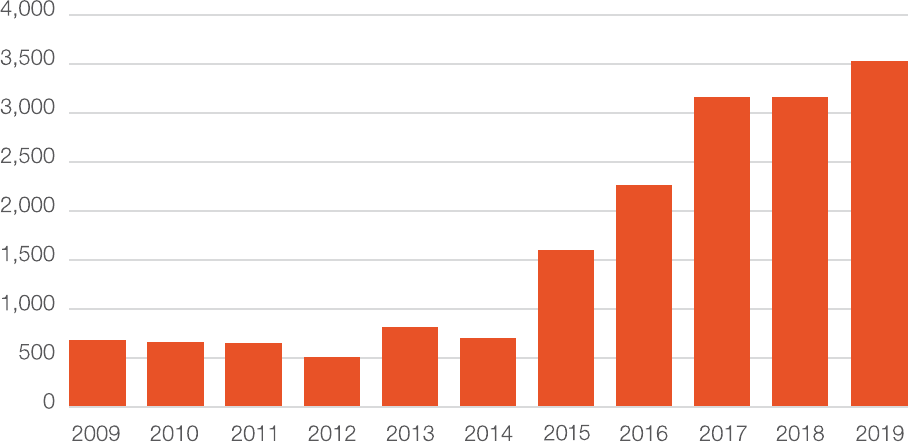
55
Figure 8
UK film distribution sub-sector revenue generated by UK films, 2009-2019 (£m)
To estimate the economic impact in the distribution sub-sector associated with the distribution
of UK films, the three-year moving average in box office share was multiplied by the sub-sector’s
total turnover, FTE employment, employment compensation and GVA (Table 5). Based on this
approach, in 2019 the distribution of UK films generated an estimated £3.52 billion in turnover,
2,190 FTEs of direct employment, £159.1 million in direct employment compensation, and £1.39
billion in direct GVA.
£m
Source: Olsberg•SPI/Nordicity estimates based on data from the BFI, Comscore, and ABS
3,524
3,1653,157
2,270
1,599
706
823
514
660
671
690
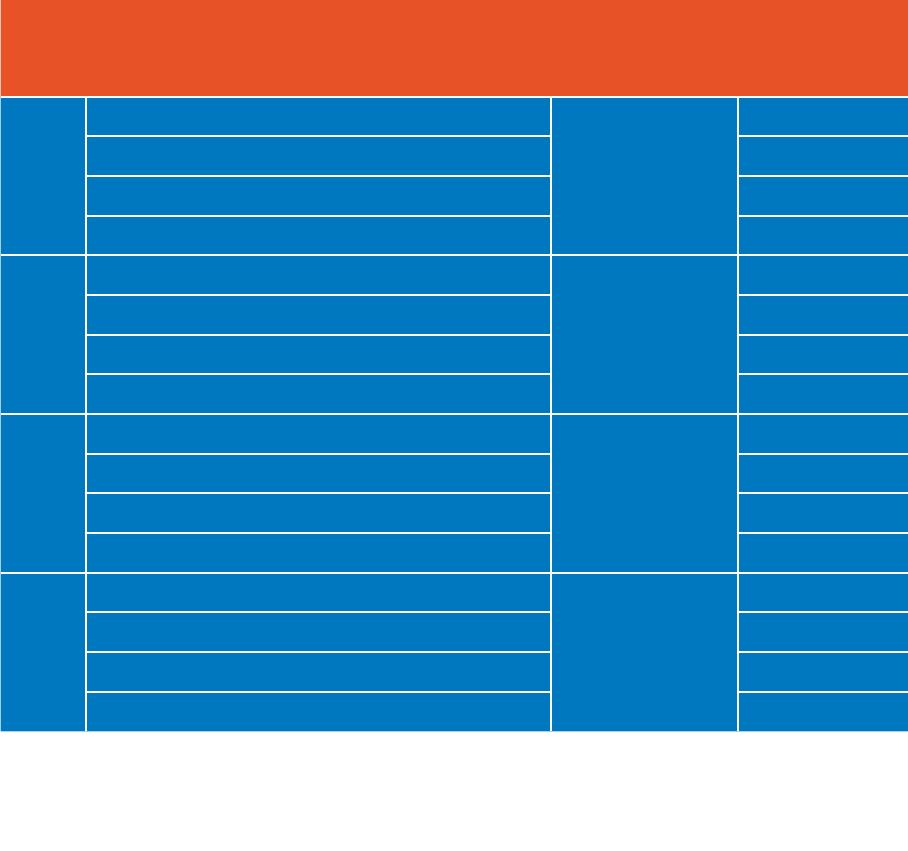
56
Table 5
Calculation of direct economic impact of distribution of UK films in the UK, 2016-2019
Sub-sector total
(A)
UK films’ box
office share (B)
UK films’
contribution
(C=AxB)
2016
Turnover (£m)
1
6,340.0
35.8%
2,270
Employment (FTEs)
2
4,785 1,710
CoE (£m)
1
381.0 136.4
GVA (£m)
1
2,975.0 1,065.1
2017
Turnover (£m)
1
8,025.0
39.3%
3,157
Employment (FTEs)
2
5,028 1,980
CoE (£m)¹ 352.0 138.5
GVA (£m)
1
3,374.0 1,327.1
2018
Turnover (£m)
1
7,952.0
39.8%
3,165
Employment (FTEs)
2
4,622 1,840
CoE (£m)
1
353.0 140.5
GVA (£m)
1
3,352.0 1,334.5
2019
Turnover (£m)
1
8,064.0
43.7%
3,524
Employment (FTEs)
2
5,020 2,190
CoE (£m)
1
364.0 159.1
GVA (£m)
1
3,175.0 1,387.5
Source: Olsberg•SPI/Nordicity estimates based on data from the BFI, ABS, IDBR, and ASHE
Notes:
1. Total turnover, CoE and GVA data for SIC 59.13/1, Motion picture distribution activities sourced from ABS
2. Total FTE employment derived by multiplying total employment in SIC 59.13/1 (sourced from IDBR/BRES) by FTE
adjustment factor of 0.944
Time-series data (Figure 9) indicate that there has been a steady growth of employment
relating to the distribution of UK-produced films supported by FTR since 2012. This reflects an
increase in the share of UK films at the UK box office and, to a lesser degree, the growth of FTE
employment within UK distribution companies since 2012.
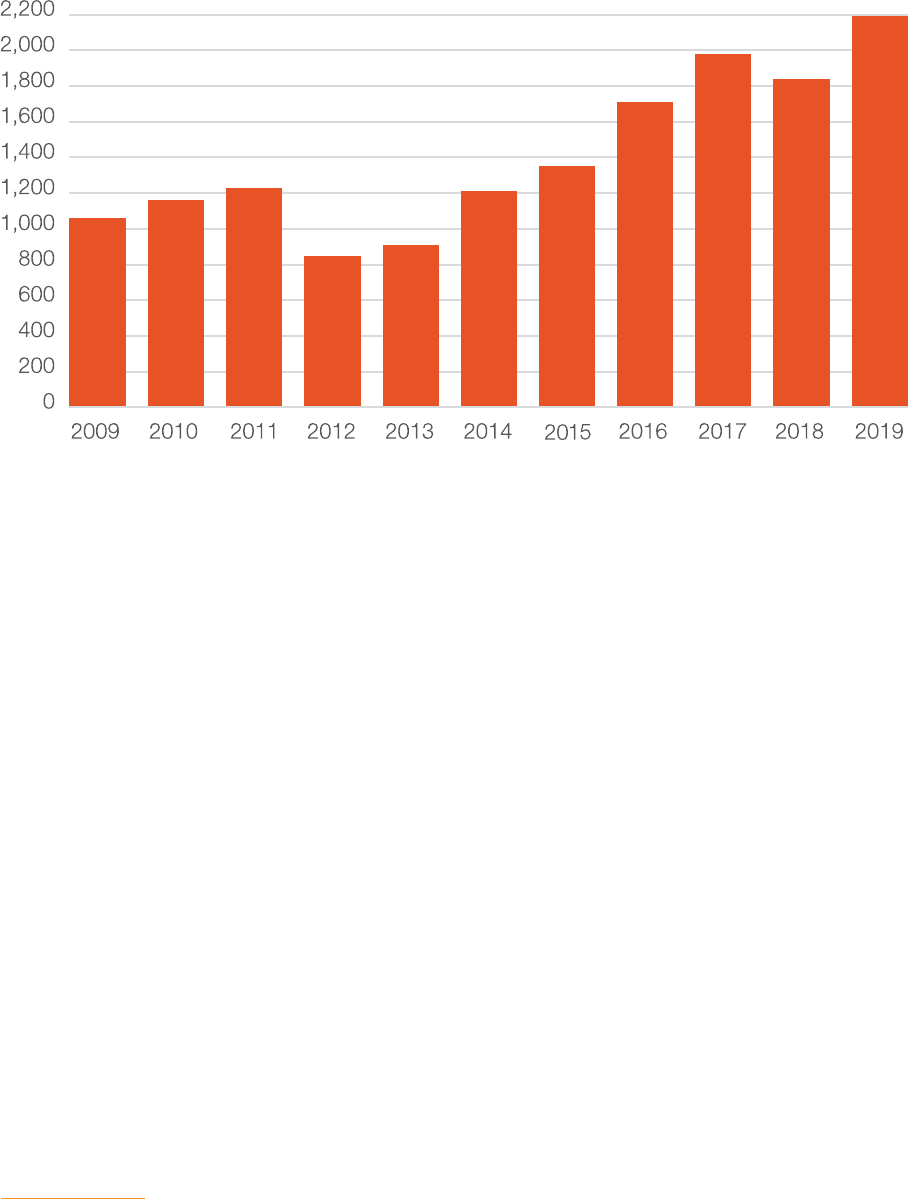
57
Figure 9
UK film distribution sub-sector employment generated by UK films, 2009-2019 (FTEs)
4.3.3. Cinema exhibition
Historically, the majority of films were released on a commercial basis in cinemas. While the
theatrical release window now accounts for a smaller part of the overall revenue for an individual
film due to the growth of other digital video windows, it still generated the greater proportion of
gross value in 2018 and 2019.
66
As of 2019, there were 4,480 cinema screens at 808 sites across the UK.
67
These cinemas sold
a total of 176.1 million tickets in 2019, generating £1.25 billion in gross box office.
68
Cinema
exhibition now also includes a variety of ‘event cinema’ content, such as live or filmed events
including sports and theatre.
66. The UK Film Market as a Whole. The BFI Statistical Yearbook, 2020. Accessible at: https://core-cms.bfi.org.uk/media/7370/download
67. Exhibition. The BFI Statistical Yearbook, 2020. Accessible at: https://core-cms.bfi.org.uk/media/4688/download
68. These cinema admissions figures include admissions to films as well as event cinema, such as live theatre and sports events
screened in cinemas. The statistics for gross box office include only films
Source: Olsberg•SPI/Nordicity estimates based on data from the BFI, Comscore, ABS, IDBR and BRES
FTEs
2,190
1,840
1,980
1,710
1,350
1,210
910
850
1,230
1,160
1,060
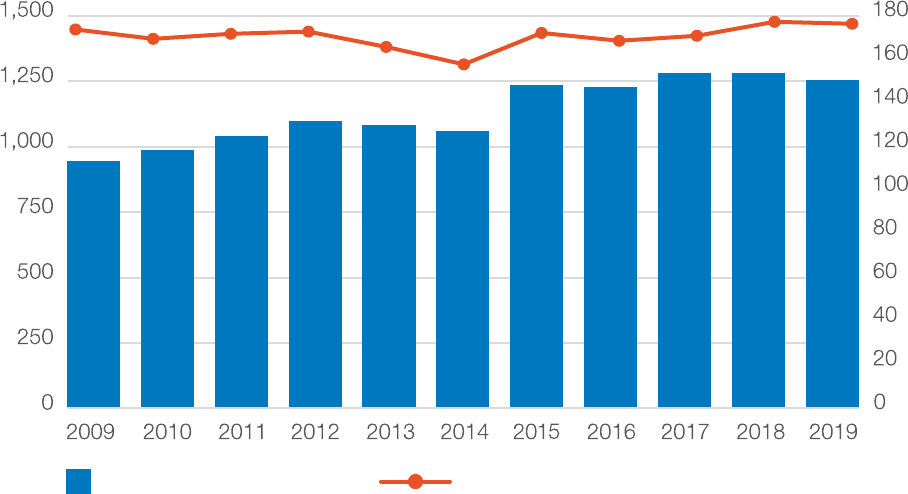
58
Figure 10
Cinema box office and admissions in the UK, 2009-2019
In addition to box office revenue from films, the UK exhibition sub-sector also earns revenue from
food and beverage sales, advertising and other sources. In 2017, the UK exhibition sub-sector
earned an estimated £557 million from these sources, increasing to £663 million in 2019 (Figure
11). In total, the exhibition sub-sector in the UK earned £1.71 billion in revenue in 2019.
£m
Source: Olsberg•SPI/Nordicity calculations based on data from Comscore
* Includes VAT
Admissions (millions)
176.1
177.0
170.6
168.3
171.9
157.5
165.5
172.5
171.5
169.2
173.5
1,254
1,282
1,279
1,228
1,236
1,058
1,083
1,099
1,040
988
944
Gross box office* (left axis) Admissions (right axis)
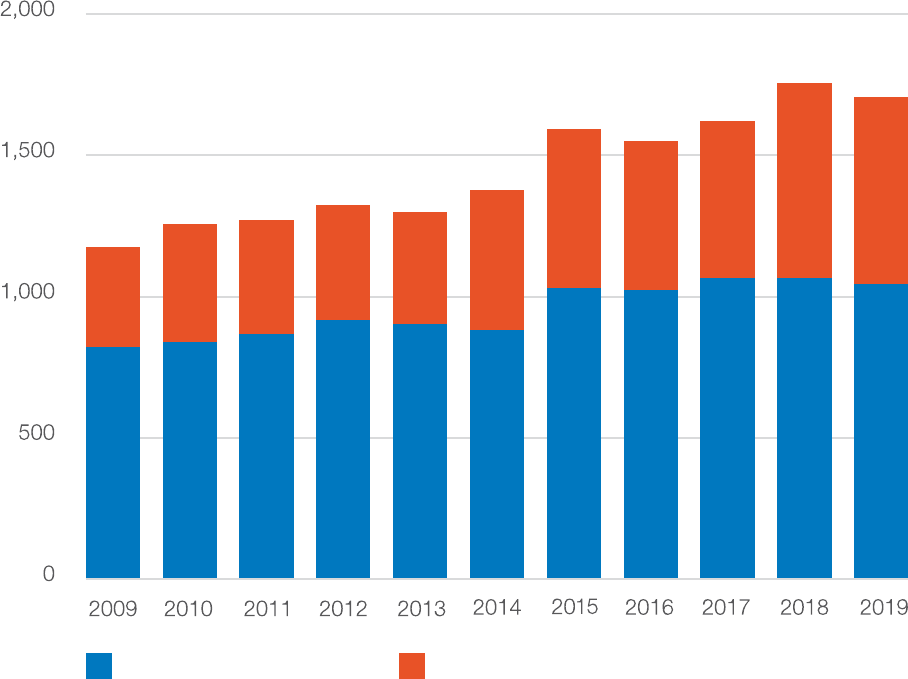
59
Figure 11
Total turnover in the exhibition sub-sector in the UK, 2009-2019 (£m)
£m
Gross box office (excl.VAT) Other revenue*
Source: Olsberg•SPI/Nordicity estimates based on data from the BFI, CAA, Comscore and ABS
Note:
Figures may not sum to totals due to rounding
Box ofce revenue in Figure 11 excludes VAT whereas the box ofce revenue reported in Figure 10 includes VAT
* Includes estimates of revenue from food and beverage sales, advertising and other sources. Equal to the
difference between total sub-sector turnover (as reported by ABS) and total box ofce revenue (as reported by
the BFI)
821
841
867
916
903
882
1,030
1,023
1,066
1,068
1,045
663
688
557
528
563
497
397
409
403
416
355
1,708
1,756
1,623
1,551
1,593
1,379
1,299
1,325
1,270
1,257
1,176
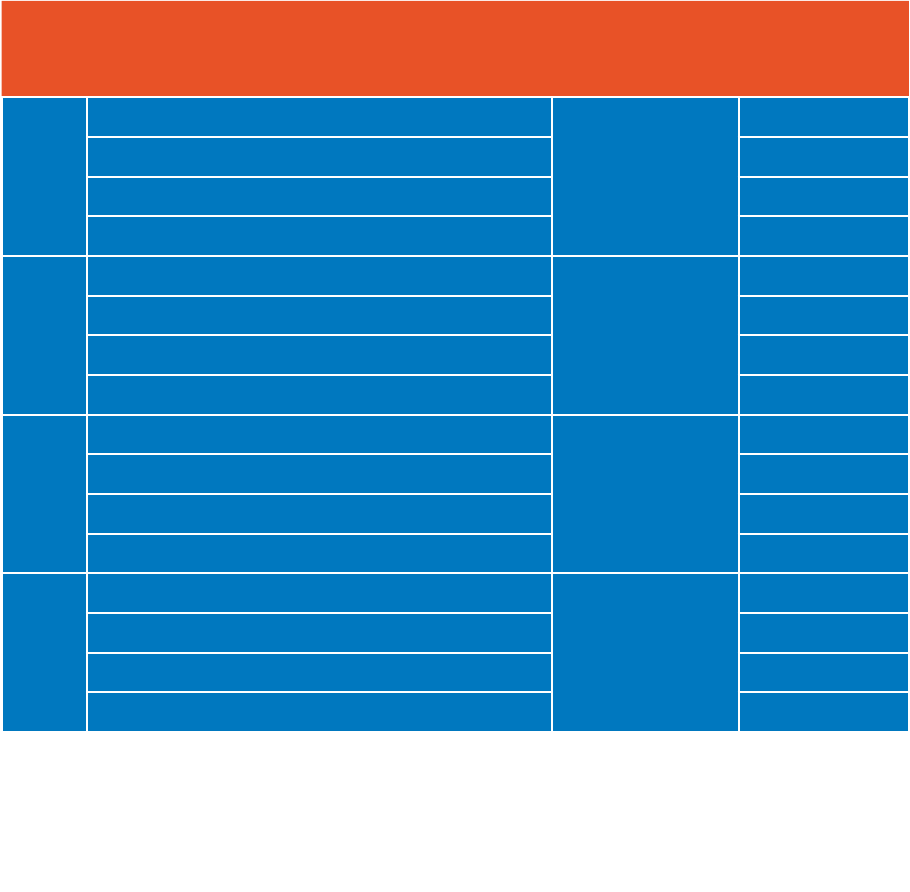
60
UK films’ annual share of the UK box office (Figure 7) was multiplied by the sub-sector’s total
turnover, employment, employment compensation and GVA to estimate the portion attributable
to UK films (Table 6). Based on this approach, the exhibition of UK films generated an estimated
£813.0 million in turnover, 6,180 FTEs, £149.0 million in employment compensation and
£346.5 million in GVA in 2019.
Table 6
Calculation of direct economic impact of exhibition of UK films in the UK, 2016-2019
Sub-sector total
(A)
UK films’ box
office share (B)
UK films’
contribution
(C=AxB)
2016
Turnover (£m)
1
1,551.0
35.9%
556.8
Employment (FTEs)
2
12,782 4,590
CoE (£m)
3
261.0 93.7
GVA (£m)
3
601.0 215.8
2017
Turnover (£m)
1
1,623.0
37.4%
607.0
Employment (FTEs)
2
13,439 5,030
CoE (£m)
3
270.0 101.0
GVA (£m)
3
636.0 237.9
2018
Turnover (£m)
1
1,756.0
46.1%
809.5
Employment (FTEs)
2
13,721 6,330
CoE (£m)
3
294.0 135.5
GVA (£m)
3
718.0 331.0
2019
Turnover (£m)
1
1,708.0
47.6%
813.0
Employment (FTEs)
2
12,976 6,180
CoE (£m)
3
313.0 149.0
GVA (£m)
3
728.0 346.5
Source: Olsberg•SPI/Nordicity estimates based on data from the BFI, ABS, IDBR, and ASHE
Notes:
1. Total turnover for SIC 59.14, Motion picture projection sourced from ABS. Includes box ofce revenue and estimates of
revenue from food and beverage sales, advertising and other sources
2. Total FTE employment derived by multiplying total employment in SIC 59.14 of 20,420 (sourced from IDBR/BRES) by FTE
adjustment factor of 0.626
3. Total CoE and GVA data for SIC 59.14, Motion picture projection sourced from ABS
This analysis shows that, in 2017, the exhibition sub-sector’s turnover generated by UK films was
£607.0 million, including £398.6 million in gross box office revenue (excluding VAT) and
£208.4 million in other revenue (Figure 12). In 2019, exhibition sub-sector turnover had increased
to £813.0 million, including £497.4 million in box office revenue (excluding VAT) and
£315.6 million in other revenue.
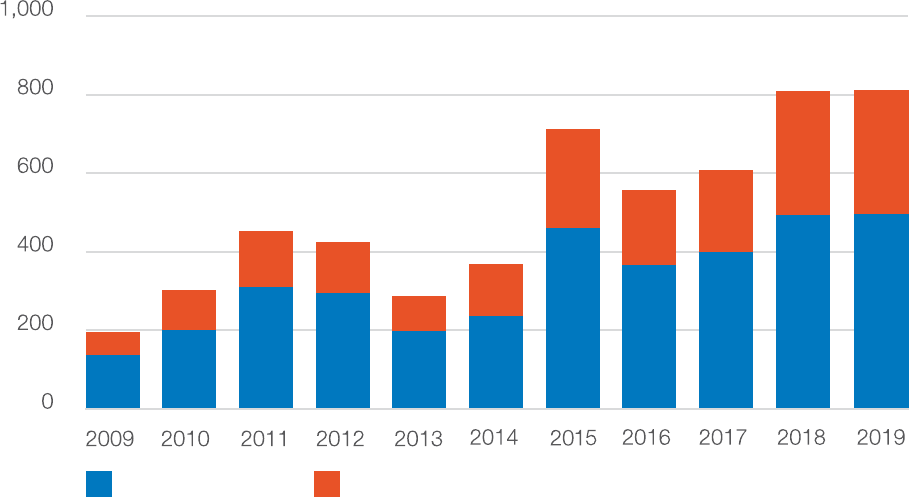
61
Figure 12
Exhibition sub-sector revenue generated in the UK by UK films, 2009-2019 (£m)
£m
Gross box office Other revenue*
Source: Olsberg•SPI/Nordicity estimates based on data from the BFI, CAA, Comscore, and ABS
Note: gures may not sum to totals due to rounding
* Includes estimates of revenue from food and beverage sales, advertising and other sources
137.1
201.8
309.4
294.0
199.5
236.3
460.4
367.4
398.6
492.5
497.4
59.3
99.9
144.0
131.3
87.6
133.3
251.7
189.4
208.4
317.0
315.6
196.4
301.7
453.4
425.3
287.1
369.6
712.1
556.8
607.0
809.5
813.0
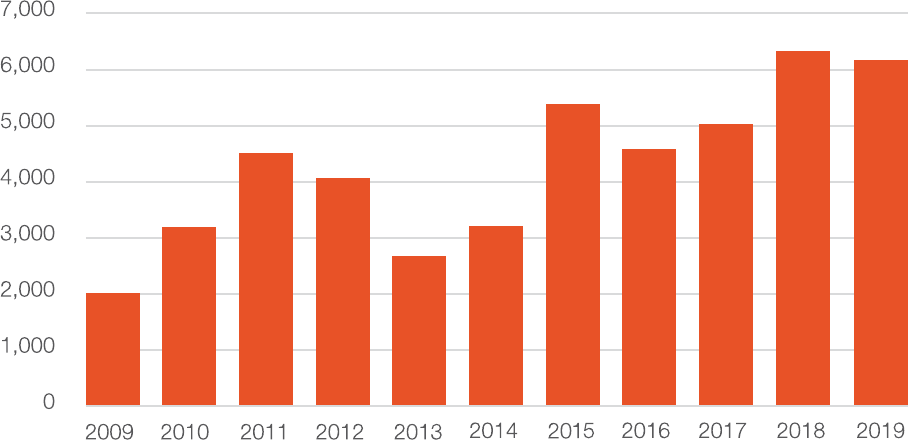
62
Direct employment generated by UK films increased from 5,030 FTEs in 2017 to 6,180 FTEs in
2019 (Figure 13).
Figure 13
Direct employment in the UK exhibition sub-sector generated by UK films, 2009-2019
(FTEs)
4.3.4. Secondary windows
As previously outlined, secondary release windows include television broadcast, digital video
platforms and home video sales and rentals. These are analysed in this section.
Television broadcast
Films continue to generate economic activity as they are licensed to secondary-release windows,
including television broadcast on free-to-air and subscription channels. Television broadcast
has always been an important secondary release window – and occasionally a primary release
mode – for the films supported by FTR. In 2017, this window generated £142.0 million in value,
the majority of which came from pay TV services (Figure 14). By 2019, this value had declined to
£118 million. The downward trend since 2016 likely reflects the rise of film consumption on digital
video platforms and the declining value of this secondary window to broadcasters.
FTEs
Source: Olsberg•SPI/Nordicity estimates based on data from the BFI, CAA, Comscore, and ABS, IDBR and BRES
6,180
6,330
5,030
4,590
5,390
3,210
2,670
4,060
4,510
3,190
2,020
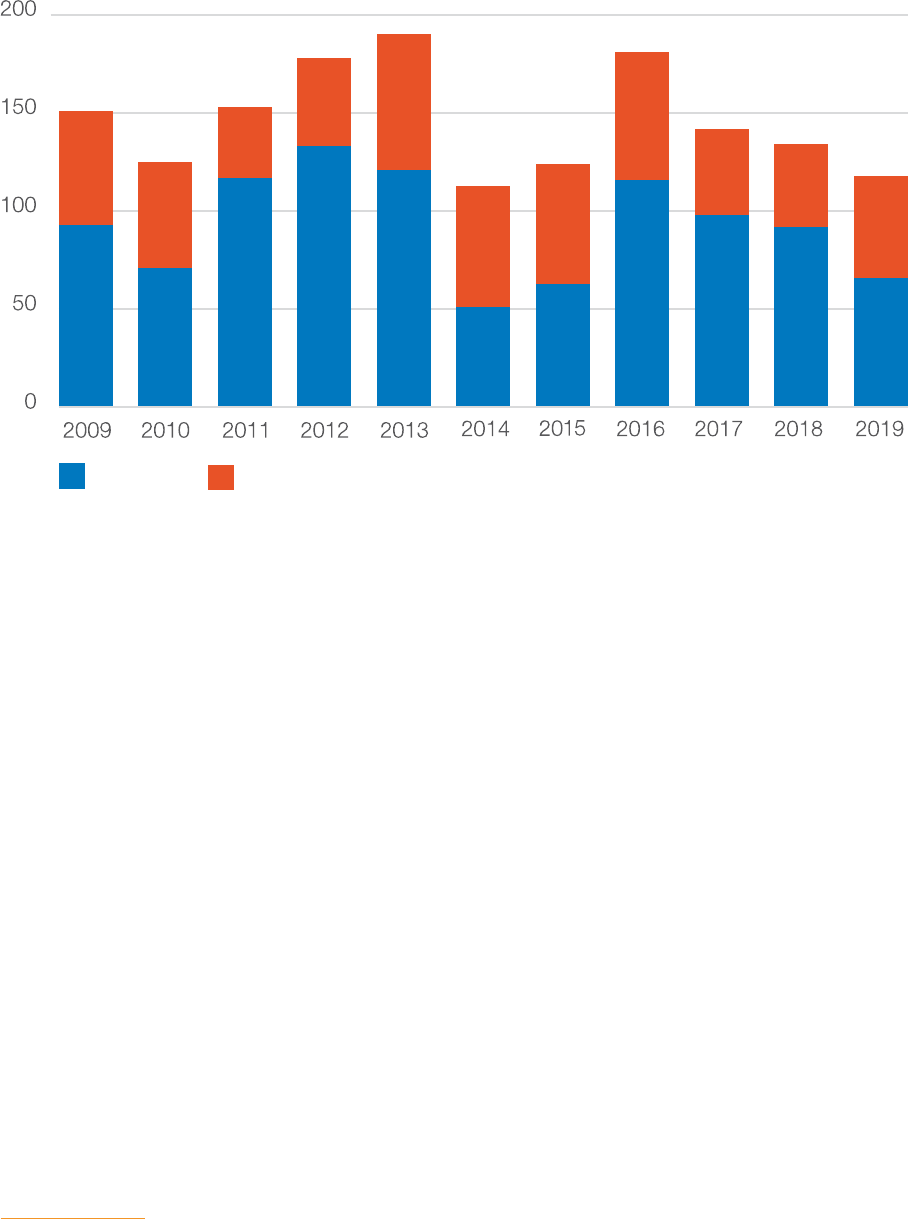
63
Figure 14
Value of UK films on UK television, 2009-2019 (£m)
To estimate the economic contribution generated by film in the television broadcast sub-sector,
the ratio of employment compensation to total turnover (the CoE ratio) and the ratio of GVA to
total turnover (the GVA ratio) were derived from ONS Annual Business Survey (ABS) data for SIC
60.2, Television programming and broadcast activities. The ABS indicated that the CoE ratio
for SIC 60.2 was 0.10 between 2017 and 2019. The GVA ratio was 0.20 in 2017, 0.15 in 2018
and 0.18 in 2019.
69
These ratios were applied to data on the value of UK films on UK television,
published by the BFI
.70
The employment impact was estimated by dividing the estimated employment compensation
(derived using the CoE ratio) by an average FTE cost (2017: £47,095; 2018: £49,468; 2019:
£55,994).
71
Based on the employment compensation and GVA ratios and average FTE costs, the
£142.0 million in television broadcast sub-sector revenue attributable to UK films in 2017
generated 300 FTEs of direct employment (Table 7). In 2019, the corresponding FTE impact
was 210 FTEs. These estimates represent the individuals at the various services which show UK
films on UK television who are engaged in the process of delivering this content onto television
screens – ie employees engaged in broadcasting and transmission activities.
69. See Appendix 3 for detailed description of derivation of the employment compensation and GVA ratios
70. UK Film Market as a Whole. Ibid
71. See Appendix 3 for detailed description of derivation of the average FTE cost
£m
Pay TV
Commercial and public TV
Source: Ampere Analysis, Omdia, BFI RSU, Attentional
66
92
98
116
63
51
121
133
117
71
93
52
42
44
65
61
62
69
45
36
54
58
118
134
142
181
124
113
190
178
153
125
151

64
In other words, the advertising, subscription, licence fee and other income generated by UK films
supported 210 FTEs in SIC 60.2 in 2019, or 0.5% of the total employment of the overall 38,870
FTEs in employment in that area of activity.
72
This attributable revenue also generated
£11.8 million in direct employment compensation and £21.2 million in direct GVA.
Table 7
Direct economic impact of UK films broadcast on UK television, 2016-2019
2016 2017 2018 2019
Attributable revenue (£m) 181.0 142.0 134.0 118.0
Employment (FTEs)
1
410 300 270 210
CoE (£m)
2
19.9 14.2 13.4 11.8
GVA (£m)
3
65.2 28.4 20.1 21.2
Source: Olsberg•SPI/Nordicity estimates based on data from the BFI, Attentional, Ofcom, ABS and ASHE
Notes:
There has been a signicant downward revision to attributable revenue in 2016 from the previous edition of this study due to
the BFI’s restatement of the value of UK lm on television in 2016
1. Equal to CoE ÷ average FTE cost in SIC 60.2
2. Equal to attributable revenue x CoE ratio for SIC 60.2
3. Equal to attributable revenue x GVA ratio for SIC 60.2
Video platforms
While physical video platforms have historically been a highly significant release window for the
film sector, recent years have seen rapid take-up of digital video services, particularly SVoD,
overtake the physical home video market. Figure 15 shows that the value of UK films on digital
video platforms surpassed physical video sales and rentals in the UK for the first time in 2018,
and in 2019 accounted for 63.0% of the total market.
72. Data from IDBR indicate that total employment in SIC 60.2 was 42,879 in 2016. Based on an FTE conversion rate of 0.969, this total
employment is equivalent to 41,540 FTEs

65
Figure 15
Value of UK films in digital video and physical video markets in the UK, 2009-2019 (£m)
Digital video
To estimate the economic contribution attributable to UK films in the digital video market, public
financial information for Amazon’s video operations in the UK were used to derive employment
compensation and GVA ratios. These data were also used to estimate an employment ratio
(ie the number of FTEs employed per million pounds of turnover). Based on these ratios, the
attributable revenue of £250.0 million in 2019 generated 80 direct FTEs, £8.3 million in direct
employment compensation and £30.3 million in direct GVA.
Physical video
To estimate the economic contribution attributable to UK films in the physical video market,
ABS data for SIC 47, Retail sale, except of motor vehicles and motorcycles was used to derive
employment compensation and GVA ratios, which were multiplied by attributable revenue.
Based on these ratios, UK films’ attributable revenue of £147.0 million for physical video in 2019
generated 750 direct FTEs, £18.1 million in direct employment compensation and £31.8 million in
direct GVA.
Video platforms summary
In total, the revenue attributable to UK films on video platforms (£397.0 million) generated 830
direct FTEs, £26.3 million in direct employment compensation and £62.0 million in direct GVA in
2019 (Table 8).
£m
316
26
342
Physical video Digital video*
Source: BASE, Ofcial Charts Company, Omdia, the BFI RSU analysis
Note:
* Includes VoD, SVoD and TVoD
304
310
276
265
239
194
213
184
186
147
29
37
52
73
88
88
153
158
194
250
333
347
328
338
327
282
366
342
380
397

66
Table 8
Direct economic impact of UK films on video platforms, 2016-2019
2016 2017 2018 2019
Value of UK
films (£m)
Digital 153 158 194 250
Physical 213 184 186 147
Total 366 342 380 397
Employment
(FTEs)
Digital 50 50 60 80
Physical 1,200 1,020 970 750
Total 1,250 1,070 1,030 830
CoE (£m)
Digital 5.0 5.2 6.4 8.3
Physical 26.2 23.0 22.5 18.1
Total 31.2 28.2 28.9 26.3
GVA (£m)
Digital 18.5 19.1 23.5 30.3
Physical 46.6 39.4 40.0 31.8
Total 65.2 58.5 63.5 62.0
Source: Olsberg•SPI/Nordicity estimates based on data from the BFI, Omdia, ABS, public nancial reports, Ofcial Charts
Company, BASE, ASHE
Notes:
Figures may not sum to totals due to rounding
See Appendix 3 for description of methodology
4.3.5. Summary of direct economic impact
The analysis of the above sub-sectors – production, distribution, cinema exhibition, television
broadcast and video platforms – has been brought together to estimate the direct economic
impact of the UK film sector supported by FTR. In total, this shows that film generated 31,160
direct FTEs in 2019 along with £1.24 billion in direct employment compensation and £2.91 billion
in GVA (Table 9).

67
Table 9
Summary of direct economic impact of UK film across the value chain, 2016-2019
Production Distribution Cinema
exhibition
Television
broadcast
Video
platforms
†
Total
Employment
(FTEs)
2016 21,600 1,710 4,590 410 1,250 29,560
2017 25,050 1,980 5,030 300 1,070 33,430
2018 22,160 1,840 6,330 270 1,030 31,630
2019 21,750 2,190 6,180 210 830 31,160
CoE (£m)
2016 834.8 136.4 93.7 19.9 31.2 1,116.0
2017 985.7 138.5 101.0 14.2 28.2 1,267.5
2018 916.7 140.5 135.5 13.4 28.9 1,235.1
2019 893.5 159.1 149.0 11.8 26.3 1,239.6
GVA (£m)
2016 1,031.9 1,065.1 215.8 65.2 65.2 2,443.1
2017 1,210.5 1,327.1 237.9 28.4 58.5 2,862.3
2018 1,129.0 1,334.1 331.0 20.1 63.5 2,877.7
2019 1,095.2 1,387.5 346.5 21.2 62.0 2,912.5
Source: Olsberg•SPI/Nordicity estimates based on data from the BFI, Attentional, Ofcom, Omdia, ABS, public nancial reports,
Ofcial Charts Company, BASE and ASHE
Notes:
Figures may not sum to totals due to rounding
† Includes physical video sales and rentals, and digital video (ie VoD/SVoD/TVoD)
See Appendix 3 for description of methodology
4.3.6. International trade
The film sector is a significant source of export revenues for the UK economy. This reflects the
fact that a major part of the UK film sector supported by tax relief is directly linked to the receipt
of royalty revenue from the exploitation of UK IP overseas, as well as the sale of UK-based
production services to foreign investors. The International Trade in Services (ITIS) dataset used to
analyse this element of the sector covers both of these.
In 2019, the UK film sector generated £2.26 billion in exports for the UK economy and
contributed to a trade surplus of £1.28 billion (Figure 16).
73
73. ONS ITIS Survey, 2019
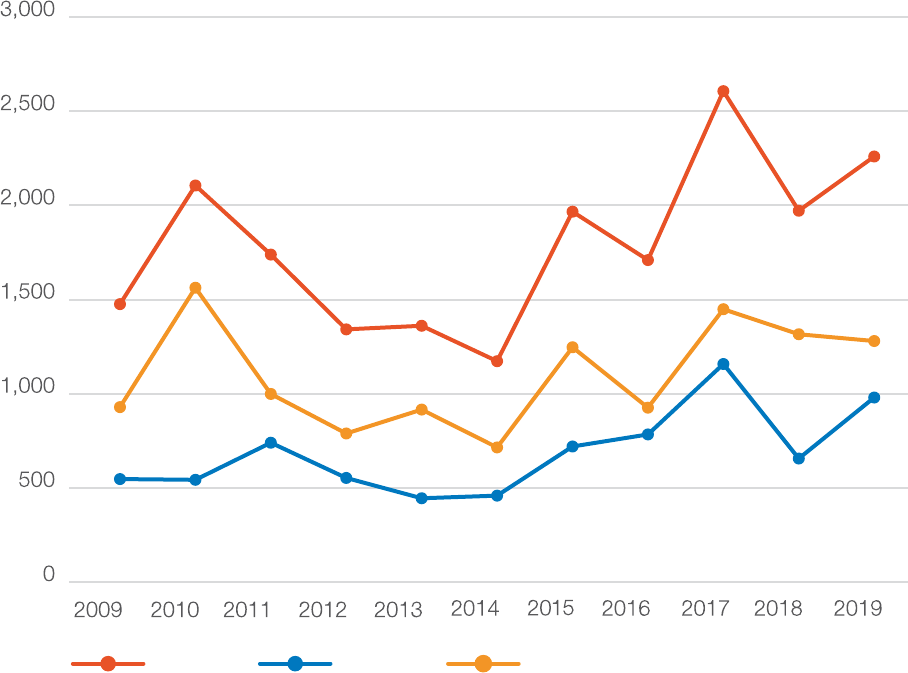
68
Figure 16
International trade in the UK film sector, 2009-2019
†
Source: ONS ITIS
Notes:
† Includes trade in intellectual property, and audiovisual and related services
1. Exports include sums receivable from residents in other countries, excluding 'other services'
2. Imports include sums payable to residents in other countries, excluding 'other services'
Exports
1
Imports
2
Trade surplus
£m
547
929
1,476
2,106
1,739
1,342
999
789
543
740
553
445
459
720
784
1,158
656
980
916
715
1,247
1,449
1,316
1,280
1,361
1,173
1,967
2,607
2,260
1,972
1,563
926
1,710
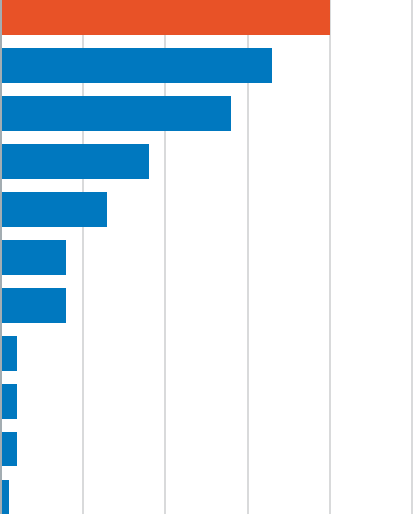
69
To provide context, the export-to-GVA ratio for the film sector (including all sub-sectors) was
compared to the other service industries in the UK economy, as defined by the ONS. The results
of this (Figure 17) show the film sector having a significantly higher ratio of exports to GVA than
other UK service industries, having achieved a ratio of 0.40, compared with the second highest
sector reaching just 0.33.
Figure 17
Exports-to-GVA ratio, UK film sector vs UK service industries, 2015-2019
0.400.300.200.100.00
Film sector value chain
Information and communication
Professional, scientific and technical activities
Financial and insurance activities
Arts, entertainment and recreation and other services
Wholesale/Retail trade
Administrative and support service activities
Construction
Transportation and storage
Real estate activities
Accommodation and food services
0.40
0.33
0.28
0.18
0.13
0.08
0.08
0.02
0.02
0.02
0.01
Source: Olsberg•SPI/Nordicity estimates based on data from ONS ITIS, the BFI, Attentional, Ofcom, Omdia, ABS, public
nancial reports, Ofcial Charts Company, BASE and ASHE
0.50

70
4.4. Total economic impact
In addition to the direct economic impact described so far, the film sector generates significant
indirect and induced impacts. Film production and the film sector value chain drive the purchase
of supplies and services from a variety of other non-screen sectors, from electricians to legal
and catering services. This is referred to as the indirect impact, and produces income and
employment in these supplier sectors.
74
The cast and crew employed by the film sector, and those employed in its supplier sectors, re-
spend their income within the wider economy, which generates further economic activity. This is
referred to as the induced impact.
The total economic impact is equal to the sum of the direct, indirect and induced impacts.
To identify the indirect and induced impacts, the ONS input-output (I-O) tables were used to
generate a bespoke economic impact model for the sector.
75
This model indicated that the total economic impact of the UK film sector supported by FTR in
2019 was equal to 68,930 FTEs, £2.39 billion in employment compensation and £4.98 billion in
GVA (Table 10). This total impact included contributions from each of the value chain segments
as follows.
76
74. Previous analysis of below-the-line budget spend undertaken shows that, on average, 33% of spend remained within the screen
production sector, with 67% impacting other business sectors. These included construction, travel and transport, and hospitality and
catering. Global Screen Production – The Impact of Film and Television Production on Economic Recovery From COVID-19. Olsberg•SPI,
25 June 2020. Further analysis of spending has also been undertaken for this study: see Section 11
75. A full analysis of this methodological approach is included in Appendix 3
76. Detailed data tables for each of these value chain elements are included in Appendix 4

71
Table 10
Total economic impact of FTR, by value chain segment, 2016-2019
2016 2017 2018 2019
Employment
(FTEs)
Production 44,660 52,220 46,020 45,460
Distribution 6,880 9,070 8,590 9,790
Exhibition 8,030 8,720 11,010 10,930
Television broadcast 860 650 580 490
Video platforms 2,750 2,340 2,260 2,260
Total 63,180 73,000 68,460 68,930
CoE (£m)
Production 1,506.5 1,788.2 1,659.4 1,623.3
Distribution 286.2 346.8 349.4 391.6
Exhibition 185.3 202.8 271.3 285.3
Television broadcast 32.7 24.2 22.9 20.1
Video platforms 72.2 63.0 63.6 66.8
Total 2,082.9 2,425.0 2,366.5 2,387.2
GVA (£m)
Production 2,197.2 2,603.6 2,417.8 2,362.3
Distribution 1,351.0 1,724.8 1,732.9 1,831.5
Exhibition 389.1 430.5 587.9 604.5
Television broadcast 89.8 47.7 38.3 37.3
Video platforms 135.8 123.0 129.2 139.9
Total 4,162.9 4,929.6 4,906.0 4,975.5
Source: Olsberg•SPI/Nordicity estimates based on data from the BFI, BARB, Ofcom, Omdia, ABS, public nancial reports,
Ofcial Charts Company, BASE and ASHE
Note:
Figures may not sum to totals due to rounding

72
Table 11
Economic contribution of FTR, total value chain, 2016-2019
2016 2017 2018 2019
Employment
(FTEs)
Direct 29,560 33,430 31,630 31,160
Indirect 21,600 25,500 23,780 24,530
Induced 12,020 14,070 13,050 13,240
Total 63,180 73,000 68,460 68,930
CoE (£m)
Direct 1,116.0 1,267.5 1,235.1 1,239.6
Indirect 580.1 699.0 687.2 703.1
Induced 386.7 458.5 444.2 444.5
Total 2,082.9 2,425.0 2,366.5 2,387.2
GVA (£m)
Direct 2,443.1 2,862.3 2,877.7 2,912.5
Indirect 1,126.1 1,364.6 1,341.9 1,374.6
Induced 593.8 702.6 686.4 688.4
Total 4,162.9 4,929.6 4,906.0 4,975.5
Source: Olsberg•SPI/Nordicity estimates based on data from the BFI, BARB, Ofcom, Omdia, ABS, public nancial reports,
Ofcial Charts Company, BASE and ASHE
Note:
Figures may not sum to totals due to rounding
4.5. Spillover impacts
In addition to economic impacts within the film sector and its supply chains, benefits – or
‘positive externalities’ – are also created for other sectors. These are known as spillover impacts.
In this section, the work undertaken for the 2015 equivalent and 2018 edition of Screen Business
has been updated to analyse three key spillover impacts associated with the film sector: tourism,
merchandise sales and UK brand promotion.

73
4.5.1. Inbound tourism
The tourism benefits associated with films are being increasingly recognised, with some visitors
often willing to travel to locations or settings for prolonged periods of time because of a screen
association. Such trips naturally deliver economic benefits.
The UK has produced films and film franchises with a strong sense of place and culture in
recent years. Such projects include The Secret Garden, which used multiple locations in
Yorkshire including Helmsley Walled Gardens, T2 Trainspotting, which filmed in Edinburgh,
and The Favourite, which filmed at Hatfield House in Hertfordshire.
77, 78, 79
UK films encourage
travel by audiences from all over the world, as well as being prominently featured in UK tourism
promotions.
The methodology used in the 2015 equivalent and 2018 edition of Screen Business was updated
with the most recently released data to estimate the economic impact of film tourism.
In 2017, inbound tourists spent an estimated £729.4 million in film-related screen tourism in the
UK. This is estimated to have increased to £892.6m in 2019. This spending generated 15,300
FTEs of total employment (ie including direct, indirect and induced impacts) in 2017, increasing to
17,660 FTEs in 2019. The GVA impact of film-related screen tourism was an estimated
£733.8 million in 2017, increasing to £898.0 million in 2019. This economic activity yielded an
estimated £227.6 million in tax revenue in 2017, increasing to £278.6 million in 2019.
Table 12
Economic impact of film-related screen tourism, 2016-2019
2016 2017 2018 2019
Tourism spending (£m) 627.2 729.4 821.7 892.6
Total employment impact (FTEs)
1
13,490 15,300 16,830 17,660
Total GVA impact (£m)
1
631.0 733.8 826.6 898.0
Total tax revenue impact (£m)
1
195.7 227.6 256.5 278.6
Source: Olsberg•SPI/Nordicity estimates
Note:
1. Includes direct, indirect and induced economic impacts
77. ‘The Secret Garden’ Location Spotlight. Screen Yorkshire webpage. Accessible at: https://www.screenyorkshire.co.uk/funding/pro-
ductions/the-secret-garden-location-spotlight/
78. T2 Trainspotting. Edinburgh.org webpage. Accessible at: https://edinburgh.org/edinburgh-on-film/filmed-in-edinburgh/t2-trainspot-
ting/
79. Where was The Favourite filmed? Creative England webpage. Accessible at: https://www.creativeengland.co.uk/where-was-the-
favourite-filmed/
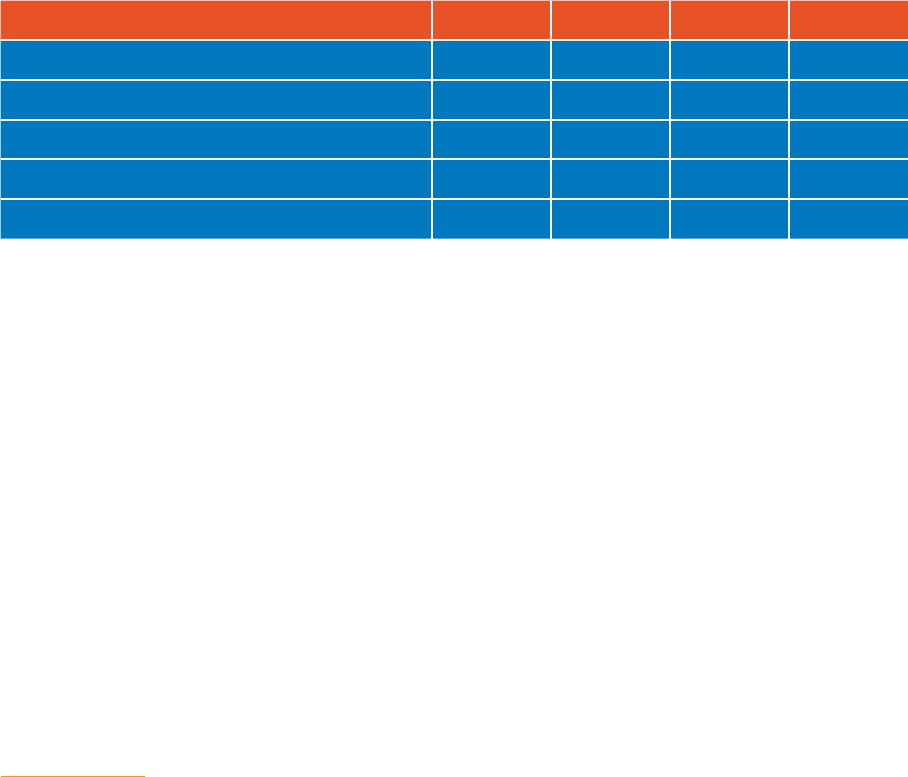
74
4.5.2. Merchandise
The retail sector also sees spillovers from the film sector as a result of merchandising across a
wide variety of products and sectors such as music, fashion and publishing.
To estimate the economic impact of merchandising, the model used in previous studies was
updated to ensure consistency and comparability. Research conducted in 2012 found that
the total value of merchandise sales associated with UK-made films was equivalent to 70% of
the domestic UK box office of those films (based on the lagged average for the previous three
years).
80
This approach implies that film-related merchandise sales in the UK in 2017 were £343.4
million, increasing to £388.8 million in 2019. The retail margin (ie retail industry revenue) on sales
generated a total economic and fiscal impact (ie including direct, indirect and induced impacts) of
1,930 FTEs, £64.9 million in GVA and £13.0 million in tax revenue for the UK in 2017. This total
economic and fiscal impact increased to 2,030 FTEs, £73.5 million in GVA and
£14.7 million in tax revenue in 2019.
Table 13
Economic impact of film-related merchandise sales in the UK, 2016-2019
2016 2017 2018 2019
Merchandise sales (£m) 297.9 343.4 352.4 388.8
Retail margin (£m)
1
89.4 103.0 105.7 116.6
Total employment impact (FTEs)
2
1,860 1,930 1,930 2,030
Total GVA impact (£m)
2
56.3 64.9 66.6 73.5
Total tax revenue impact (£m)
2
11.3 13.0 13.3 14.7
Source: Olsberg•SPI/Nordicity estimates
Notes:
1. 30% retail margin earned by UK-based retailers
2. Includes direct, indirect and induced economic impacts
4.5.3. UK brand promotion
Beyond the direct benefits of film to the economy from production, tourism and ancillary
merchandising sales, there are further economic and cultural benefits to the UK’s brand. The
global consumption of UK film – including its stories, characters and locations – can stimulate
interest in the UK and enhance its image and reputation. This creates valuable promotional
benefits in both cultural and economic terms, as demonstrated in the UK Government’s GREAT
campaign which utilised UK film content for the global promotion of UK-produced goods
and services.
The effects of brand promotion generate value for the UK indirectly with the assumption that, by
creating positive interest in the UK and improving its image and reputation, films assist in driving
relationships in trade and investment.
80. The Economic Impact of the UK Film Industry. Oxford Economics, 2012. Accessible at: https://www2.bfi.org.uk/sites/bfi.org.uk/files/
downloads/bfi-economic-impact-of-the-uk-film-industry-2012-09-17.pdf
In 2011, film merchandise sales excluding home video sales and rentals summed to £180 million, which was approximately 70% of the
lagged three-year average UK domestic box office for UK films (£255.3 million)

75
Since such effects are challenging to value, the value of product placement in UK films to brands
was calculated. This assumes that the value found by commercial brands in being associated
with UK films will deliver a similar value to the UK’s association overall.
This methodology involved a number of assumptions which are outlined in this section. The
model assumes that entities engaging in product placement are using a sound business rationale
and that this spend will therefore be worth at least as much as they earn in additional profits.
Data available on the value of product placement spending in 2012 suggest that it was
equivalent to 4.7% of the global box office in that year.
81, 82
More recent data on the global
market for product placement suggest that spending in film was equivalent to 7.2% of the
global box office.
83, 84, 85
This model calculates the value of product placement by UK brands to
reach consumers in overseas markets, and therefore can be based on the box office of UK films
outside of the UK.
According to the BFI, UK films earned £6.29 billion at the global box office in 2017,
£478.3 million of which was earned in the UK.
86
Therefore, £5.81 billion was made by UK films
exhibited outside the UK in 2017. In 2019, UK films earned £7.47 billion in box office outside
the UK.
A large portion of this box office came from films which were US studio-backed but made in the
UK, so to ensure only revenues made by UK producers are calculated, this share was discounted
by 50%. Such a change reflects the fact that while Star Wars, for example, promotes the UK, its
locations and businesses, this value is shared with Disney and its resorts around the world. This
leaves an adjusted value of £2.9 billion.
This adjusted value was multiplied by the ratio of product placement spending to the global
box office (7.2% in 2019) to arrive at an estimate of the amount paid by UK brands to access
overseas markets – £268.9 million in 2019. Based on an average net profit margin of 8.2%
during 2019 by private non-financial corporations in the UK, this payment would therefore
represent £3.28 billion in increased annual turnover for UK brands outside of the UK in 2019.
87, 88
Using ratios between turnover and GVA/employment derived from ONS, these incremental global
revenues generated a total economic and fiscal impact (ie including direct, indirect and induced
impacts) of 32,030 FTEs, £1.74 billion in GVA and £399.7 million in tax revenue in 2019.
81. Global product placement spend rises. WARC, 13 April 2013. Accessible at: https://www.warc.com/newsandopinion/news/glob-
al-product-placement-spend-rises/31278
82. Theatrical Market Statistics 2012. Motion Picture Association. Accessible at: https://www.motionpictures.org/wp-content/
uploads/2014/03/2012-Theatrical-Market-Statistics-Report.pdf.
83. Global Product Placement Spend Up 14.5% to $20.6B in 2019, But COVID-19 Impact to End 10-Yr Growth Streak in 2020; Strong
Rebound Seen in ‘21 on TV, Digital, Music Growth. Cision PR Web, 27 May 2020. Accessible at: https://www.prweb.com/releases/
global_product_placement_spend_up_14_5_to_20_6b_in_2019_but_covid_19_impact_to_end_10_yr_growth_streak_in_2020_strong_re-
bound_seen_in_21_on_tv_digital_music_growth/prweb17146134.htm
84. THEME Report 2020, MPA. Accessible at: https://www.motionpictures.org/wp-content/uploads/2021/03/MPA-2020-THEME-Report.pdf
85. While data on the global value of the product placement market was not available for the intervening years, a straight-line method was
used to estimate film product placement spending as a share of global box office for 2013 to 2018
86. Statistical Yearbook 2018. The BFI. Accessible at: https://www2.bfi.org.uk/sites/bfi.org.uk/files/downloads/bfi-statistical-year-
book-2018.pdf. Note: USD box office figure converted at an exchange rate of 0.776 £ per USD
87. Net profit margin estimated by comparing total gross trading profits across all non-financial industries (published within HMRC’s Cor-
poration Tax liabilities calculations) to total turnover across all non-financial industries (published by ONS within the ABS)
88. Profitability of UK companies: April to June 2016. ONS, 13 October 2016. Accessible at: https://www.ons.gov.uk/economy/national-
accounts/uksectoraccounts/bulletins/profitabilityofukcompanies/aprtojun2016#main-points

76
Table 14
Economic impact of film-related UK brand promotion, 2016-2019 (£m, unless indicated
otherwise)
2016 2017 2018 2019
Global box office of UK-made films 4,800.0 6,289.0 7,068.0 8,066.0
Exchange rate (£ per USD) 0.74 0.78 0.75 0.78
UK films’ box office in UK 440.9 478.3 591.0 596.9
Offshore box office of UK-made films 4,359.2 5,810.5 6,476.7 7,468.9
Adjusted offshore box office of UK-made films
1
2,179.6 2,905.2 3,238.3 3,734.4
Product placement spending in film as a share
of global box office
6.1% 6.5% 6.8% 7.2%
Product placement fees / implied incremental
profit margin
2
133.6 188.4 221.6 268.9
Implied incremental turnover 1,553.2 2,297.9 2,702.4 3,279.0
Total employment impact (FTEs)
3
16,610 23,970 27,080 32,030
Total GVA impact
3
823.2 1,217.9 1,432.3 1,737.9
Total tax revenue impact
3
183.8 280.1 329.4 399.7
Source: Olsberg•SPI/Nordicity estimates based on data from the BFI, Comscore and Omdia
Notes:
1. 50% of total offshore box ofce
2. Product placement spending share multiplied by adjusted offshore box ofce
3. Includes direct, indirect and induced economic impacts
4.5.4. Summary
In total, film-related spillover impacts generated an estimated 51,720 FTEs in 2019 and
£2.71 billion in GVA for the UK economy (Table 15).

77
Table 15
Summary of film-related spillover impacts, 2016-2019
2016 2017 2018 2019
Employment
(FTEs)
Inbound tourism 13,490 15,300 16,830 17,660
Merchandise 1,850 1,930 1,920 2,030
UK brand promotion 16,610 23,970 27,080 32,030
Total 31,950 41,200 45,830 51,720
GVA (£m)
Inbound tourism 631.0 733.8 826.6 898.0
Merchandise 56.3 64.9 66.6 73.5
UK brand promotion 823.2 1,217.9 1,432.3 1,737.9
Total 1,510.5 2,016.6 2,325.5 2,709.4
Tax
revenue
(£m)
Inbound tourism 195.7 227.6 256.5 278.6
Merchandise 11.3 13.0 13.3 14.7
UK brand promotion 183.8 280.1 329.4 399.7
Total 390.8 520.7 599.2 693.0
Source: Olsberg•SPI/Nordicity estimates
4.6. Overall economic contribution
Bringing together the impacts of all parts of the value chain and spillovers, the overall economic
contribution identified as a result of tax relief-supported film production in 2019 was 120,650
FTEs, £7.68 billion in GVA and £1.89 billion in tax revenue (Table 16).
Table 16
Summary of overall economic contribution of the UK film sector supported by tax
relief, 2016-2019
2016 2017 2018 2019
Employment
(FTEs)
Total economic impact 63,180 73,000 68,460 68,930
Spillover impacts 31,950 41,200 45,830 51,720
Total 95,130 114,200 114,290 120,650
GVA (£m)
Total economic impact 4,162.9 4,929.6 4,906.0 4,975.5
Spillover impacts 1,510.5 2,016.6 2,325.5 2,709.4
Total 5,673.4 6,946.1 7,231.5 7,684.9
Tax
revenue
(£m)
Total economic impact 994.5 1,181.6 1,202.1 1,199.9
Spillover impacts 390.8 520.7 599.3 693.1
Total 1,385.3 1,702.2 1,801.4 1,892.9
Source: Olsberg•SPI/Nordicity estimates

78
4.7. Impact of Film Tax Relief
Across the film sector value chain, UK film content generated an estimated £1.53 billion in HM
Treasury revenue in 2019, against a total estimated outlay from FTR of £403.2 million. This
tax revenue impact included £205.7 million in VAT on the retail sales of cinema tickets, digital
subscriptions and transactions, and DVD sales/rentals.
89
The tax impact also included Income
Tax, National Insurance Contributions (NIC) and Corporation Tax generated by the employment
and economic activity associated with direct, indirect, induced and spillover impacts.
Table 17
HM Treasury revenue, UK film content, film value chain, 2016-2019 (£m)
2016 2017 2018 2019
Direct VAT 156.9 161.3 202.2 205.7
Direct 471.8 548.1 534.5 523.4
Indirect 226.6 292.2 289.9 295.4
Induced 139.3 179.9 175.5 175.4
Spillover 390.8 520.7 599.3 693.1
Total 1,385.3 1,702.2 1,801.4 1,892.9
Source: Olsberg•SPI/Nordicity estimates based on data from the BFI, Attentional, Ofcom, Omdia, ABS, IDBR, BRES, CAA,
Comscore, public nancial reports, Ofcial Charts Company, BASE, ASHE, ONS and HM Revenue & Customs (HMRC)
To assess the impact of FTR, modelling was used to understand how the total economic
contribution of the component of the UK film sector supported by tax relief would change in
its absence. To do this, an online survey of producers who used FTR between 2017 and 2019
was conducted. This survey asked about the importance of FTR in production decisions, and
the answers were weighted by the relative importance of the domestic and inward investment
elements of the sector between 2017 and 2019.
90
This survey research indicated that, for the 2017-2019 period, 92% of production spending
supported by FTR would not have occurred in the absence of the tax relief – ie an additionality
rate of 92% existed for the production sub-sector.
91
This rate of additionality was applied to
the production sub-sector. The other sub-sectors were discounted to reflect their lower net
additionality rates.
92
89. The tax impact modelling assumes that the digital platform (for example, SVoD) spending in UK is subject to 20% VAT. It also assumes
that each part of the value chain does not generate non-recoverable VAT on its business-inputs purchases; see Appendix 3 for details of
tax calculations
90. See Appendix 3 for more details; for the purpose of the additionality research, domestic productions include co-productions
91. See Appendix 3 for details
92. See Appendix 3 for details of the discounting approach

79
This high rate of additionality reflects the globally competitive market for production. Major US
producers can choose to film in Southern California, other parts of the US, Canada, Australia
or numerous other jurisdictions that also offer production incentives, crew base and physical
infrastructure. Furthermore, inward investment in film is not subject to the same significant sunk
costs to enter a market as manufacturing or services businesses may be subject to (for example,
building a manufacturing facility, investing in marketing, securing long leases on premises).
For that reason, such inward investment is relatively ‘fleet of foot’ and quickly able to shift its
production business to other locations.
Because film production also displays the highest share of inward investment production among
the tax reliefs, it also displays the highest rate of additionality.
93
Inward investment production
accounts for smaller shares of total production in HETR, ATR and CTR and, for that reason,
those tax reliefs display lower rates of additionality compared to FTR.
Since the additionality research conducted for this study only applied to the 2017-2019 period,
the additionality rates gathered for and used in previous studies were applied to the 2009-2016
period.
94
For example, an additionality rate of 91% was applied to the 2013-2016 period and
drawn from the primary research carried out for Screen Business 2018.
Based on additionality rates applied to all the sub-sectors (for example, 92% in 2019), FTR
outlays in 2019 yielded a return on investment (RoI) of £8.30 in terms of GVA. This means that
each pound of FTR yielded £8.30 of GVA for the UK economy in 2019.
Table 18
FTR return on investment, 2016-2019
2016 2017 2018 2019
Total expenditures 1,871.9 2,220.9 2,061.3 2,015.8
Tax relief outlays
1
374.4 444.2 412.3 403.2
Overall economic contribution GVA (£m) 5,673.4 6,946.1 7,231.5 7,684.9
Additional GVA (£m) 2,797.2 3,334.3 3,279.8 3,347.7
GVA RoI (£)
2
7.47 7.51 7.96 8.30
Source: Olsberg•SPI/Nordicity estimates based on data from the BFI, Attentional, BARB, Ofcom, Omdia, ABS, IDBR, BRES,
CAA, Comscore, public nancial reports, Ofcial Charts Company, BASE, ASHE, ONS and HMRC
Notes:
1. Estimated at 20% of total expenditures
2. RoI is measured as pound returned per £1 of tax relief and takes into account the net impacts and tax relief outlays in the
specic year
93. The share of inward investment within VGTR-supported production has not been examined
94. 2013: Economic Contribution of the UK’s Film, High-End TV, Video Game and Animation Programming Sectors. Olsberg·SPI with
Nordicity, 2015. Accessible at: https://www.o-spi.co.uk/wp-content/uploads/2015/02/SPI-Economic-Contribution-Study-2015-02-24.pdf
2011: The Economic Impact of the UK Film Industry (2012). Ibid
2009: The Economic Impact of the UK Film Industry. Oxford Economics, 2010. Accessible at: https://www2.bfi.org.uk/sites/bfi.org.uk/
files/downloads/economic-impact-of-the-uk-film-industry-2010-06.pdf

80
THE HIGH-END
TELEVISION SECTOR
5

81
5.1. Context and key findings
Since High-end Television Tax Relief (HETR) was introduced in 2013, production in the high-end
television (HETV) sector has undergone a very substantial increase, with UK expenditure rising
from £392.8 million in 2013 – the year that HETR was introduced – to £2.08 billion in 2019.
95, 96
HETV is defined for tax relief purposes as television programming for which the budget must be
at least £1.0 million per slot time hour (which can be pro-rated), is longer than 30 minutes, and
is intended for broadcast (including the internet).
97, 98
The UK produces a range of HETV content
that attracts significant attention, both within the UK and around the world. Between 2017 and
2019, productions qualifying for HETR included The White Princess, Years and Years and I Hate
Suzie.
HETV production investment has increased throughout the UK, contributing to production
growth in the UK nations and England’s regions. This is evidenced by productions such as Game
of Thrones, Derry Girls and Line of Duty in Northern Ireland, Outlander and Shetland in Scotland
and Sex Education and His Dark Materials in Wales. A broad range of productions has also been
made in England’s regions, including Peaky Blinders, Gentleman Jack and Ackley Bridge.
In 2019, HETV production spend generated 28,760 direct full-time equivalent (FTE) jobs
throughout all parts of the value chain, an increase from 18,600 in 2017. With indirect and
induced impacts, HETV generated 64,310 FTEs in total in 2019, an increase from 43,220 in 2018
and 40,760 in 2017.
HETV content, therefore, generated a total economic impact of £3.67 billion in gross value
added (GVA) for the UK in 2019, £2.43 billion in 2018 and £2.24 billion in 2017. These represent
significant increases from £1.55 billion in 2016.
Significant spillover impacts were also made – particularly in relation to screen tourism.
HETR generated strong returns for HM Treasury over 2017-2019. In 2019, each pound of HETR
yielded an additional £6.44 in GVA for the UK economy.
Note
2016 data have been revised from the previous edition of Screen Business to account
for updates in projects tracked by the BFI since publication. For example, when Screen
Business was published in 2018, total HETV expenditure for 2016 was reported by the
BFI to be £896.7 million. This total has since been revised to £977.2 million. Analysis in
this chapter is based on projects certified to the end of 2020 only, so data may change
in time as new applications for the years in question are submitted.
95. 2013 total sourced from the BFI Research and Statistics Unit
96. Film, high-end television and animation programmes production in the UK: full-year 2020. Ibid
97. British Certification and Tax Relief. The BFI, 2019. Accessible at: https://core-cms.bfi.org.uk/media/87/download
98. Episodes of 30 minutes or less can qualify for tax relief when commissioned together, as programmes commissioned together are
treated as one programme. The £1 million average core spend per slot hour requirement would still need to be met

82
5.2. Value chain overview
As with the film sector, this assessment of the economic contribution of HETV has been focused
on projects which qualify for HETR, and not the entire UK television and digital platform sector.
Similarly, the economic contribution of HETV has been analysed using a value chain approach
that included the economic contribution made by HETV content across the production,
distribution, television broadcast and video platform components of the value chain.
The television broadcast component of the value chain has, traditionally, been the primary
window for the release of television content.
99
However, the role of other platforms in stimulating
HETV production investment in the UK – in particular video-on-demand (VoD) and subscription
video-on-demand (SVoD) platforms – has been increasing rapidly in recent years.
While such streaming platforms typically began by acquiring content produced for television
broadcast, they now represent major primary windows in their own right. It should also be noted
that films produced by streaming platforms can qualify for HETR rather than Film Tax Relief
(FTR), as films must be intended for theatrical release to access FTR.
100
Some films produced by
streaming platforms may be released theatrically. Qualification of such films for HETR is likely to
be a factor in the increase in expenditure and impact outlined in this section, in addition to the
increased investment in drama, comedy and documentary series.
For the HETV sector, the value chain begins with the conception and development of a project.
This may be undertaken in-house at a broadcaster or streaming platform, or by an external
production company which will then seek a commission from a broadcaster or streaming
platform. In contrast to the film sector, HETV projects normally go straight to broadcast or
streaming from the completion stage, without a distributor as an intermediary.
Depending on the project and its structure, a distribution element may also be present in the
value chain. For example, a production company or third party may also secure further economic
activity through secondary distribution to other broadcasters or platforms outside of the primary
window and territorial market.
Consumers also use streaming platforms and physical video as ways to catch up with HETV
content which has already premiered, or even as their primary way to watch such content.
Because of this, viewing of HETV in the video platforms sub-sector – particularly through VoD
and SVoD – can either follow or precede viewing on broadcast television.
99. For the purposes of this study, the definition of television broadcast includes public service broadcaster channels, commercial chan-
nels, and platform operators including Sky TV, Virgin Media, BT TV and TalkTalk subscriber revenue (excluding revenue from broadband
and telephony). The definition of television broadcast also excludes digital video platforms (SVoD, VoD and TVoD) and online video adver-
tising revenue from catch-up services
100. About UK creative industry tax reliefs. The BFI webpage. Accessible at: https://www.bfi.org.uk/apply-british-certification-tax-relief/
about-uk-creative-industry-tax-reliefs
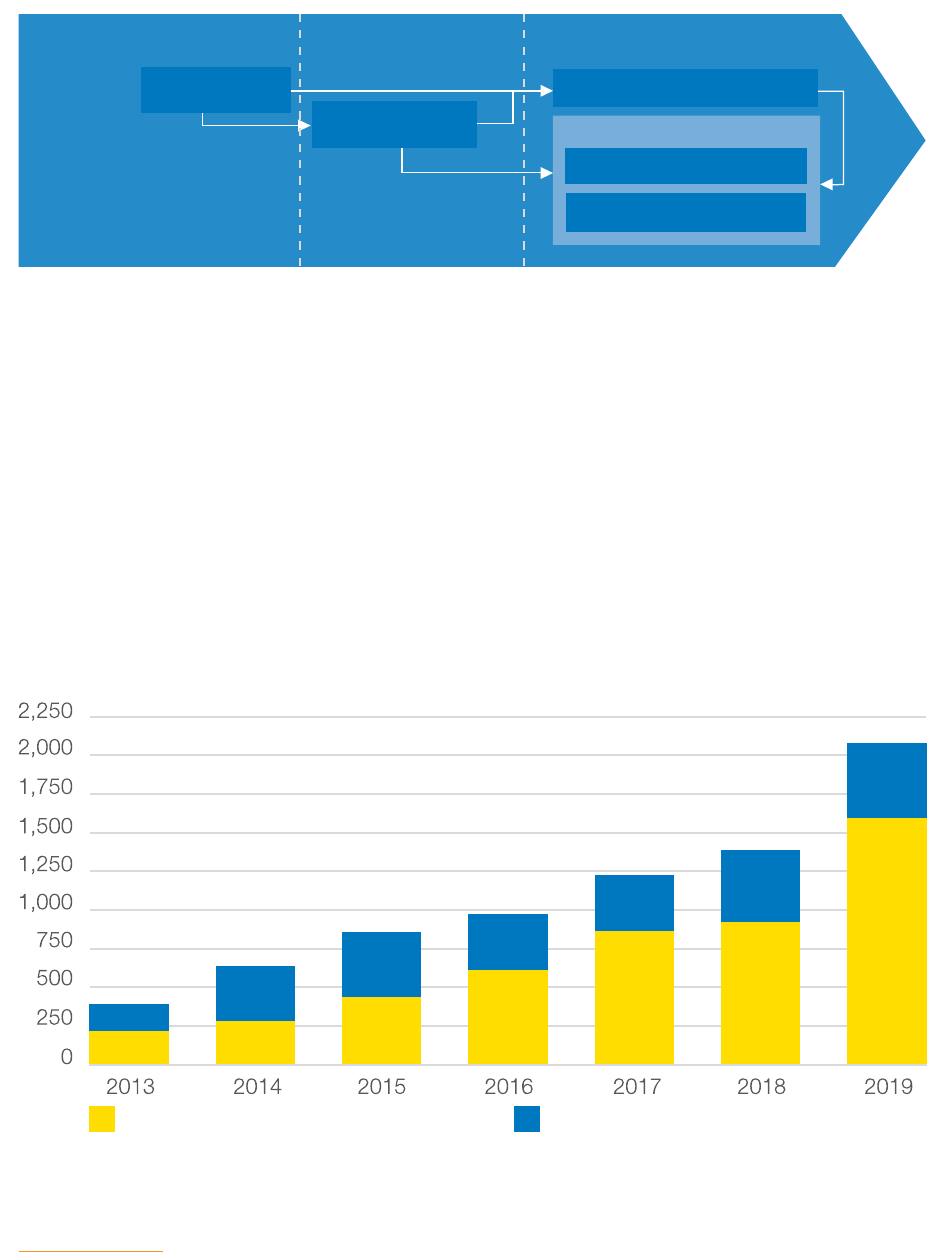
83
Figure 18
HETV value chain
* A distributor may or may not be involved, depending on the structure of the production
5.3. Direct impact
5.3.1. Production
Statistics compiled by the BFI indicate that £2.08 billion was spent on the production of qualifying
HETV content in the UK during 2019. This expenditure included £482.4 million in domestic UK
productions, and just under £1.60 billion in inward investment and co-production spend, or
76.8% of the total.
101, 102
Figure 19
UK spend on HETV, 2013-2019 (£m)
101. UK production spend supported by the tax relief also generates funding for the Creative Skillset Skills Investment Fund through the
HETV Skills Levy; set at 0.5% of core UK expenditure in voluntary contributions, this generated £2.6 million from 105 productions in 2017-
2018. Booming production in High-end TV delivers record levy contributions. ScreenSkills, 23 April 2018. Accessible at: https://www.
screenskills.com/about-us/press-releases/booming-production-in-high-end-tv-delivers-record-levy-contributions/
102. Co-productions are included with inward investment as a reflection of how data are presented in the BFI Statistical Yearbook
£m
Inward investment and co-production Domestic UK
Source: The BFI
Note:
Spend is allocated to the year in which principal photography started, or to the year in which the visual effects (VFX)
were undertaken in the case of projects utilising HETR for VFX-only production, rather than physical production
1,595.9
926.0
867.6
612.2
439.1
282.2
482.4
464.6
358.5
365.0
422.2
357.8
2,078.3
1,390.6
1,226.1
977.2
861.3
640.0
220.0
172.8
392.8
Distribution
ProductionStage
Broadcast
Production
Television Broadcast
VoD/SVoD/TVoD
Video platforms
DVD/Blu-ray sales & rentals
Distribution*
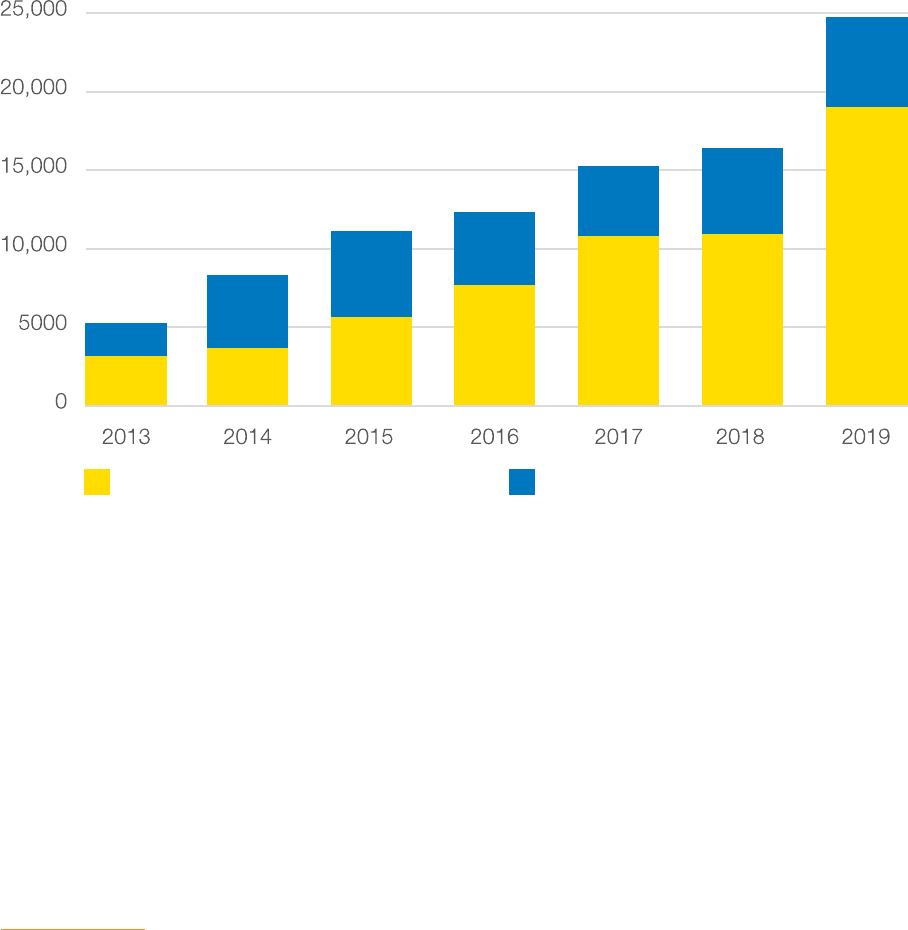
84
The results of the Job Creation Model were used to estimate the direct impact of this HETV
spending in terms of employment, compensation of employment (CoE) and GVA. This model
provided a breakdown of production budgets in different ranges and genres across film
and HETV, which enabled the number of FTEs created by different types or genres of HETV
production to be estimated. It also provided estimates of the proportion of production spend
devoted to direct CoE (the direct CoE ratio) and GVA (the GVA ratio).
103
The results of this analysis indicate that HETV production generated 12.4 direct FTEs per million
pounds spent on production in 2017 (the FTE ratio), declining to 11.9 direct FTEs in 2019 (due to
average wage inflation). Based on these FTE ratios, HETV production generated 15,250 FTEs in
2017, increasing to 24,780 FTEs in 2019 (Figure 20).
Figure 20
Direct employment generated by HETV production in the UK (FTEs)
The Job Creation Model also indicated that each £1 million of HETV production generated £0.49
million in direct employment compensation, and £0.58 million in direct GVA. This implies that
the total £2.08 billion in HETV production in the UK in 2019 generated £1.01 billion in direct
employment compensation, and £1.20 billion in direct GVA (Table 19).
103. See Section 4.3.1. for a description of the Job Creation Model
FTEs
Source: Olsberg•SPI/Nordicity estimates based on data from the BFI, the Annual Business Survey (ABS) and ASHE
Inward investment and co-production Domestic UK
19,030
5,750
24,780
10,930
5,480
16,410
10,790
4,460
15,250
7,720
4,600
12,320
5,670
5,440
11,110
3,670
4,650
8,320
3,160
2,130
5,290

85
Table 19
Direct economic impact of HETV production
2016 2017 2018 2019
UK spend (£m) 977.2 1,226.1 1,390.6 2,078.3
Employment (FTEs) 12,320 15,250 16,410 24,780
CoE (£m) 473.9 594.7 674.4 1,008.0
GVA (£m) 563.8 707.5 802.4 1,199.2
Source: Olsberg•SPI/Nordicity estimates based on data from the BFI, ABS and ASHE
Note:
See Appendix 3 for description of methodology
5.3.2. Television broadcast
When HETV content is broadcast on television, economic value is generated for UK
broadcasters. To estimate the contribution of HETV to the UK’s broadcast sector, an estimation
was made of the value that HETV supplies to broadcasters’ turnover, employment, employment
compensation and GVA by virtue of the audience value that HETV content attracts, and the net
advertising sales that these audiences generate for commercial broadcasters.
To estimate this contribution, the BFI analysed the audience ratings for HETV titles that have
accessed the tax relief since its introduction.
104
This analysis established the audience for each
HETV title airing on commercial television in the UK.
The results of this audience analysis indicated that, in 2017, HETV content accounted for 9.4%
of total audiences for commercial broadcasters and for the BBC. This economic share was
multiplied by the total 2017 television broadcasting sector revenue (including net advertising,
BBC income, subscription revenue and other television revenue) of £13.41 billion, to arrive
at estimated attributable revenue of £1.26 billion.
105
The television broadcast sector revenue
attributable to HETV generated 2,680 FTEs of direct employment in 2017, £126.1 million in direct
employment compensation and £252.1 million in direct GVA (Table 22).
106
By 2019, the audience share of HETV content had risen to 12.9%. As a result, attributable
revenue was £1.71 billion and the direct economic impact was equal to 3,050 FTEs,
£170.7 million in employment compensation and £307.2 million in GVA (Table 22).
104. See Appendix 3 for a description of the methodology
105. Throughout this study, the term ‘economic share’ is used to refer to the share of total economic activity (ie employment, employment
compensation and GVA) in a specific sub-sector that can be attributed to tax relief-supported content. This economic share is derived
by using the audience share of tax relief-supported content to estimate the portion of sub-sector revenue that can be attributed to the
content. See Appendix 3 for additional description
106. See earlier footnote on the definition of television broadcast

86
Table 20
Calculation of HETR viewing share
2017 2018 2019
HETR viewing minutes (millions) 170.7 161.0 200.3
Total minutes of viewing to all channels
(in BARB sample) (millions)
1,824.1 1,678.9 1,547.4
HETR viewing share 9.4% 9.6% 12.9%
Source: The BFI and BARB
Table 21
Total revenue in the UK broadcasting sector (£m)
2017 2018 2019
PSB channels
1
4,744.7 4,710.5 4,595.7
Commercial multi-channels 2,517.2 2,474.4 2,350.7
Platform operators
2
6,148.7 6,342.5 6,284.0
Total 13,410.6 13,527.5 13,230.5
Source: Ofcom
Notes:
Figures may not sum to totals due to rounding
1. Includes commercial revenue sources and income from household licence fees and grant-in-aid
2. Platform operators includes Sky TV, Virgin Media, BT TV and TalkTalk subscriber revenue (excluding revenue from
broadband and telephony), but excludes revenue of digital video platforms (SVoD, VoD and TVoD) and online video advertising
revenue from catch-up services
Table 22
Direct economic impact of HETV on UK television
2016
1
2017 2018 2019
Economic share 4.2% 9.4% 9.6% 12.9%
Attributable revenue (£m) 574.8 1,260.6 1,298.6 1,706.7
Employment (FTEs) 1,300 2,680 2,630 3,050
CoE (£m) 63.2 126.1 129.9 170.7
GVA (£m) 206.9 252.1 194.8 307.2
Source: Olsberg•SPI/Nordicity estimates based on data from the BFI, Attentional, BARB, Ofcom, ABS and ASHE
Notes:
See Appendix 3, Sections 18.1.2. and 18.6.1. for description of methodology
1. The economic share for 2016 has been calculated using a different methodology than used for 2017 to 2019. For that
reason, the economic share and subsequent economic impact results for 2016 are not directly comparable to those for 2017 to
2019. See Appendix 3 for description of methodology

87
5.3.3. Distribution
HETV content is typically commissioned by a broadcaster, streaming platform or other entity.
While models differ, some projects may be fully funded by the commissioner, while for other
projects the fees paid for licensing may not cover the entire cost of production. Therefore,
distribution companies and production companies with distribution arms may look to sell
programmes to other territories, to other consumer platforms, and for subsequent broadcast
windows in the original broadcast territories (ie secondary release windows or syndication).
The revenues from this activity provide a key means of funding the gap in programme
production costs.
The large audiences that HETV productions have attracted in recent years also drive value in
the distribution market. Where the rights for a programme are held by UK companies, this will
consequently generate GVA and employment for the UK economy, in the same way as for the
film sector.
To estimate the employment impact in the distribution sub-sector resulting from the exploitation
of HETV productions, the economic share established for the broadcasting market (for
example, 12.9% in 2019) was first adjusted to take into account that not all genres of television
programming (such as news programming) are subject to a significant degree of distribution
following transmission. This exercise raised the economic share of HETV content in each year (for
example, 21.3% in 2019).
107
This adjusted economic share of 21.3% was used to estimate the portion of overall economic
activity in the UK’s television distribution market that could reasonably be attributed to HETV. It
was applied on a pro-rata basis to the total turnover, employment, employment compensation
and GVA in SIC 59.13/3, Television programme distribution activities to estimate the portion
reasonably attributable to HETV. Based on this approach, HETV generated an estimated
£484.3 million in distribution turnover in 2019. This turnover subsequently generated 340 direct
FTEs, £33.8 million in direct employment compensation and £167.7 million in GVA for the
television distribution sub-sector in 2019 (Table 23).
107. See Appendix 3 for description of methodology

88
Table 23
Direct economic impact of distribution of HETV
2016
1
2017 2018 2019
Economic share of television broadcast
market
4.2% 9.4% 9.6% 12.9%
Economic share of television distribution
market
7.1% 15.4% 15.8% 21.3%
Attributable revenue (£m) 63.9 238.3 257.2 484.3
Employment (FTEs) 40 100 270 340
CoE (£m) 4.0 18.5 24.5 33.8
GVA (£m) 19.8 82.2 105.0 167.7
Source: Olsberg•SPI/Nordicity estimates based on data from the BFI, BARB, Ofcom, ABS and ASHE
Notes:
See Appendix 3 for description of methodology
1. The economic share for 2016 has been calculated using a different methodology than used for 2017 to 2019. For that
reason, the economic share and subsequent economic impact results for 2016 are not directly comparable to those for
2017 to 2019
5.3.4. Video platforms
As with the film sector, the HETV sector also generates economic value for the UK through video
platforms. This includes digital VoD platforms, as well as physical video.
Once again, adjustments were made to the economic share in the television broadcast market
(for example, 12.9% in 2019) to reflect the fact that certain genres drive consumption of the
digital and physical video markets more than others. This exercise raised the economic share of
HETV content on video platforms to 39.4% in 2019.
108
Data on the financial performance and employment at leading SVoD platforms in the UK, as well
as data on financial performance and – in the case of physical video – economic activity in SIC
47, Retail trade, except motor vehicles and motorcycles were used to derive estimates of direct
economic impact. Based on this approach, HETV generated 590 FTEs of direct employment,
£37.8 million in direct employment compensation and £124.5 million in direct GVA in the video
platforms segment in 2019 (Table 24).
108. See Appendix 3 for description of methodology
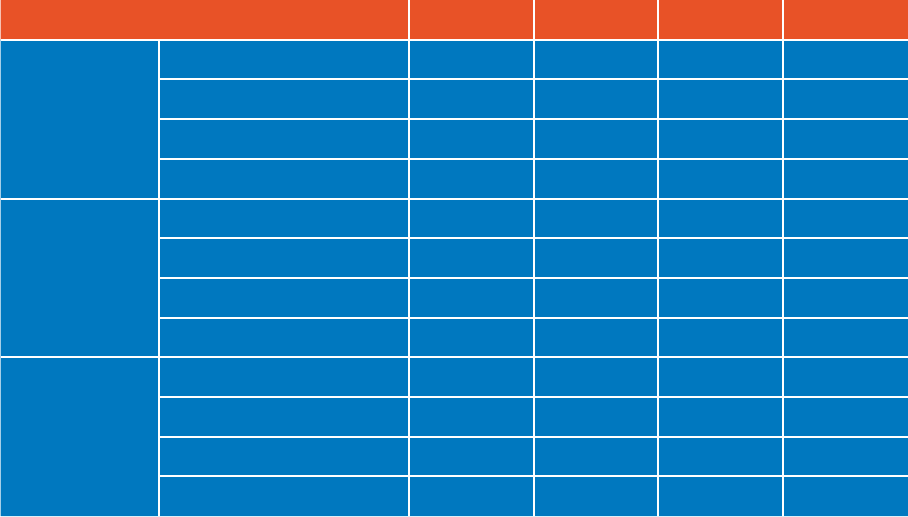
89
Table 24
Direct economic impact of HETV on video platforms
2016 2017 2018 2019
Digital video
Value of HETV (£m) 167.8 482.1 563.8 852.9
Employment (FTEs) 50 150 180 290
CoE (£m) 5.5 16.1 19.3 30.5
GVA (£m) 20.3 59.1 70.6 111.7
Physical video
Value of HETV (£m) 42.4 73.8 52.0 54.7
Employment (FTEs) 240 420 280 300
CoE (£m) 5.2 9.3 6.5 7.3
GVA (£m) 6.4 16.0 11.6 12.8
Total
Value of HETV (£m) 210.2 555.9 615.8 907.6
Employment (FTEs) 290 570 460 590
CoE (£m) 10.7 25.4 25.8 37.8
GVA (£m) 26.7 75.0 82.2 124.5
Source: Olsberg•SPI/Nordicity estimates based on data from the BFI, Omdia, ABS, Attentional, BARB, public nancial reports
and ASHE
Notes:
Figures may not sum to totals due to rounding
See Appendix 3 for description of methodology
5.3.5. Summary of direct economic impact
Combining the estimates of economic activity from the four components of the value chain, it can
be concluded that the HETV sector generated 28,760 FTEs of direct employment, £1.27 billion in
direct employment compensation and £1.80 billion in direct GVA in 2019 (Table 25).

90
Table 25
Summary of direct economic impact of HETV across the value chain
Production Distribution TV
broadcast
Video
platforms
†
Total
Employment
(FTEs)
2016 12,320 40 1,300 290 13,950
2017 15,250 100 2,680 570 18,600
2018 16,410 270 2,630 460 19,770
2019 24,780 340 3,050 590 28,760
CoE (£m)
2016 473.9 4.0 63.2 10.7 552.0
2017 594.7 18.5 126.1 25.4 764.6
2018 674.4 24.5 129.9 25.8 854.6
2019 1,008.0 33.8 189.5 37.8 1,269.1
GVA (£m)
2016 563.8 19.8 206.9 26.7 817.3
2017 707.5 82.2 252.1 75.0 1,116.8
2018 802.4 105.0 194.8 82.2 1,184.3
2019 1,199.2 167.7 307.2 124.5 1,798.7
Source: Olsberg•SPI/Nordicity estimates based on data from the BFI, BARB, Ofcom, Omdia, ABS, public nancial reports and
ASHE
Notes:
Figures may not sum to totals due to rounding
See Appendix 3 for description of methodology
† Includes physical video sales and rentals, and digital video platforms (ie VoD/SVoD/TVoD)
5.4. Total economic impact
As with the other sectors in this study, the various segments of the HETV value chain – from
production to video platforms – generate indirect impacts through the purchase of services and
supplies, and induced impacts through the re-spending of wages by those employed in the
direct and indirect impact phases.
The total economic impact is equal to the sum of the direct, indirect and induced impacts.
To identify the indirect and induced impacts of HETV production spending – as with film – a
bespoke model was generated through Office for National Statistics (ONS) input-output (I-O)
tables. For this approach, the goods and services purchased by a generic HETV production
were categorised and put into a model derived from ONS data. The impact of these purchases
was then estimated, industry by industry, to identify the incremental employment, employment
compensation, and GVA that would be generated, using the ONS tables to identify the
connections among the various sectors of the UK economy.
109
109. This approach is detailed in Appendix 3

91
This model indicated that HETV generated a total economic impact of 64,310 FTEs, £2.34 billion
in employment compensation and £3.67 billion in GVA (Table 26).
Table 26
Total economic impact generated by HETV throughout all parts of the value chain, 2019
Production Distribution TV
broadcast
Video
platforms
†
Total
Employment
(FTEs)
Direct 24,780 340 3,050 590 28,760
Indirect 14,550 2,040 2,810 2,730 22,130
Induced 9,830 860 1,310 1,420 13,420
Total 49,160 3,240 7,170 4,740 64,310
CoE (£m)
Direct 1,008.0 33.8 189.5 37.8 1,269.1
Indirect 397.0 60.4 86.2 80.2 623.8
Induced 351.2 24.9 35.4 38.2 449.7
Total 1,756.2 119.2 311.1 156.2 2,342.6
GVA (£m)
Direct 1,199.2 167.7 307.2 124.5 1,798.7
Indirect 760.7 113.3 169.9 161.9 1,205.8
Induced 490.5 45.4 64.4 69.6 669.9
Total 2,450.3 326.4 541.5 356.0 3,674.3
Source: Olsberg•SPI/Nordicity estimates based on data from the BFI, Attentional, BARB, Ofcom, Omdia, ABS, public nancial
reports and ASHE
Notes:
Figures may not sum to totals due to rounding
See Appendix 3 for description of methodology
† Includes physical video sales and rentals, and digital video platforms (ie VoD/SVoD/TVoD)
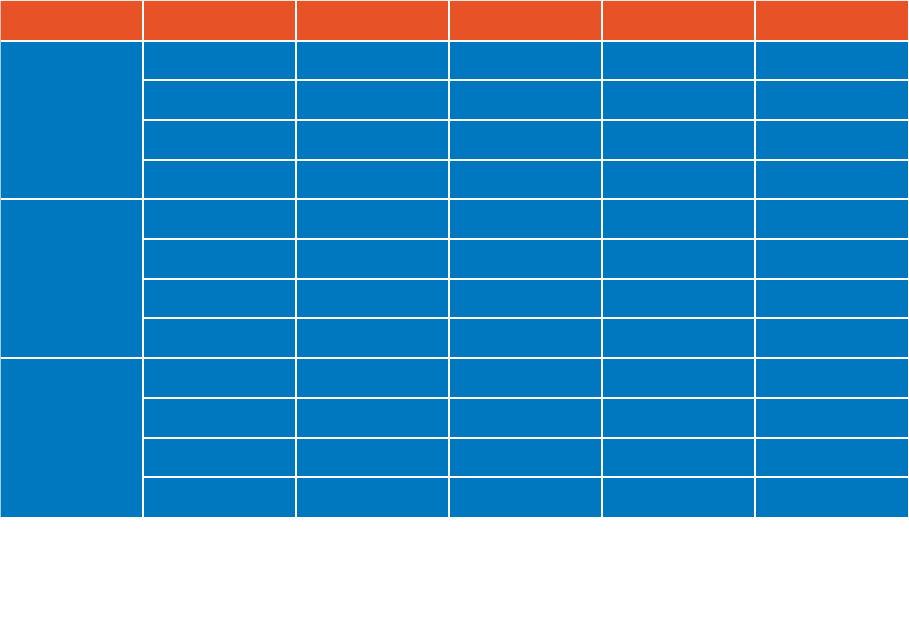
92
5.5. Time series statistics
As with the film sector, an analysis of trends was undertaken (Table 27). This analysis shows the
employment generated by HETV increased by over 20,000 FTEs between 2017 and 2019. Over
that period, the GVA impact of HETV increased by 63.8%.
Table 27
Time series impact data, HETR-supported programming throughout all parts of the
value chain, 2016-2019
2016 2017 2018 2019
Employment
(FTEs)
Direct 13,950 18,600 19,770 28,760
Indirect 9,200 13,820 14,550 22,130
Induced 5,760 8,340 8,900 13,420
Total 28,910 40,760 43,220 64,310
CoE (£m)
Direct 552.0 764.6 854.6 1,269.1
Indirect 242.7 376.0 413.7 623.8
Induced 188.9 269.8 300.8 449.7
Total 983.6 1,410.4 1,569.1 2,342.6
GVA (£m)
Direct 817.3 1,116.8 1,184.3 1,798.7
Indirect 462.7 725.0 799.1 1,205.8
Induced 273.9 401.2 448.0 669.9
Total 1,553.9 2,242.9 2,431.5 3,674.3
Source: Olsberg•SPI/Nordicity estimates based on data from the BFI, Attentional, BARB, Ofcom, Omdia, ABS, public nancial
reports and ASHE
Notes:
Figures may not sum to totals due to rounding
See Appendix 5 for additional historical statistics

93
5.6. Spillover impacts
Similar to film, there are spillovers to other sectors from the HETV sector. In this section, the
economic impact of HETV spillovers on the tourism sector are presented.
5.6.1. Inbound tourism
With the global popularity of UK-made HETV shows, such as Game of Thrones, Outlander,
Shetland, Poldark and Peaky Blinders, overseas tourism to filming locations in the UK is strong.
As an example, Tourism NI has estimated that because of Game of Thrones 350,000 leisure
visitors – or one in six – visit Northern Ireland annually, spending in excess of £50 million.
110
According to data from the West Midlands Growth Company reported in The Guardian,
Birmingham’s visitor numbers increased by 26% between 2013 – when the first season of Peaky
Blinders aired on the BBC – and 2018.
111
As with film, the methodology used in the 2015 equivalent and 2018 edition of Screen Business
was updated with the most recently released data to estimate the economic impact of HETV
tourism. This addresses only non-UK tourists coming to the UK.
In 2017, inbound tourists spent an estimated £344.6 million in HETV-related screen tourism in
the UK. This is estimated to have increased to £499.7 million in 2019. This spending generated
7,560 FTEs of total employment (ie including direct, indirect and induced impacts) in 2017,
increasing to 10,310 FTEs in 2019. The GVA impact of HETV-related screen tourism was an
estimated £346.7 million in 2017, increasing to £502.7 million in 2019. This economic activity
yielded an estimated £109.0 million in tax revenue in 2017, increasing to £158.1 million in 2019.
Table 28
Economic impact of HETV-related screen tourism, 2016-2019
2016 2017 2018 2019
Spending (£m) 266.5 344.6 426.1 499.7
Total employment impact (FTEs)
1
5,990 7,560 9,100 10,310
Total GVA impact (£m)
1
268.1 346.7 428.7 502.7
Total tax revenue impact (£m)
1
84.3 109.0 134.8 158.1
Source: Olsberg•SPI/Nordicity estimates
Note:
1. Includes direct, indirect and induced economic impacts
110. Building the Value of Tourism. Tourism NI Annual Review, 2019. Accessible at: https://www.tourismni.com/globalassets/about-tour-
ism-ni/tourism-ni-annual-review/the-value-of-tourism-2019-review.pdf
111. This article also quotes Andy Street, Mayor of the West Midlands: ‘The Peaky effect is really gaining momentum here, with tours
and events in the West Midlands selling out months in advance. Record numbers of tourists are now visiting the region, with many people
wanting to explore the places and stories associated with the show.’ Peaky Blinders mania puts Birmingham on global ‘screen tourism’
map. The Guardian, 2 September 2019. Accessible at: https://www.theguardian.com/uk-news/2019/sep/02/peaky-blinders-mania-
birmingham-screen-tourism-boom
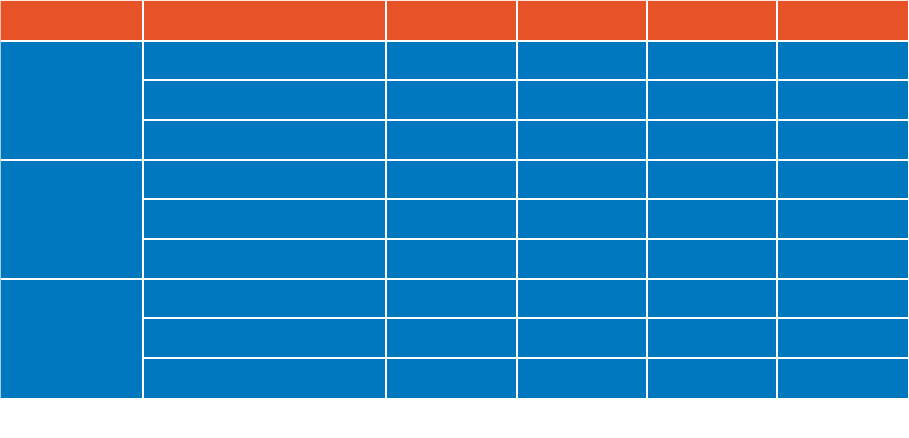
94
5.7. Overall economic contribution
Bringing together the impacts throughout all parts of the value chain and spillovers, the overall
economic contribution identified as a result of UK HETV production supported by tax relief in
2019 generated 74,620 in FTEs, £4.18 billion in GVA and £1.26 billion in tax revenue for the UK
(Table 29).
Table 29
Summary of overall economic contribution of UK HETV sector supported by tax relief,
2016-2019
2016 2017 2018 2019
Employment
(FTEs)
Total economic impact 28,910 40,760 43,220 64,310
Spillover impacts 5,990 7,560 9,100 10,310
Total 34,900 48,320 52,320 74,620
GVA (£m)
Total economic impact 1,553.9 2,242.9 2,431.5 3,674.3
Spillover impacts 268.1 346.7 428.7 502.7
Total 1,822.0 2,589.6 2,860.2 4,177.0
Tax revenue
(£m)
Total economic impact 413.3 667.7 743.3 1,105.0
Spillover impacts 84.3 109.0 134.8 158.1
Total 497.6 776.7 878.1 1,263.1
Source: Olsberg•SPI/Nordicity estimates

95
5.8. Impact of High-end Television Tax Relief
The creation of HETV content generated an estimated £1.26 billion in tax revenue in 2019,
including £167.1 million in VAT on video platforms subscriptions and transactions, and just under
£1.1 billion in other taxes (Income Tax, NIC, Corporation Tax).
112
Table 30
HM Treasury revenue generated by HETV content, 2016-2019 (£m)
2016 2017 2018 2019
Direct VAT 35.7 95.7 108.3 167.1
Direct 216.6 310.2 343.1 500.9
Indirect 94.2 156.6 174.0 261.2
Induced 66.8 105.1 117.9 175.8
Spillovers 84.3 109.0 134.8 158.1
Total 497.6 776.7 878.1 1,263.1
Source: Olsberg•SPI/Nordicity estimates based on data from the BFI, Attentional, BARB, Ofcom, Omdia, ABS, IDBR, BRES,
CAA, public nancial reports, ASHE, ONS and HM Revenue & Customs (HMRC)
Notes:
Figures may not sum to totals due to rounding
See Appendix 3 for methodology
To assess the impact of HETR, a survey of production companies was conducted to ascertain
the portion of HETV production that would have occurred in the absence of HETR and, therefore,
the rate of additionality applicable to the existing level of HETV production. This survey research
indicated an additionality rate of 84%, which was applied to the production sub-sector, while
other sub-sectors were discounted to reflect their lower net additionality.
113
Based on the net additionality rates applied to all sub-sectors, HETR outlays in 2019 yielded a
RoI of £6.44 in terms of GVA. This means that each pound of HETR yielded £6.44 of GVA for the
UK economy during 2019.
While total expenditure increased significantly between 2018 and 2019, RoI actually decreased
between 2018 and 2019. This is due to the lag between production and the economic impact of
screen tourism. The economic model created for Screen Business accounts for the lag between
production and its subsequent effects on generating tourism. This results in reduced RoI
because tax relief is being paid out on increased production in the short term, while one of the
key sources of additional economic benefit – screen tourism – is not yet appearing as a return in
the model.
112. See Appendix 3 for details of tax revenue calculation
113. See Appendix 3 for details of the discounted additionality rate

96
Table 31
HETR return on investment, 2016-2019
2016 2017 2018 2019
Total expenditures (£m) 977.2 1,226.1 1,390.6 2,078.3
Tax relief outlays (£m)
1
195.4 245.2 278.1 415.7
Additional GVA (£m) 1,169.2 1,635.6 1,869.6 2,676.6
GVA RoI
2
(£) 5.98 6.67 6.72 6.44
Source: Olsberg•SPI/Nordicity estimates based on data from the BFI, Attentional, BARB, Ofcom, Omdia, ABS, IDBR, BRES,
public nancial reports, ASHE, ONS and HMRC
Notes:
1. Estimated at 20% of total expenditures
2. RoI is measured as pound returned per £1 of tax relief and takes into account the net impacts and tax relief outlays in the
specic year

97
THE VIDEO
GAMES SECTOR
6

98
6.1. Context and key findings
Note
Following the 2018 edition of Screen Business, this represents the second evaluation
of VGTR undertaken. This has provided further opportunity to consider the difference in
development processes between the video games and film and television sectors.
Due to the video game development process, and the way in which the VGTR is used by
developers, there can be a very significant lag in reporting and it can take several years
for actual expenditure figures to consolidate. On information currently available from the
BFI, the profile of video games expenditure supported by the tax relief therefore gives a
false impression of an expenditure decline.
Because of this, it is currently not possible to present accurate figures on the annual
expenditure supported by VGTR from 2017-2019 using the same economic impact
methodology used for the other screen sectors. It has therefore been necessary to
implement a different methodology.
To calculate impacts, theyear-to-year growth in VGTR payments reported by HMRC
for 2016/17 to 2018/19 (accrual basis) was applied to the total development spending
supported by VGTR in 2016 (as reported by the BFI) to estimate the levels of VGTR-
supported development spending in 2017, 2018 and 2019.
The methodology for measuring additionality for VGTR was also harmonised with the
approach used for other tax reliefs in this study. This has resulted in a lower RoI that is
not directly comparable to the previous edition of Screen Business.
The methodology is outlined in Appendix 3.
Note: 2016 data have been revised from the previous edition ofScreen Businessto
account for updates in projects tracked by the BFI since publication.
The video games sector is a significant component of the UK screen landscape, with UK-made
video games – such as Red Dead Redemption 2, Forza Horizon 4, Hellblade: Senua’s Sacrifice,
Elite Dangerous, Rust and the Football Manager series – making major commercial and
cultural impacts.
The UK Government introduced Video Games Tax Relief (VGTR) from April 2014.
114
In 2017,
expenditure on video games development supported by VGTR was an estimated £700.8 million.
In 2018, it was estimated to be £791.0 million and in 2019 it was an estimated £860.4 million.
In 2019, total turnover in the sector was estimated at £2.77 billion – of which an estimated
£860.4 million was devoted to development spending that accessed VGTR.
115
In 2019, VGTR-supported video games development directly contributed £559.3 million to the
UK’s GDP and 5,390 full-time equivalent (FTE) jobs.
114. Video games tax relief passes final hurdle. Gov.uk webpage, 27 March 2014 and updated 7 April 2014. Accessible at: https://www.
gov.uk/government/news/video-games-tax-relief-passes-final-hurdle
115. Figure of £2.77 billion drawn from analysis of companies in Ukie’s UK Games Map

99
Throughout all parts of the value chain in 2019, this VGTR-supported spend generated
£592.7 million in direct gross value added (GVA), and 5,640 direct full-time equivalent (FTE) jobs.
Including indirect and induced impact across the value chain, the VGTR-supported sector
generated an estimated 15,030 FTEs and £1.06 billion in GVA in 2019.
The major source of spillover effects from the sector is to the retail sector, through related
merchandise (as opposed to the sales of video games themselves). Bringing in these spillovers,
the total economic contribution of VGTR-supported games rises to 15,130 FTEs, with
£1.07 billion in GVA contributions in 2019.
VGTR-supported development generates strong returns for HM Treasury. In 2019, each pound of
VGTR granted leveraged an additional £1.72 in economic activity for the UK economy.
The sector is also a driver of cutting-edge innovation in areas such as artificial intelligence, virtual
reality and augmented reality and the fast-growing global esports arena. The impact of video
games innovations also extends into other screen sectors – such as the use of video game
engine technology in film and television production.
116
Video games also innovate by creating
new forms of storytelling and story engagement.
117
6.2. Value chain overview
As with the other sectors in this study, a value chain model has been used to analyse the impact
of content produced through VGTR.
118
This value chain begins with the development stage,
through which studios – both independent and publisher-affiliated – conceive ideas for video
games and build these through programming and artistic design.
This generally requires the engagement of publishers who purchase the rights to sell video
games at an early stage of development, providing finance for the making of the project.
There is also increasing use of self-publishing by developers, and digital platforms have enabled
many more businesses to self-publish – particularly at the smaller scale. Nevertheless, publishers
remain a critical part of the marketplace and many larger publishers may also have in-house or
wholly-owned development studios.
The final component of the value chain is supply and consumption, the stage at which the
purchaser – or player – acquires or accesses the video game. Digital distributors and storefronts
such as Steam, the App Store and Google Play are the norm for the video games sector and
comprise the majority of UK consumer spend.
116. See virtual production case study in Section 14.3. While not examined in this study, video games innovations can also impact other
sectors such as transport and health
117. A case study of Media Molecule’s Dreams is included in Section 14.5.
118. A wider analysis of the impact of the UK video games sector – including non-VGTR supported production – can be found in
Appendix 1

100
However, unlike other sectors in this study, digital platforms play an additional role in the video
games market. While films and television programmes are generally not altered after release,
digital platforms have allowed games to shift to include a “post launch” development cycle, in
which improvements, adaptations and new content can continue to be provided to the player
after the point of purchase.
Consumption platforms are based around the European Union, using the single market to sell
into all EU and EEA jurisdictions. As such, the economic contribution of those platforms based
outside the UK to the UK economy in the period covered by this study may be negligible, unlike
those based in the UK.
119
Despite this, their impact has been evaluated in order to maintain
consistency with the other sectors.
Figure 21
Video games sector value chain
Consumption
Development
- Conception,
coding and
rendering of
video game
content
Boxed physical retail
Digital and online
(download, subscription,
and in-app purchases)
Consumer
sales
channels
and
platforms
Publishing
- Distribution
and marketing
of nished
video game
product
-Financing
of game
development
Mobile
(download to own,
in-app purchases)
User feedback for iterative
development process (eg mobile
apps, online games)
Although VGTR is an important support measure within the UK’s video games sector, some
video games projects do not access VGTR for various reasons. This may relate to the fact that
a project is not eligible for the tax relief, or that developers may opt instead to use the UK’s
Research and Development Tax Relief.
120
As such, an analysis has also been undertaken to consider the value of the non-tax relief video
games sector, which is included in Appendix 1.
119. The UK was a member of the European Union during the period covered by this study and thus platforms utilised the Single Market
to sell into the UK
120. Companies can choose to use either one of these tax reliefs for certain aspects of spending, but cannot use both

101
6.3. Direct impact
6.3.1. Development
To estimate the total value of spending, employment, compensation of employment (CoE) and
gross value added (GVA) associated with VGTR, data from Ukie’s UK Games Map was combined
with research originally conducted by Ortus Economic Research (Ortus) for 2016 and updated by
Olsberg•SPI and Nordicity, granular company research from Ukie, and the results of video games
sector research conducted by Nordicity for the Entertainment Software Association of Canada
(ESAC):
121
• The UK Games Map provided a detailed list of companies engaged in video games
development in the UK
• Data provided by Ortus Economic Research was combined with research conducted by
Olsberg•SPI, Nordicity and Ukie to assign actual or estimated levels of employment and GVA
to each company for 2016
• For 2017 to 2019, Olsberg•SPI, Nordicity and Ukie conducted research to assign actual or
estimated levels of employment and GVA to each company
• These company-based statistics were aggregated to arrive at annual estimates of GVA. For
2019, GVA was estimated at £1.80 billion
• Survey research conducted for ESAC indicated that the average GVA-to-turnover ratio
among video games developers located in Canada was 0.66 in 2016.
122
For 2017 to 2019,
the GVA-to-output ratio reported by the Office for National Statistics (ONS) for SIC 62.01/1,
Ready-made interactive leisure and entertainment software development was used. Based
on these GVA ratios, overall revenue in the UK’s development sub-sector was an estimated
£2.77 billion in 2019
The UK Games Map and the associated company research conducted by Ortus, Ukie,
Olsberg•SPI and Nordicity also indicated that development companies in the UK employed
17,937 people in 2019. This total employment was converted to FTEs using a conversion factor
of 0.97.
123
In total, therefore, video games development generated an estimated 17,350 FTEs of
direct employment across the whole sector in 2019.
Based on statistics published by the BFI and HM Revenue & Customs (HMRC), an estimated
£860.4 million was spent in the UK on the development of video games in 2019 supported by
VGTR, representing 31% of the total estimated turnover (£2.77 billion) of the UK video games
development sub-sector that year.
124
121. The UK Games Map is available at: https://gamesmap.uk
122. Although this ratio was derived from survey data from outside the UK, the assumption is that the global nature of the video games
development sector implies a congruence of business models and cost structures across peer jurisdictions such as the UK and Canada
123. Employment statistics published by BRES for 2016 indicate that part-time employees in SIC 6201/1, Ready-made interactive leisure
and entertainment software development, accounted for 6.5% of total employment. When these part-time employees are given a 50%
weight, the implication is that the sector employs 0.97 FTEs for each employee
124. As outlined in Section 6.1., the year-to-year growth in VGTR payments reported by HMRC for 2016/17 to 2018/19 (accrual basis)
was applied to the total development spending supported by VGTR in 2016 (as reported by the BFI) to estimate the levels of VGTR-
supported development spending in 2017, 2018 and 2019. This approach was required because of the lag in reporting of VGTR activity to
the BFI on account of the typical length of VGTR projects

102
The direct economic contribution generated by the development of VGTR-supported titles was
estimated by applying their pro-rata share of total development spend (ie 31% of £2.77 billion) to
the estimates of total employment, employment compensation and GVA across all video games
development companies. Based on this approach, the development of VGTR-supported video
games generated 5,390 FTEs of direct employment, £294.8 million in employment compensation
and £559.3 million in direct GVA in 2019 (Table 32).
Table 32
Direct economic impact of VGTR-supported video games development, 2016-2019
2016 2017 2018 2019
UK spend (£m) 624.5 700.8 791.0 860.4
Employment (FTEs) 6,910 5,550 5,670 5,390
CoE (£m) 368.1 280.7 310.8 294.8
GVA (£m) 412.2 567.6 585.3 559.3
Source: the BFI and Olsberg•SPI/Nordicity estimates based on data from HMRC, Ukie, Ortus, Dun & Bradstreet (D&B) and the
Annual Business Survey (ABS)
Notes:
VGTR spend estimated for 2017-2019
For UK spend estimates, the entire development spending for a project is assigned to the calendar year in which the
development project started, even if that development spending spans multiple calendar years. In contrast, the GVA estimates
reect estimates of the GVA generated by games developers within the specic calendar year.
6.3.2. Publishing
According to Ukie research, in 2019 UK consumers spent over £3.86 billion on the purchase
of video games – through both digital and physical sales.
125
As with the development sub-
sector, the UK Games Map was used in combination with research conducted by Olsberg•SPI,
Nordicity, Ukie and Ortus to estimate the total employment, employment compensation and GVA
in the publishing sub-sector:
• The UK Games Map provided a detailed list of companies engaged in video games publishing
in the UK
• Data provided by Ortus was combined with research conducted by Olsberg•SPI, Nordicity and
Ukie to assign actual or estimated levels of employment and GVA to each company for 2016
• For 2017 to 2019, Olsberg•SPI, Nordicity and Ukie conducted research to assign actual or
estimated levels of employment and GVA to each company
• These company-based statistics were aggregated to arrive at an estimate of 3,773
employees in the publishing sub-sector in 2019. This figure was converted to 3,430 FTEs
using an FTE conversion factor of 0.91
125. UK Video Games Market: 2019 Stats. Ukie, 2021. Accessible at: https://ukiepedia.ukie.org.uk/index.php/UK_Video_Games_Mar-
ket#2019_Stats

103
• The average full-time salary in SIC 5821, Publishing of computer games (£47,325) in 2016
was adjusted for annual consumer price index (CPI) inflation to arrive at an average full-time
salary of £50,517 in 2019. This 2019 average full-time salary was adjusted to account for
social security costs to arrive at an average FTE cost of £57,134.
126
The total number of direct
FTEs (3,430) was multiplied by the average FTE cost (£57,134) to estimate direct employment
compensation of £196.0 million in 2019
• These company-based statistics were aggregated to arrive at an estimate of £706.6 million in
total GVA in 2019
A title-by-title review of video games sales in the UK conducted by Ukie concluded that UK-
made video games had an overall market share of 14.1% across the digital and physical sales
parts of the value chain in 2019. This estimated revenue market share (14.1%) was used to
apportion total consumer sales between UK-made and non-UK titles, as well as the economic
contribution.
In 2019, UK-made video games accounted for £548 million in consumer sales in the UK. Within
the publishing sub-sector, UK-made video games accounted for 410 FTEs of direct employment,
£23.4 million in direct employment compensation and £84.8 million in direct GVA.
The share of total UK development spend associated with VGTR-supported projects in 2019
(31%) was used as a proxy to apportion the value of sales of UK-made titles between VGTR and
non-VGTR video games. This ratio was applied to the 14.2% apportionment of video games
sales in the UK during 2019, to estimate the contribution of VGTR-supported titles within the
publishing sector.
Table 33
Direct economic impact of VGTR-supported games in the publishing sub-sector in the
UK, 2016-2019
2016 2017 2018 2019
Employment (FTEs) 200 120 220 130
CoE (£m) 10.7 6.6 12.4 7.4
GVA (£m) 45.5 30.7 53.6 26.3
Source: Ukie, GfK, Kantar World Panel, Superdata, and Olsberg•SPI/Nordicity estimates based on data from HMRC, Ukie,
Ortus, D&B, and ABS
126. The average full-time salary in SIC 5821 was obtained from the Annual Survey of Employment and Hours (ASHE). The social security
adjustment factor was obtained from employment cost statistics for SIC 5821 published in the ABS

104
6.3.3. Digital retail
According to statistics published by Ukie, UK consumers spent £3.19 billion on video games
purchased through digital channels in 2019.
127
Ukie research shows that, of this total,
£1.98 billion was spent on online downloads and subscriptions (PC and console), and
£1.21 billion was spent on download-to-own apps and in-app purchases for mobile phones
and tablets (mobile).
128
According to research conducted by Ukie, UK-made games accounted for a 14.7% share of the
UK digital market in 2019, accounting for an estimated £468.9 million in UK sales in 2019.
129
Table 34
UK consumer spending on digital sales of video games, 2016-2019
2016 2017 2018 2019
UK-made games 403.1 333.8 388.0 468.9
Other games (£m) 1,811.9 2,336.3 2,792.0 2,721.1
Total (£m) 2,215.0 2,670.0 3,180.0 3,190.0
UK-made games market
share (est.)
18.2% 12.5% 12.2% 14.7%
Source: Ukie and Superdata
To estimate the domestic impact of digital sales, employment data for certain small digital
platform companies based in the UK was obtained along with data on the UK’s share of global
workforce at the leading online global games platforms for which public financial information is
readily available (for example, Apple Inc., Alphabet Inc. [Google] and Amazon.com Inc.).
130
The results of this approach indicated that the digital sales of UK-made video games generated
40 FTEs of direct employment, £1.8 million in direct employment compensation and £3.7 million
in direct GVA in 2019.
131
Applying the 31% development spend ratio (see above) to these figures, it was found that VGTR-
supported video games accounted for an estimated 10 FTEs of direct employment, £0.6 million
in direct employment compensation and £1.1 million in direct GVA in 2019.
127. 2019 UK Consumer Games Market Valuation, Ukie, Accessible at: https://ukiepedia.ukie.org.uk/index.php/2019_UK_Consumer_
Games_Market_Valuation
128. 2019 UK Consumer Games Market Valuation, Ukie, Accessible at: https://ukiepedia.ukie.org.uk/index.php/2019_UK_Consumer_
Games_Market_Valuation
129. Direct digital sales data were not available for PC games, so Ukie used Valve’s annual published list of the top 100 best-selling
games on Steam for a given year. Games were separated into categories of Platinum, Gold, Silver and Bronze. Points were awarded to
UK games appearing within each tier and an estimate of the UK’s market share was calculated in this way. Points assigned to each tier
were calculated by using the relative proportions of peak simultaneous players that Valve uses to separate the tiers in their Top 100 Most
Played Games annual list. Note that all of Steam’s data were for worldwide user purchases and activity
130. Data from public financial reports published by the multinational companies and by Companies House indicated that – after adjusting
for their respective shares of global games platform market – their UK operations accounted for 4.1% of their global workforce
131. See Appendix 1 for estimates of the economic impact of all digital sales in the UK – including video games developed inside and
outside the UK

105
Table 35
Direct economic impact of digital sales of VGTR-supported video games in the UK,
2016-2019
2016 2017 2018 2019
Sales (£m) 201.2 128.4 146.5 145.5
Employment (FTEs) 10 10 10 10
CoE (£m) 0.8 0.5 0.6 0.6
GVA (£m) 1.8 1.1 1.2 1.1
Source: Olsberg•SPI/Nordicity estimates based on data from HMRC, Ukie, Superdata, Kantar World Panel, ABS and ASHE
6.3.4. Physical retail
In addition to this digital spend, data from Ukie, Kantar World Panel and GfK show that
£658.0 million was spent on physical sales of video games in the UK during 2019. These data
showed that, of this total, £603.0 million was spent on new boxed software, and £55.0 million on
pre-owned software.
The 14.9% physical market share ratio was applied to these 2019 sales figures, implying a UK
market share of £79.0 million in the physical sales space, of which £72.4 million was on original,
and £6.6 million on pre-owned content (Table 36).
Table 36
UK consumer spending on physical sales across all video games and UK-made video
games, 2016-2019
2016 2017 2018 2019
UK-made games 132.0 106.9 162.6 79.0
Other games 754.0 784.1 675.4 579.0
Total 886.0 903.6 838.0 658.0
UK-made games’ market share 14.9% 12.0% 19.4% 12.0%
Source: Ukie, Kantar World Panel and GfK
To quantify the employment, employment compensation and GVA impacts resulting from digital
sales of UK-made video games, sales figures were analysed using the GVA-turnover ratios in SIC
47.63, Retail sale of music and video recordings in specialised stores for physical sales.
The results of this analysis indicated that the physical sales of UK-made video games generated
360 FTEs of direct employment, £8.6 million in direct employment compensation and
£19.3 million in direct GVA in 2019.
Applying the 31% development spend ratio to these figures, it was found that VGTR-supported
video games accounted for an estimated 110 FTEs of direct employment, £2.7 million in direct
employment compensation and £6.0 million in direct GVA in 2019.
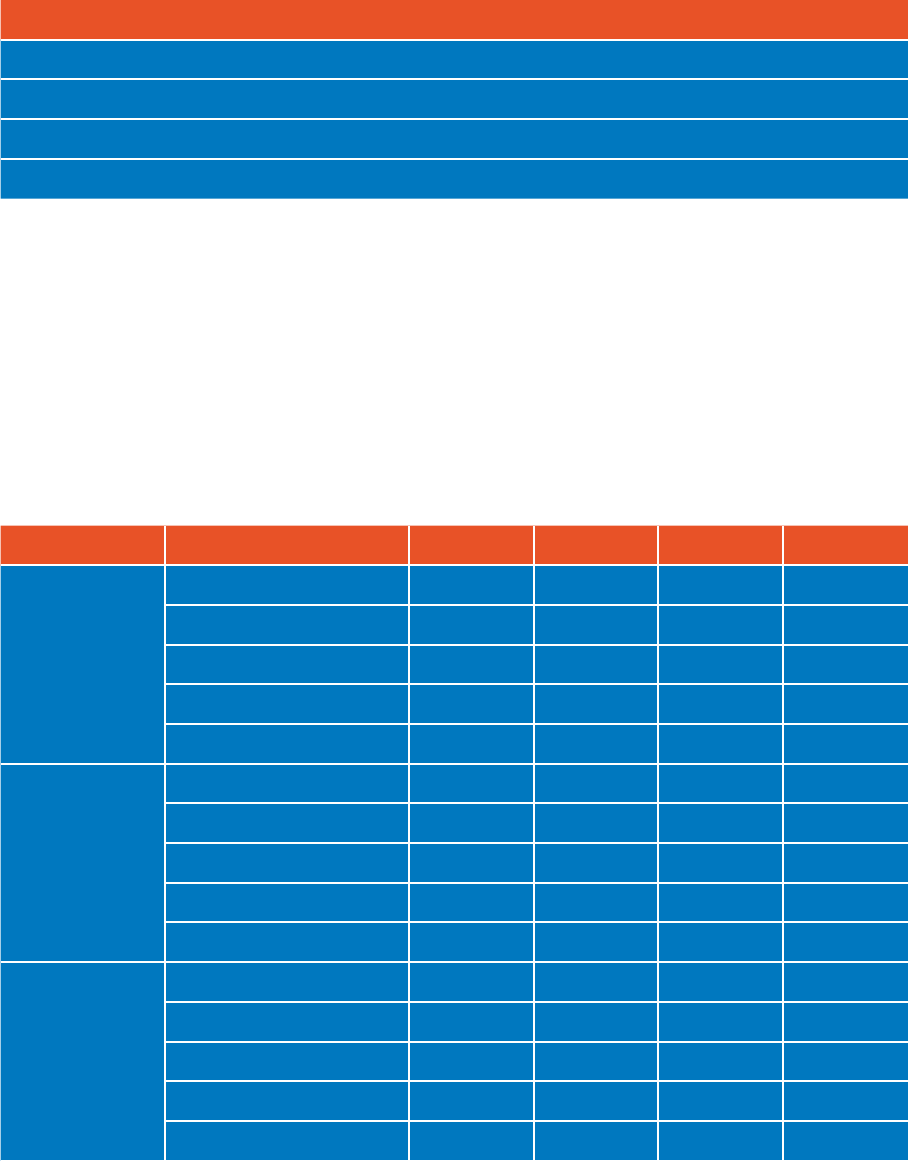
106
Table 37
Direct economic impact of physical sales of VGTR-supported video games in the UK,
2016-2019
2016 2017 2018 2019
Sales (£m) 65.9 41.1 61.4 24.5
Employment (FTEs) 290 210 290 110
CoE (£m) 6.5 4.6 6.7 2.7
GVA (£m) 9.8 8.1 15.0 6.0
Source: Olsberg•SPI/Nordicity estimates based on data from HMRC, Ukie, Superdata, GfK, Kantar World Panel, ABS
and ASHE
6.3.5. Summary of direct economic impact
Drawing these sub-sectors together, the direct value chain impact of VGTR-supported video
games in 2019 was 5,640 FTEs of direct employment, £305.4 million in direct employment
compensation and £592.7 million in direct GVA (Table 38).
Table 38
Summary of direct economic impact of VGTR-supported video games across the value
chain, 2016-2019
2016 2017 2018 2019
Employment
(FTEs)
Development 6,910 5,550 5,670 5,390
Publishing 200 120 220 130
Digital sales 10 10 10 10
Physical sales 290 210 290 110
Total 7,410 5,890 6,190 5,640
CoE (£m)
Development 368.1 280.7 310.8 294.8
Publishing 10.7 6.6 12.4 7.4
Digital sales 0.8 0.5 0.6 0.6
Physical sales 6.5 4.6 6.7 2.7
Total 386.0 292.4 330.4 305.4
GVA (£m)
Development 412.2 567.6 585.3 559.3
Publishing 45.5 30.7 53.6 26.3
Digital sales 1.8 1.1 1.2 1.1
Physical sales 9.8 8.1 15.0 6.0
Total 469.3 607.5 655.2 592.7
Source: Olsberg•SPI/Nordicity estimates based on data from HMRC, Ukie, Superdata, GfK, Kantar World Panel, ABS, ASHE
and ESAC
Note:
Figures may not sum to totals due to rounding
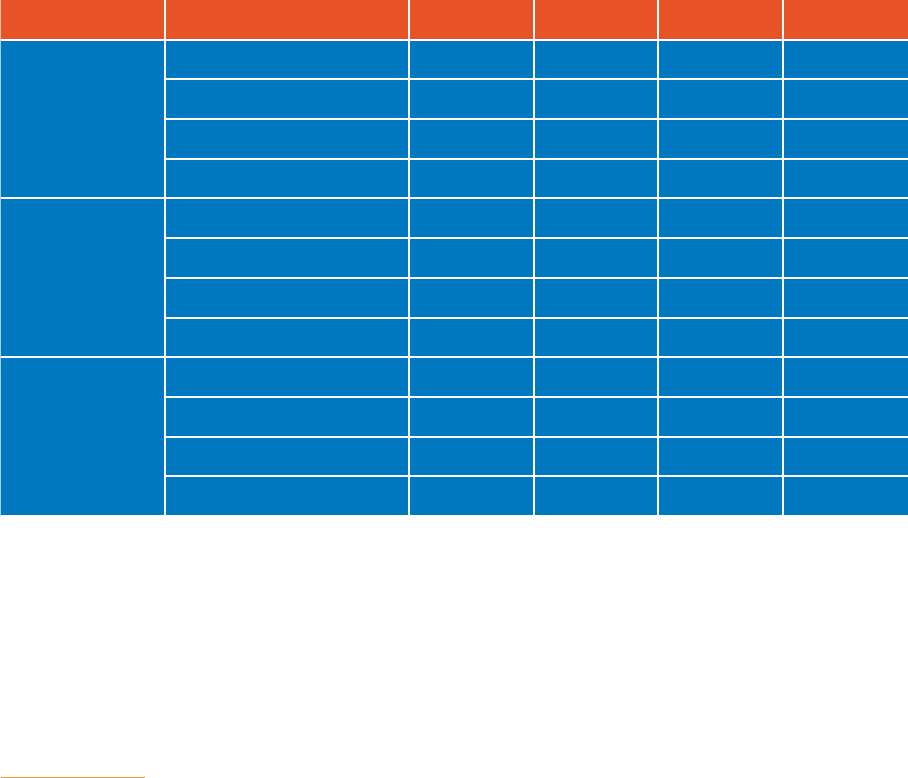
107
6.4. Total economic impact
As with the other screen sectors analysed for this study, the video games sector value chain
generates additional economic impact through its purchases of supplies and services (indirect
impact), and the economic activity of its direct and indirect employees (induced impact).
To estimate the value of these impacts, a bespoke model was generated using ONS sales and
use data. This model tracked the spending from the video games sector through the areas
of the economy from which it makes purchases, allowing for the impact of this spending to
be estimated. This approach also provided an estimate of the labour income arising from the
purchases of supplies and services, which was used to identify indirect impacts through a
modelling of consumer spending.
132
The total economic impact is equal to the sum of the direct, indirect and induced impacts.
The analysis undertaken indicated that the total economic impact of VGTR-supported video
games (including indirect and induced impacts) amounted to 15,030 FTEs, £572.8 million in
employment compensation and £1.06 billion in GVA in 2019 (Table 39).
Table 39
Total economic impact of VGTR-supported video games throughout the value chain,
2016-2019
2016 2017 2018 2019
Employment
(FTEs)
Direct 7,410 5,890 6,190 5,640
Indirect 4,360 2,870 4,500 5,650
Induced 2,910 2,690 3,440 3,740
Total 14,680 11,450 14,130 15,030
CoE(£m)
Direct 386.0 292.4 330.4 305.4
Indirect 129.0 86.2 134.9 166.4
Induced 78.5 72.9 93.0 101.0
Total 593.5 451.5 558.3 572.8
GVA (£m)
Direct 469.3 607.5 655.2 592.7
Indirect 222.0 147.4 230.7 287.6
Induced 143.2 132.6 169.5 183.9
Total 834.5 887.5 1,055.4 1,064.2
Source: Olsberg•SPI/Nordicity estimates based on data from HMRC, Ukie, Superdata, GfK, Kantar World Panel, ABS and
ASHE
Note:
Figures may not sum to totals due to rounding
132. Further details of this approach can be found in Appendix 3
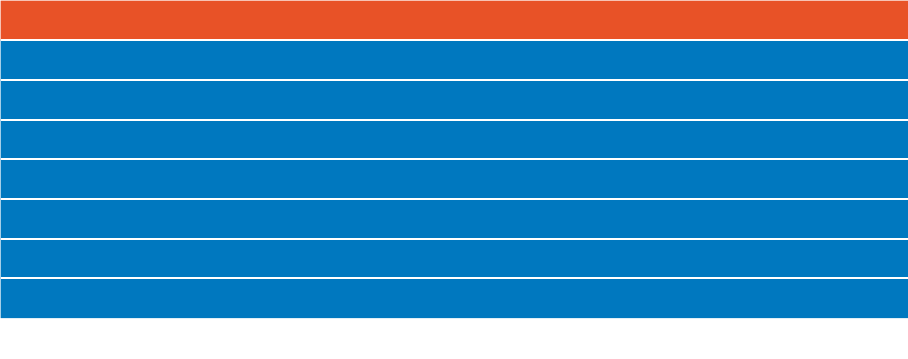
108
6.5. Spillover impacts
6.5.1. Merchandising and events
The major source of spillovers from video games, as in some of the other sectors, is to the retail
sector via merchandise. However, video games-related events also generate spillover impacts.
Ukie publishes an annual valuation of the UK video games market which contains useful data
which helps to calculate this impact. In 2019, games-related merchandise sales and events
generated £146.4 million in revenue in the UK. This total included toys and merchandising sales
(£94.2 million), books and magazine sales (£13.9 million), revenue from movies and soundtracks
(£29.5 million) and events and venues revenue (£8.8 million).
The estimated market share of VGTR titles was then applied to the total annual value of
merchandise and events revenue in the UK to arrive at an estimate of revenue attributable to
VGTR. This ranged from £8.7 million in 2016 to £6.5 million in 2019.
Table 40
Video games-related merchandise and events revenue in the UK attributed to VGTR
(£m, unless indicated otherwise), 2016-2019
2016 2017 2018 2019
Toys and merchandising 66.8 72.9 59.3 94.2
Books and magazines 18.4 18.0 17.8 13.9
Movies and soundtracks 7.8 17.6 23.6 29.5
Events and venues 7.5 8.4 8.9 8.8
Total sales 100.5 117.0 109.6 146.4
VGTR market share (est.) 8.6% 4.8% 5.2% 4.4%
VGTR share of sales 8.7 5.6 5.7 6.5
Source: Ukie, Superdata, NPD, OCC, BPI, the BFI, Nielsen, ABC GfK and Kantar World Panel
The average retail margin for the UK of 30% was then applied to this total share to give an
estimated retail margin of £1.9 million in 2019. ONS-derived ratios for the retail sector were
applied to this to derive other economic impacts, allowing an estimation of 40 FTEs and
£1.2 million in GVA.

109
Table 41
Total economic impact of video games-related merchandise sales in the UK attributed
to VGTR (£m unless indicated otherwise), 2016-2019
2016 2017 2018 2019
Retail sales 8.7 5.6 5.7 6.5
Retail margin 2.6 1.7 1.7 1.9
Employment (FTEs) 60 40 40 40
GVA 1.6 1.1 1.1 1.2
Tax revenue 0.3 0.2 0.2 0.2
Source: Olsberg•SPI/Nordicity estimates based on data from HMRC, Ukie, Superdata, NPD, OCC, BPI, the BFI, Nielsen, ABC
GfK, Kantar World Panel, ABS and ASHE
6.5.2. Esports
Esports is a rapidly-growing element of the video games landscape and involves video games
being played competitively at live events, which can have in-person spectators or be broadcast
or streamed. Esports events can attract significant amounts of spectators.
The economic benefits of esports are counted as a spillover from the UK video games sector
for the purposes of this study on the basis that VGTR contributes to a small extent to the overall
strength of the esports ecosystem in the UK.In fact, the modelling used for this analysis found
that VGTR titles only accounted for 4.4% of GVA generated by the UK’s esports industry in 2019.
While esports growth is not directly driven by VGTR, some titles with esports elements have
accessed VGTR, such as F1
®
2019 and Assetto Corsa Competizione.
133
In 2020, Ukie published the first ever study of the economic value of the esports sector in the
UK.
134
That study found that esports generated economic benefits for the UK through four key
segments:
1. Esports services
2. Streaming platforms
3. Visitor tourism
4. Esports-related employment at games publishing companies
In total, esports generated an estimated 1,210 FTEs and £111.5 million in GVA for the UK
economy in 2019. The esports sector is also estimated to have grown at an average annual rate
of 8.5% between 2016 and 2019.
As with merchandise and events spillovers, the estimated VGTR market share was applied to the
total esports economic impact in each year to arrive at an estimation of the esports impact that
could be attributed to VGTR. Based on this approach, 60 FTEs and £4.9 million in GVA could be
attributed to VGTR in 2019.
133. Assetto Corsa Competizione to Host 2021 British GT Esports Championship. GTPlanet, 3 March 2021. Accessible at: https://www.
gtplanet.net/2021-british-gt-esports-20210303/
134. The value of esports in the UK. A study for Ukie by Olsberg•SPI with Nordicity, October 2020. Accessible at: https://ukie.org.uk/
esportsreport
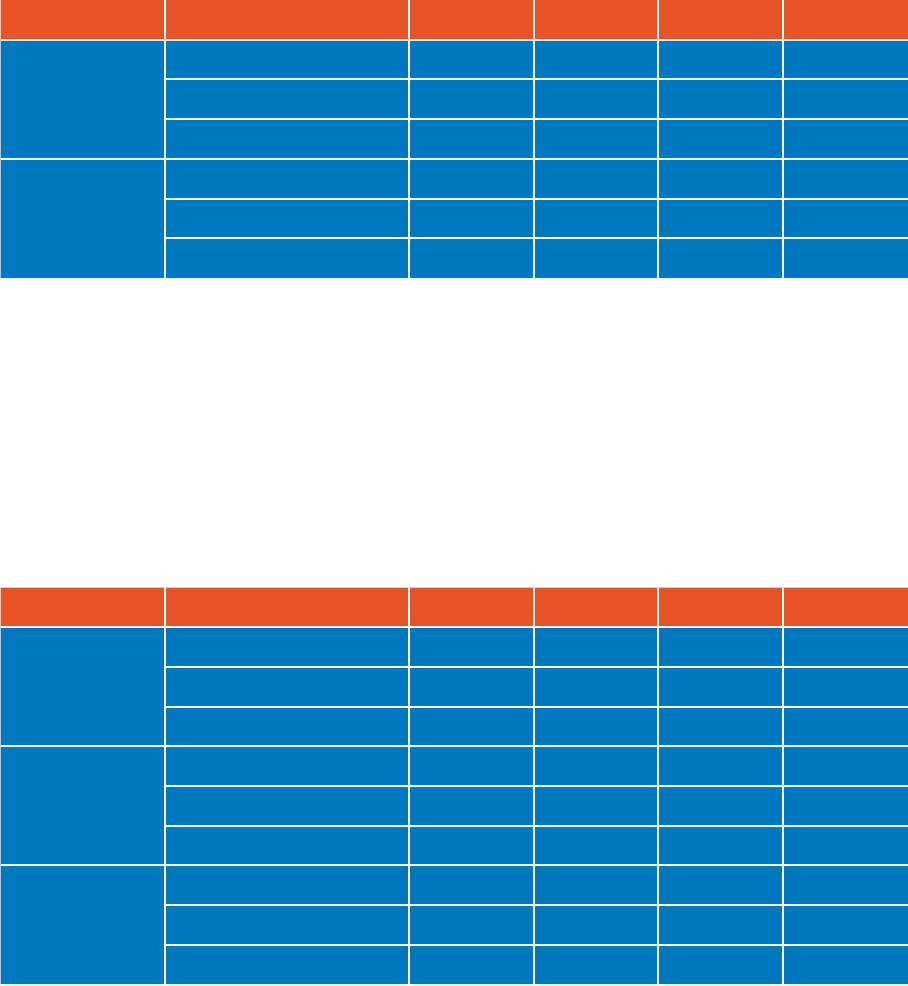
110
Table 42
Total economic impact of the esports sector in the UK, 2016-2019
1
2016 2017 2018 2019
Total
Employment (FTEs) 950 1,030 1,120 1,210
GVA (£m) 87.3 94.7 102.8 111.5
Tax revenue (£m) 20.1 21.8 23.6 25.6
VGTR
attributable
share
Employment (FTEs) 90 50 60 60
GVA (£m) 7.5 4.5 5.3 4.9
Tax revenue (£m) 1.7 1.0 1.2 1.1
Source: Olsberg•SPI/Nordicity estimates based on data from HMRC, Ukie, Newzoo, industry survey (2019/2020), ONS and
interviews with games publishers
Note:
1. Figures for 2016 to 2018 estimated by applying annual average growth rate of 8.5%
6.5.3. Summary
In total, it is estimated that video games sector spillovers attributable to VGTR generated 100
FTEs, £6.1 million in GVA and £1.3 million in tax revenue for the UK economy in 2019.
Table 43
Summary of economic impact of video games sector spillovers in the UK, 2016-2019
2016 2017 2018 2019
Employment
(FTEs)
Merchandise and events 60 40 40 40
Esports 90 50 60 60
Total 150 90 100 100
GVA (£m)
Merchandise and events 1.6 1.1 1.1 1.2
Esports 7.5 4.5 5.3 4.9
Total 9.1 5.6 6.4 6.1
Tax revenue
(£m)
Merchandise and events 0.3 0.2 0.2 0.2
Esports 1.7 1.0 1.2 1.1
Total 2.0 1.2 1.4 1.3
Source: Olsberg•SPI/Nordicity estimates based on data from HMRC, Ukie, Superdata, NPD, OCC, BPI, the BFI, Nielsen, ABC
GfK, Kantar World Panel, Newzoo, industry survey (2019/2020), ONS and interviews with games publishers
Note:
Figures may not sum to totals due to rounding

111
6.6. Overall economic contribution
Including these spillover impacts, the total impact of the entire video games sector in the UK
(including video games developed, published or sold in the UK) amounted to 15,130 FTEs,
£1.07 billion in GVA and £247.7 million in tax revenue in 2019.
135
Table 44
Overall economic contribution of VGTR, 2016-2019
2016 2017 2018 2019
Employment
(FTEs)
Total value chain impact 14,680 11,450 14,130 15,030
Spillover impacts 150 90 100 100
Overall economic
contribution
14,830 11,540 14,230 15,130
GVA (£m)
Total value chain impact 834.5 887.5 1,055.4 1,064.2
Spillover impacts 9.1 5.6 6.4 6.1
Overall economic
contribution
843.6 893.1 1,061.8 1,070.4
Tax revenue
(£m)
Total value chain impact 236.2 196.3 238.9 246.3
Spillover impacts 2.0 1.2 1.4 1.3
Overall economic
contribution
238.3 197.6 240.3 247.7
Source: Olsberg•SPI/Nordicity estimates based on data from HMRC, Ukie, D&B, Ortus Economic Research, Superdata, NPD,
OCC, BPI, the BFI, Nielsen, ABC GfK, Kantar World Panel, Newzoo, industry survey (2019/2020), ONS and interviews with
games publishers
Note:
Figures may not sum to totals due to rounding
6.7. Impact of Video Games Tax Relief
Estimates of the tax revenues likely to have been generated by VGTR-supported video games
development showed that, in 2019, these video games were responsible for £247.7 million in
tax revenue, including £143.9 million in taxation related to direct impacts (including the VAT on
physical sales), and £103.8 million from indirect, induced and spillover impacts.
136
135. Statistics on the overall economic contribution of the entire video games sector in the UK can be found in Appendix 1
136. See Appendix 3 for details of tax revenue calculation

112
Table 45
Tax revenue generated by VGTR-supported video games, 2016-2019
2016 2017 2018 2019
VAT on sales 11.2 7.0 10.4 4.2
Direct 154.7 132.8 149.7 139.8
Indirect 43.0 29.2 44.9 62.9
Induced 27.3 27.3 33.9 39.4
Spillover 2.0 1.2 1.4 1.3
Total 238.3 197.6 240.3 247.7
Source: Olsberg•SPI/Nordicity estimates based on data from HMRC, Ukie, Superdata, GfK, Kantar World Panel, ABS, ASHE
and ESAC
Note:
Figures may not sum to totals due to rounding
According to the results of a survey of 62 video games development companies that accessed
VGTR between 2017 and 2019 undertaken for this project, video games development
expenditures would have been 28% lower in the absence of VGTR. This means that 28%
of video games development expenditures under VGTR are additional, and would not have
occurred had the tax relief not been available.
This additionality rate was applied to the development sub-sector, while other sub-sectors were
discounted prior to the application of the rate, to reflect lower rates of net additionality.
137
Based on the additionality rates applied to the video games sub-sectors, it is estimated that the
value chain for VGTR-supported video games generated an economic return on investment (RoI)
of £1.72 in 2019. This means that each pound of VGTR invested by HM Government in the video
games sector generated £1.72 of additional GVA for the UK economy in 2019.
Table 46
VGTR return on investment, 2016-2019
2016 2017 2018 2019
Total development expenditures (£m) 624.5 700.8 791.0 860.4
Tax relief outlays (£m)
1
124.9 140.2 158.2 172.1
Overall economic contribution (£m) 843.6 893.1 1,061.8 1,070.4
Additional GVA (£m) 228.0 244.9 290.2 295.7
GVA RoI (£) 1.83 1.75 1.83 1.72
Source: Olsberg•SPI/Nordicity estimates based on data from the BFI, Attentional, ABS, IDBR, BRES, public nancial reports,
ASHE, ESAC, ONS
Note:
1. Estimated at 20% of total expenditures
137. See Appendix 3 for details

113
THE ANIMATION
PROGRAMME
SECTOR
7

114
7.1. Context and key findings
The UK has a long tradition of producing animation programmes, with titles such as The Gruffalo
and Bitz & Bob achieving success.
In addition to their popularity with audiences in the UK and around the world, such projects can
also generate significant downstream value, particularly through merchandise sales and tourism.
Introduced in 2013, Animation Tax Relief (ATR) supports animation programmes intended for
broadcast. Animation film productions intended for theatrical release are eligible for Film Tax Relief
(FTR). According to the BFI, 21 animated film projects received final FTR certification between
2017 and 2019, with a further 17 animated projects having received interim certification.
138
Considering only the impact of ATR – ie excluding other types of non-eligible animation such as
advertising – production expenditure was £65.3 million in 2019.
139
Throughout the whole of the
value chain, ATR-supported content generated £130.6 million in direct gross value added (GVA)
and 1,460 direct full-time equivalent (FTE) jobs in 2019.
Including indirect and induced impacts, ATR-supported content generated £254.6 million in GVA
and 3,730 FTEs in 2019.
Spillover impacts deliver significant value to the animation programme sector. With the addition
of these effects, the overall economic contribution of ATR-supported content reached £285.2
million in GVA in 2019, supporting 4,360 FTEs.
140
ATR generated strong returns for HM Treasury over 2017-2019. In 2019, each pound of ATR
granted yielded an additional £4.53 in GVA for the UK economy.
Note
2016 data have been revised from the previous edition of Screen Business to account
for updates in projects tracked by the BFI since publication. For example,
when Screen Business was published in 2018, total animation programme expenditure
in 2016 was reported by the BFI to be £97.1 million. This total has since been revised
to £114.7 million. Analysis in this chapter is based on projects certified to the end of
2020 only, so data may change in time as new applications for the years in question
are submitted.
138. Data as of September 2021 and relate to cultural test certification. Most projects are animation feature films but data may include
some animation short films
139. It should be noted that the animation sector's overall size and value are considerably more significant than the element captured in
relation to ATR. In 2019, the BFI commissioned the first of two broader animation ‘mapping’ studies to analyse the sector’s value, including
animation for corporate and digital marketing and advertising. Most animation companies operate mixed business models – these will be
analysed in the second of the two mapping studies, due to be published in 2022
140. The animation sector makes further contributions to the UK’s economy outside of the tax relief. The BFI is undertaking research
in collaboration with Animation UK to provide a more accurate understanding of economic activity within the animation sector and its
economic value

115
7.2. Value chain overview
As with the other screen sectors in this study, the economic impact analysis takes a value chain
approach to quantify the value generated by ATR-supported production.
It should be noted that animation production is significantly different to live action television in a
number of respects. Lead times are longer in the animation sector, with protracted development
and production cycles. Financing and business models also differ, with animation relying more on
co-production and international investment.
The animation programme value chain begins with the production stage at which producers
conceive and develop content. A team of animators and graphic artists then renders this content
into a final programme or series, which is very labour intensive.
Animation programmes often involve the production of a large number of shorter episodes in
contrast with either more limited series of longer episodes or single productions in the high-end
television (HETV) sector.
As with HETV, the production company often engages with a broadcaster or digital platform
directly, without a distribution intermediary.
141
However, distributors (or distribution functions
within a production company) play a role in managing international sales of programmes, or sales
to other video platforms. They may also assist with the management of intellectual property (IP)
for exploitation in other parts of the market, such as merchandising.
Figure 22
Animation programme value chain
* A distributor may or may not be involved, depending on the structure of the production
Other video platforms play a significant role within the animation programme sector. Physical
video continues to provide revenue, while digital video platforms also play an important role. Both
areas can function as a way of catching up on content already broadcast on television, or as the
first release window.
141. As outlined in the value chain model in Figure 22, the definition of broadcast includes both television broadcasters and physical and
digital video platforms
Distribution
ProductionStage
Broadcast
Production
Television Broadcast
VoD/SVoD/TVoD
Video platforms
DVD/Blu-ray sales & rentals
Distribution*
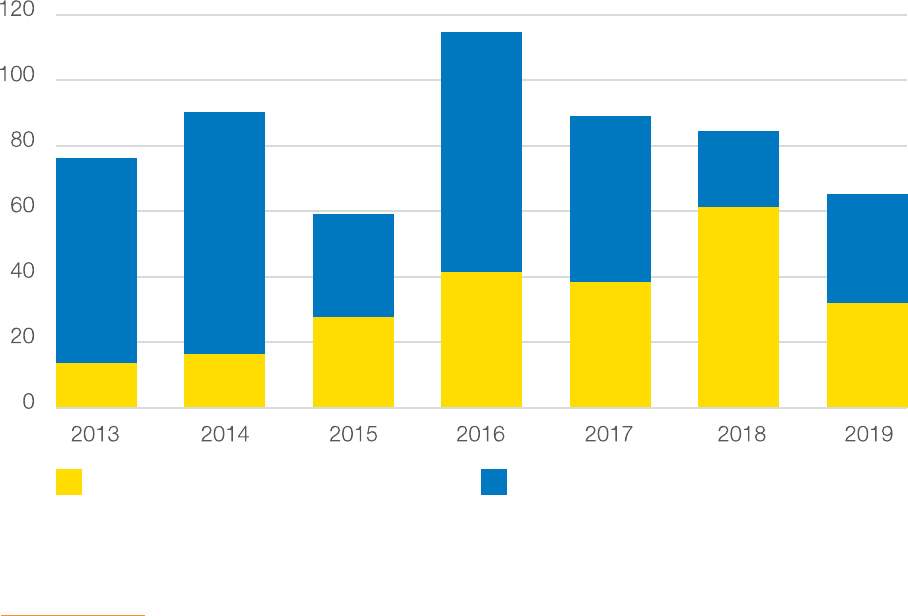
116
As noted in the previous edition of Screen Business, animation programmes also offer a longer
recoupment cycle than the other sectors in this study. Programmes are frequently dubbed into
other languages and audiences can be renewed as new generations discover and consume
previously-made content. This is particularly relevant to the children’s component of the market.
Combined with the value of licensing and merchandise deals, it is reasonable to anticipate that
downstream revenues will continue to be generated from ATR-supported production for years
to come.
7.3. Direct impact
7.3.1. Production
Statistics compiled by the BFI show that while £114.7 million was spent on the production of
ATR-qualifying animation programmes in 2016, the total in 2019 was £65.3 million (Figure 23).
These 2019 expenditures included £31.8 million in inward investment and co-productions, and
£33.5 million in UK domestic production.
142
An element of this decline is likely to relate to a lag between animation production and certification,
and there may be upward revisions in future – although the impact of these is unknown.
143, 144
Figure 23
UK spend on ATR programme production, 2013-2019 (£m)
142. Film, high-end television and animation programmes production in the UK: full-year 2020. Ibid
143. As an example of expenditure revision, the UK spend data on ATR programme production in the 2018 edition of Screen Business
was £97.1 million in 2016, £58.5 in 2015 and £92.8 in 2014
144. It should be noted that this study has not assessed any wider sectoral trends or challenges that may have contributed to the decline
in spend since 2016
£m
Source: The BFI
Inward investment and co-production Domestic UK
31.8
27.8
33.5
31.3
65.3
59.1
61.2
23.3
84.5
38.3
16.3
13.6
50.7
74.0
62.6
89.0
90.3
76.2
41.4
73.3
114.7

117
To estimate the direct economic impact of this production expenditure, the total value of UK
spend was converted to FTEs, compensation of employment (CoE) and GVA by applying
economic ratios derived from data collected through a survey of UK animation studios and from
the Job Creation Model.
145, 146
The survey indicated that each £1 million of UK spend generated £575,000 in employment
compensation in 2016. Data from this research also indicated that the median salary within the
sector was £37,160 in 2016, which translated into a median FTE cost of £42,280.
147
This median
FTE cost implied that each million pounds of production spending generated 13.5 direct FTEs.
Research for the Job Creation Model indicated that each million pounds of spending on
animation programme production generates £0.68 million in direct GVA.
148
Based on these ratios, it was calculated that animation programme production generated 840
direct FTEs, £37.5 million in direct employment compensation, and £44.5 million in direct GVA
in 2019 (Table 47). This represents a decline from 2016 across all metrics. As previously noted,
this partly relates to a lag between animation production and certification, although the impact of
likely upward revision of production spend is unknown.
Table 47
Direct economic impact of ATR programme production, 2016-2019
2016 2017 2018 2019
UK spend (£m) 114.7 89.0 84.5 65.3
Employment (FTEs) 1,560 1,190 1,080 840
CoE (£m) 75.6 51.2 48.6 37.5
GVA (£m) 78.2 60.7 57.6 44.5
Source: Olsberg•SPI/Nordicity estimates based on data from the BFI, Ofcom, ABS and ASHE
Note:
See Appendix 3 for description of methodology
145. See Appendix 3 for further information
146. While the Job Creation Model did not cover animation programme production, some of the research and analysis of the VFX sector
(which operates similar operating models) was applied to the animation programme production sector; further information on the Job
Creation Model can be found in Section 4.3.1.
147. The median salary was multiplied by 1.138 to account for employers’ NI costs
148. The estimate of operating surplus for VFX companies derived for the Job Creation Model was combined with the employment com-
pensation ratio derived from the survey of animation studios to estimate the GVA ratio
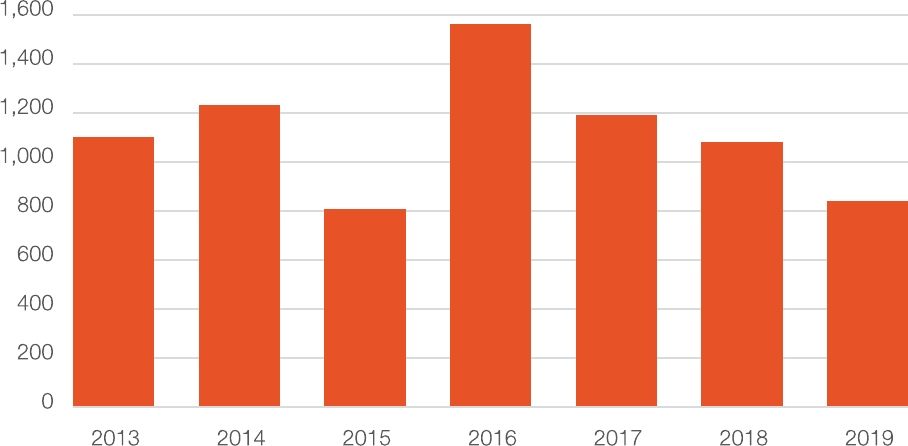
118
Figure 24
Direct employment generated by ATR programme production, 2013-2019 (FTEs)
7.3.2. Television broadcast
When animation programmes are broadcast on television, value is generated for the UK
economy as economic activity is added over and above the labour, goods and services related
to the content. A proportion of the broader economic activity undertaken by the broadcaster is
therefore attributable to the acquisition and transmission of ATR-supported programmes.
To ascertain this value, the BFI undertook an analysis of audience share figures for animation
programmes on UK television. This allowed the generation of an economic share for each ATR-
related project, and attributed revenues based on audience share.
This analysis indicates that ATR-qualifying animation programmes yielded an economic share of
0.56% of total television broadcast activity in 2016, increasing to 1.80% in 2019. This economic
share means that ATR programmes generated an attributable revenue of £76.6 million on UK
broadcast television in 2016, increasing to £238.1 million in 2019 (Table 49).
FTEs
Source: Nordicity/Olsberg•SPI estimates based on data from the BFI, ABS and ASHE
840
1,080
1,190
1,560
810
1,230
1,100

119
Table 48
Calculation of ATR viewing share
2017 2018 2019
ATR viewing minutes (millions) 33.1 31.8 27.3
Total minutes of viewing to all channels
(in BARB sample) (millions)
1,824.1 1,678.9 1,547.4
ATR viewing share 1.8% 1.9% 1.8%
Source: The BFI and BARB
This attributable revenue generated 430 direct FTEs, £23.8 million in direct employment
compensation and £42.9 million in direct GVA within the television broadcast sub-sector in 2019.
Table 49
Direct economic impact of ATR programmes on UK television, 2016-2019
2016 2017 2018 2019
Economic share 0.56% 1.80% 1.90% 1.80%
Attributable revenue (£m) 76.6 241.4 257.0 238.1
Employment (FTEs) 170 510 520 430
CoE (£m) 8.4 24.1 25.7 23.8
GVA (£m) 27.6 48.3 38.6 42.9
Source: Olsberg•SPI/Nordicity estimates based on data from the BFI, Attentional, BARB, Ofcom, ABS and ASHE
Note:
See Appendix 3 for methodology
7.3.3. Distribution
As with the other screen sectors in this study, the distribution of animation programmes can also
generate economic activity within the UK from the licensing of programmes to broadcasters and
video platforms, as well as the licensing of IP for use in merchandising. This reflects the value-
added activity undertaken by the distributor to sell the content and administer the proceeds.
To estimate this, the economic share of ATR-supported animation programmes within total
television broadcast activity in 2019 – ie 1.80% – was used as the base rate for ATR-supported
programmes’ share of the total UK content market. This was adjusted to account for the fact that
not all genres of television programming, such as news, are subject to distribution, raising the
economic share of ATR-supported programmes to 2.97% in 2019.
149
This adjusted economic
share was applied on a pro-rata basis to the totals for employment, employment compensation
and GVA in the Office for National Statistics (ONS) dataset for SIC 59.13/3, Television programme
distribution activities.
This analysis indicated that the distribution of animation programmes which accessed ATR
generated an estimated £67.6 million of revenue within the distribution sub-sector in 2019
(Table 50). Such attributable revenues were responsible for 50 direct FTEs, £4.7 million in direct
employment compensation, and £23.4 million in direct GVA.
149. Details of this approach can be found in Appendix 3

120
Table 50
Direct economic impact of distribution of ATR programmes, 2016-2019
2016 2017 2018 2019
Economic share of television
broadcast market
0.56% 1.80% 1.80% 1.80%
Economic share of television
distribution market
0.95% 2.95% 3.13% 2.97%
Attributable revenue (£m) 8.5 45.6 50.9 67.6
Employment (FTEs) 10 20 60 50
CoE (£m) 0.5 3.5 4.9 4.7
GVA (£m) 2.6 15.7 20.8 23.4
Source: Olsberg•SPI/Nordicity estimates based on data from the BFI, Attentional, BARB, Ofcom, ABS and ASHE
Note:
See Appendix 3 for methodology
7.3.4. Video platforms
In keeping with the approach undertaken for the other television-based screen sectors in this
study, the portion of economic activity on video platforms was also estimated with reference to
an adjusted economic share for animation programmes. This reflects the marginal value added
associated with the labour, goods and services required to place programmes on such platforms.
As with the distribution sub-sector, this analysis started with the use of the economic share in
television broadcast as a proxy. In this case, the economic share was adjusted from 1.8% to
6.0% to reflect the fact that fiction genres predominated audience viewing on video platforms
during the 2017-2019 period, in relation to broadcast television.
150
For physical sales, this adjusted economic share was applied to ONS data for SIC 47, Retail
trade, except of motor vehicles and motorcycles. Data on major digital video platforms were
used to estimate the economic contribution of ATR-supported programmes to this element of the
sub-sector.
Based on this approach, ATR programmes generated 140 direct FTEs, £6.7 million in direct
employment compensation and £19.8 million in direct GVA in 2019 (Table 51).
150. This approach is detailed in Appendix 3

121
Table 51
Direct economic impact of ATR programmes on video platforms, 2016-2019
(£m, unless indicated otherwise)
2016 2017 2018 2019
Revenue
value of
ATR
Physical 5.6 18.4 19.8 19.7
Digital 22.4 93.5 115.5 128.9
Total 28.0 111.9 135.3 148.6
Employment
(FTEs)
Physical 30 100 100 100
Digital 10 30 40 40
Total 40 130 140 140
CoE
Physical 0.6 2.3 2.4 2.4
Digital 0.7 3.1 3.8 4.3
Total 1.3 5.4 6.2 6.7
GVA
Physical 0.9 3.9 4.3 4.2
Digital 2.7 11.3 14.0 15.6
Total 3.6 15.2 18.3 19.8
Source: Olsberg•SPI/Nordicity estimates based on data from the BFI, Omdia, ABS, Attentional, BARB, public nancial reports
and ASHE
Notes:
See Appendix 3 for methodology
Figures may not sum to totals due to rounding
7.3.5. Summary of direct economic impact
The estimates of economic activity across these components of the value chain were brought
together to estimate the total value chain impact of the animation programme sector.
This shows that, in 2019, ATR-supported animation programmes generated 1,460 direct FTEs,
£72.8 million in direct employment compensation and £130.6 million in direct GVA (Table 52).

122
Table 52
Summary of direct economic impact of ATR programmes across the value chain,
2016-2019
2016 2017 2018 2019
Employment
(FTEs)
Production 1,560 1,190 1,080 840
Distribution 10 20 60 50
TV broadcast 170 510 520 430
Video platforms
†
40 130 140 140
Total 1,780 1,850 1,800 1,460
CoE (£m)
Production 75.6 51.2 48.6 37.5
Distribution 0.5 3.5 4.9 4.7
TV broadcast 8.4 24.1 25.7 23.8
Video platforms
†
1.3 5.4 6.2 6.7
Total 85.9 84.2 85.4 72.8
GVA (£m)
Production 78.2 60.7 57.6 44.5
Distribution 2.6 15.7 20.8 23.4
TV broadcast 27.6 48.3 38.6 42.9
Video platforms
†
3.6 15.2 18.3 19.8
Total 112.1 140.0 135.2 130.6
Source: Olsberg•SPI/Nordicity estimates based on data from the BFI, Attentional, BARB, Ofcom, ABS and ASHE
Notes:
See Appendix 3 for methodology
† Includes physical video sales and rentals and digital video platforms
Figures may not sum to totals due to rounding
7.4. Total economic impact
As with the other sectors in this study, indirect and induced impacts were estimated through the
use of a bespoke model based on ONS input-output (I-O) tables.
This model enables an estimate of how the animation programme sector value chain generates
additional economic impact through its purchases of goods and services (ie indirect impact), and
the economic activity associated with the re-spending of earnings by direct- and indirect-impact
employees (ie induced impact).
To estimate indirect effects, data from production budgets were used to identify the goods and
services utilised by an ATR-supported production in the sectors which supply it; these were
categorised per the industry categories in the ONS I-O tables. The impact of these purchases
was modelled industry by industry to identify the incremental employment, employment
compensation and GVA which would be generated, using the ONS tables to identify the
connections between the various sectors of the UK economy.
151
151. This approach is detailed in Appendix 3

123
This model indicates that animation programmes generated a total economic impact
(including indirect and induced impacts) in 2019 of 3,730 FTEs, £137.6 million in employment
compensation and £254.6 million in GVA (Table 53).
Table 53
Total economic impact generated by ATR programmes throughout all parts of the
value chain, 2016-2019
2016 2017 2018 2019
Employment
(FTEs)
Direct 1,780 1,850 1,800 1,460
Indirect 930 1,440 1,480 1,460
Induced 580 820 820 810
Total 3,290 4,110 4,100 3,730
CoE (£m)
Direct 85.9 84.2 85.4 72.8
Indirect 24.0 40.6 43.5 43.4
Induced 15.2 21.3 22.4 21.4
Total 125.1 146.1 151.2 137.6
GVA (£m)
Direct 112.1 140.0 135.2 130.6
Indirect 46.6 79.2 85.0 85.0
Induced 27.8 38.9 40.8 39.0
Total 186.4 258.1 261.0 254.6
Source: Olsberg•SPI/Nordicity estimates based on data from the BFI, Attentional, BARB, Ofcom, Omdia, ABS, public nancial
reports and ASHE
Notes:
See Appendix 3 for methodology
Figures may not sum to totals due to rounding
7.5. Spillover impacts
7.5.1. Merchandise
Merchandising is a crucial component of the animation programme sector and delivers a
significant proportion of associated IP value. The spillover impacts of merchandise in terms of
economic impact in the retail sector are likely to be large. However, they are difficult to measure
and, outside of the two giants of the sector (Peppa Pig and Thomas & Friends), there is a long
tail of brands. These include Shaun the Sheep, The Amazing World of Gumball and Thunderbirds
are Go.
To estimate the merchandise spillovers associated with ATR programmes, data from a survey of
ATR recipients undertaken for this study was combined with reports on the value of the global
licensed merchandise market.
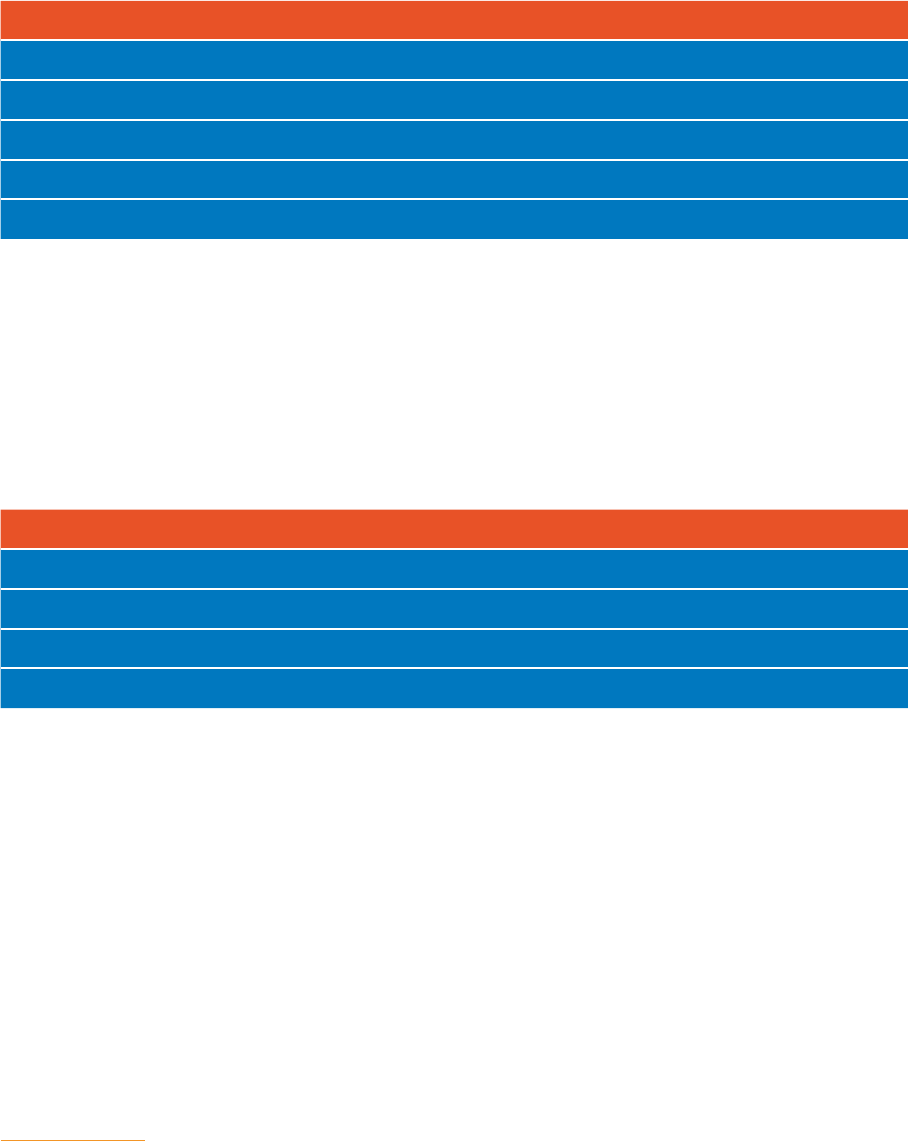
124
The survey indicated that ATR recipients earned a combined annual average total of £12.2 million
in revenue from character licensing, merchandise sales, brand-related income and other income
derived from animation properties.
152
Table 54
Estimated annual licensing and brand revenue earned by ATR recipients, in total, over
2017-2019 (£m)
2017-2019 annual average
Character licensing royalties based on animation properties 4.8
Merchandise income based on animation properties 4.8
Other brand-related income 1.6
Other income derived from animation properties 1.0
Total licensing and brand revenue 12.2
Source: Olsberg•SPI/Nordicity estimates based on survey data
The economic impact ratios for the distribution of ATR programmes were used to estimate the
economic impact of licensing and brand revenue earned by production companies that made
ATR programmes. This showed an estimated economic impact of 40 FTEs, £3.3 million in GVA
and £0.6 million in tax revenue in 2019.
Table 55
Economic impact of ATR-related licensing and brand revenue, 2016-2019
2016
1
2017 2018 2019
Licensing and brand revenue (£m) 6.8 6.8 6.5 5.0
Total employment impact (FTEs)
2
70 50 50 40
Total GVA impact (£m)
2
5.8 4.5 4.3 3.3
Total tax revenue impact (£m)
2
1.0 0.8 0.8 0.6
Source: Olsberg•SPI/Nordicity estimates based on data from survey and Licensing International
Notes:
1. Figures for 2016 calculated in proportion to annual ATR spending
2. Includes direct, indirect and induced economic impacts
According to Licensing International, global royalty revenue totalled $15.8 billion in 2019, or 5.4%
of the total value of global sales of licensed merchandise and services.
153
From this, it is assumed
that the character licensing royalties earned by companies receiving ATR represented 5.4% of
global sales of licensed merchandise – ie global sales were worth approximately 20 times ATR
companies’ character licensing revenue.
152. The survey received 24 complete responses and 19 partial responses. These accounted for two thirds of the reported ATR spend
between 2017 and 2019
153. Global Licensing Survey. Licensing International, 2021. Accessible at: https://licensinginternational.org/get-survey/

125
As noted above, the survey indicated that ATR recipients earned an annual average of
£12.2 million in licensing revenue between 2017 and 2019. A 5.4% royalty rate implies that
licensing revenue was associated with £226.2 million in global merchandise sales. This level of
global sales was equivalent to 0.24% of total value of all global sales of licensed entertainment
and character merchandise in 2019 ($128.4 billion). Separately, it was determined that the UK
probably accounts for 6.6% of the global merchandise market, or £14.9 million in revenue.
Table 56
Estimated value of merchandise sales associated with ATR programmes over 2017-
2019 (excluding Peppa Pig and Thomas & Friends megabrands)
2017-2019 annual average
Licensing and brand revenue (£m) 12.2
Royalty rate 5.4%
Implied global sales of licensed merchandise (£m) 226.2
Implied UK sales of licensed merchandise (£m) 14.9
Source: Olsberg•SPI/Nordicity estimates based on data from survey and Licensing International
To this estimation of UK sales derived from the survey data, specific estimates for two global
megabrands – Peppa Pig and Thomas & Friends – were added using the following assumptions:
• Data published by Entertainment One in 2019 indicated that global sales of Peppa Pig
merchandise reached $1.35 billion in 2019. Using this global total, UK sales were estimated
to be £70 million.
154
• Data published by Mattel Inc. in its annual report indicates that its Fisher Price and Thomas
& Friends brands generated $1.1 billion in global sales in 2019. It was assumed that Thomas
& Friends brands accounted for one-third of this total and that the UK market accounted for
£31.5 million of total sales.
155, 156
These two megabrands, therefore, generated an estimated £101.5 million in retail sales in
the UK in 2019. In total, it was estimated that ATR-related brands generated £113.8 million in
merchandise sales in the UK in 2019.
154. According to Licensing International’s 2019 Global Licensing Survey, Western Europe accounted for 19.5% of global retail sales of
licensed merchandise in 2018. Given that the UK accounted for 34% of the total population of Western Europe, sales of licensed
merchandise in the UK were deemed to account for 6.6% (19.5% x 34% = 6.6%) of global sales of licensed merchandise. When this
6.6% market share was applied to $1.35 billion in Peppa Pig merchandise sales in 2019, it was concluded that the UK accounted for £70
million (6.6% x $1.35 billion x £0.78 per $1 = £70 million)
155. While the precise share accounted for by the Thomas & Friends brand is not publicly reported, because it is a single line of toys
compared to the multiple toy lines sold under the Fisher Price brand, it was assumed that the Thomas & Friends brand accounted for a
minority share of the combined value of the two brands (ie below 50%). However, as a ‘named’ brand among the two brands sharing this
category, we believe the share accounted for by the Thomas & Friends brand would be significant enough to account for at least one-third
of the combined value of Thomas & Friends and Fisher Price brands
156. According to Licensing International’s 2019 Global Licensing Survey, Western Europe accounted for 19.5% of global retail sales of
licensed merchandise in 2018. Given that the UK accounted for 34% of the total population of Western Europe, sales of licensed
merchandise in the UK were deemed to account for 6.6% (19.5% x 34% = 6.6%) of global sales of licensed merchandise. When this
6.6% market share was applied to the estimated $374 million in Thomas & Friends merchandise sales in 2019 (ie one-third of $1.1 billion),
it was concluded that the UK accounted for £31.5 million (6.6% x $374 million x £0.78 per $1 = £31.5 million)

126
Table 57
ATR-related merchandise sales in the UK, 2016-2019 (£m)
2016 2017 2018 2019
Merchandise sales implied by survey 16.4 16.7 15.9 12.3
Peppa Pig (est.) 54.0 61.0 65.0 70.0
Thomas & Friends (est.) 45.5 38.6 34.4 31.5
Total merchandise sales 115.9 116.3 115.3 113.8
Source: Olsberg•SPI/Nordicity estimates based on data from survey, Licensing International, Entertainment One and Mattel Inc.
The employment and GVA ratios for the UK retail sector were used to estimate the annual
employment and GVA impacts of ATR-related merchandise sales. In 2019, merchandise sales
in the UK associated with ATR programmes generated an estimated 590 FTEs, £27.3 million in
GVA and £8.4 million in tax revenue.
Table 58
Economic impact of ATR-related merchandise sales in the UK, 2016-2019
2016
1
2017 2018 2019
Merchandise sales (£m) 115.9 116.3 115.3 113.8
Retail margin
2
(£m) 34.8 34.9 34.6 34.1
Total employment impact (FTEs)
3
670 650 630 590
Total GVA impact (£m)
3
27.8 27.9 27.6 27.3
Total tax revenue impact (£m)
3
8.5 8.5 8.5 8.4
Source: Olsberg•SPI/Nordicity estimates based on data from survey and Licensing International
Notes:
1. Figures for 2016 calculated in proportion to annual ATR spending
2. 30% retail margin earned by UK-based retailers
3. Includes direct, indirect and induced economic impacts
7.5.2. Tourism
There are also likely to be significant spillover economic benefits to the tourism sector from
animation programmes. It has not proven possible to estimate these as visitor data were not
available for the largest likely sources of revenue from this sector – theme parks related to Peppa
Pig, Thomas & Friends and CBeebies.
CBeebies Land opened at Alton Towers in Staffordshire in 2014 with a mix of rides, attractions
and shows for family visitors to the park. Entry to CBeebies Land is included in the broader park
ticket and is regularly updated to showcase some of the most popular CBeebies properties,
including Hey Duggee, In the Night Garden and Teletubbies.

127
Peppa Pig World at Paultons Park in Hampshire features a number of rides and attractions for
visitors to the theme park. Peppa Pig World opened in 2011, with an expansion of two new
rides, a baby care centre and a catering outlet in 2018. Entry to Peppa Pig World is covered by
the Paultons Park ticket; however, the park’s managing director has stated that opening Peppa
Pig World has had a dramatic effect on visitor numbers, which are consistently over 1 million
annually, from around 500,000 previously.
157
Beyond the theme park, theatre company Fierylight has toured live Peppa Pig shows since 2009,
including Peppa Pig’s Adventure in 2017-2018 and Peppa Pig: Best Day Ever and Peppa Pig:
My First Concert in 2019. The shows have travelled across the UK and have reportedly been
viewed by over 1.5 million people.
158
Other animated programmes have also been adapted into theatre or musical shows, including
Teletubbies.
159
Aardman has previously partnered with Carrot Productions for a Wallace & Gromit
touring orchestral show in spring 2019. Wallace & Gromit’s Musical Marvels toured 18 venues
across the UK in 2019, combining animated clips and The Wrong Trousers film with the Picture
House Orchestra.
160
While no reasonable basis to estimate the impact of this spillover effect through other
approaches was identified, it is likely, based on audience ratings, that growth is strong and
profitable, with significant employment.
157. InsideTripAdvisor’s number 1 UK theme park, Paultons Park. Blooloop, 28 February 2018. Accessible at: https://blooloop.com/
theme-park/in-depth/paultons-park-peppa-pig-world-mancey/
158. Peppa Pig Live 2019. What’s On MCR webpage, 20 May 2019. Accessible at: https://www.whatsonmcr.co.uk/peppa-pig-
live-2019/.
159. A list of 2018 dates for a Teletubbies Live show is accessible at: https://www.ents24.com/uk/tour-dates/teletubbies-live
160. Wallace & Gromit’s Musical Marvels, webpage. Accessible at: https://wallaceandgromit.com/news/wallace-gromit’s-musical-marvels

128
7.6. Overall economic contribution
Including spillover impacts, the overall economic contribution of ATR programme production in
2019 amounted to 4,360 FTEs, £285.2 million in GVA and £110.2 million in tax revenue.
Table 59
Summary of overall economic contribution of ATR programmes, 2016-2019
2016 2017 2018 2019
Employment
(FTEs)
Total economic impact 3,290 4,110 4,100 3,730
Spillover impacts 740 700 680 630
Total 4,030 4,810 4,780 4,360
GVA (£m)
Total economic impact 186.4 258.1 261.0 254.6
Spillover impacts 33.6 32.4 32.0 30.6
Total 220.1 290.5 293.0 285.2
Tax
revenue
(£m)
Total economic impact 58.8 98.2 104.7 101.3
Spillover impacts 9.5 9.4 9.3 9.0
Total 68.3 107.6 114.0 110.2
Source: Olsberg•SPI/Nordicity estimates
Note:
Figures may not sum to totals due to rounding
7.7. Impact of Animation Tax Relief
To calculate the impact of ATR, it was first necessary to estimate the taxation revenues arising
from the activity supported by the tax relief.
This analysis shows that ATR-supported production generated an estimated £110.2 million in tax
revenue in 2019, including £25.2 million in VAT on video platform subscriptions and transactions,
and £85.0 million in other taxes (for example, Income Tax, National Insurance Contributions and
Corporation Tax).
161
161. See Appendix 3 for details of tax revenue calculation

129
Table 60
HM Treasury revenue generated by animation programmes, 2016-2019 (£m)
2016 2017 2018 2019
Direct VAT 4.8 19.0 23.0 25.2
Direct 38.8 53.5 54.1 49.0
Indirect 9.4 17.0 18.4 18.2
Induced 5.8 8.7 9.3 8.8
Spillover 9.5 9.4 9.3 9.0
Total 68.3 107.6 114.0 110.2
Source: Olsberg•SPI/Nordicity estimates based on data from the BFI, Attentional, BARB, Ofcom, Omdia, ABS, IDBR, BRES,
ASHE, ONS and HM Revenue & Customs (HMRC)
Notes:
See Appendix 3 for methodology
Figures may not sum to totals due to rounding
To assess the impact of ATR, a survey of production companies was conducted for this study
to ascertain the portion of animation programme production that would have occurred in the
absence of ATR. This allowed the calculation of a rate of additionality applicable to the existing
level of ATR-supported production. This survey research indicated an additionality rate of 50%.
This additionality rate was applied to the production sub-sector, while other sectors were
discounted to reflect lower anticipated additionality rates.
162
Based on the additionality rates applied to the each of the sub-sectors, ATR outlays in 2019
yielded a return on investment (RoI) of £4.53 in terms of GVA. This means that each pound of
ATR yielded £4.53 of GVA for the UK economy in 2019.
Table 61
ATR return on investment, 2016-2019
2016 2017 2018 2019
Total expenditures (£m) 114.7 89.0 84.5 65.3
Tax relief outlays (£m)
1
22.9 17.8 16.9 13.1
Overall economic contribution (£m) 220.1 290.5 293.0 285.2
Additional GVA (£m) 101.1 70.0 63.2 59.2
GVA RoI (£)
2
4.41 3.94 3.74 4.53
Source: Olsberg•SPI/Nordicity estimates based on data from the BFI, Attentional, Ofcom, Omdia, ABS, IDBR, BRES, public
nancial reports, ASHE, ONS and HMRC
Notes:
1. Estimated at 20% of total expenditures
2. RoI is measured as pound returned per £1 of tax relief and takes into account the net impacts and tax relief outlays in the
specic year
162. See Appendix 3 for details

130
THE CHILDREN'S
TELEVISION
PROGRAMME
SECTOR
8

131
8.1. Context and key findings
From Horrible Histories to The Worst Witch, the UK has a long tradition of producing high-quality
children’s television programmes.
Children’s Television Tax Relief (CTR) was introduced in 2015 with the aim of encouraging the
production of culturally British children’s television programmes in the UK.
163
It was first analysed
as a sector in the previous edition of Screen Business.
In 2019, CTR supported £86.0 million of UK spend.
164
The value chain supported 1,610 direct
full-time equivalent (FTE) jobs and generated £132.2 million in direct gross value added (GVA).
Including indirect and induced impacts, this increases to 4,030 FTEs in 2019, with £264.1 million
in contributions to national gross domestic product (GDP).
CTR generated strong returns for HM Treasury over 2017-2019. In 2019, each pound of CTR
granted yielded an additional £3.20 in GVA for the UK economy.
Note
2016 data have been revised from the previous edition of Screen Business to account
for updates in projects tracked by the BFI since publication. For example, when Screen
Business was published in 2018, total CTR expenditure was reported by the BFI to be
£61.0 million for 2016. This total has since been revised to £65.8 million. Analysis in this
chapter is based on projects certified to the end of 2020 only, so data may change in
time as new applications for the years in question are submitted.
8.2. Value chain overview
As with the other screen sectors in this study, a value chain approach to the children’s television
sector has been undertaken to analyse the impact of content produced through CTR.
This value chain is very similar to high-end television (HETV) and animation programmes; it begins
with the conception and development of a project by a production company, which is then
filmed and packaged for broadcast. Usually, such content is commissioned by a broadcaster or
streaming platform, with no intermediary between this and the production stage. To qualify for
CTR, productions must qualify as British under the children’s television cultural test or under an
official co-production treaty; it must be intended for broadcast (including the internet) and must
have a primary target audience under the age of 15.
165
163. Children’s television tax relief. Ibid
164. Source: The BFI Research and Statistics Unit
165. About UK Creative Industry Tax Reliefs. The BFI webpage. Accessible at: https://www.bfi.org.uk/apply-british-certification-tax-relief/
about-uk-creative-industry-tax-reliefs

132
While broadcasters are ordinarily the primary, and often secondary, customers for this content,
it has value in downstream windows such as digital video platforms and the DVD/Blu-ray
market, and will often also be sold into foreign markets for television broadcast. Distributors take
the role of selling the content into these further markets and windows (Figure 25). As with the
animation programme sector, these markets and windows continue to provide a valuable source
of additional revenue, whether from physical video sales, video-on-demand (VoD), transactional
video-on-demand (TVoD), or subscription video-on-demand (SVoD) platforms – which curate
libraries of content suitable (and often securely ring-fenced) for younger audiences.
Figure 25
Children’s television programme value chain
* A distributor may or may not be involved, depending on the structure of the production
8.3. Direct impact
8.3.1. Production
As with the other production sub-sectors in this study, the Job Creation Model was used to
ascertain FTEs, compensation of employment (CoE) and GVA generated through investment in
children’s television production.
166
This model, produced as part of a separate study, analyses
the relationship between production spending, genre, and job creation. By using the relationships
indicated in this study, the impacts of production spending supported by CTR can be estimated.
This model indicated that each million pounds of CTR production generated 12.6 direct FTEs,
£0.49 million in direct employment compensation and £0.59 million in direct GVA in 2016.
After making adjustments for changes in wage rates within the UK, the job creation ratios for
subsequent years were 12.4 in 2017, 11.8 in 2018 and 11.9 in 2019.
Based on this model, direct economic impacts are outlined in Table 62.
166. Further information on the Job Creation Model can be found in Section 4.3.1.
Distribution
ProductionStage
Broadcast
Production
Television Broadcast
VoD/SVoD/TVoD
Video platforms
DVD/Blu-ray sales & rentals
Distribution*

133
Table 62
Direct economic impact of CTR production, 2016-2019
2016 2017 2018 2019
UK spend (£m) 65.8 74.1 117.4 86.0
Employment (FTEs) 830 920 1,390 1,030
CoE (£m) 32.3 36.4 57.6 42.2
GVA (£m) 39.0 43.9 69.5 50.9
Source: Olsberg•SPI/Nordicity estimates based on data from the BFI, ABS, ASHE, the BFI Research and Statistics Unit
Note:
See Appendix 3 for description of methodologies and assumptions
8.3.2. Television broadcast
As with the other screen sectors analysed in this study, when CTR-supported content is
broadcast on television, it generates added economic value for the UK over and above the labour
required at UK broadcasters to deliver the content to consumers. This represents a fraction of the
total value added within broadcasters through the activities of acquiring content and managing
such transmissions.
To calculate the marginal impact of such activity within the television broadcasting part of the
value chain, an economic share was calculated using viewing data from the Broadcasters
Audience Research Board (BARB) for the productions in receipt of CTR. To estimate the
economic share, the BFI calculated the aggregate audience share (measured in terms of viewing
minutes) for all CTR titles on television in the UK in 2017, 2018 and 2019.
Table 63
Calculation of CTR viewing share
2017 2018 2019
CTR viewing minutes (millions) 19.7 23.2 26.2
Total minutes of viewing to all channels
(in BARB sample) (millions)
1,824.1 1,678.9 1,547.4
CTR viewing share 1.1% 1.4% 1.7%
Source: The BFI and BARB
These annual overall viewing shares for CTR were then multiplied by total revenue within the UK
television broadcasting sector to estimate the attributable revenue.
167
The results of this analysis pointed to an economic share of 1.10% for CTR-supported content
in the television broadcast market in 2017, increasing to 1.70% in 2019. This implies that UK
broadcasters earned an estimated £224.9 million of revenue which was attributable to CTR
in 2019 (Table 64). This revenue supported 400 direct FTEs, £22.5 million in employment
compensation, and £40.5 million in GVA in 2019.
167. See Table 21

134
Table 64
Direct economic impact of CTR-supported content on UK television, 2016-2019
2016 2017 2018 2019
Economic share 0.08% 1.10% 1.40% 1.70%
Attributable revenue (£m) 10.9 147.5 189.4 224.9
Employment (FTEs) 20 310 380 400
CoE (£m) 1.2 14.8 18.9 22.5
GVA (£m) 3.9 29.5 28.4 40.5
Source: Olsberg•SPI/Nordicity estimates based on data from the BFI, Attentional, BARB, Ofcom, ABS and ASHE
Note:
See Appendix 3 for description of methodologies and assumptions
The direct and total value chain impact of CTV was significantly lower in 2016 than in 2017
and thereafter, in large part because of the low economic share (0.08%) of the content in the
downstream sub-sectors in 2016 compared to subsequent years. This lower economic share
can be explained, in part, by the fact that CTR was introduced in 2015 and its benefits were yet
to be fully realised. Difference in the methodology used to calculate the economic share may also
explain this.
168
8.3.3. Distribution
As with the other sectors analysed for this study, CTR-supported productions generate economic
impact through distribution. This includes physical and digital video, as well as secondary sales
to broadcasters.
To calculate the impact of CTR-supported content through this sub-sector, the economic share
was also used. As not all television genres are suited to distribution, this economic share was
amended, with genres such as news being removed from the base calculation. This resulted in
an adjusted economic share for children’s television programmes of 0.14% in 2016, increasing to
2.81% in 2019. This economic share was applied to a pro-rata share of activity in SIC 59.13/3,
Television programme distribution activities, the element of the Annual Business Survey (ABS)
dataset within which this economic activity took place.
This analysis shows that CTR-supported productions generated £63.8 million in attributable
revenue for distributors in 2019 (Table 65). This provided £4.5 million in direct employment
compensation and £22.1 million in direct GVA, supporting 50 FTEs.
168. For 2016, the economic share was based on an analysis of a sample of CTR titles conducted by Attentional. For 2017 to 2019, a
new methodology was implemented whereby the BFI used audience data from BARB to estimate the audience size of each title. The
audiences across all CTR titles were summed and then compared to the level of overall viewing to estimate the economic share in each
year. This economic share was then multiplied by total revenue within the UK broadcasting sector (published by Ofcom) to estimate the
monetary value of CTR programming. See Appendix 3 for further description of the Attentional and the BFI-BARB methodologies

135
Table 65
Direct economic impact of distribution of CTR, 2016-2019
2016 2017 2018 2019
Economic share of television
broadcast market
0.08% 1.10% 1.40% 1.70%
Adjusted economic share of
television distribution market
0.14% 1.80% 2.31% 2.81%
Attributable revenue (£m)
169
1.2 27.9 37.5 63.8
Employment (FTEs) <10 20 40 50
CoE (£m) 0.1 2.2 3.6 4.5
GVA (£m) 0.4 9.6 15.3 22.1
Source: Olsberg•SPI/Nordicity estimates based on data from the BFI, Attentional, BARB, Ofcom, ABS and ASHE
Note:
See Appendix 3 for description of methodologies and assumptions
8.3.4. Video platforms
To estimate the impact of CTR-supported production on video platforms, a similar approach to
that for distribution was taken, with the economic share for broadcast being used as the basis
for the calculation. In this case, the economic share in the television market was adjusted to
reflect the fact that certain genres predominated consumer purchases and audience viewing
on physical and digital video platforms between 2017 and 2019, in relation to broadcast
television viewing. This calculation takes into account both DVD/Blu-ray sales in the UK, and the
programming generally available on digital video platforms.
170
This adjusted economic share was applied to SIC 47, Retail trade, except of motor vehicles and
motorcycles for physical sales. Published data on the operations of major digital video platforms
were used to estimate this element of the sub-sector.
Based on this approach, it was calculated that CTR-supported productions accounted for 130
FTEs in the video platforms sub-sector in 2019, £6.3 million in direct employment compensation
and £18.7 million in direct GVA (Table 66).
169. The attributable revenue is higher in 2017 due to the higher economic share and a 72% increase in turnover in the TV distribution
SIC (as per the ABS). However, the employment generated by the SIC (as per BRES) did not rise as steeply in 2017
170. This approach is detailed in Appendix 3

136
Table 66
Direct economic impact of CTR on video platforms, 2016-2019 (£m, unless indicated
otherwise)
2016 2017 2018 2019
Revenue
value of
CTR
Physical 0.8 11.2 14.6 18.6
Digital 3.2 57.1 85.1 121.7
Total 4.0 68.3 99.7 140.3
Employment
(FTEs)
Physical 10 60 80 90
Digital <10 20 30 40
Total 10 80 110 130
CoE
Physical 0.1 1.4 1.8 2.3
Digital 0.1 1.9 2.8 4.0
Total 0.2 3.3 4.6 6.3
GVA
Physical 0.2 2.4 3.6 4.0
Digital 0.4 6.9 10.3 14.7
Total 0.6 9.3 13.9 18.7
Source: Olsberg•SPI/Nordicity estimates based on data from the BFI, Omdia, ABS, Attentional, BARB, public nancial reports
and ASHE
Notes:
See Appendix 3 for description of methodologies and assumptions
Figures may not sum to totals due to rounding
8.3.5. Summary of direct economic impact
Bringing the analysis of these sub-sectors together indicates that the total value chain impact
of CTR-supported productions in 2019 was equal to 1,610 FTEs, £75.5 million in direct
employment compensation and £132.2 million in GVA (Table 67).
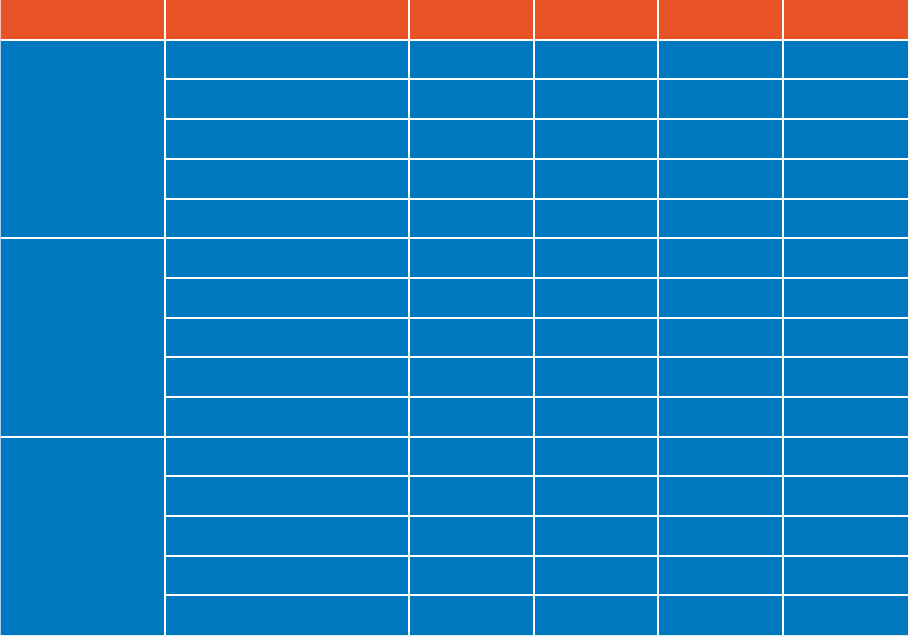
137
Table 67
Direct economic impact generated by CTR-supported productions throughout all parts
of the value chain, 2016-2019
2016 2017 2018 2019
Employment
(FTEs)
Production 830 920 1,390 1,030
Distribution <10 20 40 50
TV broadcast 20 310 380 400
Video platforms
†
10 80 110 130
Total 860 1,330 1,920 1,610
CoE (£m)
Production 32.3 36.4 57.6 42.2
Distribution 0.1 2.2 3.6 4.5
TV broadcast 1.2 14.8 18.9 22.5
Video platforms
†
0.2 3.3 4.6 6.3
Total 33.8 56.6 84.7 75.5
GVA (£m)
Production 39.0 43.9 69.5 50.9
Distribution 0.4 9.6 15.3 22.1
TV broadcast 3.9 29.5 28.4 40.5
Video platforms
†
0.6 9.3 13.9 18.7
Total 43.8 92.3 127.1 132.2
Source: Olsberg•SPI/Nordicity estimates based on data from the BFI, Attentional, BARB, Ofcom, ABS and ASHE
Notes:
Figures may not sum to totals due to rounding
† Includes DVD sales and rentals, and digital video platforms
8.4. Total economic impact
As with the other sectors, multiplier effects were estimated through the use of a bespoke model
based on Office for National Statistics (ONS) input-output (I-O) tables. These enable an estimate
of how the children’s television sector value chain generates additional economic impact through
its purchases of goods and services (indirect impact), and the economic activity of its direct and
indirect employees (induced impact).
This modelling shows that CTR-supported productions generated 2,420 indirect and induced
FTEs in 2019, bringing total value chain employment impacts to 4,030 FTEs (Table 68). The
total economic impact across the total value chain also generated £144.6 million in employment
compensation and £264.1 million in GVA.

138
Table 68
Total economic impact generated by CTR throughout all parts of the value chain,
2016-2019
2016 2017 2018 2019
Employment
(FTEs)
Direct 860 1,330 1,920 1,610
Indirect 500 1,070 1,470 1,600
Induced 300 580 830 820
Total 1,660 2,980 4,220 4,030
CoE (£m)
Direct 33.8 56.6 84.7 75.5
Indirect 13.2 30.1 42.5 46.1
Induced 8.0 15.6 22.7 23.0
Total 54.9 102.2 150.0 144.6
GVA (£m)
Direct 43.8 92.3 127.1 132.2
Indirect 25.5 58.5 82.9 90.2
Induced 14.6 28.3 41.2 41.7
Total 83.9 179.1 251.2 264.1
Source: Olsberg•SPI/Nordicity estimates based on data from the BFI, Attentional, BARB, Ofcom, ABS and ASHE
Notes:
See Appendix 3 for description of methodologies and assumptions
Figures may not sum to totals due to rounding
8.5. Spillover impacts
CTR-supported programming creates a range of spillover impacts. These include tourism and
leisure attractions, as outlined in this section. However, sufficiently detailed economic impact data
are challenging to identify, and the examples presented aim to provide an overview of the types
of impacts being generated by the sector.
Horrible Histories
Based on Terry Deary’s successful series of books, CBBC’s Horrible Histories series began in
2009. A film, Horrible Histories: Rotten Romans, was released in 2019; two new editions of the
Rotten Romans book were published to tie in with the release.
171
Deary has published a number of books under the Horrible Histories umbrella since 1993.
Between 2017 and 2019, a number of new or reprinted Horrible Histories books have been
published, including Top 50 Kings and Queens and Cruel Kings and Mean Queens and Pirates.
171. New books to enjoy. Terry Deary webpage. Accessible at: http://www.terry-deary.com/pg/new-books

139
Created by the Birmingham Stage Company in 2005, the Horrible Histories live performances
have travelled across theatres in the UK and overseas, including Australia, New Zealand, Abu
Dhabi and Singapore. The stage show Barmy Britain is the longest running children’s show
in West End history, and the Horrible Histories shows have been performed to more than 3
million people in the UK.
172
Between 2017 and 2019, the Birmingham Stage Company ran five
Horrible Histories stage shows, including Terrible Tudors, Barmy Britain, Gorgeous Georgians
and Vile Victorians. In addition to the West End production and travelling shows, the Birmingham
Stage Company has worked with Historic Royal Palaces to perform at Hampton Court Palace,
Kensington Palace, Hillsborough Castle and the Tower of London.
173
Hampton Court Palace also hosts a live Horrible Histories performance in the East Front Gardens
during the May half-term holiday each year. Tickets can be purchased for the performance
only or in a package that provides entry to the performance, palace and gardens. Summer
performances at Hillsborough Castle are included in the garden’s admission tickets.
In 2016, a Horrible Histories adventure maze was established at Warwick Castle. Included in the
castle’s ticket price, the maze is an interactive walk-through experience for children of all ages
that also includes an outdoor theatre performance titled Wicked Warwick.
Originally developed by the Australian National Maritime Museum in Sydney, a Horrible Histories
Pirates exhibition opened at the Portsmouth Historic Dockyard in April 2019. The exhibition
features over 30 interactive exhibits and games, and visitors can either buy a single attraction
ticket or wider access tickets that allow entry to the Pirates exhibition and other attractions at the
Dockyard.
174
The Worst Witch
A live performance of The Worst Witch began at the Royal and Derngate Theatre in Northampton
in 2018 before touring the UK in early 2019. The play was then staged at the Vaudeville Theatre
in London between July and September 2019. Adapted by The Worst Witch series lead writer
Emma Reeves, it went on to win the Olivier award for Best Family Show in 2020.
Teacup Travels
Between 16 October 2017 and 30 June 2018, the Oriental Museum at Durham University ran an
event displaying a number of the artefacts that were the inspiration for episodes of the CBeebies
series Teacup Travels. Visitors to the museum could follow a ‘trail’ through the museum to find
the artefacts. Entry to the museum and the Teacup Travels trail were both free.
172. Horrible Histories: Barmy Britain Announces Further London Tour Dates. Theatre Weekly, 14 August 2020. Accessible at: https://
theatreweekly.com/horrible-histories-barmy-britain-announces-further-london-tour-dates/
173. About BSC. Birmingham Stage Company webpage. Accessible at: https://www.birminghamstage.com/about/about-bsc
174. Portsmouth Historic Dockyard webpage. Accessible at: https://www.historicdockyard.co.uk/tickets-and-offers
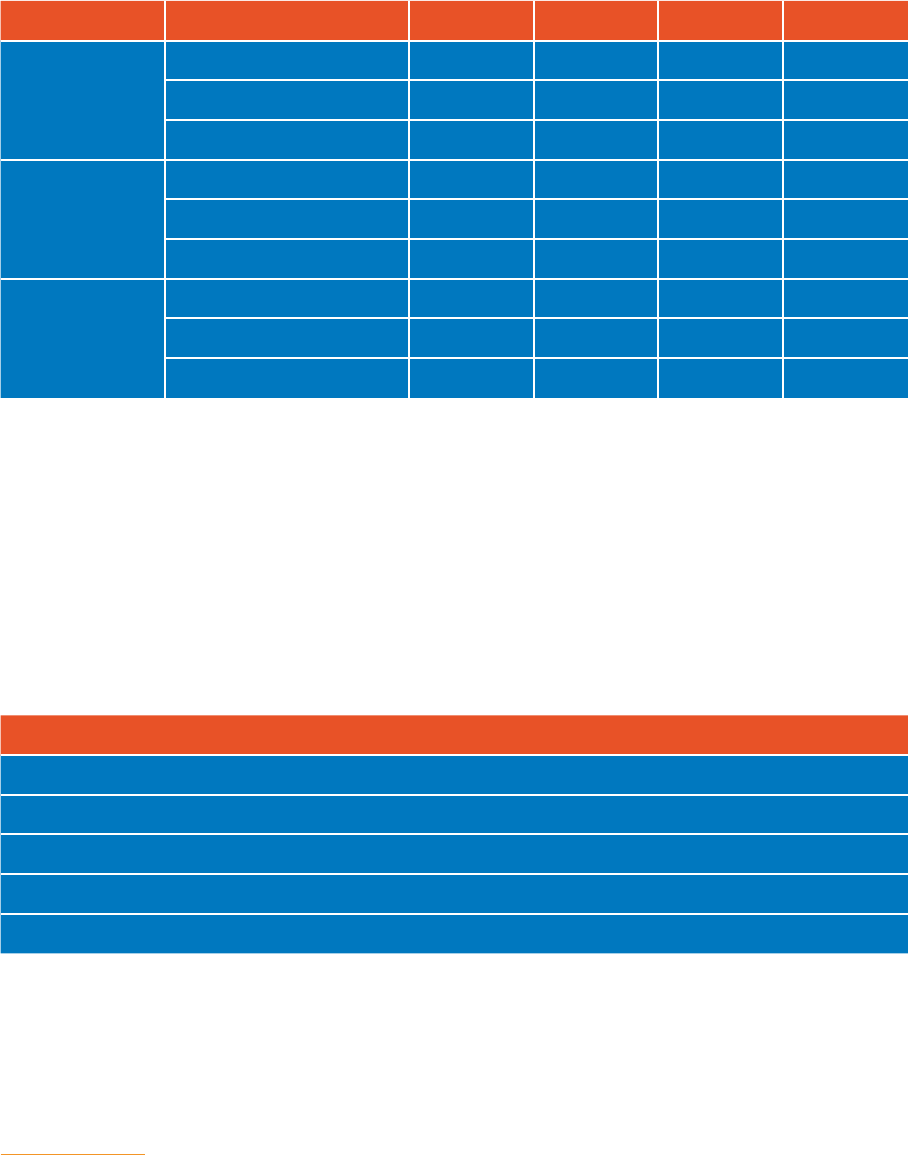
140
8.6. Overall economic contribution
As no spillover value has been included, the overall economic contribution is the same as total
economic impact across the value chain.
Table 69
Summary of overall economic contribution of UK CTV sector supported by tax relief,
2016-2019
2016 2017 2018 2019
Employment
(FTEs)
Total economic impact 1,660 2,980 4,220 4,030
Spillover impacts 0 0 0 0
Total 1,660 2,980 4,220 4,030
GVA (£m)
Total economic impact 83.9 179.1 251.2 264.1
Spillover impacts 0 0 0 0
Total 83.9 179.1 251.2 264.1
Tax
revenue (£m)
Total economic impact 21.6 53.5 77.7 84.0
Spillover impacts 0 0 0 0
Total 21.6 53.5 77.7 84.0
Source: Olsberg•SPI/Nordicity estimates
8.7. Impact of Children’s Television Tax Relief
The activity of CTR-supported productions generated an estimated £84.0 million in tax revenue
in 2019, including £23.8 million in VAT on video platform subscriptions and transactions, and
£60.1 million in other taxes (for example, Income Tax, National Insurance Contributions and
Corporation Tax).
175
Table 70
HM Treasury revenue generated by CTR, 2016-2019 (£m)
2016 2017 2018 2019
Direct VAT 0.7 11.6 16.9 23.8
Direct 12.7 23.8 34.9 32.3
Indirect 5.1 12.0 17.1 18.7
Induced 3.0 6.0 8.8 9.1
Total 21.6 53.5 77.7 84.0
Source: Olsberg•SPI/Nordicity estimates based on data from the BFI, Attentional, BARB, Ofcom, Omdia, ABS, BRES, public
nancial reports, ASHE, ONS and HM Revenue & Customs (HMRC)
Note:
Figures may not sum to totals due to rounding
175. See Appendix 3 for details of tax revenue calculation

141
To assess the impact of CTR, modelling was undertaken in relation to how the total economic
contribution of the UK children’s television production sector supported by tax relief would
change in its absence. The data for this was collected through a survey of children’s television
producers, which indicated that the gross rate of additionality was 40%; ie in the absence of
CTR, production spend on supported content in the UK would be 40% lower.
This additionality rate was applied to the production sub-sector, while other sub-sectors were
discounted prior to the additionality calculation.
176
Based on the additionality rates applied to each of the sub-sectors, HM Treasury’s outlays on
CTR in 2019 yielded a return on investment (RoI) of £3.20 in GVA terms. This means that each
pound of CTR generated £3.20 of economic activity for the UK economy which would not
otherwise have existed.
Table 71
CTR return on investment, 2016-2019
2016 2017 2018 2019
Total expenditures (£m) 65.8 74.1 117.4 86.0
Tax relief outlays (£m)
1
13.2 14.8 23.5 17.2
Overall economic
contribution GVA (£m)
83.9 179.1 251.2 264.1
Additional GVA (£m) 35.8 43.0 62.2 55.1
GVA RoI (£)
2
2.72 2.90 2.65 3.20
Source: Olsberg•SPI/Nordicity estimates based on data from the BFI, Attentional, BARB, Ofcom, Omdia, ABS, IDBR, BRES,
public nancial reports, ASHE, ONS and HMRC
Notes:
1. Estimated at 20% of total expenditures
2. RoI is measured as pounds per £1 of tax relief and takes into account the net impacts and tax relief outlays in the
specic year
176. See Appendix 3 for details

142
THE VISUAL
EFFECTS SECTOR
9

143
9.1. Context
With its cutting-edge digital skills and the ability to make the impossible possible on screen, the
visual effects (VFX) sector is an important component of the UK screen ecosystem. VFX is highly
impactful across both film and high-end television (HETV) production and UK VFX studios such
as DNEG, Milk, Framestore and BlueBolt have contributed to such innovative and award-winning
productions as Tenet, Chernobyl and His Dark Materials.
Despite the fact that VFX is not the recipient of a standalone tax relief, the value of VFX as a
separate element of the production sector has been analysed because of its importance as part
of the production process. Some projects accessing tax relief may only undertake VFX work in
the UK; Film Tax Relief and High-end Television Tax Relief both require at least 10% of a project’s
core expenditure to be UK spend and VFX spend alone may reach this level on some projects.
The importance of VFX within the screen sector tax reliefs is outlined in this section. As the
analysis has not included areas of production undertaken without relief, such as commercials
which benefit from UK skills and creativity in this area, the value of the whole UK VFX sector has
also been assessed and is included in Appendix 2.
To undertake the analysis of VFX within the reliefs and the overall sector, a survey of VFX
production companies was used to identify their turnover from all screen sectors.
Because of the overlap with the standalone tax relief analyses, results presented in this section
should not be added to those in other sections.
Note
2016 data have been revised from the previous edition of Screen Business to account
for updates in projects tracked by the BFI since publication. Analysis in this chapter
is based on projects certified to the end of 2020 only, so data may change in time as
new applications for the years in question are submitted. In addition, adjustments have
been made to the 2016 VFX data to account for an expanded cohort of VFX companies
(derived from LinkedIn mapping) included in the analysis for 2017-2019
9.2. Direct impact
A survey of UK VFX companies was undertaken to establish spending within the sector. Survey
results enabled the estimation of which tax relief was used to support VFX work, and how much
was not reliant on any tax relief.
This analysis concluded that £363.5 million was spent on VFX on tax relief-supported
productions in 2019 (Table 72). FTR-related production was the largest proportion of this,
accounting for £309.0 million (85.0%) of the total. Projects supported by HETR accounted for
£50.9 million (14.0%), while Animation Tax Relief (ATR) and Children’s Television Tax Relief (CTR)
productions both accounted for less than 1% of the total.
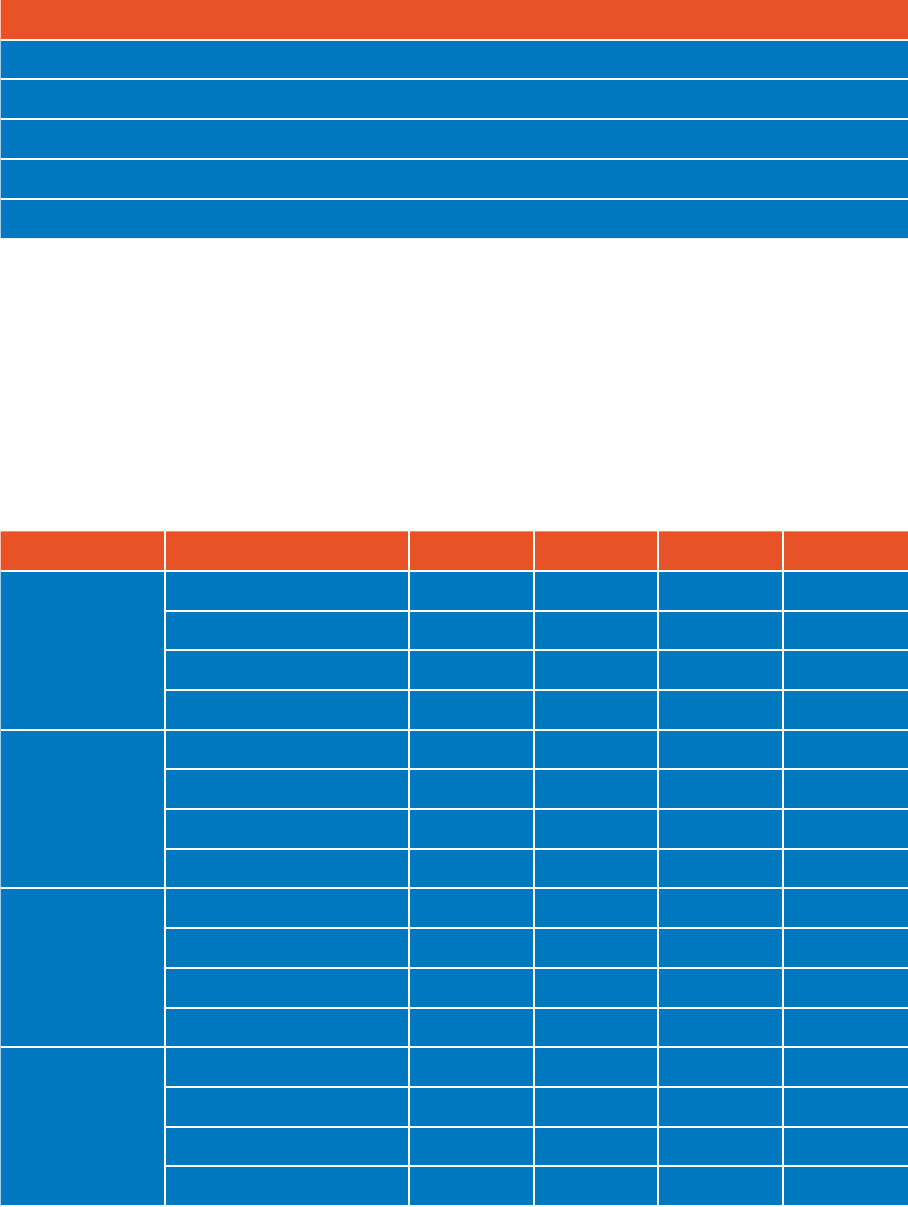
144
Table 72
Total spending on VFX services for film and television production in the UK with tax
relief support, 2016-2019 (£m)
2016 2017 2018 2019
FTR 216.4 269.4 324.5 309.0
HETR 22.0 28.6 32.9 50.9
ATR 1.4 2.7 4.2 3.2
CTR 0.0 0.6 0.3 0.3
Total 239.8 301.3 361.9 363.5
Source: Olsberg•SPI/Nordicity estimates based on data from survey of VFX companies, Companies House and D&B
Notes:
Excludes any revenue earned by VFX companies from video or audio post-production services
Excludes any spending on VFX services for commercials and other video products
Figures may not sum to totals due to rounding
These data imply that 15.3% of FTR-related expenditures in 2019 were on VFX, as well as 2.5%
of HETR-related spend, 5.0% of ATR spend and 0.3% of CTR spend (Table 73).
Table 73
VFX spend as a share of total UK spend by tax relief, 2016-2019 (£m)
2016 2017 2018 2019
FTR
VFX 216.4 269.4 324.5 309.0
Non-VFX 1,655.5 1,951.5 1,736.8 1,706.8
Total 1,871.9 2,220.9 2,061.3 2,015.8
VFX share 11.6% 12.1% 15.7% 15.3%
HETR
VFX 22.0 28.6 32.9 50.9
Non-VFX 955.2 1,197.5 1,357.7 2,027.4
Total 977.2 1,226.1 1,390.6 2,078.3
VFX share 2.3% 2.3% 2.4% 2.5%
ATR
VFX 1.4 2.7 4.2 3.2
Non-VFX 113.3 86.3 80.3 62.1
Total 114.7 89.0 84.5 65.3
VFX share 1.2% 3.1% 5.0% 5.0%
CTR
VFX 0.0 0.6 0.3 0.3
Non-VFX 65.8 73.5 117.1 85.7
Total 65.8 74.1 117.4 86.0
VFX share 0.0% 0.8% 0.2% 0.3%
Source: Olsberg•SPI/Nordicity estimates based on data from survey of VFX companies, Companies House and D&B
Note:
Figures may not sum to totals due to rounding
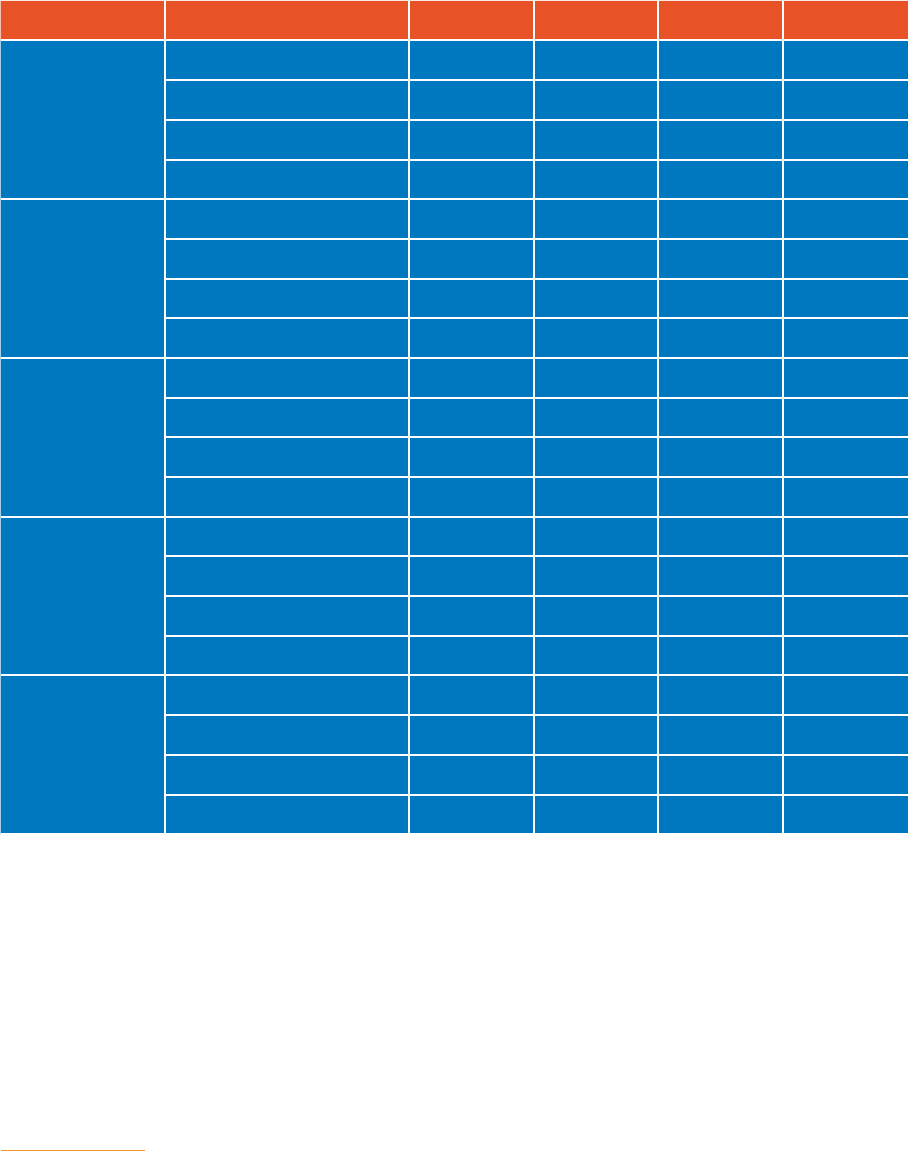
145
Using the Job Creation Model, total VFX production expenditure figures were analysed to
estimate the value and impact of spending from each relevant tax relief through the VFX sector.
177
This analysis shows that VFX-related film and television production supported 5,470 full-time
equivalent (FTE) jobs in 2019 and generated £265.0 million in compensation of employment
(CoE) and £303.9 million in gross value added (GVA) (Table 74).
Table 74
Direct economic impact of VFX production within the tax reliefs, 2016-2019
2016 2017 2018 2019
FTR
VFX spend (£m) 216.4 269.4 324.5 309.0
Employment (FTEs) 3,450 4,230 4,840 4,650
CoE (£m) 157.8 196.4 236.6 225.3
GVA (£m) 180.9 225.2 271.3 258.3
HETR
VFX spend (£m) 22.0 28.6 32.9 50.9
Employment (FTEs) 350 450 490 770
CoE (£m) 16.0 20.9 24.0 37.1
GVA (£m) 18.4 23.9 27.5 42.6
ATR
VFX spend (£m) 1.4 2.7 4.2 3.2
Employment (FTEs) 20 40 60 50
CoE (£m) 1.0 2.0 3.1 2.4
GVA (£m) 1.2 2.3 3.5 2.7
CTR
VFX spend (£m) 0.0 0.6 0.3 0.3
Employment (FTEs) 0 10 0 0
CoE (£m) 0.0 0.5 0.2 0.2
GVA (£m) 0.0 0.5 0.2 0.2
Total
VFX spend (£m) 239.8 301.3 361.9 363.5
Employment (FTEs) 3,820 4,730 5,390 5,470
CoE (£m) 174.8 219.7 263.8 265.0
GVA (£m) 200.5 251.9 302.6 303.9
Source: Olsberg•SPI/Nordicity estimates based on data from survey of VFX companies, Companies House and D&B
Notes:
Excludes any revenue earned by VFX companies from video or audio post-production services
Excludes any spending on VFX services for commercials and other video products
Figures may not sum to totals due to rounding
177. Further information on the Job Creation Model can be found in Section 4.3.1.

146
9.3. Total economic impact across value chain –
tax relief-supported
Spending through the VFX sector generates indirect impacts through the purchase of goods and
services from other sectors, and induced impacts through the re-spending of wages by direct
and indirect employees. To estimate the value of these indirect and induced impacts, a bespoke
model was generated through analysis of Office for National Statistics (ONS) input-output
(I-O) tables.
This model indicates that the VFX sector generated a total economic impact of 7,750 FTEs,
£324.5 million in employment compensation and £415.9 million in GVA in 2019 (Table 75).
Table 75
Total economic impact generated by VFX production in the UK within the tax reliefs,
2016-2019
2016 2017 2018 2019
Employment
(FTEs)
Direct 3,820 4,730 5,390 5,470
Indirect 720 890 1,090 1,090
Induced 790 980 1,190 1,190
Total 5,330 6,600 7,670 7,750
CoE (£m)
Direct 174.8 219.7 263.8 265.0
Indirect 18.0 22.1 27.1 27.3
Induced 21.2 26.6 32.0 32.2
Total 214.0 268.4 322.9 324.5
GVA (£m)
Direct 200.5 251.9 302.6 303.9
Indirect 35.2 43.4 53.2 53.4
Induced 38.7 48.4 58.4 58.6
Total 274.4 343.7 414.2 415.9
Source: Olsberg•SPI/Nordicity estimates based on data from the BFI, ABS, ASHE and survey of VFX companies
Note:
Figures may not sum to totals due to rounding
The data established in the various screen sectors through this study were used to apportion the
direct, indirect and induced impacts of VFX spending through the value chains for the tax relief
sectors. Based on this apportioning exercise, the total value chain impact of VFX production in
the UK was 11,840 FTEs and £854.1 million in GVA in 2019 (Table 76).
178
178. As these figures are derived from the production sectors above, they should not be added to other figures, as this would lead to
double-counting and an inflated total figure

147
Table 76
Total economic impact across the screen sector value chain attributable to UK-made
VFX content, 2016-2019
2016 2017 2018 2019
Employment
(FTEs)
Production 5,330 6,600 7,670 7,750
Distribution 810 1,150 1,410 1,610
Cinema exhibition 930 1,060 1,730 1,680
Television broadcast 170 250 290 300
Video platforms
†
350 380 470 500
Total 7,590 9,440 11,570 11,840
GVA (£m)
Production 274.4 343.7 414.2 415.9
Distribution 157.2 214.1 279.2 291.2
Cinema exhibition 45.0 52.2 92.5 92.7
Television broadcast 17.3 18.6 18.7 23.0
Video platforms
†
17.5 21.3 28.5 33.1
Total 511.3 649.9 833.1 855.9
Source: Olsberg•SPI/Nordicity estimates based on data from the BFI, Ofcom, Omdia, ABS, Attentional, BARB, public nancial
reports, Ofcial Charts Company, BASE, ASHE and survey of VFX companies
Notes:
† Includes physical video (ie DVD sales and rentals), and digital video platforms
Figures may not sum to totals due to rounding
9.4. Overall economic contribution
Table 77 presents the overall economic contribution of VFX across the various sectors and
sub-sectors, inclusive of the portion of the spillover impacts in the FTR, HETR and ATR
sectors attributable to VFX. This approach involved pro-rating the spillover impacts from
VFX within the tax reliefs analysed. For example, sinceVFX spending supported by FTR is
estimated to have accounted for15.3% of total FTR spendin 2019, 15.3% of FTR’s spillovers
weresubsequentlyattributed to VFX. This logic was also applied to the value chain.
Including spillover impacts, the total economic impact of VFX was 20,050 FTEs and £1.29 billion
in GVA in 2019.

148
Table 77
Overall economic contribution across the screen sector value chain attributable to
UK-made VFX content, including spillover impacts, 2016-2019
2016 2017 2018 2019
Employment
(FTEs)
Value chain impact 7,590 9,440 11,570 11,840
Spillover impacts 3,840 5,190 7,460 8,210
Total 11,430 14,630 19,030 20,050
GVA (£m)
Value chain impact 511.3 649.9 833.1 855.9
Spillover impacts 181.1 253.7 377.8 429.2
Total 692.4 903.6 1,210.9 1,285.1
Source: Olsberg•SPI/Nordicity estimates based on data from the BFI, Ofcom, Omdia, ABS, public nancial reports, ASHE and
survey of VFX companies
Note:
Figures may not sum to totals due to rounding

149
10
The impact of the film and high-end
television tax reliefs UK-wide
THE UK NATIONS AND
ENGLAND’S REGIONS

150
10.1. Overview
Recent years have seen increasing amounts of film and high-end television (HETV) production
taking place outside of the Metro London hub. This includes Game of Thrones, Line of Duty
and Ordinary Love in Northern Ireland, Outlander, Shetland and Wild Rose in Scotland and Sex
Education, His Dark Materials and Eternal Beauty in Wales. A broad range of productions have
been made in England’s regions, including Peaky Blinders, Ackley Bridge, The Personal History of
David Copperfield and How to Build a Girl.
This section provides an estimate of the impact of production on the UK nations and England’s
regions. Given data gaps, the analysis only focused on the film and HETV sectors, with results
outlined in terms of production expenditure, and national/regional economic impact in terms of
employment and gross value added (GVA).
179
Note on Metro London
While this study uses Eurostat’s Nomenclature of Territorial Units for Statistics (NUTS)
1 approach to define England’s regions, a new Metro London definition has also been
created. Metro London combines Greater London with Hertfordshire (from the East of
England) and Buckinghamshire and Surrey (the South East of England) to form a Metro
London region that better reflects the geography of film and HETV production, given that
several of the major studio facilities are located in these counties. The Metro London
approach overcomes the imbalance that using NUTS 1 definitions around London would
have created. Beyond these changes, the study continues to use the NUTS 1 regions
including South East, which excludes Buckinghamshire and Surrey.
10.2. Outline of approach
Currently, there is no standard approach to measuring UK film and HETV production spend in the
UK’s nations and England’s regions, and data are collected differently depending on the agency.
To remove these data collection discrepancies, a new production spend rate card was developed
(Table 78). This rate card was based on an analysis of different production budgets provided by
the BFI, and resulted in an average daily production spend depending on the type of project and
budget level. This includes whether a project is domestic or inward investment, since budgets
can differ between these two types of production. The rate card covers total spend during
production, rather than only spend that occurs during filming on location.
180
179. An analysis of the impact of the overall video games sector on the UK nations and England’s regions is provided in Section 16.1.7.
180. As this is based on total expenditure, all elements of production are included

151
Table 78
UK production spend rate card
Project category Average daily production spend
Feature film (<£1.5m) £29,400
Feature film (£1.5m - £9.9m) £130,600
Feature film (£10m - £19.9m) £226,800
Feature film (£20m - £59.9m) £467,100
Feature film (£60m - £99.9m) £828,700
Feature film (£100m+) £1,303,500
HETV domestic/co-production £149,200
HETV inward investment £288,200
Source: Olsberg•SPI/Nordicity estimates based on budget data from the BFI
The daily spend averages were then multiplied by location filming days data, sourced from
national and regional screen agencies. Northern Ireland, Scotland and Wales were estimated first
and then deducted from the total UK production spend for film and HETV as reported by the BFI.
While the BFI data show overall production in these sectors, the scale of Film Tax Relief (FTR) and
High-end Television Tax Relief (HETR) usage means that the analysis of spend can be considered
to be an analysis of tax relief impacts in the nations and regions.
181
The residual amount of production spend was then applied to England. The rate card was used
to estimate total spend in each region of England as well as Metro London, based on data from
Creative England, Film London and other regional sources. The sum of this spending was then
compared to the England residual and the variance in production spending was then allocated
across England’s regions and Metro London on a pro-rata basis – based on each jurisdiction’s
share of the rate card spending.
182
To account for the fact that the vast majority of VFX and post-
production work is done in Metro London, a nominal 15% of the estimated levels of production
spending in England’s regions outside of Metro London was assigned to Metro London.
Further analysis was then undertaken because not all production spend would in fact be retained
by resident workers and businesses within the nation or region where the production spending
occurred. This is because productions may utilise equipment, supplies, services or crew from
outside the nation or region in which production is occurring.
181. Since a wide range of factors influence the placement of a production in a nation or region – including the availability of locations,
talent, infrastructure and finance – this should be considered an analysis of how FTR and HETR spend is dispersed, and not an analysis of
how these tax reliefs specifically influence production flows around the UK
182. The estimates derived on the basis of this approach for the North West and South West were supplemented by additional data
provided by the Liverpool Film Office and The Bottle Yard Studios in Bristol to account for specific gaps in the annual number of filming
days reported to Creative England
152
To estimate retained spend, a location-quotient model – based on data published by the Office
for National Statistics (ONS) – was developed to estimate the portion of production spend in
a nation or region that would likely be retained within the local economy. The ONS publishes
location quotients for most regions of the UK; however, they can also be calculated using
detailed industry employment data published by ONS at a regional level. For the film and
television production industry, the location quotients were calculated directly from employment
data.
Location quotients compare the intensity of employment in a given industry and region to the
national average. For example, if a particular region accounts for 5% of overall UK employment
but only 2% of employment in a specific industry, then the location quotient for that region
and industry would be 0.4 (ie 2% ÷ 5%). This suggests that the particular industry is much
less prominent in that region of the UK. Therefore, if a particular region accounted for 5% of all
employment in the UK but accounted for only 2% of UK-wide employment in film and television
production, the location-quotient model would imply that 40% of total spend is likely to be
retained in region and paid to local crew and suppliers.
Any spend not retained locally was then distributed across the UK based on each nation and
region’s share of UK GVA.
The resulting aggregate spend was then used to apportion the total UK-wide impact of the film
and HETV sectors – and, therefore, the impact of FTR and HETR. A region accounting for 5% of
aggregate spend would account for 5% of total employment and GVA generated by film or HETV
production in a given year.
10.3. Impacts
The results of the analysis differ by production type – ie whether film or HETV – for a number
of reasons. Film has typically been associated with the Metro London area because of its
specialised studio facilities and supply chain vendors. HETV, by comparison, is less focused on
Metro London, with producers placing sizeable productions in the nations or regions provided the
right combination of facilities – which may be converted from industrial buildings – crew, locations
and, where relevant, additional funding sources can be found.
Both sectors show clear year-on-year fluctuations across the nations and regions, which typically
relates to one or more sizeable projects being located in the nation or region in one year and the
scale of that production not being duplicated in the following year. This is particularly apparent in
the film sector.
153
10.3.1. High-end television
Since the introduction of HETR in 2013, related UK expenditure has seen a huge increase from
£392.8 million in 2013 to £2.08 billion in 2019. A significant amount of the sector’s production
activity takes place in the UK nations and England’s regions, with an estimated £1.56 billion in
production spend, or around 33% of the UK total, being undertaken outside of Metro London
between 2017–2019.
In 2019, HETV spend generated 33,548 FTE jobs in Metro London and 15,612 throughout the
rest of the UK, including direct, indirect and induced effects. Taking into consideration the total
impact of the HETV content value chain, including direct, indirect and induced effects, 45,240
FTE jobs were created in Metro London in 2019 and 19,070 throughout the rest of the UK.
In GVA terms, HETV spend generated £1.67 billion in GVA in Metro London in 2019 and £778.3
million throughout the rest of the UK, including direct, indirect and induced effects. Taking into
consideration the total impact of the HETV content value chain, including direct, indirect and
induced effects, £2.64 billion in GVA was generated in Metro London in 2019 and £1.04 billion
throughout the rest of the UK.
HETV spend activity is more regional than film, with several parts of the UK hosting major HETV
productions. From the analysis in this section, there is particular evidence of HETV activity
between 2017 and 2019 in Northern Ireland, Scotland and Wales, as well as the North West of
England, the South West of England, and Yorkshire and the Humber.
The issue of fluctuation due to sizeable projects is evident in several parts of the UK.

154
Table 79
Total HETV production spend, by UK nation and England’s regions (£m)
2017 2018 2019
Spend
(£m)
East Midlands 3.4 1.5 0.3
East of England 1.6 1.6 17.8
Metro London 806.2 990.4 1,341.6
Northern Ireland 149.2 89.5 29.6
North East 13.3 9.0 14.4
North West 54.2 91.3 262.2
Scotland 81.3 80.3 104.9
South East 13.4 8.9 46.4
South West 25.6 33.5 126.3
Wales 31.3 24.2 71.4
West Midlands 0.1 12.1 3.7
Yorkshire and the Humber 46.5 48.3 59.7
Total 1,226.1 1,390.6 2,078.3
Share of
total spend
East Midlands 0.3% 0.1% <0.1%
East of England 0.1% 0.1% 0.9%
Metro London 65.8% 71.2% 64.6%
Northern Ireland 12.2% 6.4% 1.4%
North East 1.1% 0.6% 0.7%
North West 4.4% 6.6% 12.6%
Scotland 6.6% 5.8% 5.0%
South East 1.1% 0.6% 2.2%
South West 2.1% 2.4% 6.1%
Wales 2.6% 1.7% 3.4%
West Midlands <0.1% 0.9% 0.2%
Yorkshire and the Humber 3.8% 3.5% 2.9%
Total 100% 100% 100%
Source: Olsberg•SPI/Nordicity estimates
Note:
Figures may not sum to totals due to rounding

155
Table 80
Total economic impact of HETV production, by UK nation and England’s regions
(includes direct, indirect and induced effects)
2017 2018 2019
Employment
(FTEs)
East Midlands 324 276 452
East of England 483 417 754
Metro London 21,181 24,293 33,548
Northern Ireland 1,778 1,047 486
North East 215 162 274
North West 1,328 1,731 4,458
Scotland 1,632 1,495 2,091
South East 936 810 1,640
South West 772 772 2,086
Wales 644 495 1,260
West Midlands 411 380 591
Yorkshire and the Humber 547 682 1,518
Total 30,250 32,560 49,160
GVA
(£m)
East Midlands 15.5 13.9 22.5
East of England 23.0 21.0 37.5
Metro London 1,012.1 1,223.2 1,672.0
Northern Ireland 85.0 52.7 24.2
North East 10.3 8.2 13.7
North West 63.4 87.1 222.1
Scotland 78.2 75.4 104.4
South East 44.7 40.7 81.7
South West 36.9 38.8 103.9
Wales 30.9 25.1 63.2
West Midlands 19.6 19.1 29.4
Yorkshire and the Humber 26.1 34.3 75.6
Total 1,445.6 1,639.5 2,450.3
Source: Olsberg•SPI/Nordicity estimates
Note:
Figures may not sum to totals due to rounding

156
Table 81
Total economic impact of HETV content value chain, by UK nation and England’s
regions (includes direct, indirect and induced effects)
2017 2018 2019
Employment
(FTEs)
East Midlands 375 303 487
East of England 552 504 894
Metro London 28,923 32,365 45,240
Northern Ireland 2,012 1,252 727
North East 241 178 291
North West 2,283 2,589 5,565
Scotland 1,825 1,591 2,228
South East 1,158 988 1,921
South West 982 963 2,422
Wales 1,030 849 1,855
West Midlands 663 647 944
Yorkshire and the Humber 715 992 1,735
Total 40,760 43,220 64,310
GVA
(£m)
East Midlands 17.9 15.1 24.3
East of England 27.2 26.2 47.8
Metro London 1,621.3 1,851.0 2,639.2
Northern Ireland 101.5 65.8 42.0
North East 11.4 8.9 14.4
North West 131.6 142.4 305.4
Scotland 90.9 81.0 114.1
South East 58.7 52.4 102.6
South West 50.6 51.2 128.4
Wales 58.4 47.7 108.7
West Midlands 36.6 36.1 55.7
Yorkshire and the Humber 36.9 53.8 91.6
Total 2,242.9 2,431.5 3,674.3
Source: Olsberg•SPI/Nordicity estimates
Note:
Figures may not sum to totals due to rounding
157
10.3.2. Film
Film production is subject to more regional fluctuations than HETV, based on the year-to-year
slate of film projects. Some UK nations or English regions can experience single-year spikes due
to one significant film project or a small number of film projects.
Compared with HETV, film has also been more focused around Metro London, given the region’s
highly-developed base of specialist facilities and vendors. Nevertheless, significant impacts are
made across the UK, with around £1.18 billion spent outside Metro London over 2017-2019.
This represents around 19% of the total.
In 2019, this spend generated 37,685 FTE jobs in Metro London and 7,775 FTEs throughout the
rest of the UK, including direct, indirect and induced effects. Taking into consideration the total
impact of the film content value chain, including direct, indirect and induced effects, 49,845 FTE
jobs were created in Metro London in 2019 and 19,085 throughout the rest of the UK.
In GVA terms, film spend generated £1.96 billion in GVA in Metro London in 2019 and £404.1
million throughout the rest of the UK, including direct, indirect and induced effects. Taking into
consideration the total impact of the film content value chain, including direct, indirect and
induced effects, £3.74 billion in GVA was generated in Metro London in 2019 and £1.24 billion
throughout the rest of the UK.
Outside of Metro London, there were consistent levels of film production in Scotland, South East
and Yorkshire as well as other locations.

158
Table 82
Total FTR production spend, by UK nation and England’s regions (£m)
2017 2018 2019
Spend
(£m)
East Midlands 7.6 5.8 0.0
East of England 43.7 17.2 4.8
Metro London 1,697.3 1,798.6 1,624.4
Northern Ireland 6.4 4.9 4.7
North East 34.9 16.1 12.7
North West 22.4 10.8 25.0
Scotland 100.6 45.1 60.4
South East 188.2 114.9 166.1
South West 61.2 4.0 46.6
Wales 7.1 20.1 6.4
West Midlands 0.8 0.0 25.1
Yorkshire and the Humber 50.7 24.0 39.5
Total 2,220.9 2,061.3 2,015.8
Share of
total spend
East Midlands 0.3% 0.3% 0.0%
East of England 2.0% 0.8% 0.2%
Metro London 76.4% 87.3% 80.6%
Northern Ireland 0.3% 0.2% 0.2%
North East 1.6% 0.8% 0.6%
North West 1.0% 0.5% 1.2%
Scotland 4.5% 2.2% 3.0%
South East 8.5% 5.6% 8.2%
South West 2.8% 0.2% 2.3%
Wales 0.3% 1.0% 0.3%
West Midlands <0.1% 0.0% 1.2%
Yorkshire and the Humber 2.3% 1.2% 2.0%
Total 100% 100% 100%
Source: Olsberg•SPI/Nordicity estimates
Note:
Figures may not sum to totals due to rounding

159
Table 83
Total economic impact of FTR production, by UK nation and England’s regions
(includes direct, indirect and induced effects)
2017 2018 2019
Employment
(FTEs)
East Midlands 436 177 262
East of England 793 352 410
Metro London 41,635 40,846 37,685
Northern Ireland 231 115 147
North East 348 126 171
North West 1,019 425 765
Scotland 2,001 837 1,171
South East 2,799 1,914 2,386
South West 1,375 267 864
Wales 353 369 240
West Midlands 553 220 428
Yorkshire and the Humber 677 371 932
Total 52,220 46,020 45,460
GVA
(£m)
East Midlands 21.7 9.3 13.6
East of England 39.5 18.5 21.3
Metro London 2,075.8 2,145.9 1,958.2
Northern Ireland 11.5 6.0 7.6
North East 17.3 6.6 8.9
North West 50.8 22.3 39.7
Scotland 100.0 44.1 61.0
South East 139.5 100.5 123.9
South West 68.5 14.0 44.9
Wales 17.6 19.5 12.5
West Midlands 27.6 11.5 22.2
Yorkshire and the Humber 33.7 19.5 48.4
Total 2,603.6 2,417.8 2,362.3
Source: Olsberg•SPI/Nordicity estimates
Note:
Figures may not sum to totals due to rounding

160
Table 84
Total economic impact of FTR content value chain, by UK nation and England’s
regions (includes direct, indirect and induced effects)
2017 2018 2019
Employment
(FTEs)
East Midlands 919 717 780
East of England 1,421 958 1,044
Metro London 53,087 52,555 49,845
Northern Ireland 564 520 537
North East 709 471 909
North West 2,393 2,238 2,528
Scotland 3,085 2,171 2,335
South East 4,329 3,794 3,952
South West 2,365 1,430 2,139
Wales 897 1,016 879
West Midlands 1,841 1,327 1,778
Yorkshire and the Humber 1,389 1,264 2,204
Total 73,000 68,460 68,930
GVA
(£m)
East Midlands 44.7 38.3 42.7
East of England 84.7 66.5 75.3
Metro London 3,779.0 3,909.8 3,735.0
Northern Ireland 28.1 27.5 29.2
North East 34.7 24.5 60.8
North West 153.1 167.6 182.6
Scotland 164.9 130.6 137.5
South East 246.0 240.9 241.8
South West 127.4 81.8 122.5
Wales 52.9 62.6 56.1
West Midlands 144.5 86.2 148.0
Yorkshire and the Humber 69.5 69.7 143.9
Total 4,929.6 4,906.0 4,975.5
Source: Olsberg•SPI/Nordicity estimates
Note:
Figures may not sum to totals due to rounding

161
THE RIPPLE EFFECT
11
Measuring the micro-economic impact of
film and television production spending
across business sectors

162
11.1. Overview
While this study identifies the macro-economic effects generated by the expenditure of film
and high-end television (HETV) productions in the UK, research has also been undertaken
into an additional and important element of impact created by this activity. This is the micro-
economic effect that delivers value to many business sectors in the locality where the production
expenditure takes place.
Film and HETV production are specialist manufacturing processes which require a wide variety
of inputs. These include a large number of workers – spanning creative, technical, logistical and
support roles – as well as equipment, facilities, infrastructure and services.
While some of these inputs will be sourced directly from the screen sector – ie from individuals
or vendors who only work in film and television production – normally a larger proportion of
expenditure is made in other areas of the economy. This is referred to as the ripple effect – ie the
micro-economic impacts that each production generates for other business sectors.
To demonstrate this impact, forensic analysis of three production budgets was undertaken. For
each project, production spend was assigned to the business sector into which the money is
spent. The focus of the analysis was on below-the-line production expenditure.
The analysis also provides important insight into the regional impacts that are created by film and
HETV production. Indeed, the three projects selected for this analysis were all made outside of
Metro London: two were filmed predominantly in UK nations outside of England, and one was
filmed in an English region. The projects were treated confidentially, and no identifying factors
have been included.
The analysis found that the proportion of production costs for these three projects that was spent
in the general economy was between 40% and 60% of the total. Importantly, significant amounts
(depending on the size of the production) were spent in sectors which have been particularly
affected by the COVID-19 pandemic, such as travel and transport, and hospitality and catering.
Although the proportions are lower, money is also spent in critical service areas such as safety
and security, and health and medical. Subsequently, these areas have become far more
important as the world recovers from the current pandemic and the proportion of budgets spent
in those sectors increases.
163
11.2. Breadth of impact across business sectors
The project expenditure was analysed and categorised according to several business sectors
that typically supply goods and services to film and HETV production.
Most above-the-line costs such as payments to leading actors, writers and producers were
excluded as, in many cases, these could be large items that would skew the analysis as they are
often paid to individuals in economic jurisdictions outside the areas being studied.
The categories of business sectors are listed here and described further below:
• Screen production-specific
• Business support
• Construction
• Digital services
• Real estate
• Travel and transport
• Hospitality and catering
• Finance and legal
• Fashion and beauty
• Music and performing arts
• Power and utilities
• Safety and security
• Training and education
• Health and medical
• Local labour miscellaneous
11.2.1. Screen production-specic
The largest proportion of production spend is on wages of crew and companies supplying
services that exclusively work in the film and television sectors (ie screen production-specific).
These suppliers do not participate in other sectors of the economy and therefore do not
contribute to the ripple effect.
In other cases, technical skills could be and are redeployed into other business sectors;
examples of this can be found in the category descriptions further below.
164
11.2.2. Business support
Like any economic activity, film and HETV production uses the services of the general
business equipment and supplies sector in many ways. This could involve purchases of office
equipment, printing and copying services. Producers also purchase and rent a large number of
miscellaneous items such as storage containers and marquees, especially when a significant
production goes on location, when producers will rely heavily on being able to access local
supplies as they set up temporary bases.
11.2.3. Construction
Much of a production’s construction expenses could be classified as screen production-
specific; a film set is normally only of any use to a specific type of production. The construction
department, however, will reach out to the wider construction sector to hire equipment and
specialists, for example earth diggers and heavy lifting equipment; such costs have been
allocated here.
11.2.4. Digital services
This sector is heavily dependent on screen production, and the bulk of such costs in most
budgets will be allocated to the category specific to screen production. There is, however, some
crossover of skills between this sector and the other key digital industries, in particular the video
games sector, and the costs of such persons have been allocated to this category.
11.2.5. Real estate
The costs of dedicated filming space rental from major film and television studios have been
included in the screen production-specific category but, when productions are on location, they
may rent buildings that also serve other sectors of the economy.
11.2.6. Travel and transport
A key expense of production is the cost of bringing above- and below-the-line personnel into
and around where the production is located. Furthermore, a moving unit requires considerable
transport back up – whether that is by road, train or air. The spend is higher on location-based
productions rather than largely studio-based shows.
11.2.7. Hospitality and catering
These costs relate to accommodating and feeding substantial numbers of talent and crew,
especially when a production is using locations at a distance from where the workforce is
permanently based. Consequently, the hotel and accommodation sector is an important supplier
to productions, regardless of whether they are largely studio-based or predominantly moving
between different locations.
Catering for the working unit is usually provided by mobile catering companies, but the quality
and availability of restaurants are also important to those having travelled to the location of the
production.

165
11.2.8. Finance and legal
Like any business sector, screen production has many requirements for legal expertise, with a
plethora of standard and specialised contracts to be negotiated. The accounts department of
a production also has a crucial role, especially as so many projects involve funding sources that
require external audits.
11.2.9. Fashion and beauty
For contemporary productions, much of the on-screen costume requirement is simply
purchased from high street shops, while period or futuristic shows on the other hand will require
considerable work by skilled cutters, tailors and dressmakers.
183
Equally, hair and make-up look to the general ‘beauty’ sector for both their products and skilled
practitioners – wig makers are a good example of the screen production world interacting to
mutual benefit with the broader fashion and beauty sector.
11.2.10. Music and performing arts
It is sometimes challenging to differentiate between these two sectors and screen production-
specific. Almost all the creative roles are filled with people who have either moved in the past or
continue to move between theatre, musicals and the visual arts. In the design area, for example,
the ‘concept’ artists who bring the designer’s work to life will also work in the exhibition field and
in theatre. Actors move continuously between live theatre and screen. Producers are constantly
looking to the live theatre scene for new talent, and writers often move between live theatre
and screen.
Musicians and singers who work in orchestras and opera companies will often be found in
recording studios providing musical background for screen productions.
11.2.11. Power and utilities
As with any major business sector, screen production is a considerable consumer of power and
general utilities. While on location, production units will use generators to power their lighting rigs
and location bases. However, the sector is increasingly looking to adapt to more environmentally
responsible ways of consuming power and other utilities, and major financiers are constantly
looking to mitigate their environmental impact.
11.2.12. Safety and security
Risk assessments for screen productions can be very specific, so specially trained health and
safety advisors are common. Stunt work, for example, calls for close co-operation between the
production, the stunt co-ordinator, and health and safety officers.
Security, particularly on location, can be co-ordinated by the production but will require
considerable support from the local community, and close contact between the production and a
local security operation is often a huge asset to both sides.
183. Specific costume hire spend has been allocated to screen-production specific
166
11.2.13. Training and education
Many countries have adopted a variety of training initiatives, internships and apprenticeship
schemes to enable pathways for diverse kinds of training across many disciplines.
11.2.14. Health and medical
This is becoming an even more crucial sector in the wake of the COVID-19 pandemic and has
therefore gained far greater significance. Trained medical staff attend sets and construction
sites, providing immediate health cover. Screen production also relies on the medical community
in several ways, including the health checks that all key staff undergo – this has increased
substantially because of pandemic issues and protocols. Special training of such staff has
become necessary across the industry since COVID-19, with considerably increased costs in this
category as a result.
11.2.15. Local labour miscellaneous
In each analysis there were some labour costs where it was not sufficiently clear to which
expenditure category they belonged. These costs have therefore been allocated to a
miscellaneous category.
11.3. Impacts – overall
The results show that film and HETV productions can have significant impacts on other sectors
of the economy. This includes areas that have been particularly impacted during the pandemic,
such as travel and hospitality. Furthermore, screen production relies on substantial numbers of
freelance workers who have also experienced vulnerability and difficulty in recent times.
The following summarises the impacts for the three productions analysed for this study. Their
producers have requested confidentiality and so the expenditure is presented in percentage
terms and other information has been anonymised.
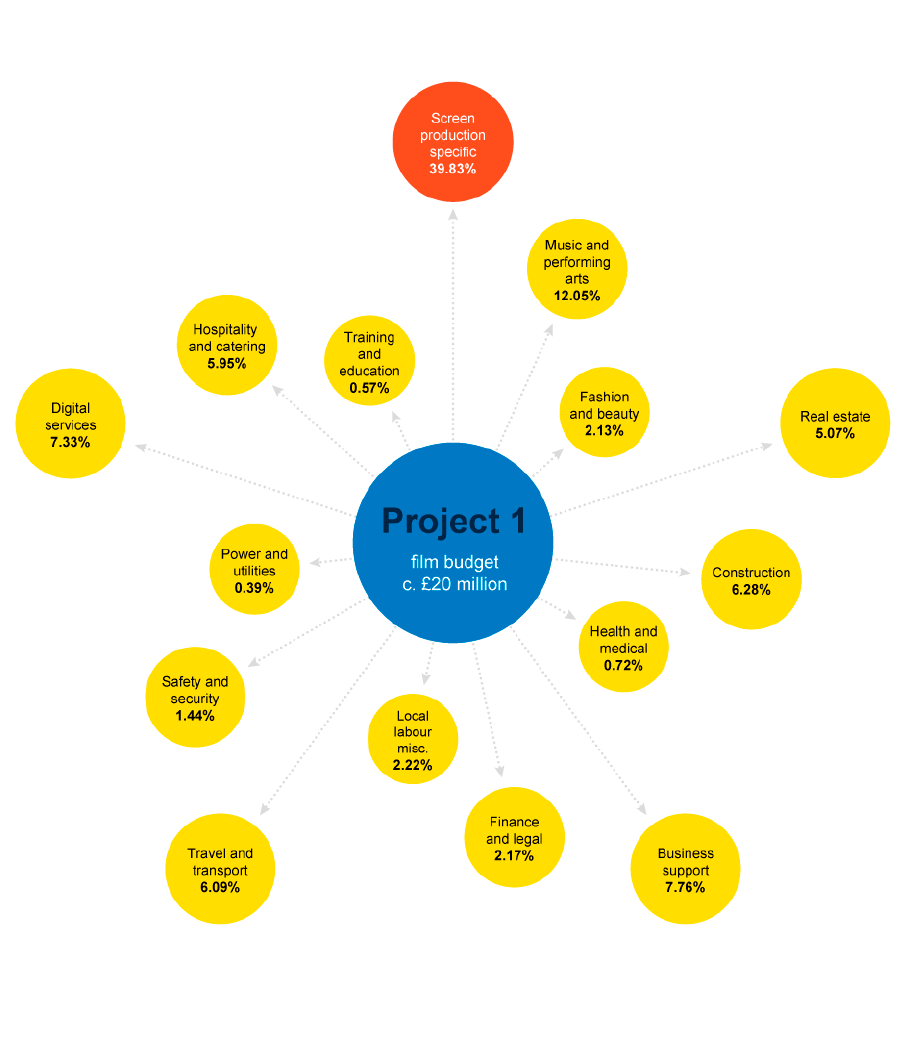
167
11.4. Project one
This is a UK independent feature film with a total budget under £20 million; filmed wholly in one of
the English regions, it was produced by a company with headquarters locally. It made extensive
use of locations in the area and also used a modest, converted studio as its base which was
upgraded by this production and has subsequently been frequently used by other producers. In
collaboration with the regional screen agency, substantial investment was made in training newer
crew members who have subsequently continued careers in production.
The figure and table below represent the analysis performed for this feature.
Figure 26
Breakdown of project one spend by business area
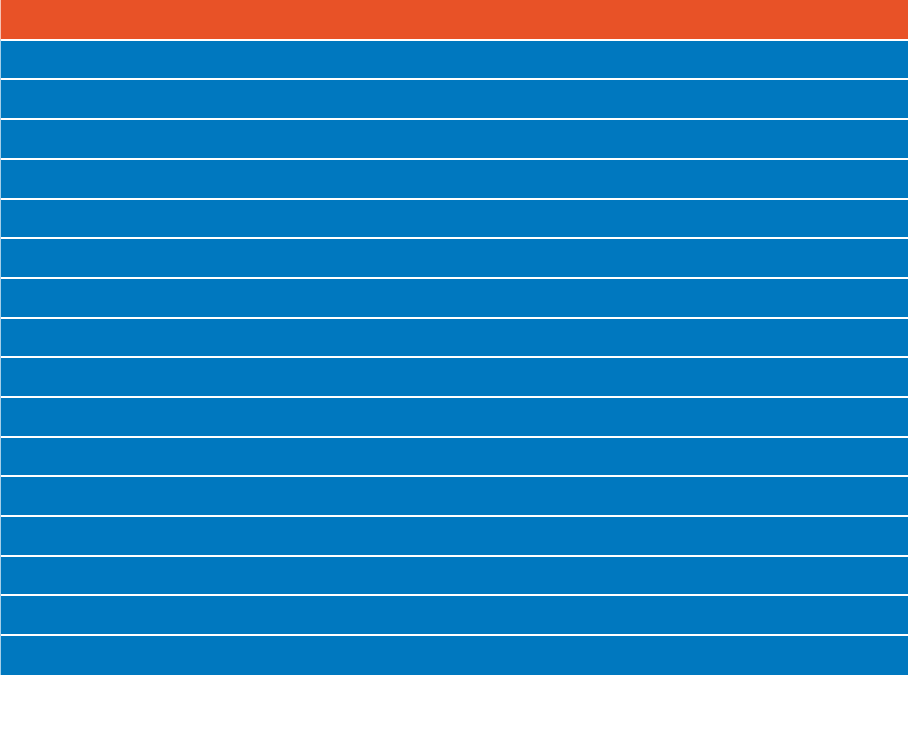
168
Table 85
Breakdown of project one spend by business area
Business area Proportion of budget (%)
Screen production-specific 39.83
Training and education 0.57
Digital services 7.33
Power and utilities 0.39
Business support 7.76
Real estate 5.07
Fashion and beauty 2.13
Hospitality and catering 5.95
Construction 6.28
Music and performing arts 12.05
Travel and transport 6.09
Safety and security 1.44
Finance and legal 2.17
Health and medical 0.72
Local labour misc. 2.22
Total 100.00
Note:
Figures may not sum to totals due to rounding
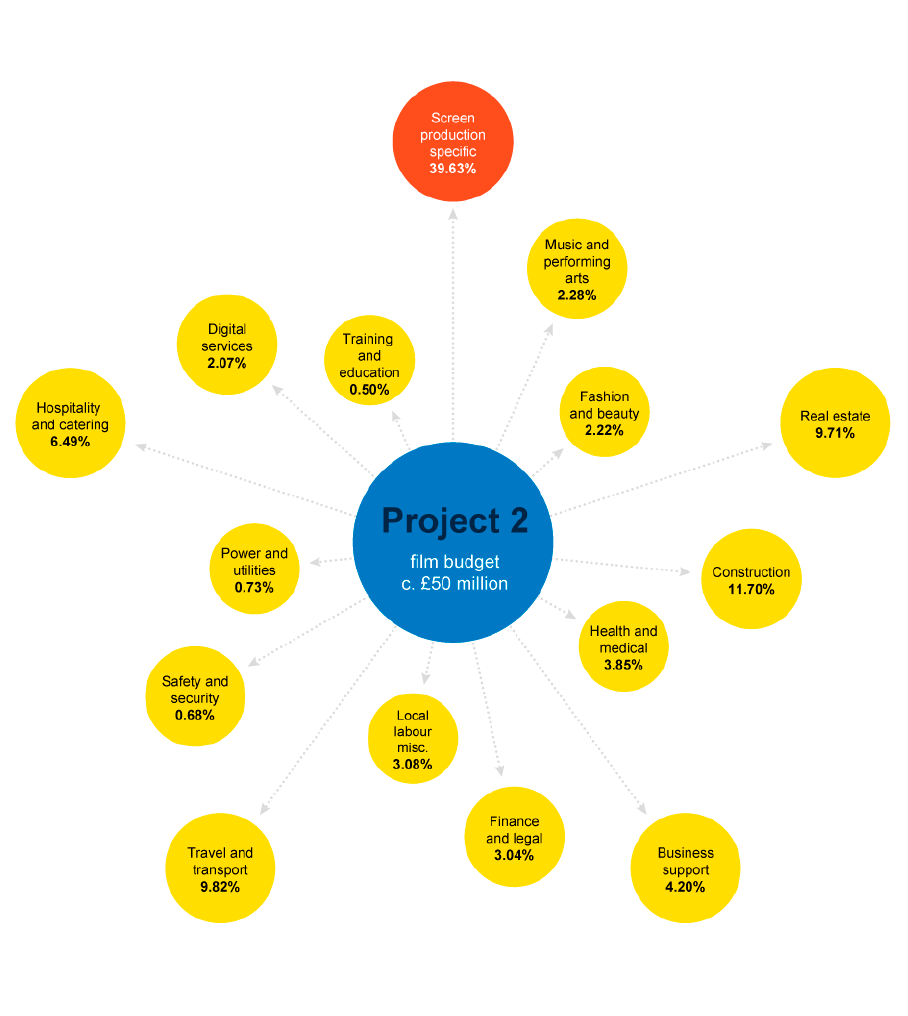
169
11.5. Project two
This project is a major international feature film with a total budget exceeding £50 million,
primarily shot in many locations in one of the UK’s nations. A particular legacy benefit of this
production came from a professional development scheme aimed at experienced crew members
to help them advance to the next level (head of department) within their specialism. The skills
development programme was sponsored by the national screen agency. On this film, as a result
of the scheme, an entire department team gained valuable experience and credibility on a major
production which has expanded the nation’s ability to accommodate more projects.
The figure and table below represent the analysis performed for this feature.
Figure 27
Breakdown of project two spend by business area
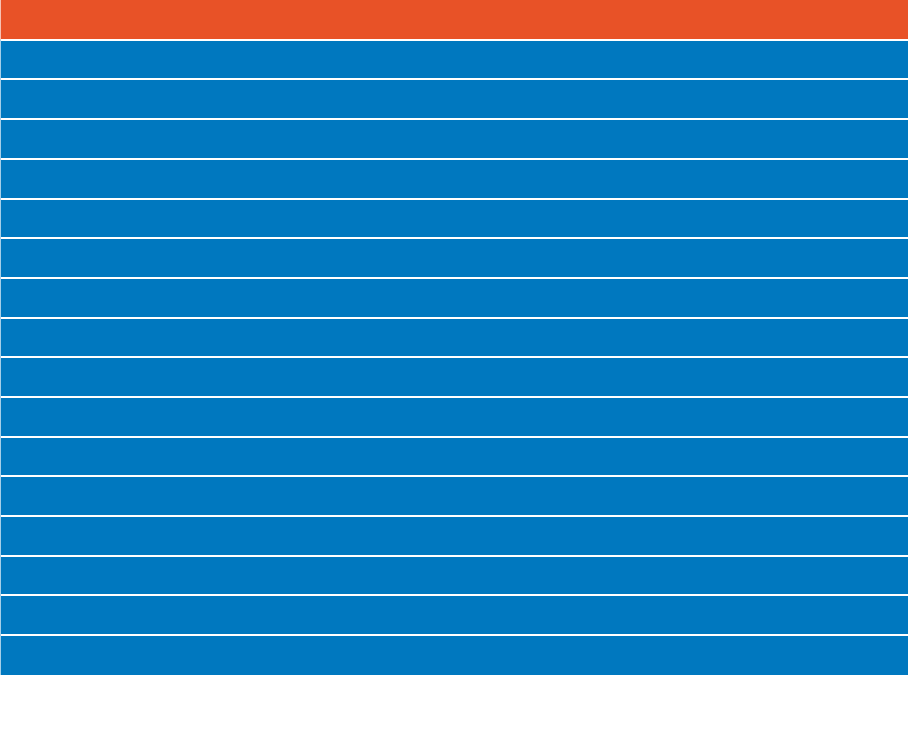
170
Table 86
Breakdown of project two spend by business area
Business area Proportion of budget (%)
Screen production-specific 39.63
Training and education 0.50
Digital services 2.07
Power and utilities 0.73
Business support 4.20
Real estate 9.71
Fashion and beauty 2.22
Hospitality and catering 6.49
Construction 11.70
Music and performing arts 2.28
Travel and transport 9.82
Safety and security 0.68
Finance and legal 3.04
Health and medical 3.85
Local labour misc. 3.08
Total 100.00
Note:
Figures may not sum to totals due to rounding
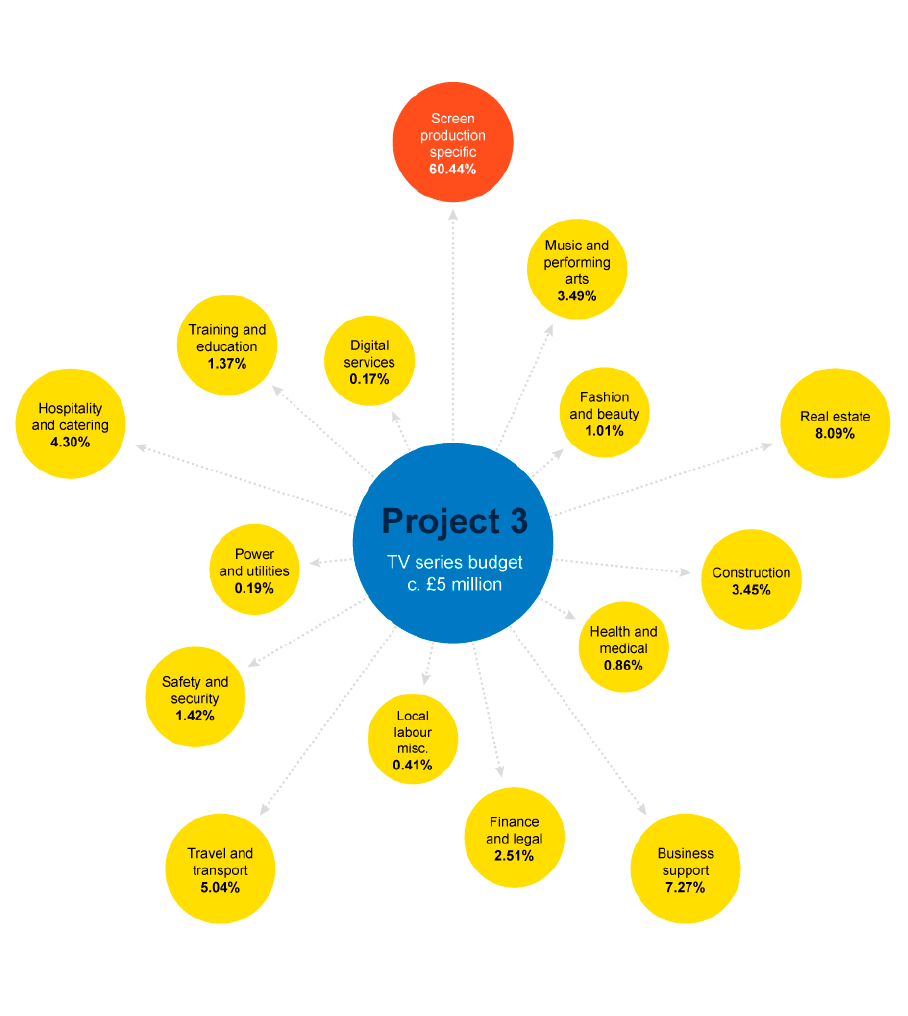
171
11.6. Project three
This is a modest UK television multi-part drama series, and this analysis covers one season
which cost less than £5 million to produce. All seasons were shot in another of the UK’s nations,
heavily featuring its specific, recognisable location. A particular legacy benefit of this popular
series is the impact its success has had on the independent production company, which is
based in the region. The positive financial results of the programme have enabled the company
to plan for a more sustainable future, giving it the resources to cashflow the tax relief and invest in
subsequent projects.
The figure and table below represent the analysis performed for this feature.
Figure 28
Breakdown of project three spend by business area
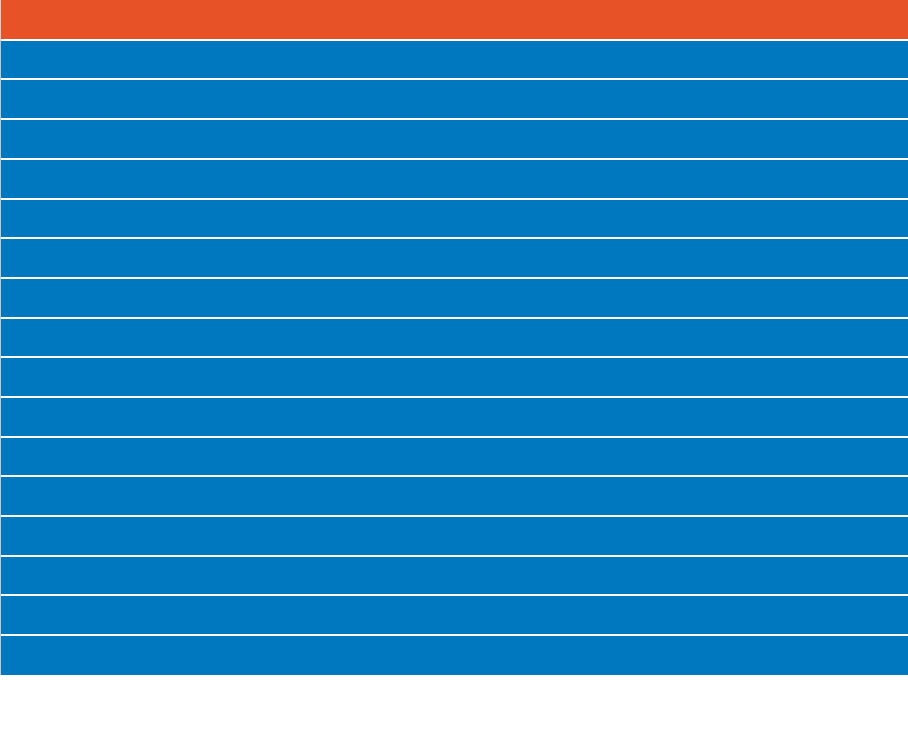
172
Table 87
Breakdown of project three spend by business area
Business area Proportion of budget (%)
Screen production-specific 60.44
Training and education 1.37
Digital services 0.17
Power and utilities 0.19
Business support 7.27
Real estate 8.09
Fashion and beauty 1.01
Hospitality and catering 4.30
Construction 3.45
Music and performing arts 3.49
Travel and transport 5.04
Safety and security 1.42
Finance and legal 2.51
Health and medical 0.86
Local labour misc. 0.41
Total 100.00
Note:
Figures may not sum to totals due to rounding

173
COMPARISON OF
GLOBAL PRODUCTION
INCENTIVES
12
For film, television and video games

174
The UK operates in a highly competitive global film, television and video games production
and development market in which many jurisdictions offer incentives. Typically, these incentive
systems are aimed at attracting high-value international projects as well as stimulating the
production of output from domestic producers.
The major production incentives worldwide (including those in the UK) are automatic, in that
they provide finance to a producer based on the amount of eligible expenditure that has been
undertaken according to the incentive legislation or guidelines.
This section provides a technical overview of a range of global incentives. It includes incentives
in established European Union (EU) markets, including France and Germany, incentives with
innovative approaches to attracting longer-term infrastructure investment (New Mexico, New
Jersey), and incentives with particularly attractive headline incentive rates. Consideration is also
given to incentives for video games development and VFX activity.
The analysis also notes where comparable incentives are relevant for foreign above-the-line
talent, such as filmmakers and actors. Such provisions can make incentives particularly attractive
to producers.
12.1. Context
While the UK is a significant screen production hub, it operates in an increasingly competitive
global marketplace. The potential of screen production as an economic driver has become
increasingly well recognised and, as a result, there has been an expansion in the number of
automatic incentives in operation globally at country, state, and province level.
184, 185
This is
outlined in the following figure.
184. Global incentives Index. Olsberg•SPI, published in World of Locations, July 2021. The Index can be accessed at: https://static1.
squarespace.com/static/5f7708077cf66e15c7de89ee/t/60e56888910595224bb11408/1625647246891/129-152_WOL+1+2021_
tax+Incentives+table%5B2%5D.pdf
185. As outlined in the previous section, automatic incentives provide funding to a producer or developer based on the amount of eligible
expenditure that has been undertaken, per the terms of the incentive legislation or guidelines
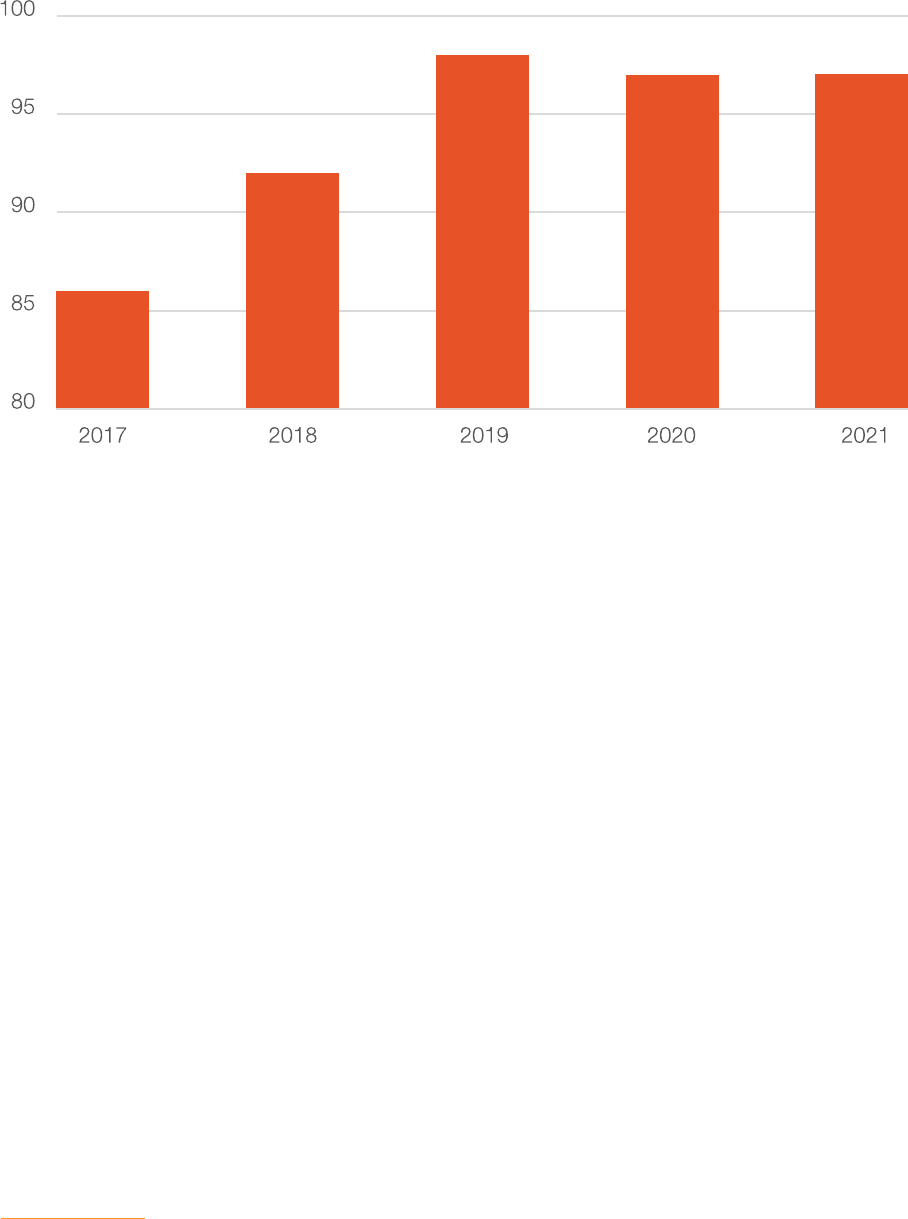
175
Figure 29
Number of automatic incentives worldwide, 2017-2021
Source: Global Incentives Index. Ibid
12.2. Cultural tests and the European Union’s
80% limit
In EU Member States, production incentives are governed by State Aid rules. Therefore, access
to such incentives often involves passing a cultural test because of State Aid requirements for
the aid to be directed towards a cultural product. Subsidiarity principles mean these tests vary
in each EU territory, but are broadly used to ensure that eligible productions fulfil a set of cultural
criteria, in addition to any genre-based or spend-based requirements (for example, minimum
spend thresholds in some Member States). The UK is no longer subject to State Aid rules (save
for certain limited exceptions in Northern Ireland primarily related to goods).
186
The UK continues
to use the sector-specific cultural tests – originally introduced when the UK was an EU
Member State.
The UK's cultural tests, for example, contain four sections:
• Cultural content (film/programme/game being set in the UK or European Economic Area
[EEA], or characters being British or EEA citizens or residents; British/EEA story or underlying
material; British/EEA language); for animation programmes, children’s television programmes
and video games, setting and characters also includes ‘undetermined setting’ (for example,
space and/or fantasy locations) and ‘undetermined characters’ – citizens or residents of the
undetermined location
• Cultural contribution (demonstration of ‘British creativity, British heritage and/or diversity’)
186. Article 10 of the Northern Ireland Protocol, which covers the movement of goods and wholesale electricity markets but not services,
states that certain EU State Aid rules apply where support measures affect goods trade between Northern Ireland and the EU. The rel-
evant rules, listed in Annex 5 to the Protocol, include the Cinema Communication and the General Block Exemption Regulation (GBER)
Number of incentives
86
92
98
97
97
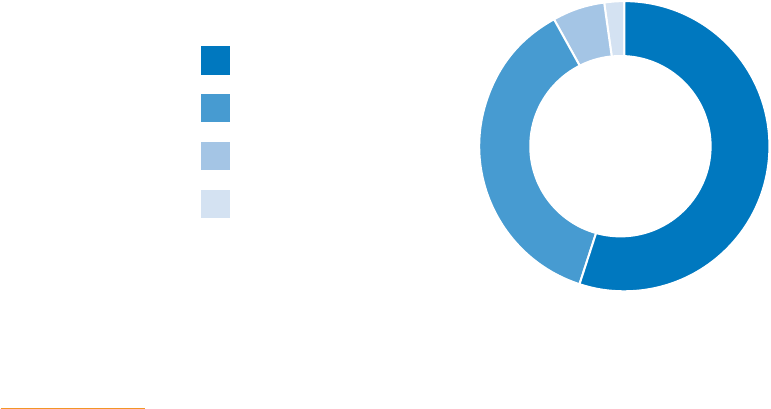
176
• Cultural hubs (principal photography/development etc and/or VFX and/or SFX in the UK;
music recording and/or audio post-production and/or picture post-production in the UK)
• Cultural practitioners (key personnel, cast and crew or development teams being British or
EEA citizens or residents)
187
Under EU State Aid rules, a single country’s incentive can only apply to a maximum of 80% of
the total production budget. This 80% limit is also written into UK law and therefore continues to
apply to the UK following its exit from the EU.
12.3. Best practice
While producers or video games developers decide where to site productions globally based
on a range of interrelated factors, ranging from creative requirements to workforce availability,
automatic production incentives are a cornerstone consideration given their role in offsetting
production costs and, therefore, risk.
The range of automatic production incentives operating internationally can be categorised within
one of the following models:
• Cash rebates, which repay an amount of qualifying production costs to a production, based
on a pre-determined formula, and funded directly from a state budget
• Refundable tax credits, which are set against the producer’s tax liabilities when a return is
filed, either reducing the liabilities or, if there are none, being paid in cash, in full. These are
referred to as tax ‘reliefs’ in the UK, and tax ‘offsets’ in Australia
• Transferable tax credits, which enable a producer to sell the tax credit received to eligible
taxpayers, which they can use to reduce tax liability
• Tax shelters, which are designed to attract investment from high tax-paying firms and
individuals, who are able to use the investment to reduce their tax liabilities
As outlined in Figure 30, the majority of systems in use globally are structured as cash rebates.
Figure 30
Global production incentives by type, 2021
Source: Olsberg•SPI
Notes: ‘tax credit’ includes refundable and transferable tax credits; ‘mixed’ refers to jurisdictions which offer both a tax credit
and a cash rebate, for example, or a similar combination
187.The UK’s Cultural tests vary by sector. For more information, the cultural tests are accessible on the BFI’s website: https://www.bfi.
org.uk/apply-british-certification-tax-relief
Cash rebate
Tax Credit
Mixed
Tax Shelter
2%
6%
55%
37%

177
While an incentive’s headline rate – ie the percentage that determines the incentive amount – is a
critical consideration, it is not the only factor that influences how impactful a system is.
Given the risk involved in production and development, stability and reliability of an incentive
is key. Uncapped systems, such as the UK’s, offer particular certainty, since there is no risk of
the incentive budget being fully exhausted by other projects (as can be the case with capped
incentives). Stable incentives, such as the UK’s, have been proven to function well over a number
of years. This means that producers can accurately budget against the incentive and have
confidence that there is unlikely to be any sudden change to the incentive system
during production.
Another best practice element is that the administration of an incentive is clear and
straightforward, and that payment is automatic, predictable and timely.
188
12.4. Summary of comparable analysis
The following table provides headline information on incentives offered in key competitor markets
to the UK. The information is accurate as of July 2021.
• The ‘Type’ is the category of incentive, as described in Section 12.3.
• The ‘Value’ is the percentage used to calculate the incentive
• ‘Additional Value’ refers to bonuses offered in some jurisdictions for meeting additional (non-
mandatory) criteria
• The ‘Project Cap’ is, where relevant, the maximum incentive available to a single project
• The ‘Annual Budget or Cap’ is the total funding allocated to the incentive by government in a
given year
188. More detailed analysis of best practice in incentive design and administration can be found in Best Practice in Screen Sector
Development, a study undertaken for the Association of Film Commissioners International (AFCI) by Olsberg•SPI and published in
September 2019
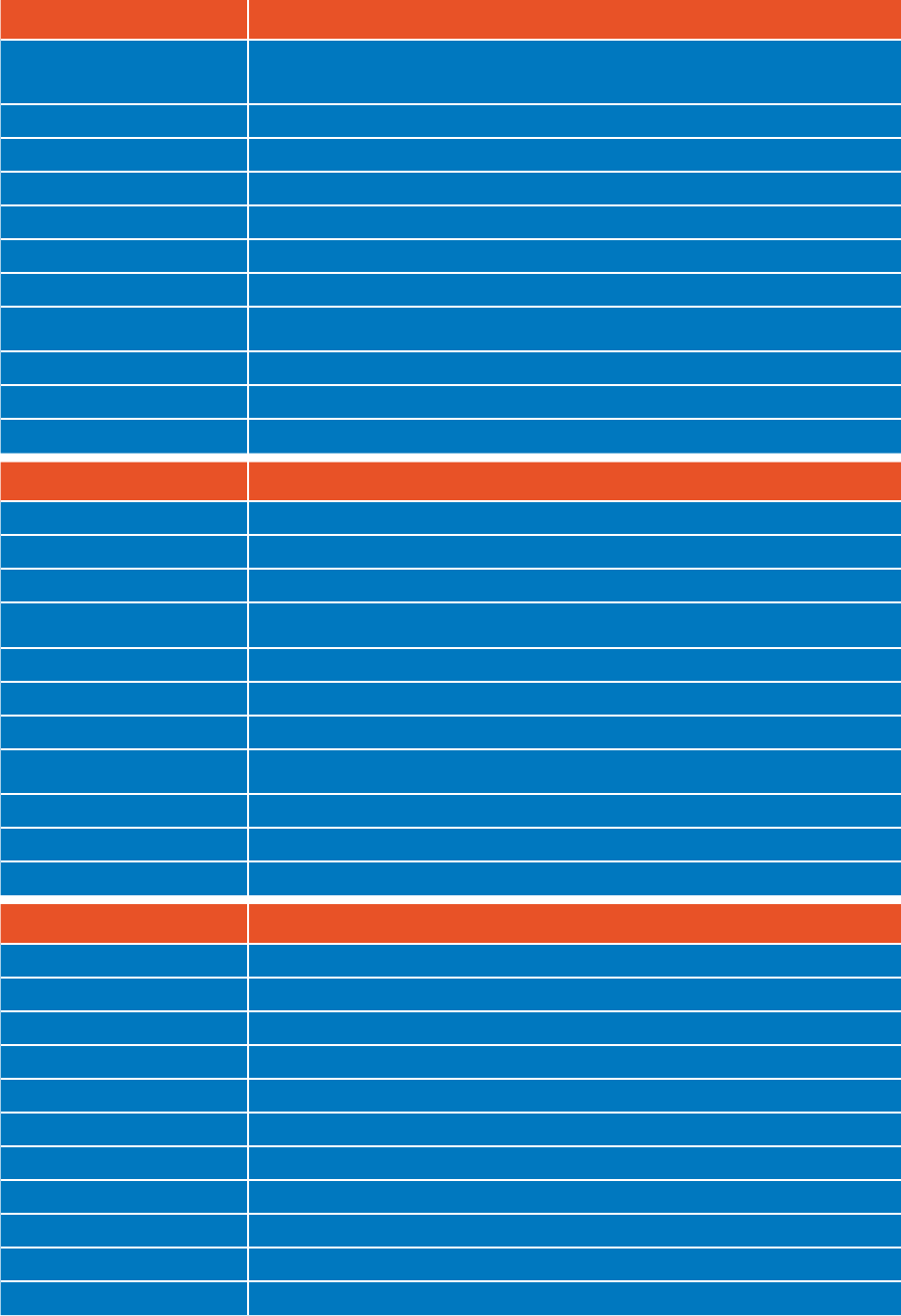
178
Table 88
Summary of comparable film, television and video games incentive systems
Jurisdiction
United Kingdom
Name of incentive
Creative Sector Tax Reliefs: Film Tax Relief (FTR), High-end Television Tax Relief (HETR),
Animation Tax Relief (ATR), Children’s Television Tax Relief (CTR) and Video Games Tax
Relief (VGTR)
Type
Tax Credit
Value
25%
Additional value
-
Project cap
None
Annual budget or cap
None
Application deadline
None
Eligible formats
Film, high-end television (HETV), animation programmes, children’s television programmes,
video games
Foreign above-the-line eligibility?
Yes
Applicable to VFX?
Yes
Applicable to VFX-only projects?
Yes
Jurisdiction
Australia
Name of incentive
Location Offset (previously known as the Refundable Film Tax Offset)
Type
Tax credit
Value
16.5%
Additional value
13.5% additional value available through the Location Incentive Program, with separate terms
and conditions
Project cap
None
Annual budget or cap
None
Application deadline
Ongoing
Eligible formats
Feature film or film of like nature, for example, telemovie; miniseries of television drama;
or television series (including documentary)
Foreign above-the-line eligibility?
Yes
Applicable to VFX?
Yes
Applicable to VFX-only projects?
No
Jurisdiction
Australia
Name of incentive
Producer Offset
Type
Tax credit
Value
40% for features released theatrically; 30% for other productions
Additional value
None
Project cap
None
Annual budget or cap
None
Application deadline
Ongoing
Eligible formats
Feature film, documentaries, series
Foreign above-the-line eligibility?
Yes
Applicable to VFX?
Yes
Applicable to VFX-only projects?
Yes
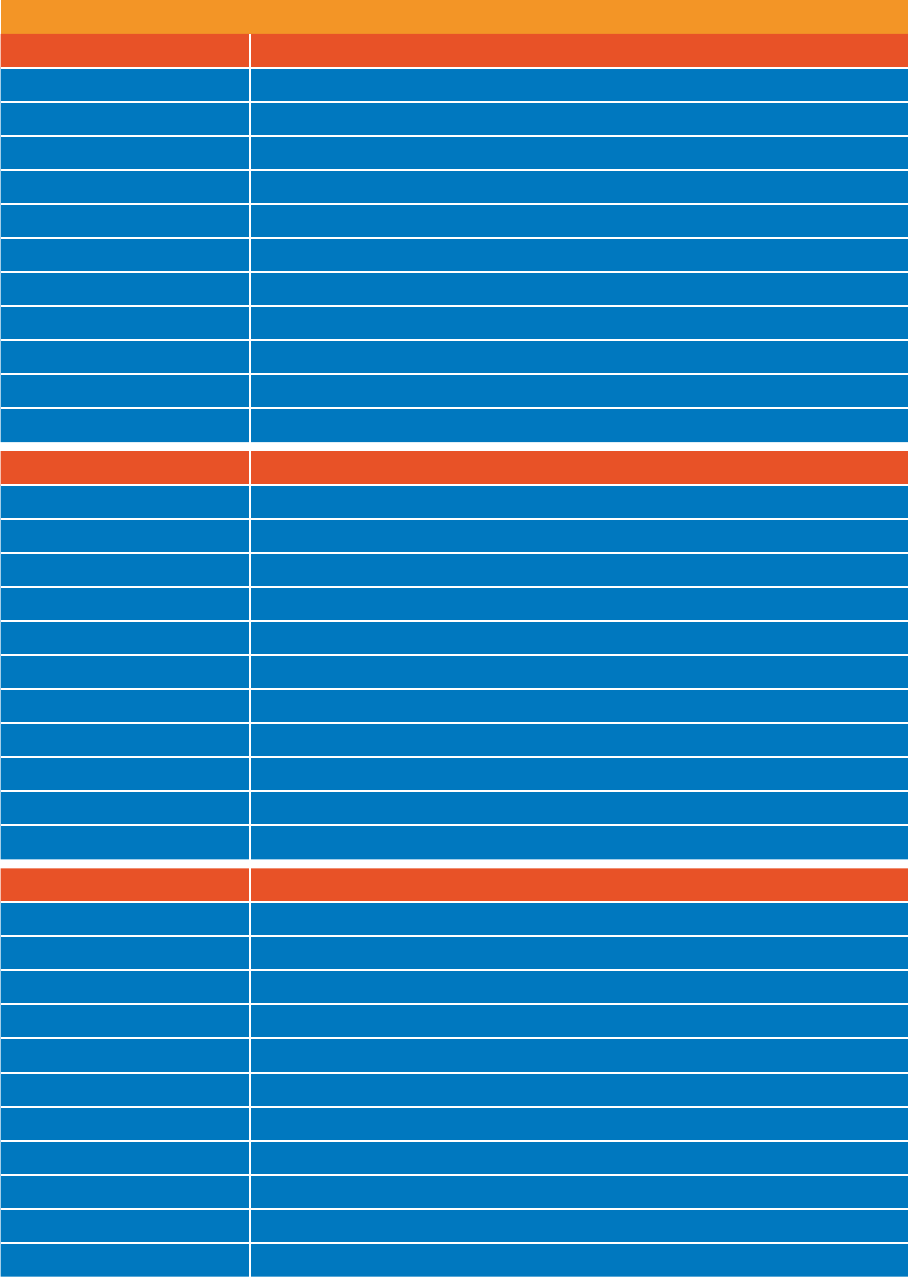
179
Canada
Jurisdiction
Canada
Name of incentive
Film or Video Production Services Tax Credit (PSTC)
Type
Refundable tax credit
Value
16% of qualified Canadian labour
Additional value
Stackable with Canada’s provincial tax credits
Project cap
None
Annual budget or cap
None
Application deadline
Ongoing
Eligible formats
Linear audiovisual productions (for example, film, television series, documentaries)
Foreign above-the-line eligibility?
No
Applicable to VFX?
Yes
Applicable to VFX-only projects?
Yes
Jurisdiction
Ontario
Name of incentive
Ontario Interactive Digital Media Tax Credit (OIDMTC)
Type
Tax credit
Value
35% - 40%
Additional value
-
Project cap
None
Annual budget or cap
None
Application deadline
Ongoing
Eligible formats
Video games
Foreign above-the-line eligibility?
N/A
Applicable to VFX?
N/A
Applicable to VFX-only projects?
N/A
Jurisdiction
Quebec
Name of incentive
Quebec Production of Multimedia Titles Tax Credit (CTMM)
Type
Tax credit
Value
30% base rate
Additional value
Additional 7.5% if the title is available in French
Project cap
None
Annual budget or cap
None
Application deadline
Ongoing
Eligible formats
Video games
Foreign above-the-line eligibility?
N/A
Applicable to VFX?
N/A
Applicable to VFX-only projects?
N/A
Table 88
Summary of comparable film, television and video games incentive systems
(continued)
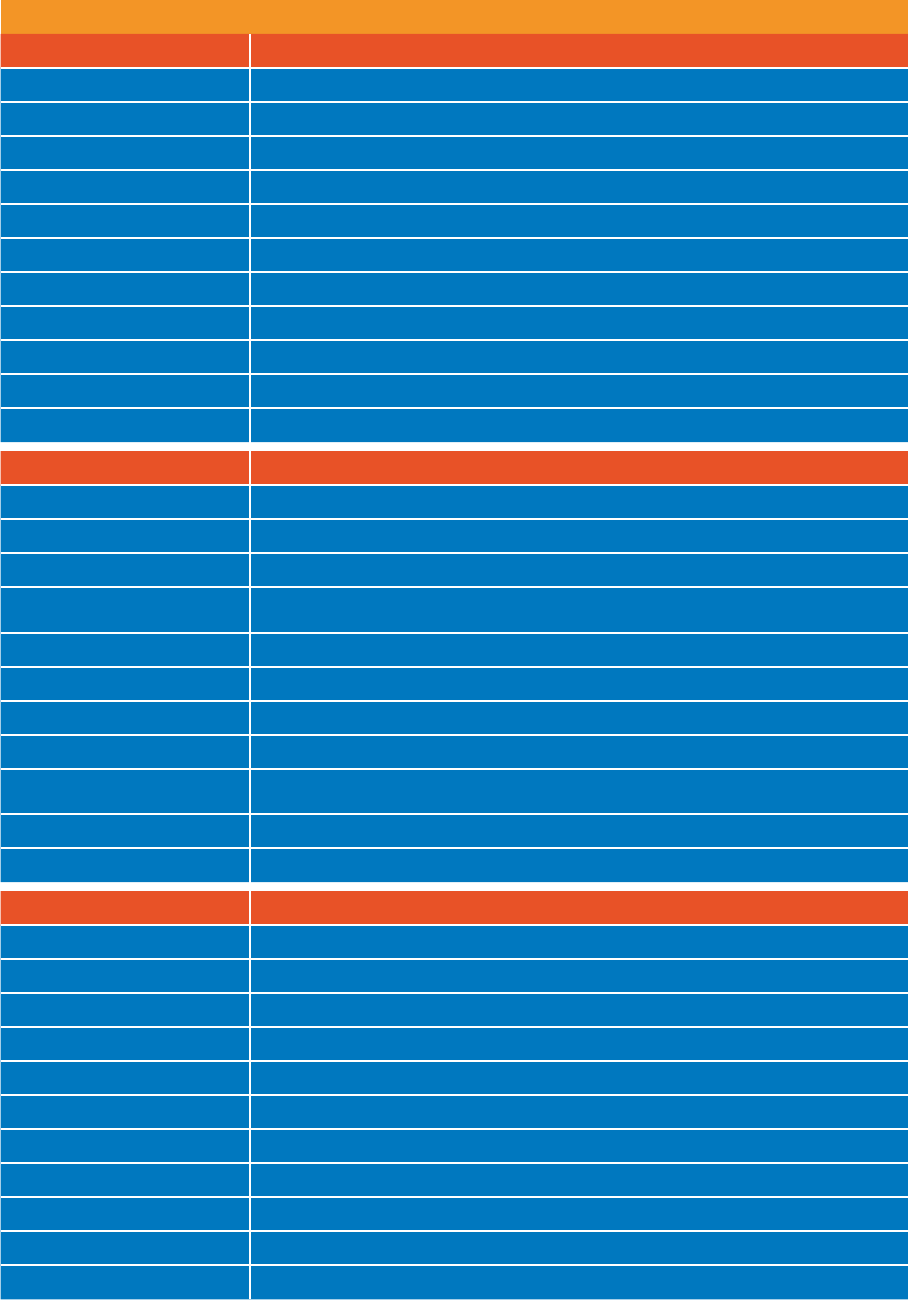
180
Canada (continued)
Jurisdiction
British Columbia
Name of incentive
The Interactive Digital Media Tax Credit (IDMTC)
Type
Tax credit
Value
17.5%
Additional value
-
Project cap
None
Annual budget or cap
None
Application deadline
Ongoing
Eligible formats
Video games
Foreign above-the-line eligibility?
N/A
Applicable to VFX?
N/A
Applicable to VFX-only projects?
N/A
Jurisdiction
France
Name of incentive
Tax Rebate for International Productions (TRIP)
Type
Tax credit
Value
30%
Additional value
10% VFX uplift which applies to all French spend. Must be a live-action film and include a
substantial amount of digital visual effects work inFrance
Project cap
€30 million
Annual budget or cap
None
Application deadline
No application deadline
Eligible formats
Live action production, animation production
Foreign above-the-line eligibility?
Wages paid to French or EU writers and actors and salaries paid to French or EU directors
and production staff
Applicable to VFX?
Yes
Applicable to VFX-only projects?
Yes
Jurisdiction
France
Name of incentive
Tax Credit for Video Games (CIJV)
Type
Tax credit
Value
30%
Additional value
-
Project cap
A maximum annual threshold of €6 million per company
Annual budget or cap
None
Application deadline
Ongoing
Eligible formats
Video games
Foreign above-the-line eligibility?
N/A
Applicable to VFX?
N/A
Applicable to VFX-only projects?
N/A
Table 88
Summary of comparable film, television and video games incentive systems
(continued)
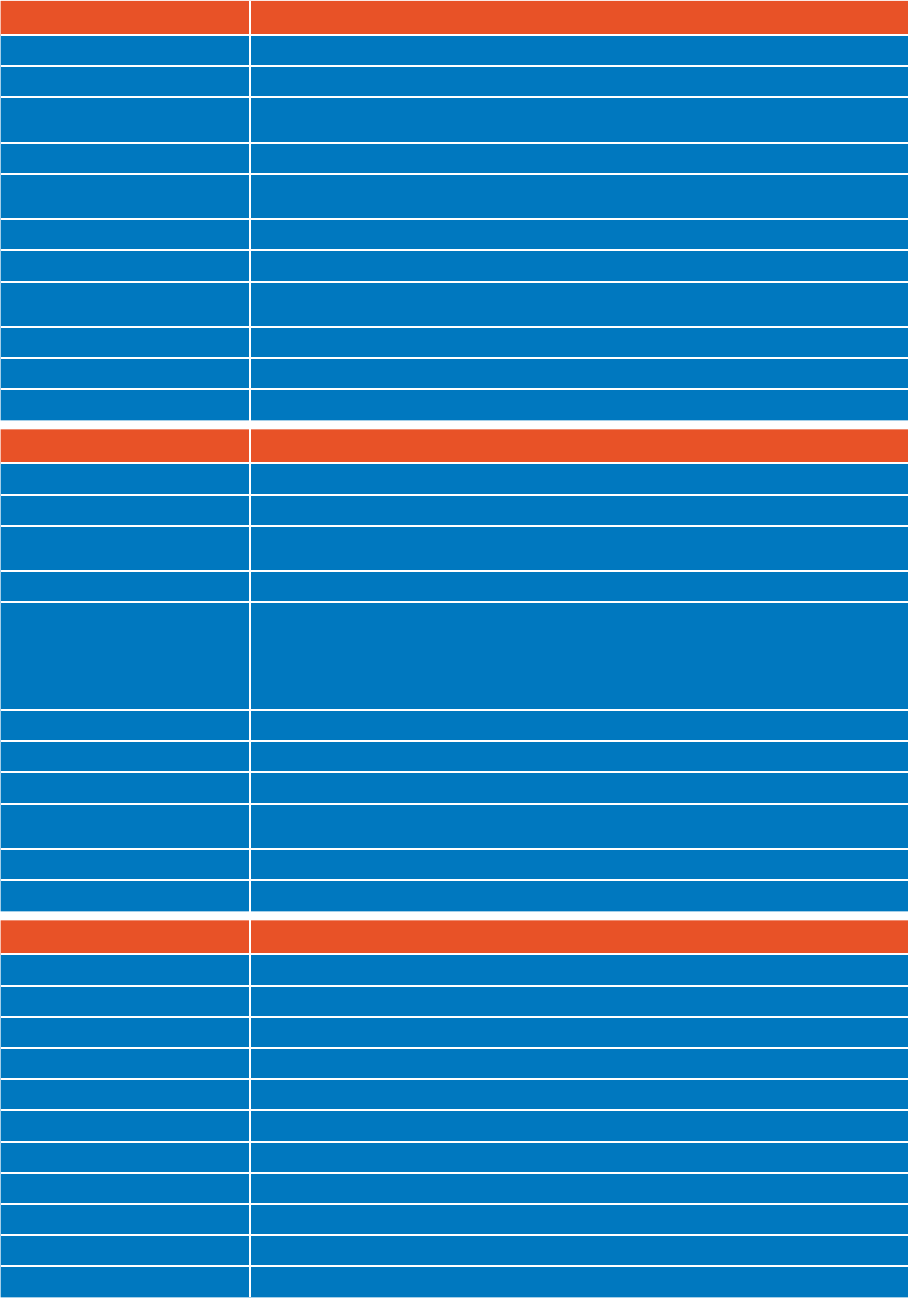
181
Jurisdiction
Germany
Name of incentive
German Federal Film Fund (DFFF)
Type
Rebate
Value
DFFF I: 20%
DFFF II: 25%
Additional value
DFFF I is worth 25% for projects with German production costs of more than €8 million
Project cap
DFFF I: €4 million
DFFF II: €25 million
Annual budget or cap
€120 million
Application deadline
DFFF I and II: no later than six weeks before the start of filming
Eligible formats
DFFF I: Film, documentaries
DFFF II: Film
Foreign above-the-line eligibility?
Yes
Applicable to VFX?
Yes (for virtually animated components, German production costs of at least €2 million)
Applicable to VFX-only projects?
Yes
Jurisdiction
Germany
Name of incentive
German Motion Picture Fund (GMPF)
Type
Rebate
Value
Series: 20% on German production costs
Film: 20% on German production costs
Additional value
-
Project cap
€2.5 million per series; or €4 million for series with German costs in excess of €20 million
For series with German costs of at least €24 million and which score 70 points or more in the
cultural test, the per-project cap is: €6 million if German production costs are less than
€32 million; €8 million if German production costs are less than €40 million; or €10 million if
German production costs exceed €40 million
Annual budget or cap
€50 million for 2021
Application deadline
Six weeks before the start of filming
Eligible formats
Television series, film (television or VoD, not for cinema release)
Foreign above-the-line eligibility?
Wages, salaries and fees are recognised as German production costs, provided that they
are subject to unrestricted or restricted tax liability in Germany
Applicable to VFX?
Yes
Applicable to VFX-only projects?
Yes
Jurisdiction
Greece
Name of incentive
Greek Cash Rebate
Type
Cash rebate
Value
40%
Additional value
-
Project cap
None
Annual budget or cap
€75 million available for the period 2018-2022
Application deadline
None
Eligible formats
Feature films, documentaries, TV drama series, animated films, digital games
Foreign above-the-line eligibility?
Yes
Applicable to VFX?
Yes
Applicable to VFX-only projects?
Yes
Table 88
Summary of comparable film, television and video games incentive systems
(continued)
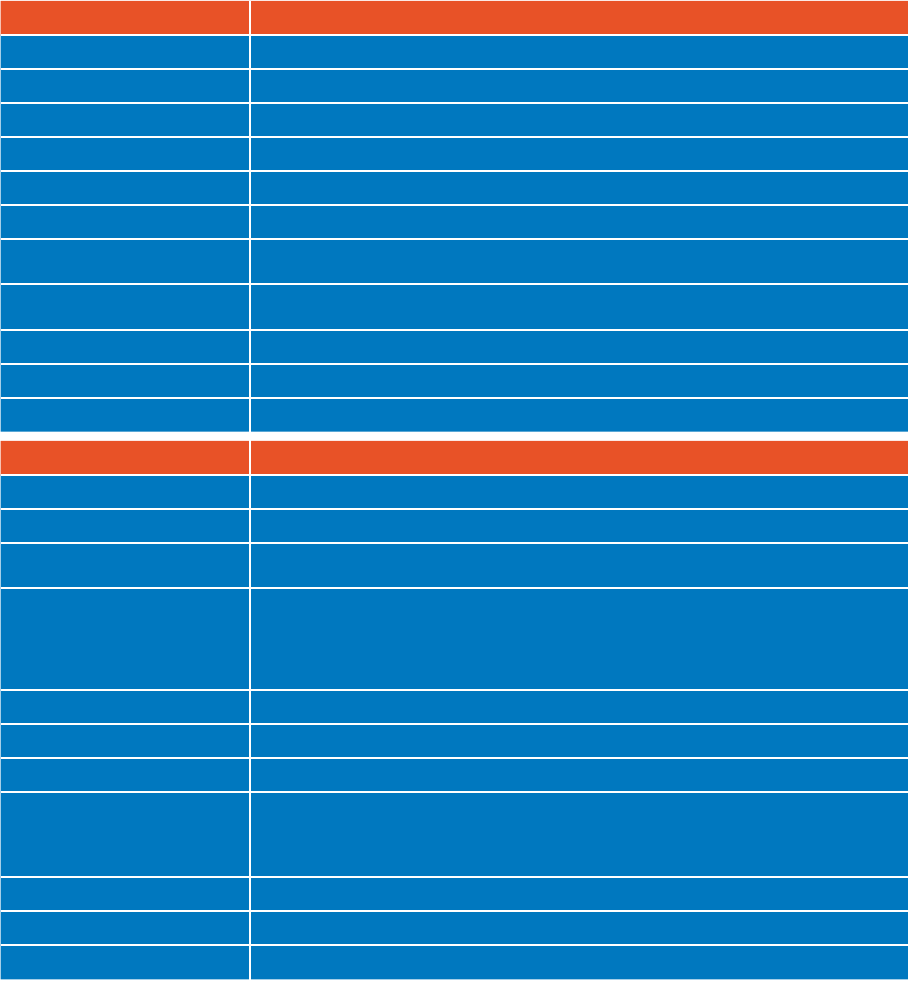
182
Jurisdiction
Hungary
Name of incentive
Hungarian Tax Rebate for Film Productions
Type
Rebate
Value
30%
Additional value
7.5% non-Hungarian spend
Project cap
N/A
Annual budget or cap
HUF33 billion
Application deadline
Registration and cultural test: 40-50 days before filming
Subsidy request: 30 days before filming
Eligible formats
Films of all genres made for cinema release; feature films, series, documentaries and
animations made for television or other distribution platforms
Foreign above-the-line eligibility?
Yes (wages, above- and below-the-line, are eligible)
Applicable to VFX?
Yes
Applicable to VFX-only projects?
Yes
Jurisdiction
New Zealand
Name of incentive
New Zealand Screen Production Grant
Type
Cash rebate
Value
The baseline International Grant is worth 20%. For PDV productions, the grant is worth 20%
up to NZ$25 million in qualifying expenditure, thereafter 18%
Additional value
Live action productions that are invited to apply for a 5% uplift in addition to the International
Grant will receive a total International Grant worth 25% of qualifying expenditure. Productions
must offer significant economic benefits to New Zealand. The applicant must have previously
incurred qualifying expenditure of at least NZ$100 million in the five years prior to the date,
and the production must have qualifying expenditure of at least NZ$30 million
Project cap
None
Annual budget or cap
None
Application deadline
Ongoing
Eligible formats
Feature film, single-episode programmes (ie telefeature or feature not primarily intended for
exhibition to the public in cinemas) including drama, documentary, factual, reality, children’s
and animation; series or season of a series, including drama, documentary, factual, reality,
children’s and animation. PDV productions must also be an eligible format
Foreign above-the-line eligibility?
Up to 20% of total qualifying expenditure
Applicable to VFX?
Yes
Applicable to VFX-only projects?
Yes
Table 88
Summary of comparable film, television and video games incentive systems
(continued)
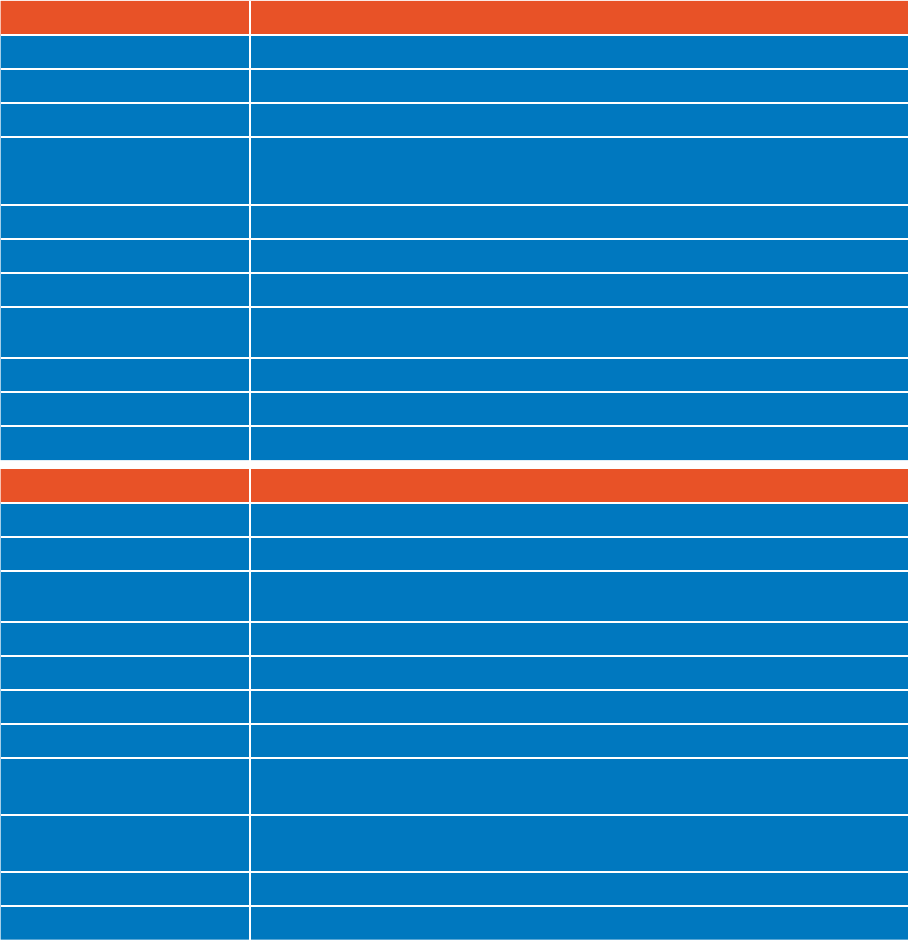
183
Jurisdiction
Republic of Ireland
Name of incentive
Section 481
Type
Tax credit
Value
32%
Additional value
5% Regional Uplift. Projects substantially produced in the regions (outside Dublin/Wicklow
and Cork City and County) benefit from or up to 5% uplift subject to specific training related
requirements. The 5% uplift applies in 2020and 2021, 3% in 2022and 2% in 2023
Project cap
The maximum qualifying expenditure per project is €70 million
Annual budget or cap
None
Application deadline
N/A
Eligible formats
Feature film, television drama (singles or series), animation (excluding computer games) and
creative documentaries
Foreign above-the-line eligibility?
Yes
Applicable to VFX?
Yes
Applicable to VFX-only projects?
Yes
Jurisdiction
Spain
Name of incentive
Rebates for Investments in Film and Television Series
Type
Rebate
Value
30% for the first €1 million of eligible expenditure and 25% for the remaining
eligible expenditure
Additional value
-
Project cap
€10 million
Annual budget or cap
None
Application deadline
The refund must be applied for during the month of July of the year after the end of filming
Eligible formats
Beneficiaries: Spanish companies which are registered in the Film and Audiovisual Arts
Institute's register of audiovisual producers
Foreign above-the-line eligibility?
Creative personnel registered to pay tax in Spain or in the European Economic Area
Expenses are limited to €100,000 per person
Applicable to VFX?
Yes
Applicable to VFX-only projects?
Yes
Table 88
Summary of comparable film, television and video games incentive systems
(continued)
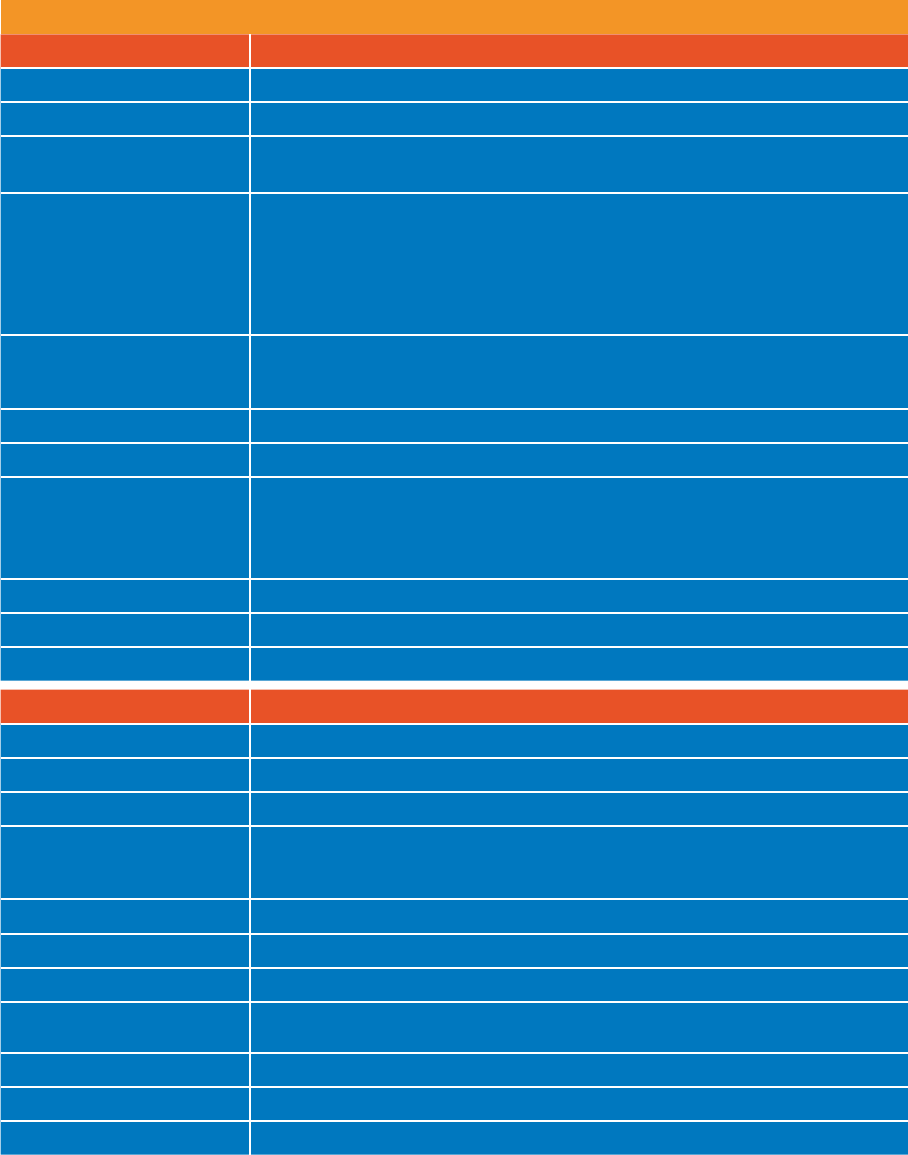
184
United States
Jurisdiction
California
Name of incentive
Film & Television Tax Credit Program 3.0
Type
Tax credit
Value
25% non-transferable tax credit for relocating TV series
25% transferable tax credit for independent films
Additional value
5% visual effects uplift for eligible television projects (except relocating TV series) and
feature films
5% out of zone uplift for eligible television projects (except relocating TV series) and
feature films that film outside the ‘Los Angeles zone’
5% local hire labour uplift for eligible independent films and relocating TV series
10% local hire labour uplift for eligible non-independent production
Project cap
The tax credits apply to the first $100 million of qualified expenditures for non-independent
films and TV series. For independent films, the credits apply to the first $10 million of
qualified expenditures
Annual budget or cap
$330 million
Application deadline
Multiple application periods per year
Eligible formats
TV series, pilots, miniseries
Non-independent films
Relocating TV series
Independent films
Foreign above-the-line eligibility?
No
Applicable to VFX?
Yes
Applicable to VFX-only projects?
No
Jurisdiction
Georgia
Name of incentive
Entertainment Industry Tax Credit
Type
Transferable tax credit
Value
20% base
Additional value
A 10% Georgia Entertainment Promotion (GEP) uplift can be earned by including an
embedded Georgia logo on approved projects and a link to ExploreGeorgia.org/Film on the
project's landing page
Project cap
None
Annual budget or cap
None
Application deadline
Ongoing
Eligible formats
Eligible projects include feature films; television films, pilots or series; televised specials;
televised commercials; and music videos that are distributed outside of Georgia
Foreign above-the-line eligibility?
Yes
Applicable to VFX?
Yes
Applicable to VFX-only projects?
No (must be shot in Georgia to qualify for VFX)
Table 88
Summary of comparable film, television and video games incentive systems
(continued)
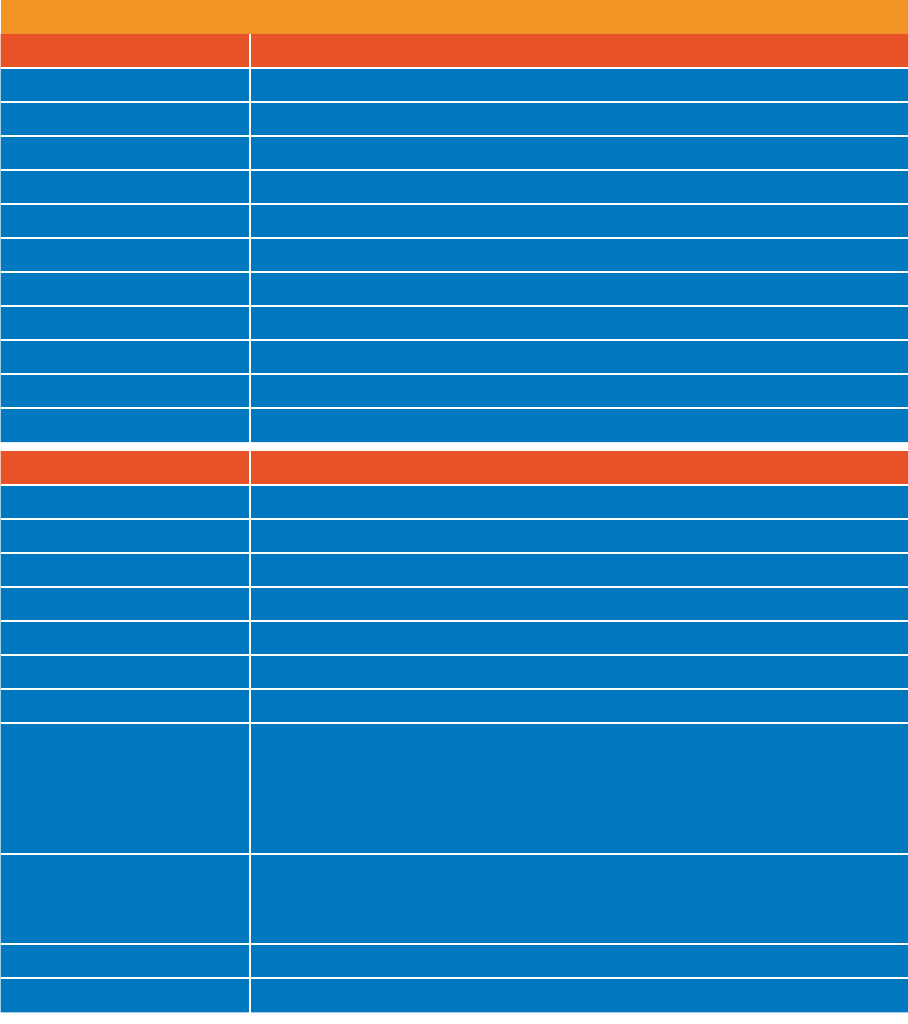
185
United States (continued)
Jurisdiction
Louisiana
Name of incentive
Digital Interactive Media and Software Program
Type
Tax credit
Value
18%
Additional value
Additional 7% for qualified payroll for in-state labour
Project cap
-
Annual budget or cap
-
Application deadline
Ongoing
Eligible formats
Video games
Foreign above-the-line eligibility?
N/A
Applicable to VFX?
N/A
Applicable to VFX-only projects?
N/A
Jurisdiction
New Jersey
Name of incentive
New Jersey Film & Digital Media Tax Credit Program
Type
Tax credit
Value
30%
Additional value
Rate is 35% in certain counties. Additional 2% if diversity plan is submitted and achieved
Project cap
-
Annual budget or cap
$100 million
Application deadline
Rolling deadline – first come, first served
Eligible formats
Feature film
Television series
Television show of 22 minutes or more in length, intended for a national audience
Television series or a television show of 22 minutes or more in length intended for a national
or regional audience, including, but not limited to, a game show, award show, or other gala
event filmed and produced at a non-profit arts and cultural venue receiving State funding
Foreign above-the-line eligibility?
Excluded are payments in excess of $500,000 made to highly compensated individuals
for costs of a story, script, or scenario used in the production of a film; and for wages or
salaries or other compensation for writers, directors, including music directors, producers,
and performers
Applicable to VFX?
Yes
Applicable to VFX-only projects?
Yes
Table 88
Summary of comparable film, television and video games incentive systems
(continued)
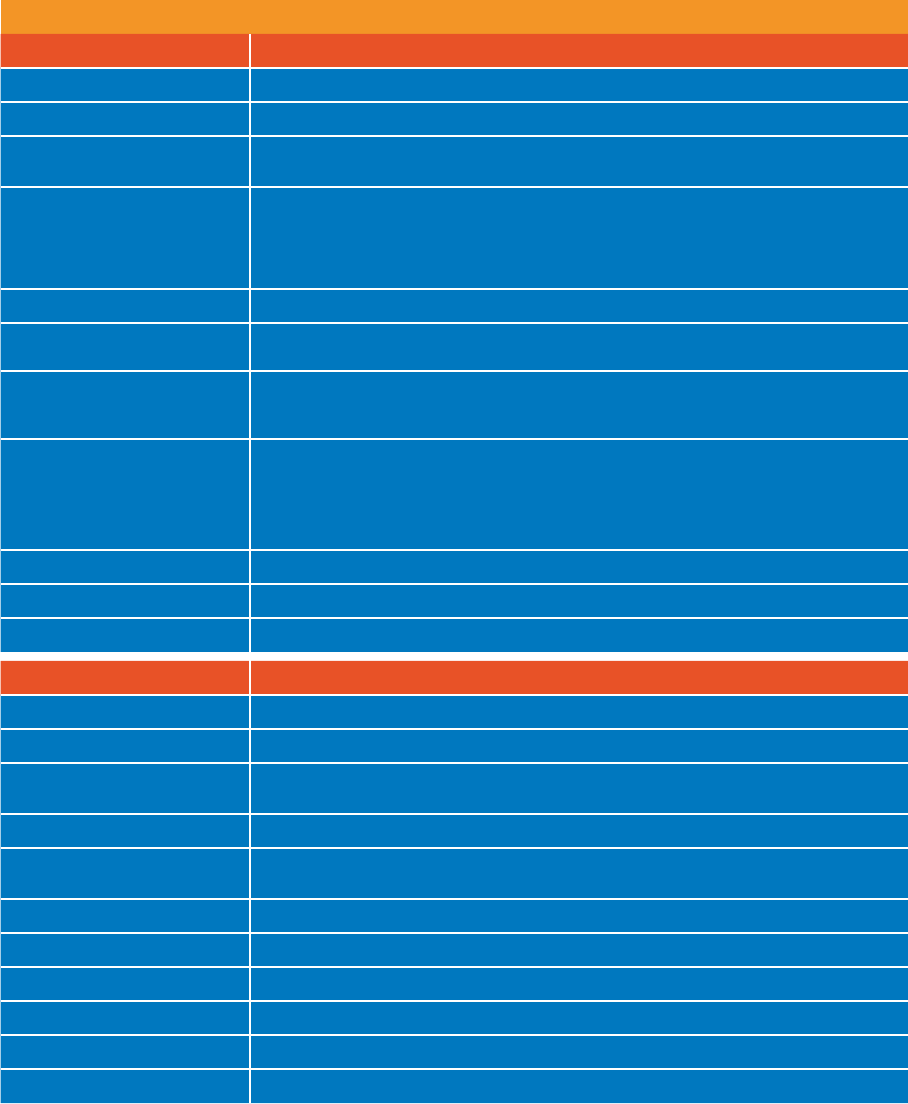
186
United States (continued)
Jurisdiction
New Mexico
Name of incentive
New Mexico Film and Television Tax Credit
Type
Tax credit
Value
25%
15% for non-resident industry crew wages when certain criteria are met
Additional value
5% for television series productions
5% if certain criteria are met regarding the use of qualified production facilities
5% for production expenditures in the state at least 96km outside of the exterior boundaries
of Bernalillo and Santa Fe counties
Project cap
None
Annual budget or cap
$110 million per year with $100 million backlog cap. New Mexico Film Partners exempt
from cap
Application deadline
The film production company must apply for the credit within one year of the date of the last
direct production expenditure in New Mexico or the last post-production expenditures in
New Mexico
Eligible formats
Projects must be film or commercial audiovisual products:
Feature films, Independent films, Television (MOW, pilots, series, reality), certain commercials
and EPKs, Documentaries, Student films, Short films, Animation, Video games, Webisodes,
Music videos, Infomercials, Content-based mobile apps, VR, Multi-media, New media,
Standalone post-production
Foreign above-the-line eligibility?
No (New Mexico residents only)
Applicable to VFX?
Yes
Applicable to VFX-only projects?
Yes
Jurisdiction
Pennsylvania
Name of incentive
Video Game Production Tax Credit (VGPTC)
Type
Tax credit
Value
25% for first four years
10% each subsequent year
Additional value
-
Project cap
There is a $1 million cap on the aggregate amount of compensation paid to individuals or
entities representing an individual for services provided in the production of a video game
Annual budget or cap
$1 million
Application deadline
Ongoing
Eligible formats
Video games
Foreign above-the-line eligibility?
N/A
Applicable to VFX?
N/A
Applicable to VFX-only projects?
N/A
Table 88
Summary of comparable film, television and video games incentive systems
(continued)

187
12.5. Summary of the UK’s Creative Sector
Tax Reliefs
The UK’s Creative Sector Tax Reliefs are split into eight separate incentive systems. The five
incentives evaluated as part of this research are for film, HETV, children’s television programmes,
animation programmes, and video games.
189
The rules for each system vary, but across each incentive a tax relief rate of 25% is offered. For
example, HETR has a unique requirement for productions to spend at least £1 million per hour of
slot length in order to be eligible.
12.6. Australia
Australia has a range of incentives administered at a federal and state level. The two major
incentives for international productions are the automatic Location Offset (previously the
Refundable Film Tax Offset) and the Location Incentive.
The Location Offset is worth 16.5% of eligible expenditure, and the Location Incentive is worth
13.5%. The two incentives can be used in conjunction with each other, resulting in an incentive
worth 30% of eligible expenditure in Australia.
Whereas the Location Offset is an automatic incentive much like the UK’s – it is a refundable
tax rebate, and there is no annual limit on the amount of incentives which can be given – the
Location Incentive is a merit-based cash grant system, which has stricter requirements and a
finite budget. In July 2020, the Location Incentive budget was topped up by AU$400 million over
seven years by the Federal Government (ie as a set amount, not annually recurring).
The advantage of the Australian system is that effectively all productions can access the Location
Offset but are encouraged, using the additional Location Incentive, to meet additional, strategic
criteria. To be eligible for the Location Incentive, productions must be eligible for the Location
Offset and, in addition, must:
• Utilise the services of one or more Australian post, sound, music or visual effects provider
• Secure support from relevant state or territory governments
• Meet or exceed the expenditure threshold, which is AU$15 million of qualifying Australian
production expenditure (QAPE). A television series must also have a minimum average QAPE
of AU$1 million per hour
For post-production, digital, and visual effects (PDV) work in Australia, productions can access
the Offset: a refundable tax credit worth 30% of qualifying expenditure in those areas. The PDV
incentive can be combined with state and territory government incentives, and in recent years
New South Wales, South Australia, Victoria and Queensland have launched 10% uplifts on
eligible in-state PDV expenditure. In June 2021, Queensland committed an additional
AU$10 million over two years towards the PDV incentive, increasing the rate to 15%.
189. The other reliefs are for theatrical productions, orchestral concerts and museum or gallery exhibitions. Accessible at: https://www.
gov.uk/guidance/corporation-tax-creative-industry-tax-reliefs

188
Australia also offers the Producer Offset for domestic productions with significant Australian
content. It is structured as a tax credit, worth 40% for theatrically released feature films, and,
since 1 July 2021, worth 30% for all other eligible formats (previously, it was worth 20% for
this category).
Currently Australia does not offer an incentive for video games. However, in May 2021 the
Australian Government committed to a 30% refundable tax offset in the 2021-22 Federal budget.
Available from 1 July 2022, the offset will be for eligible businesses that spend a minimum of
AU$500,000 on qualifying Australian games expenditure.
190
12.7. Canada
Canada offers a range of automatic incentives, administered at both federal and provincial
levels (provinces offering incentives are Alberta, British Columbia, Manitoba, New Brunswick,
Newfoundland and Labrador, Nova Scotia, Ontario, Quebec and Yukon). Individually, these
incentives can appear relatively small in terms of headline percentage, but productions may
'stack' provincial and federal incentives – making Canada’s incentives highly competitive globally.
Many of Canada’s incentives are labour-based, meaning the only costs eligible for the incentive
are wages (and often only resident wages). Other production costs, such as studio and
equipment rentals, are not eligible for the incentive. (However, the provincial-level incentives
available to location production in Ontario and Quebec and certain other provinces are based
on total in-province expenditures, ie payments to resident labour and in-province purchases
of services and supplies.) Partly as a result of this, Canada is a significant location for
post-production work, where wages are a higher proportion of costs than during principal
photography.
Canada’s federal incentive system, the Film or Video Production Services Tax Credit (which is
labour-based) is worth 16% of qualified Canadian labour expenditure. Productions accessing this
incentive will nearly always access one of Canada’s provincial incentives.
Canada is one of the largest video games development and production hubs in the world, with
the Canadian video games sector generating approximately CA$2.7 billion in revenue in 2019, an
increase of 15% on 2017.
191
This is underpinned by a strong offering of provincial tax credits and
federal research and development (R&D) support.
Provincial video games incentives are offered in British Columbia, Manitoba, Ontario, Quebec,
Nova Scotia, Prince Edward Island and Newfoundland and Labrador. Over 80% of video games
companies in Canada are based in British Columbia, Ontario and Quebec.
190. Australia’s Digital Economy: Investment Incentives. Australian Government, 6 May 2021. Accessible at: https://digitaleconomy.pmc.
gov.au/fact-sheets/investment-incentives
191. The Canadian Video Game Industry 2019. Entertainment Software Association of Canada. Accessible at: https://theesa.ca/wp-
content/uploads/2019/11/CanadianVideoGameSector2019_EN.pdf

189
12.7.1. Ontario
The Ontario Interactive Digital Media Tax Credit (OIDMTC) is a refundable tax credit of up to 40%
for eligible labour and marketing expenses on digital video games. The 40% rate is available for
corporations that develop and market their own products, while the 35% rate is for products
developed under a fee-for-service arrangement, as well as qualifying digital game corporations
and specialised digital game corporations.
12.7.2. Quebec
The Quebec Production of Multimedia Titles Tax Credit (CTMM) offers a refundable tax credit of
up to 37.5% on qualifying expenditure, including salaries and wages. With a base rate of 30% for
multimedia titles (which includes video games) intended for commercial markets, a 7.5% uplift is
available if the title is available in French.
12.7.3. British Columbia
The Interactive Digital Media Tax Credit (IDMTC) in British Columbia offers a tax credit of 17.5%
to eligible registered corporations that develop interactive digital media products, including
video games, in British Columbia. The credit is calculated as 17.5% of eligible salary and wages
incurred in the tax year and applies to projects developed after 31 August 2010 and before
1 September 2023. Corporations must have a minimum of CA$100,000 of eligible salary and
wages for the tax year or, if the corporation’s principal business is not developing digital media
projects, the corporation must demonstrate a minimum of CA$2 million in eligible salary and
wages each tax year.
12.8. France
In France, the standard incentive rate for the Tax Rebate for International Productions (TRIP)
is 30%. However, in June 2020 a VFX uplift was introduced which allows live-action film
and television productions (not VFX-only production) which incur €2 million or more in post-
production/VFX expenses within France to receive a 40% incentive rate. This 40% rate applies to
all eligible spend in France, not just the post-production/VFX part of the expenditure.
Video games production in France is supported by the Tax Credit for Video Games (CIJV), a 30%
incentive scheme for video games development companies located in France. To be eligible,
the video game must have a development cost of at least €100,000 and be made primarily by
designers and staff who are French nationals or EU/EEA nationals. There is a maximum threshold
of €6 million per company per year, and a maximum threshold of €2 million for European
subcontracting expenses per year. In 2019, the CIJV supported 200 projects across 100
companies with €53 million in funding.
192
In addition to the CIJV, France’s Centre national du cinéma et de l'image animée (CNC) runs a
selective support fund for video games (FAJV), co-funded by the French Ministry for Industry, the
Economy and the Digital Sector. The FAJV aims to support development companies that are in
the video games prototype or production phase.
192. Video games tax credit (CIJV). Ministry of the Economy, Finance and Recovery. Accessible at: https://www.entreprises.gouv.fr/en/
digital/digital-policy/why-france
190
12.9. Germany
Germany has three incentives for film and television productions at a federal level: Deutschen
Filmförderfonds I (DFFF I); Deutschen Filmförderfonds II (DFFF II); and the German Motion Picture
Fund (GMPF).
The DFFF incentives are administered by the German Federal Film Board (FFA), an agency
which is primarily funded by a levy on cinema operators, broadcasters, and other parts of the
audiovisual sector. As a result, the DFFF incentives are aimed at feature film productions intended
for cinema release in Germany.
The incentives are split into two strands for national and international productions. The DFFF I is
aimed at German 100% national productions, including German co-productions. The DFFF II is
for international service productions in Germany.
The GMPF is funded and administered by the Government Commissioner for Culture and the
Media. The GMPF supports the production of high-end television and VoD series as well as
films. The funded film or series must be released on German television or by video-on-demand
services accessible in Germany.
Germany also has a network of regional film funds, which generally support projects selectively
or as a co-production partner, but which offer some automatic incentives for international
productions (for example, FFF Bayern’s Line Producer incentive system).
12.10. Greece
From September 2018 until July 2020, the legislation for Greece’s incentive specified a cash
rebate of 35% on the eligible expenses incurred. Updated legislation in 2020 raised the cash
rebate to 40%, provides a more flexible floor for television series (€15,000-€25,000 per episode)
and a new minimum for digital games (€30,000), and includes documentaries (€60,000) and
short films with a minimum of €60,000.
The Greek cash rebate is administered by the National Centre of Audiovisual Media and
Communication (EKOME).
12.11. Hungary
Hungary’s incentive is a long-running and stable incentive that was one of the first to be
introduced in Eastern Europe. The incentive rate has been increased twice over the last decade:
in 2014, the maximum incentive was increased to 25%, and in 2018 the maximum incentive was
increased again to the current level of 30%.
The incentive draws from a tax shelter system for Hungarian companies in which companies
‘donate’ to a film fund to offset their tax liabilities for a given year at a discounted rate. For
producers, however, the incentive system operates effectively like a rebate.
191
12.12. New Zealand
The New Zealand Government introduced the New Zealand Screen Production Grant (NZSPG) in
2014. The system enhances and combines the Large Budget Screen Production Grant scheme
and the Screen Production Incentive Fund. There are two sets of criteria – the NZSPG Criteria for
International Productions and the NZSPG Criteria for New Zealand Productions.
The purpose of the New Zealand Screen Production Grant (NZSPG) for International Productions
is to incentivise the production of foreign and domestic large budget films, television and other
format productions in New Zealand to provide economic and industry development benefits. The
International Grant includes the Post, Digital and Visual Effects (PDV) Grant. The purpose of the
PDV grant is to specifically foster capacity and new business development for large budget PDV
productions in New Zealand.
In establishing the International Grant, the New Zealand Government recognised that large
budget screen productions and PDV activity contribute to the country’s economic development
by providing valuable economic, employment and skills development opportunities for the New
Zealand screen production industry. The objective of the International Grant is to ensure that
New Zealand remains competitive in attracting large budget screen productions and PDV activity
from offshore.
To be eligible to apply for the International Grant, applicants must register with the New Zealand
Film Commission (NZFC) before the start of principal photography in New Zealand (for live action
productions). Final applications must be submitted within six months after completion.
A discretionary element also applies to the incentive. It is expected that only experienced
producers will apply for an International Grant. Applicants are warned that their applications
must be prepared to a high standard and in accordance with both the letter and intent of the
criteria. Applications that do not meet those standards or that technically meet the criteria but, in
the NZSPG Panel’s opinion, are structured in a way that is inconsistent with the purpose or intent
of the criteria, can be rejected by the NZSPG Panel.
12.12.1. VFX eligible formats
To be eligible to apply for the PDV grant, applicants must register with the NZFC within 20
working days of a ‘qualifying bid’ being accepted.
However, flexibility is built into the system for the PDV incentive. If a PDV production does not
initially meet the NZ$500,000 spend threshold, an applicant may register after PDV activity has
commenced if registration takes place within 20 working days of a qualifying bid being accepted
by the applicant, taking the spend above the minimum expenditure threshold.
A PDV production must have eligible costs of NZ$500,000 or more.
192
12.12.2. 5% uplift
In addition, certain live action productions may be invited to apply a 5% incentive uplift. This
was created for screen productions which can raise New Zealand’s profile internationally, attract
high-value tourists and profile innovative and creative people and technologies. It is expected that
productions that qualify for the 5% uplift will be well placed to market, promote and showcase
New Zealand.
To receive initial certification of eligibility for a 5% uplift, an applicant must:
• Meet the qualifying New Zealand production expenditure (QNZPE) thresholds (for current and
previous productions)
• Be invited in writing by the NZFC and the Ministry of Business, Innovation and Employment
(MBIE) to apply
• Meet the requirements of the criteria (including a Significant Economic Benefits [SEB]
Points Test)
• Provide value to New Zealand that the SEB Verification Panel considers meets or exceeds the
value of the 5% uplift for which the company has applied
To be invited to apply for the 5% uplift, an applicant must meet or exceed two QNZPE
thresholds: the current production must have QNZPE of at least NZ$30 million; and the
applicant must have incurred QNZPE of at least NZ$100 million in the five years prior to the date
of the applicant’s invitation.
12.13. Republic of Ireland
The Republic of Ireland offers the Section 481 tax credit, which supports film and television,
animation and creative documentary production in Ireland. The tax credit is based on the cost of
all cast and crew working in Ireland, and all goods and services sourced in Ireland. This includes
post-production and/or VFX. Projects must meet a Culture Test and Industry Development Test
to qualify.
All applications for a Section 481 Certificate must include a Skills Development Plan designed
to address skills needs. For all projects with eligible expenditure in excess of €2 million, a copy
of the Skills Development Plan must also be submitted to Screen Ireland for approval, especially
in relation to specific skills deficits and priority roles that have been identified in the Screen Skills
Ireland annual Skills Needs Analysis report.
12.14. Spain
The incentive for international film and television productions in Spain is worth 30% on the first
€1 million and 25% for the remainder of the eligible expenditure, with a maximum rebate of
€10 million. The incentive covers feature length films, television series, animated films
and documentaries.
The minimum spend is €1 million. For pre-production and post-production expenses for
animation and visual effects, however, the minimum spend in Spain is €200,000.

193
The incentive is available to Spanish producers registered on the Ministry of Culture and
Sport's Film Company Register who are managing a foreign production. They are thus service
companies which take on an executive producer role and which carry out the procedures
involved in applying for a tax rebate.
The incentives are compatible with different international, national and regional grants, as long as
the total does not amount to more than 50% of the total production costs.
The Canary Islands incentive offers a 50% rebate for the first €1 million of expenditure and 45%
for the rest of the expenditure. The amount (45%-50% of eligible expenditure) is deducted from
the amount payable in corporate income tax in the tax period after the production is completed.
If the tax payable is not high enough to cover the full amount of the deduction, the remaining
amount can be deducted from corporate income tax.
12.15. United States
12.15.1. California
California has an incentive with three main strands: a non-transferable tax credit for relocating TV
series; a transferable tax credit for independent films; and a non-transferable tax credit for feature
film, new TV series, miniseries and pilots.
Since California is home to the world’s largest producers, its incentive is oversubscribed despite
the large budget allocation. Since its inception, various measures have been put in place
to ensure the incentive is limited and effective, including a lottery system (where successful
applications were chosen at random) which ran until 2015.
The state’s Film & Television Tax Credit Program 3.0 has run since 1 July 2020 and will run until
30 June 2025 with an annual budget of $330 million.
The different strands of the incentive are each given separate budget allocations:
• 40% for television projects: new and recurring television series, pilots, miniseries
• 35% for feature films
• 17% for relocating television series
• 8% for independent films
On 21 July 2021, the incentive was expanded by $330 million. The expansion comprises a
$180 million increase over two years, and $150 million towards the construction of soundstages
in the state.
Over the 2021/22 and 2022/23 fiscal years, an additional $75 million will be allocated to recurring
television series and an additional $15 million will be allocated to television series that relocate to
California each year.
193
193. Senate Bill No. 144. Legislative Counsel’s Digest, 21 July 2021. Accessible at: https://leginfo.legislature.ca.gov/faces/billStatusClient.
xhtml?bill_id=202120220SB144

194
12.15.2. Georgia
The Entertainment Industry Investment Act in Georgia provides a 20% tax credit for companies
that spend $500,000 or more on production and post-production in Georgia, either in a single
production or on multiple projects. The tax credit can be transferred or sold if the production
company has little or no tax liability in Georgia. An additional 10% tax credit is provided if the
finished project includes a promotional logo provided by the state.
While both resident and non-resident workers’ payrolls qualify for the tax credit, only expenditure
in Georgia qualifies. Development costs, promotion, marketing, story rights and most fees do not
qualify. There is a salary cap of $500,000 per person, per production, when the employee is paid
by salary.
The incentive has helped attract a large volume of production to Georgia. During the 2019
financial year – 1 July 2018 to 30 June 2019 – 399 productions filmed in the state, resulting in
a record $2.9 billion invested, according to the Georgia Department of Economic Development
(GDEcD). They supported 3,040 motion picture and television industry businesses and delivered
$9.2 billion in total wages.
194
12.15.3. Louisiana
The Office of Entertainment Industry Development in Louisiana runs the Digital Interactive Media
and Software Program. The tax credit offers up to 25% for eligible applicants: 18% for qualified
production expenditure paid to a Louisiana vendor and an additional 7% for qualified payroll for
in-state labour. There is no minimum spend requirement or expenditure cap on projects applying
for the scheme. Applicants have the choice of applying the tax credit to state income tax liability,
or they can opt for a rebate worth 85% of the original value.
12.15.4. New Jersey
Qualified production companies can receive a transferable tax credit equal to 30% – or 35%
in certain New Jersey counties – of qualified production expenses, provided the production
company meets certain requirements.
These include a stipulation that a production company must incur at least 60% of total film
production expenses in-state (exclusive of post-production costs) or incur more than $1 million in
qualified production expenses.
The uplift of 5% applies for expenses incurred for services performed and tangible personal
property purchased through vendors whose primary place of business is located in Atlantic,
Burlington, Camden, Cape May, Cumberland, Gloucester, Mercer or Salem County.
Production companies can receive an additional credit equal to 2% of the qualified film
production expenses, provided that the application is accompanied by a diversity plan which
has to be approved, and the New Jersey Economic Development Authority has verified that the
applicant has met or made good faith efforts in achieving the goals stated within the
diversity plan.
194. Film Productions Queuing Up in Georgia. Georgia.org, 20 July 2020. Accessible at: https://www.georgia.org/newsroom/blogs/film-
productions-queuing-georgia

195
Reality television shows qualify for tax credits only if the production company producing the show
has owned or leased a production facility of at least 20,000 ft
2
for a minimum of 24 months,
and has invested at least $3 million in the facility, which must be located in a designated urban
enterprise zone.
A company’s eligible New Jersey production costs, and in some cases total production costs,
must be certified by a New Jersey licensed certified public accountant (CPA). Digital media
projects can receive a 20% – 25% tax credit and have different requirements.
The programme has an annual cap of $100 million per fiscal year (1 July to 30 June) until 30
June 2028. Applications are considered on a first-come, first-served basis.
12.15.5. New Mexico
A tax incentive for film in New Mexico was introduced in 2002 at a rate of 15%. The rate of the
credit has risen over time to a base of 25%, with a maximum amount of 35%, and an additional
5% credit for productions that are shot at least 60 miles beyond the exterior boundaries of
Bernalillo and Santa Fe Counties. The incentive was last revised in 2019 with the Film Production
Tax Credit Act coming into force in July that year. It raised the annual cap of the credit to
$110 million and included the additional 5% credit for expenditure outside certain counties as
specified above.
195
Two other uplifts to the 25% base are also available:
• An additional 5% credit for standalone pilots intended for television series in New Mexico and
television series productions intended for commercial distribution with an order for at least
six episodes in a single season. An additional 5% credit is available if certain criteria are met
regarding the use of qualified production facilities
• In addition, the Non-Resident Below-the-Line Crew Exception credit (NRCE) allows for a 15%
credit for the payment of wages for below-the-line crew who are not New Mexico residents.
New Mexico’s Film Crew Advancement Program (FCAP) provides an incentive 50% of wages
for up to 1,040 hours to employers providing on-the-job training
To qualify for the tax credit, a production must be intended for exhibition and reasonable
commercial exploitation; and the project (or product) must be commercially viable – available to
the public either via purchase or because media buys are in place.
If a project fulfils these criteria, it can be from a wide range of genres ranging from feature films,
television and commercials to student films, and include virtual reality, content-based mobile
apps and other audiovisual forms.
The state also operates New Mexico Partners, which is aimed at large companies which commit
to New Mexico for 10 years. Companies which commit to this programme are exempted from
the annual cap on tax credit claims.
195. Film Production Tax Credit. New Mexico Taxation and Revenue Department, 2019. Accessible at: https://nmfilm.com/wp-content/
uploads/2020/09/FYI-370-Information-Regarding-Film-Prouction-Tax-Credits.pdf
196
12.15.6. Pennsylvania
Pennsylvania operates the Video Game Production Tax Credit (VGPTC) to attract video games
investment into the state. The tax credit offers up to 25% of qualified expenses in the first four
years of production, with 10% available for each subsequent year. To be eligible, a minimum of
60% of the total production expenses must be Pennsylvania production expenditure and the
applicant must have evidence that at least 70% of the financing has been secured at the time of
application and the remaining will be secured prior to the projected start date. The programme
has an annual budget of $1 million.

197
UK FILM AND
TELEVISION STUDIO
ANALYSIS
13

198
13.1. Overview
The attractiveness and stability of the UK’s screen sector tax reliefs has helped to create an
environment in which investment is being attracted from private and public sources into film and
television studios. These are key elements of production infrastructure, with many film and high-
end television (HETV) projects having significant studio requirements during production.
Investor confidence in the UK is underlined by the expansion of some of the UK’s largest film
and television studios and the development of major new studios. There has also been particular
activity from major production entities, including:
• Disney, which in 2019 entered into a long-term agreement with Pinewood Studios to
take all stages, backlots and other production accommodation at Pinewood Studios in
Buckinghamshire
196
• Netflix, which in 2019 announced it was creating a dedicated production hub featuring 14
stages, workshop and office space at Shepperton Studios
197
• Sky, which is set to build a significant new film and television studio in Elstree, with 12
stages planned
198
While development in the film and television studio sector in the past has mainly centred on the
Metro London cluster, recent years have seen infrastructure planning and development across
the UK, with investment in all UK nations and in several of England’s regions – albeit at a lower
intensity than in Metro London.
199
For example, Belfast Harbour Studios received planning permission for the construction of a
second phase of development;
200
First Stage Studios is converting a large industrial space in
Edinburgh with the potential for five stages;
201,
202
and Versa Leeds Studios has developed a new
facility in Leeds which is set to open in 2022.
203
Meanwhile, The Depot in Liverpool – which offers
two 20,000 ft
2
purpose-built temporary production spaces – opened in October 2021.
204
196. Pinewood enters into long-term contract with Disney. Pinewood Group, 8 September 2019. Accessible at: https://pinewoodgroup.
com/pinewood-today/news/pinewood-enters-into-long-term-contract-with-disney
197. Netflix creates UK production hub at Shepperton Studios. Netflix, 3 July 2019. Netflix also announced that, over the past year before
this announcement, ‘over 25,000 cast, crew and extras had worked on almost 40 Netflix originals and co-productions across Britain’. Ac-
cessible at: https://about.netflix.com/en/news/netflix-creates-uk-production-hub-at-shepperton-studios
198. Sky Studios Elstree receives planning approval. Sky, 9 July 2020. Accessible at: https://corporate.comcast.com/stories/sky-studios-
elstree-receives-planning-approval
199. While this study uses Eurostat’s Nomenclature of Territorial Units for Statistics (NUTS) 1 approach to define England’s regions, a new
Metro London definition has also been created for this study. Metro London combines Greater London with Hertfordshire (from East of
England) and Buckinghamshire (South East) to form a Metro London region that better reflects the geography of the film and television
production sector, given that several of the major studio facilities are located in these counties. The Metro London approach overcomes
the imbalance that using NUTS 1 definitions around London would have created.
200. Belfast City Council gives go-ahead for £45m Harbour film studios investment, Belfast Telegraph, 22 July 2020. Accessible at:
https://www.belfasttelegraph.co.uk/news/northern-ireland/belfast-city-council-gives-go-ahead-for-45m-harbour-film-studios-invest-
ment-39389633.html#:~:text=Belfast%20Harbour%20has%20now%20secured,Park%20on%20the%20North%20Foreshore.
201. First Stage Studios to open in Leith. Film Edinburgh. Ibid
202. In November, 2020, it was announced that First Stage Studios would host the production of the Amazon Original series The Rig.
New Amazon Original series, The Rig, to be filmed exclusively in Scotland. Screen Scotland website, 3 November 2020. Accessible at:
https://www.screen.scot/news/2020/11/new-amazon-original-series-the-rig-to-be-filmed-exclusively-in-scotland
203. Studios and Build Spaces. Screen Yorkshire webpage. Accessible at: https://www.screenyorkshire.co.uk/filming-in-yorkshire/
studios-and-build-spaces/
204. The Depot – Liverpool’s new temporary shooting space tops out. Liverpool Film Office, 18 March 2021. Accessible at: https://www.
liverpoolfilmoffice.tv/press/the-depot-liverpools-new-temporary-shooting-space-tops-out/. As noted in the press release, the Liverpool City
Region Combined Authority has approved investment of £17 million to support the new shoot space, along with the Littlewoods Film and
TV studios

199
The importance of expanding the UK’s film and television studio offer in order to service
increasing levels of production was recognised by HM Government which, in 2020, provided the
British Film Commission (BFC) with £4.8 million over three years to expand its work promoting
the UK as a destination of choice for film and television studio investment.
205
13.2. The importance of film and television studios
Along with the provision of stable and effective incentives and a skilled workforce, film and
television studio infrastructure is a crucial part of a well-developed screen sector production offer.
As well as playing a key overall role in attracting productions, local studio infrastructure
enables regions to increase production value, as projects can spend more time in production in
that region.
Stages, which can vary between conversion of pre-existing industrial spaces to purpose-built
high-end sound stages, are the central offer for all studio facilities. To support this, most studios
have a range of ancillary spaces such as workshops, offices, storage and backlot, while some
sites also have co-located vendors offering equipment rentals and other goods and services.
For productions, there is significant value in terms of cost and convenience in the clustering
benefits of studio infrastructure. At developed studios, producers can easily source equipment
and services on-site or nearby.
13.3. Defining and calculating studio investment
There are a number of challenges in accurately valuing the ongoing expansion in the UK’s studio
offer. Firstly, new projects may be announced before planning permission or funding is obtained.
Attrition is therefore a consideration, with some projects not proceeding beyond the preliminary
planning phase. Obtaining precise investment totals is also challenging, given the commercial
sensitivity of this information, while the nature of construction means that applying the capital
expenditure accurately to a specific year may not be possible.
Because of these factors, the totals in this section should be considered to be broad estimates.
The challenges of measurement informed the methodology used to estimate the investment in
studio infrastructure over the study period.
Firstly, detailed desk research was undertaken to develop a model of all reported studio
developments in the UK over the study period 2017– 2019. Research was also conducted into
each studio development to ascertain the investment amount, location and type of development
(ie purpose-built or conversion).
205. Budget 2020: British Film Commission receives £4.8 million boost. British Film Commission, 12 March 2020. Culture Secretary
Oliver Dowden said: ‘Our £4.8 million funding will help drive inward investment and grow our talented sector. With demand for our skills
and services growing, the British Film Commission will become a one stop shop of expert advice for investors and developers to promote
the UK as a destination for film and television production.’ Accessible at: http://britishfilmcommission.org.uk/budget-2020-british-film-
commission-receives-4-8-million-boost/
200
The analysis also included planned studio developments announced up to the end of 2020. This
is because investment decisions made after the study period are likely to have been influenced
by the strength of the UK market over the study period.
Once completed, it was necessary to verify the developments in the desk research model. This
is because planned or announced studio developments may not ultimately proceed, or delivery
may be phased over time. As with general real estate projects, they are dependent on a range
of factors to progress, including planning permission, securing investment and a strong level of
customer demand.
The list of announced developments was reviewed by the BFC, which provided information on
projects which had planning permission in place, as well as those which were completed.
This revised and verified list was used to model two scenarios. The first focused on actual capital
spend between 2017 and 2019 and the second focused on the overall planned expansion cost
announced between 2017 and 2020. The timeframe for the latter was extended to the end of
2020 to reflect the fact that the underlying investment decisions would have been based in part
on the performance of the UK film and television sector between 2017 and 2019.
Investment figures were then assigned to each project. Where an investment amount had been
reported, attempts were made to verify the published amount. Where investment figures have
not been made public, a multiplier developed by Nordicity and Saffery Champness was used to
estimate investment amounts. In total, eight projects were estimated based on this approach,
with seven based on values publicly reported or obtained through research.
This analysis estimated that £131.6 million was spent on studio projects between 2017 and
2019. This included £24.6 million of capital invested in the period in building or expanding studios
outside of Metro London.
In addition, an estimated £785.4 million in planned studio investment has been announced for
projects which received planning permission by the end of 2020. As previously outlined, these
figures should be regarded as broad estimates; due to the nature of studio investment and
development, it is not always possible to define the precise moment the investment takes place,
if at all, and any investment may span several years.
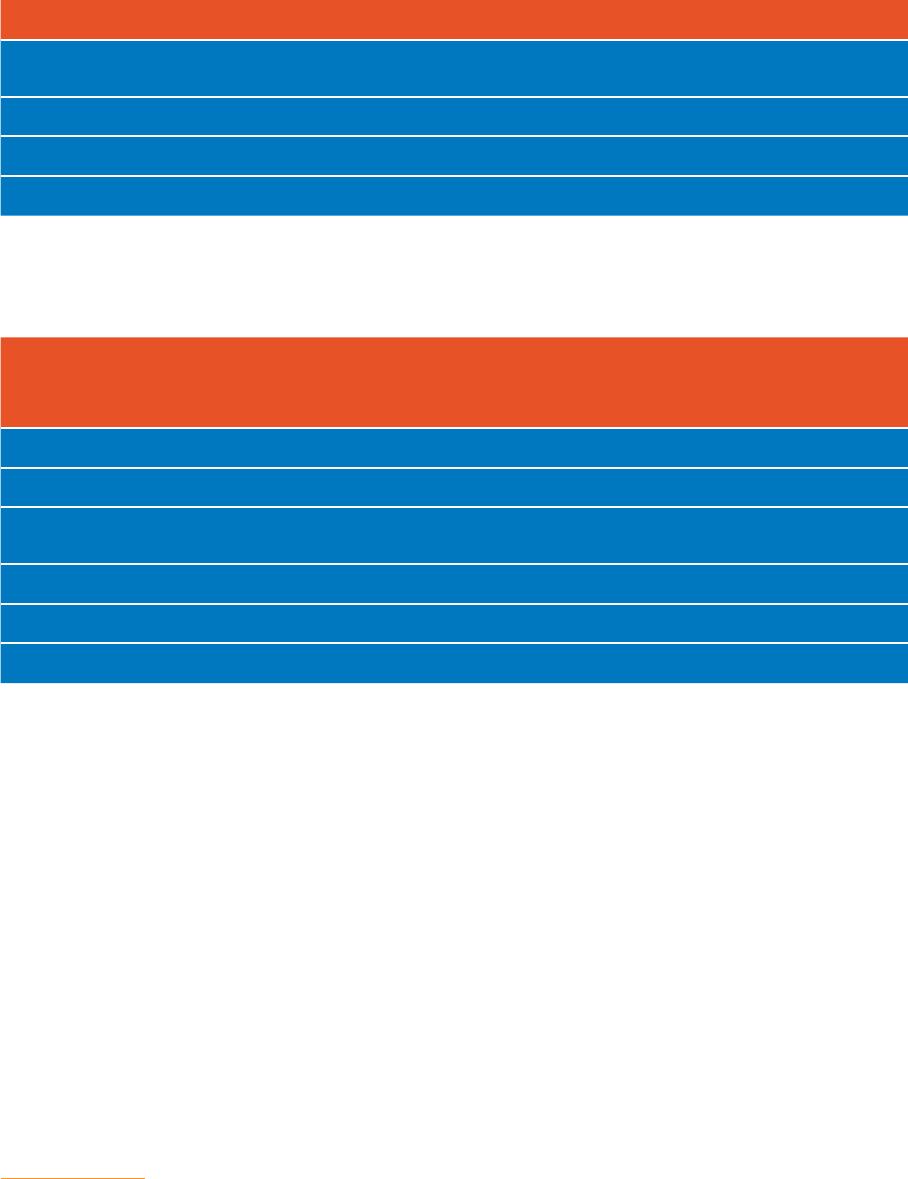
201
Table 89
Investments in UK film and television studios, 2017-2019
Studio Development Capital expenditure Source
Pinewood and Shepperton Studios,
Metro London (Total Investment, 2017-2019)
£100 million Pinewood Group
Space Studios, Manchester (Expansion) £14 million Space Studios
206
Others £17.6 million
Total £131.6 million
Table 90
Planned investments in UK film and television studios, announced 2017-2020
Studio Development Announced,
Estimated or
Reported Investment
Source
Eastbrook Studios, Metro London £300 million BBC
207
Elstree Studios (Expansion), Metro London £15.6 million Elstree Studios
208
Pinewood and Shepperton Studios,
Metro London
£170 million Pinewood Group
Sky Studios Elstree, Metro London £192 million Building.co.uk
209
Others £107.8 million
Total £785.4 million
206. New TV Stage Expansion Dominates Skyline Manchester, Space Studios Manchester, 22 March 2017. Accessible at: https://
spacestudiosmanchester.co.uk/new-tv-stage-expansion-dominates-skyline-manchester/
207. Eastbrook Studios: Hollywood firm sign deal for Dagenham studios. BBC, 3 November 2020. Accessible at: https://www.bbc.co.uk/
news/uk-england-london-54797953
208. Elstree Studios Expansion Gets Under Way. Elstree Studios, 24 May 2021. Accessible at: https://www.elstreestudios.
co.uk/2021/05/elstree-studios-expansion-gets-way/
209. Bam inks £190m Sky studios deal. Building, 1 February 2021. Accessible at: https://www.building.co.uk/news/bam-inks-190m-sky-
studios-deal/5110144.article

202
SCREEN SECTOR
INNOVATION
14

203
In addition to generating a range of economic impacts, the UK is also a significant screen sector
innovation hub.
The screen sector is inherently innovative, since every product created – whether a video game,
film, high-end television (HETV) programme, animation programme or children’s television
programme – is new and unique.
Innovation is a key theme of HM Treasury’s Build Back Better strategy.
210
In the screen sector, innovation is delivered in a number of ways across both process and
product. To demonstrate this, five case studies are outlined in this section which examine how
innovation is occurring right across the screen sector value chain, and around the UK. They relate
to cutting-edge production techniques that combine technologies developed in different parts of
the screen sector, developments in intellectual property (IP) creation and immersive technologies.
They also underline the potential that screen sector innovations have for the UK economy on a
wider basis.
211
14.1. Jellyfish Pictures
A leading VFX and animation studio with an innovative operational business model that
has seen it expand outside of London and move into IP-creation
Jellyfish Pictures is a successful UK visual effects (VFX) and animation studio that prior to the
COVID-19 pandemic had already integrated cloud-working into its business model.
The company was established in 2001, with just three artists and one producer, and opened
its first studio in Soho in 2003. Over the intervening two decades, the company has grown to a
capacity of over 300, and has won awards from BAFTA
®
, the Visual Effects Society, the Royal
Television Society, and an Annie and an Emmy
®
.
The company’s first long-form television series was BBC documentary The Story of One in
2005 and Jellyfish has since provided VFX for a wide variety of major projects including the BBC
documentary series Planet Dinosaur, television dramas such as HBO’s Watchmen and films such
as three of the recent instalments in the Star Wars franchise. Jellyfish has produced animation
for the BBC in the historical short film Tandey’s War, re-invented British cartoon Dennis and
Gnasher as CGI and produced several commercials. In the last two years it has formed a strong
relationship with DreamWorks Animation, producing a special in the How to Train Your Dragon
franchise and completing a first full feature animation for DreamWorks, Spirit Untamed, released
in cinemas in July 2021.
210. Build Back Better. HM Treasury, 2021. Accessible at: https://assets.publishing.service.gov.uk/government/uploads/system/uploads/
attachment_data/file/968403/PfG_Final_Web_Accessible_Version.pdf
211. It should be noted that these case studies do not specifically link to tax reliefs, but instead provide a broader outline of sectoral
innovation

204
Jellyfish Originals was launched in 2017, which saw the company start to develop its own original
animated children’s content – long-form animated series, serials and features – for a broad
demographic.
Despite the company’s focus on character, story and visual image, Jellyfish Pictures also
understands the viewing habits of next generation audiences and the ever-evolving media
landscape. To this end, the company integrates on-demand, digital, toys, games and mobile
content into building their intellectual properties’ branding to more effectively compete in
the market.
Jellyfish Pictures’ innovative approach in development and production has extended to the
company amending its operating model to invest in cloud and virtual technologies. This has led,
according to Jellyfish Pictures, to becoming Europe’s first wholly virtual VFX and animation studio
when, in 2017 and with up to 200 workers, the company made its first virtually produced project,
Bitz & Bob.
This model of having a studio connected through cloud-working procedures meant the company
could be flexible and agile in taking on new talent and projects, allowing studios to be set up in
different locations without high infrastructure costs. Consequently, the company allowed more
flexible home working practices due to the portability of this type of work and expanded in 2019
to include a new studio in Sheffield. It underlines the commitment from Jellyfish Pictures’ CEO
Phil Dobree to cultivate a 'larger creative industries presence outside of London'.
212
The natural extension of this way of working was to allow any individual who wanted to work
from home to do so. At the end of 2019, prior to the COVID-19 pandemic, the company invested
in its own Tier 1 data centre in London with all key hardware to create a private cloud. This can
handle the company’s intensive day-to-day data needs within a highly secure network, with
people logging in from wherever they choose to work. Therefore, the infrastructure was in place
when the pandemic struck, enabling a move to 100% working from home.
In the company’s experience, the intervening year has not seen a loss in productivity or quality
of work and the technology and security protocols have allowed everyone to work off the same
IT infrastructure securely. However, as pandemic strictures ease, Jellyfish Pictures anticipates
a return to a blended way of working that combines the benefits of what the studio and the
company culture has to offer, as well as greater personal flexibility and access to talent across the
UK or around the world, without necessitating a relocation to London or Sheffield.
In terms of supporting staff creativity, the company has set up its own IP incubator, Creative
Bloom, where anyone from within the company (or their friends) can bring forward any ideas with
creative and/or commercial potential, primarily for animation. If selected, the idea is developed
further by recruiting the right partners, with the intention of taking it to market. Currently, there are
several projects in the pipeline.
The last two decades have seen Jellyfish Pictures on a trajectory from start-up to world-class
studio, providing first-class services and creating IP. By focusing on how operations can be made
more cost-effective and flexible, the company has been resilient during the pandemic. The future
for Jellyfish Pictures is one of an agile organisation with an infrastructure hub and low-cost flexible
studio sites more widely distributed across the UK and globally, delivering high calibre VFX and
animation content.
212. Jellyfish Pictures expands northern presence with new studio in Sheffield. Animation UK, 26 February 2020. Accessible at: https://
www.animationuk.org/news/jellyfish-pictures-expands-northern-presence-with-new-studio-in-sheffield/

205
14.2. StoryFutures and StoryFutures Academy
Two related projects that are harnessing immersive storytelling to increase innovation
both within the screen sector and elsewhere in the UK economy
The UK Government’s 2017 Industrial Strategy identified immersive technologies as a key
potential area of economic growth for the UK.
213
StoryFutures Academy (SFA) and StoryFutures
(SF) are two closely related projects that were both born out of this strategy and funded by the
UK Research and Innovation’s Audience of the Future Challenge Fund and the Creative Industries
Clusters Programme. The immersive technologies encompass augmented reality (AR), virtual
reality (VR) and mixed reality (MR), which collectively are also known as extended reality (XR).
Historically, the broader creative industries have not had ready access to research and
development (R&D) funding, and so the clusters programme was a funding innovation that
provided similar R&D-style investment to the creative industries that science and industry have
traditionally received. Such investment is a live area of debate and intervention: for example,
Innovate UK has opened a funding scheme aimed exclusively at supporting R&D in the creative
industries. In addition, the UK Government has opened a consultation on R&D tax reliefs where
creative industries and screen industry stakeholders will have the opportunity to advocate for the
definition of R&D to include the creative industries explicitly.
SFA is the UK’s National Centre for Immersive Storytelling led by the National Film and Television
School and Royal Holloway, University of London. SFA delivers R&D-led training into the creative
use of immersive technologies for storytelling, in order to better understand the use and adoption
of XR as well as to develop the UK’s creative workforce as the most skilled in XR.
214
SFA helps support and encourage ‘traditional’ film, television and games makers to understand
XR by:
• Providing cutting-edge creative training in immersive story form
• Giving opportunities to traditional screen industry talent to work on immersive productions to
create prototype and pilot productions
• Offering development finance for participants
• Fostering co-productions
The training includes bootcamps, on-set training, writers’ labs and a train-the-trainer initiative,
as well as a number of funding mechanisms and commissions. SFA has recently agreed five
commissions through the UK-Canada Immersive Exchange with Arts Council England and the
Canada Media Fund, a means of creating collaborative content from the two strongly-developing
XR jurisdictions, by coupling creative talent and production companies with funding available
from the two markets.
213. Industrial Strategy: Building a Britain fit for the future. HM Government, 27 November 2017. Accessible at: https://www.gov.uk/
government/publications/industrial-strategy-building-a-britain-fit-for-the-future
214. StoryFutures Academy. Accessible at: https://www.storyfutures.com/academy

206
Meanwhile, SF is led by Royal Holloway, University of London and is part of the Arts and
Humanities Research Council’s Creative Industries Clusters Programme.
215
It is a programme of
R&D projects with screen industries’ businesses west of London that drives innovation in story
form into storytelling, business behaviours and audience development.
The SF approach to R&D involves working with a large organisation that has a barrier to growth
and solving it through the creative application of XR technologies.
216
It then works to turn that
barrier into an R&D challenge that academics and small and medium-sized enterprises (SMEs)
can solve together in a multistep, collaborative process to produce a proof-of-concept prototype.
The process is as follows:
i. A large organisation identifies a challenge that represents wider sector barriers to
XR growth
ii. SF helps turn that challenge into a creative R&D brief
iii. Groups of academics and SMEs work together to develop a solution as a paper prototype
iv. The various paper prototypes are presented together and one selected for development
v. The large organisation and SF will then fund the research of the winning proposal to
produce an audience-ready proof of concept
The projects have resulted in innovative storytelling techniques being used in the screen sectors,
but importantly the work has also had impact in other sectors of the economy and has even
been used to directly affect behaviours. For example, Surround Vision, Costa Coffee and
Heathrow Airport used an AR storytelling experience to drive a 130% increase in recycling of
coffee cups at Heathrow Airport. Previous research at Heathrow had shown that, while people
intend to recycle their coffee cups, they usually do not, let alone recycle them correctly by
separating lid, contents and cup into different bin compartments. And so, by using consumer
behaviour psychology, computer vision and AR technologies with experiential storytelling, Cupsy
was created – an immersive and interactive coffee cup recycling experience, via an AR screen, to
improve recycling behaviours.
So far in the first two and a half years of SF, there have been 65 R&D collaborations, which have
resulted in 25 new products, supported more than 125 jobs and released over £7 million of
leveraged funding from commercial, public and third sectors to support XR growth. In the same
period, SFA trained over 1,000 beneficiaries, produced 38 co-productions, supported more than
200 jobs and released over £3.5 million in leveraged funding from partners.
Taken together, the SFA and SF are coupling research and skills development to real world
situations to produce innovative immersive technology solutions. Collectively, this will help
develop the UK’s creative industries as a world leader in XR.
215. StoryFutures Creative Clusters. Accessible at: https://www.storyfutures.com/creative-cluster
216. A large organisation is one defined by ONS as having over 250 employees. The SF then use 11 criteria including size to select a
challenge: ranging from scale of investment to market opportunity, to audience reach, to research data collaboration

207
14.3. Virtual production
A cutting-edge example of the convergence of media technology, located at the
confluence of film, video games, animation, VFX and HETV production
Rapid advances in virtual production are capturing the imagination of high value feature film and
HETV producers.
Virtual production utilises technology from the video games sector when shooting film and
television production. It can reduce the reliance on location filming and the number of crew
needed on set (some of whom can now be present off-set). ‘Virtual production’ is a term used
to describe a wide range of techniques that allow filmmakers to use VFX and computer graphic
technologies in real time, either:
1. To design sequences and provide data and an offline (‘previs’) version of the final
sequence – for example, as used in the live action version of The Lion King; or
2. To combine final pixel computer graphics (CG) with live action as it is being filmed – for
example, the UK production of The Batman
This second innovation, which was also successfully used in the production of The Mandalorian,
is generating significant attention and, in the context of the COVID-19 pandemic, has provided
some advantages.
This real-time, final pixel, live action filming has become possible as a result of advances in game
engine technology – for example, the Unreal and Unity game engines – which have now evolved
to the point where photorealistic CG can be ‘rendered’, or created, in real-time. This has also
driven physical production innovation in camera operation and with on-set filming. In simple
terms, this approach involves four processes happening instantly:
1. Tracking the movement of the camera and the lens
2. Feeding that information to the game engine
3. The game engine rendering the computer graphics in real time
4. The rendered CG being played back on a large wall of LED on a set or
volumetric stage
217, 218
Together, the approach ensures that the image on the LED wall has the correct perspective in
relation to the foreground live action set and the camera.
217. An LED (light emitting diode) panel is used in virtual production to project the rendered CG images required for production. It allows
for greater control of brightness and colour
218. A volumetric stage allows virtual production to capture a three-dimensional representation of the scene which offers multiple viewing
angles. This is in contrast to a green screen which only allows for a two-dimensional viewing from the captured plane

208
The last two years has seen an explosion of activity in this area. There has been significant
investment in the UK by UK-and foreign-owned firms in physical infrastructure, the back-end
technology and in talent development – all of which drives the UK forward as a global centre and
creates new roles and jobs within the virtual production segment of the production workforce.
For instance, the US studio Industrial Light & Magic (ILM) opened the ILM StageCraft stage at
Pinewood early in 2021, which not only became the largest volumetric stage in the UK but further
innovated on the original ground-breaking LED technology developed for The Mandalorian by
increasing the ‘volume’ of the stage and utilising substantially more LED panels to offer higher
resolution and a smooth wall to ceiling transition. This has resulted in better lighting on set and
more in-camera finals.
219
Additionally, there is also the purpose-built volumetric stage at Warner Bros. Studios Leavesden
where The Batman started filming in 2020. British companies Framestore, MPC (Moving Picture
Company) and DNEG are also developing their virtual production capability. Indeed, DNEG – the
Oscar
®
, BAFTA
®
and Emmy
®
award-winning VFX and animation studio that produced the visual
effects for Christopher Nolan’s Tenet – has formed a virtual production partnership with the
multi-award-winning XR entertainment studio Dimension.
220, 221
This partnership brings together
Dimension’s real-time development and LED stage expertise with DNEG’s in-house virtual
production resources and real-time workflows, as they offer an enriched service to filmmaking
partners across film, episodic and animation projects.
Virtual production, in addition to the technological innovations outlined above, presents a number
of other advantages, including that:
• Virtual sets can reduce the need for location filming, thereby reducing travel and
environmental impact
• Cast and crew can work within more a visual setting (as compared to green screen without
pre-visualisation)
• Elements of post-production can now be done concurrently with principal photography, and
so workflows can be made more efficient by reducing the need for re-shoots after principal
photography is complete
• New jobs have been created to satisfy new roles now needed for real-time, final pixel, live
action filming
In the context of the COVID-19 pandemic, virtual production has also allowed fewer people to
be required on set, as a large range of production departments can collaborate live and virtually,
thereby helping to enable the social distancing of the remaining crew on set.
219. Industrial Light & Magic opens ILM StageCraft stage at Pinewood, British Cinematographer, 5 March 2021. Accessible at: https://
britishcinematographer.co.uk/industrial-light-magic-opens-ilm-stagecraft-stage-at-pinewood/
220. ‘Tenet’ VFX House Forms Virtual Production Partnership, The Hollywood Reporter, 16 February 2021. Accessible at: https://www.
hollywoodreporter.com/movies/movie-news/tenet-vfx-house-forms-virtual-production-partnership-exclusive-4133068/
221. DNEG and XR entertainment studio Dimension announce virtual production partnership, UK Screen Alliance, 16 February 2021.
Accessible at: https://www.ukscreenalliance.co.uk/news/dneg-and-xr-entertainment-studio-dimension-announce-virtual-production-
partnership/

209
As a result, virtual production is poised to become a bigger element in the production process
in the years to come. It also means that ways of working for writers, producers, production
designers etc will develop in order to use the process efficiently. Indeed, decisions that were
being left until post-production can now be made during production. This need for new skills has
quickly been recognised by ScreenSkills, the industry-led skills body for the screen sectors, as
it leads work to develop virtual production standards for training that incorporate real-time, final
pixel integration of VFX into live action filming.
Virtual production is an example of the much-talked-about convergence of media technology
and content, located as it is at the confluence of film, video gaming, animation, VFX and HETV
production. The UK has grasped the potential of this innovation and is positioning itself as a
global centre by investing in developing physical infrastructure and talent.
14.4. Future Screens NI and Screen Media
Innovation Lab
A screen ecosystem approach to driving economic growth in Northern Ireland
Creative industries growth in Northern Ireland is a major success story, and screen sector
expansion has been substantial. Northern Ireland hosted the production of global phenomenon
Game of Thrones and continues to develop world-class capabilities and infrastructure, including
a mixture of purpose-built studios and alternative build space for productions of varying sizes.
At the same time, there has been an acknowledgment that, despite the Northern Ireland-wide
reach of the sector, it has been primarily comprised of single-person or micro-enterprises that
are dispersed across Northern Ireland and poorly interconnected. Future Screens NI (FSNI)
and Northern Ireland Screen have therefore championed an approach that has sought to bring
together the sector into a true interconnected screen ecosystem.
222
Key examples of this approach are the ongoing R&D projects funded by FSNI and the recently
awarded Screen Media Innovation Lab (SMIL). FSNI is funded by the Arts and Humanities
Research Council (AHRC) as one of the nine cluster projects in the Creative Industries Clusters
Programme and SMIL is part of the Belfast Region City Deal. Both are explicitly part of strategic
plans to further increase local economic growth and high value employment.
Prior to FSNI, Northern Ireland’s creative industries businesses were ready to grow but needed
R&D support and funding to make that change. The project has enabled greater interconnection
within the sector. One element, Future Tuesdays, enables the creative sector to meet, network
and initiate conversations on a weekly basis through curated programming.
222. Over 200 companies are active within the cluster as reported in the AHRC report, The Story So Far - Creative Industries Clusters
Programme. Accessible at: https://creativeindustriesclusters.com/wp-content/uploads/2020/02/Clusters-Booklet-Story-So-Far-V12-web.
pdf

210
The holistic nature of the ecosystem approach is reflected in the partnership that delivers FSNI.
Ulster University is the lead research organisation supported by Queen’s University Belfast,
working with key industrial partners central to the creative economy in the region, including
Northern Ireland Screen, the BBC, Belfast City Council, Belfast Harbour Commissioners,
Causeway Enterprise Agency, Digital Catapult, Catalyst Inc., RTE, Games NI, Kainos, Invest NI,
Techstart NI, Matrix and Tourism NI. This partnership is focused on participation, cultural and
economic growth, and social and economic regeneration.
In the latest FSNI funding initiatives, a two-tier R&D structure allows for funding of both proof of
concept (up to £20,000) and pre-commercialisation (up to £50,000). The FSNI project is at its
mid-point and has funded 1,210 collaborative R&D projects. By working with key partners, it has
delivered a direct investment of £25.2 million to the local creative economy, £22.5 million of which
has been leveraged from industry partners, alongside a £2 million grant invested via the Industrial
Strategy Challenge Fund, from the AHRC, as well as a further £0.7 million of in-kind support from
both Ulster University and Queen’s University Belfast.
223
The main creative areas targeted by FSNI
have been animation, video games, immersive technologies including VR and AR, film, broadcast
and, more recently, virtual production.
The key benefits seen have been:
• The creation of an environment for new and experimental creative content, products, services
or experiences
• The establishment of long-term strategic applied research partnerships between creative
enterprises, higher educational institutions and other relevant sectoral and local stakeholders
• An improvement in creative and digital enterprises’ ability to access the skills, knowledge and
expertise they require to develop new innovative products and services
• Key place-based/sector issues have been addressed through the applied research
programmes
• Economic and social benefits including 60 jobs saved and the creation of 223 high-level
innovation jobs
The initial success of FSNI has resulted in the Belfast Region City Deal supporting Ulster
University’s SMIL, as one of its innovation projects and as a driver of inclusive growth, especially
as part of the economic recovery from the COVID-19 pandemic. SMIL will provide a centre of
excellence in virtual production and will include a Mandalorian-scale, LED, volumetric stage.
The facilities will also include motion capture and photogrammetry studios, as well as video and
audio editing suites. The Lab will include incubation space and multi-workstation lab space and
is intended to drive creative industries’ engagement with a wider range of industrial sectors,
including medtech, fintech, advanced manufacturing, and hardware and software innovation.
SMIL is a critical component in accelerating the generation of talent required to drive future
innovation in the screen sector in Northern Ireland and beyond in the rest of the UK.
223. Creative Industries Clusters Programme Mid-Term Review – Director’s Reflections. Accessible at: https://drive.google.com/file/
d/1Vv99_D_oTYiQ5IDcjNyFJcMAmdCSIT6V/view?usp=sharing

211
Future Screen NI has resulted in a profound change in mindset and capacity for the Northern
Ireland creative ecosystem, where talent perceives itself to be on a global stage, not just a local
one. SMIL builds on that confidence and will provide the physical infrastructure to create a
virtual production centre of excellence and to help capitalise more broadly on the creativity and
business opportunities that are present in harnessing the screen sectors to other
industrial sectors.
14.5. Media Molecule’s Dreams
A ground-breaking content-creation game that makes interactive content creation
easy and helps distribute it, while encouraging collaboration and supporting talent
development
Media Molecule is a video games development studio based in Guildford, known for
multi-award-winning video games such as LittleBigPlanet, LittleBigPlanet 2, Tearaway and
Tearaway Unfolded.
It launched the ground-breaking Dreams video game for the PlayStation 4 (PS4) in February
2020, following an initial early access period between April and December 2019, as part of Sony
Interactive Entertainment’s next generation of ‘Play, Create and Share’ games.
Dreams incorporates an almost professional-level games, animation and music studio
accessed through a PS4 controller, which allows users to create their own video games, art, films
and music.
While it has a traditional video game component developed by Media Molecule, the core
gameplay is augmented by two additional innovative elements:
1. Content creation. Players – even beginners – are easily able to use their creativity to
generate their own content. This includes games to gadgets, puzzles to paintings, and
music to moving images
2. Content distribution and collaboration. User-generated content can be shared with other
players to explore and experience, as well as be ‘remixed’ into others’ creations or as
a collaboration
The accessibility of these tools means that players with little or no experience can learn through a
multiplicity of friendly, easy-to-understand tutorials on all aspects of coding, animation, modelling
and sound design – an advantage over professional creation tools. Therefore, the video game
is teaching its players transferable skills and, and in some cases, users’ creations can ultimately
lead to commercial products.
212
The potential to draw new talent into the industry is enhanced by the openness and sharing
culture of the community element of the video game, where talent could be developed and
identified. The Dreams community is one of players and creators, where anything created by
‘Dreamers’ (the video game’s users), from sound effects to 3D models, can be used by other
Dreamers in their own creations from a library of free video game assets. Indeed, Media Molecule
has recruited talented Dreamers into its workforce, some of whom have already moved on into
the wider sector.
Furthermore, Media Molecule encourages its creators to exploit their own original IP and, to
that end, the company has instituted a beta evaluation process, where creators can put forward
their original IP created through Dreams to be considered as potential business opportunities for
development with Media Molecule.
Dreams has won numerous industry awards for its gameplay and innovation, including the
BAFTA
®
Games 2021 Technical Achievement award. It is also an affordable and accessible tool
for game development for the next generation of creators, offering individuals opportunities and
routes into video games development.

213
CONCLUSIONS
15
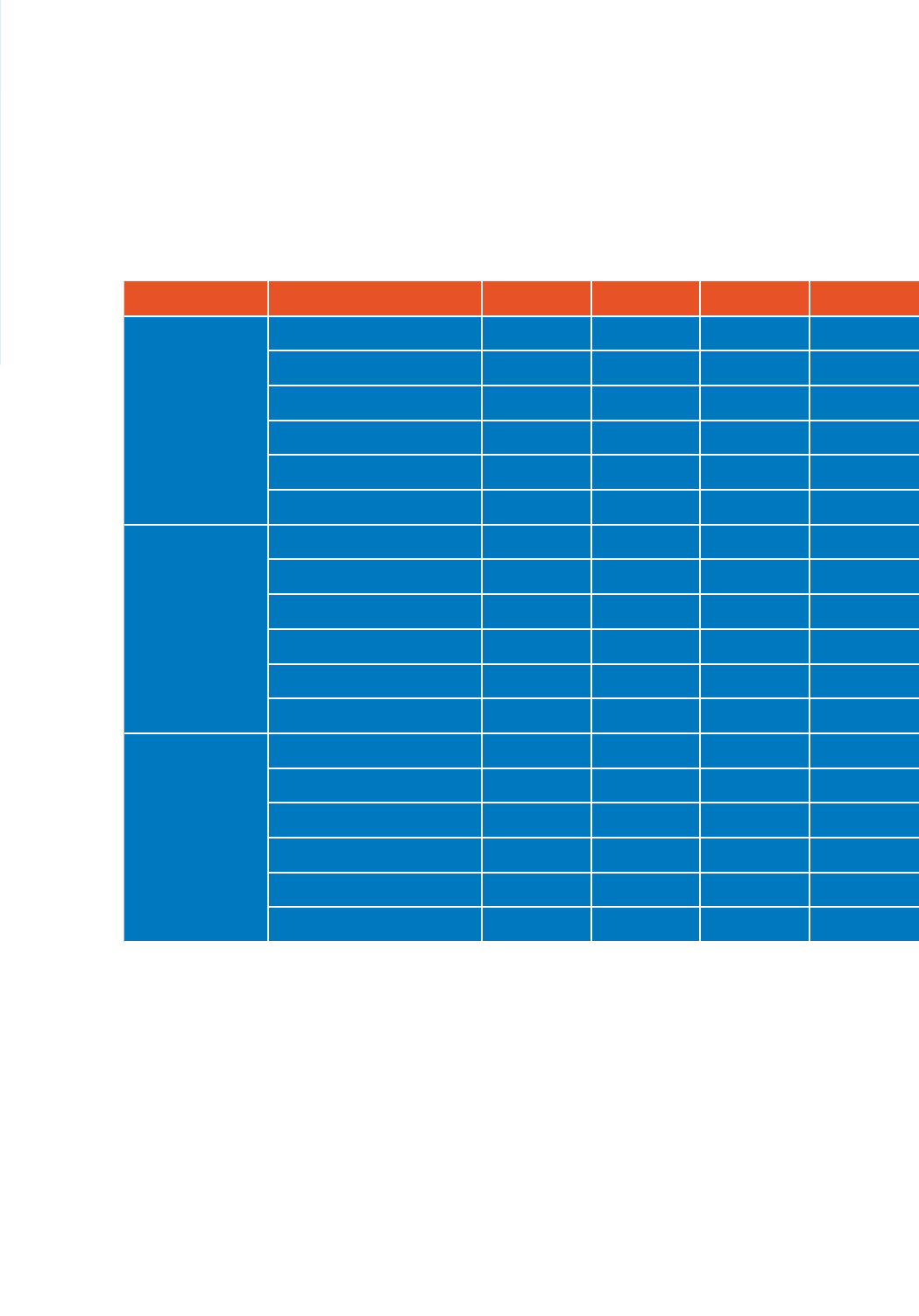
214
15.1. Total economic impact
In terms of the direct economic impact experienced within the production and development sub-
sector and the other value chain sub-sectors, the five screen sector tax reliefs generated 68,630
FTEs, £2.96 billion in employment compensation and £5.57 billion in GVA for the UK in 2019.
Table 91
Direct economic impact of screen sector tax reliefs, 2016-2019
2016 2017 2018 2019
Employment
(FTEs)
FTR 29,560 33,430 31,630 31,160
HETR 13,950 18,600 19,770 28,760
ATR 1,780 1,850 1,800 1,460
CTR 860 1,330 1,920 1,610
VGTR 7,410 5,890 6,190 5,640
Total 53,560 61,100 61,310 68,630
CoE (£m)
FTR 1,116.0 1,267.5 1,235.1 1,239.6
HETR 552.0 764.6 854.6 1,269.1
ATR 85.9 84.2 85.4 72.8
CTR 33.8 56.6 84.7 75.5
VGTR 386.0 292.4 330.4 305.4
Total 2,173.7 2,465.4 2,590.2 2,962.4
GVA (£m)
FTR 2,443.1 2,862.3 2,877.7 2,912.5
HETR 817.3 1,116.8 1,184.3 1,798.7
ATR 112.1 140.0 135.2 130.6
CTR 43.8 92.3 127.1 132.2
VGTR 469.3 607.5 655.2 592.7
Total 3,885.6 4,818.8 4,979.5 5,566.7
Source: Olsberg•SPI/Nordicity estimates based on data from the BFI, industry surveys, ONS, ABS, ASHE, Ofcom, public
nancial reports, Attentional, BARB, Ukie, D&B, Ortus Economic Research, Superdata, NPD, OCC, BPI, Nielsen, ABC GfK and
Kantar World Panel
Including direct, indirect and induced impacts, the screen sector tax reliefs generated 156,030
FTEs, £5.58 billion in employment compensation and £10.23 billion in GVA for the UK economy
in 2019.

215
Table 92
Total value chain economic impact of screen sector tax reliefs, 2016-2019
2016 2017 2018 2019
Employment
(FTEs)
FTR 63,180 73,000 68,460 68,930
HETR 28,910 40,760 43,220 64,310
ATR 3,290 4,110 4,100 3,730
CTR 1,660 2,980 4,220 4,030
VGTR 14,680 11,450 14,130 15,030
Total 111,720 132,300 134,130 156,030
CoE (£m)
FTR 2,082.9 2,425.0 2,366.5 2,387.2
HETR 983.6 1,410.4 1,569.1 2,342.6
ATR 125.1 146.1 151.2 137.6
CTR 54.9 102.2 150.0 144.6
VGTR 593.5 451.5 558.3 572.8
Total 3,840.1 4,535.2 4,795.1 5,584.8
GVA (£m)
FTR 4,162.9 4,929.6 4,906.0 4,975.5
HETR 1,553.9 2,242.9 2,431.5 3,674.3
ATR 186.4 258.1 261.0 254.6
CTR 83.9 179.1 251.2 264.1
VGTR 834.5 887.5 1,055.4 1,064.2
Total 6,821.7 8,497.2 8,905.1 10,232.8
Source: Olsberg•SPI/Nordicity estimates based on data from the BFI, industry surveys, ONS, ABS, ASHE, Ofcom, public
nancial reports, Attentional, BARB, Ukie, D&B, Ortus Economic Research, Superdata, NPD, OCC, BPI, Nielsen, ABC GfK and
Kantar World Panel

216
15.2. Impact in UK nations and England’s regions
Analysis of how total UK expenditure supported by FTR and HETR is dispersed across the UK’s
nations and England’s regions shows that a significant amount of activity occurs outside of Metro
London.
In the HETV sector around £1.56 billion in production spend, or around 33% of the UK total, was
undertaken outside of Metro London between 2017– 2019. Taking into consideration the total
impact of the HETR content value chain, including direct, indirect and induced effects, 45,240
FTE jobs were created in Metro London in 2019 and 19,070 throughout the rest of the UK. This
equated to £2.64 billion in GVA generated in Metro London in 2019 and £1.04 billion throughout
the rest of the UK.
In the film sector, around £1.18 billion was spent outside Metro London between 2017 and
2019, representing around 19% of the total. Taking into consideration the total impact of the film
content value chain, including direct, indirect and induced effects, 49,845 FTE jobs were created
in Metro London in 2019 and 19,085 throughout the rest of the UK. This equated to £3.74 billion
in GVA generated in Metro London in 2019 and £1.24 billion throughout the rest of the UK.
Across both sectors, there are year-on-year fluctuations which typically relate to one or more
sizeable projects being located in a nation or region in one year and the scale of that production
not being duplicated in the following year.
224
224. An analysis of the impact of the overall video games sector on the UK nations and England’s regions is provided in Section 16.1.7.
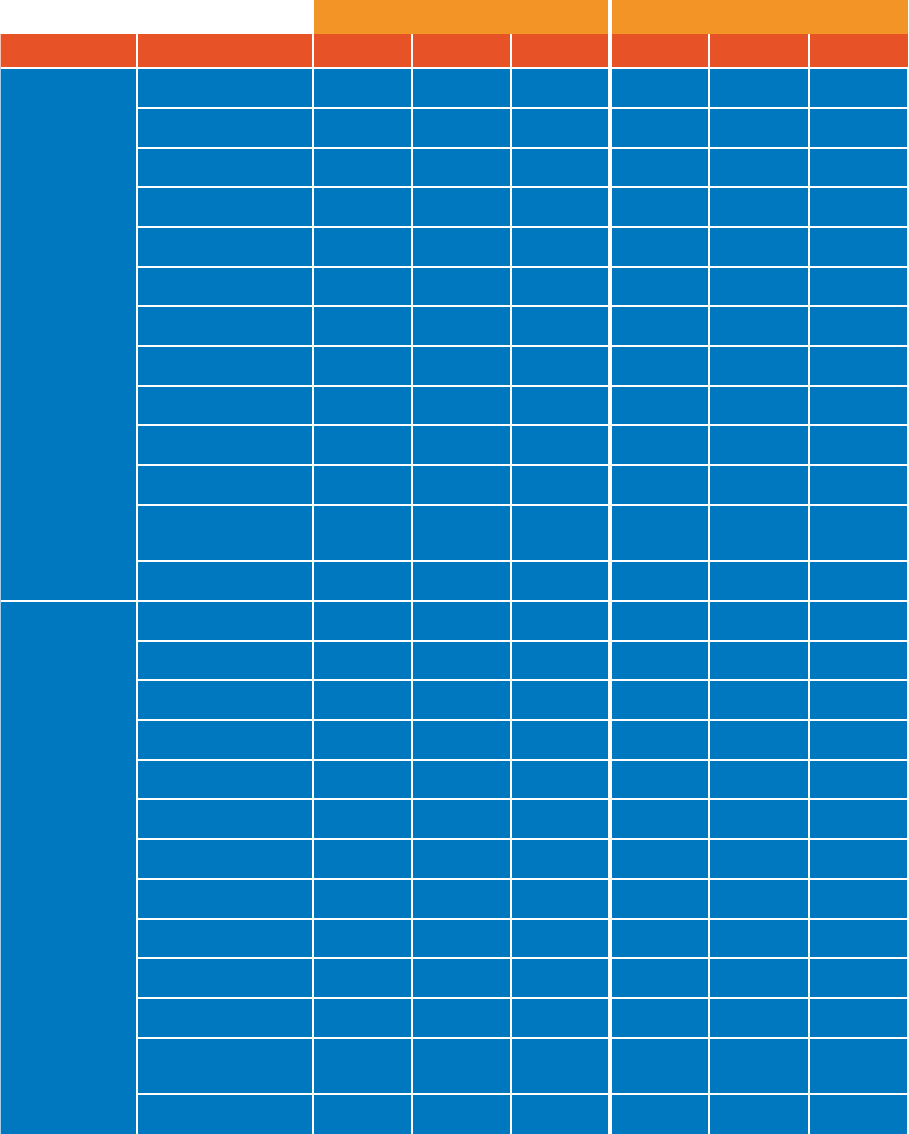
217
Table 93
Total economic impact of HETV and film content value chain, by UK nation and
England’s regions, 2017-2019 (includes direct, indirect and induced effects)
HETV Film
2017 2018 2019 2017 2018 2019
Employment
(FTEs)
East Midlands 375 303 487
919 717 780
East of England 552 504 894 1,421 958 1,044
Metro London 28,923 32,365 45,240 53,087 52,555 49,845
Northern Ireland 2,012 1,252 727 564 520 537
North East 241 178 291 709 471 909
North West 2,283 2,589 5,565 2,393 2,238 2,528
Scotland 1,825 1,591 2,228 3,085 2,171 2,335
South East 1,158 988 1,921 4,329 3,794 3,952
South West 982 963 2,422
2,365 1,430 2,139
Wales 1,030 849 1,855
897 1,016 879
West Midlands 663 647 944
1,841 1,327 1,778
Yorkshire and the
Humber
715 992 1,735
1,389 1,264 2,204
Total 40,760 43,220 64,310
73,000 68,460 68,930
GVA (£m)
East Midlands 17.9 15.1 24.3
44.7 38.3 42.7
East of England 27.2 26.2 47.8 84.7 66.5 75.3
Metro London 1,621.3 1,851.0 2,639.2 3,779.0 3,909.8 3,735.0
Northern Ireland 101.5 65.8 42.0 28.1 27.5 29.2
North East 11.4 8.9 14.4 34.7 24.5 60.8
North West 131.6 142.4 305.4 153.1 167.6 182.6
Scotland 90.9 81.0 114.1 164.9 130.6 137.5
South East 58.7 52.4 102.6 246.0 240.9 241.8
South West 50.6 51.2 128.4
127.4 81.8 122.5
Wales 58.4 47.7 108.7
52.9 62.6 56.1
West Midlands 36.6 36.1 55.7
144.5 86.2 148.0
Yorkshire and the
Humber
36.9 53.8 91.6
69.5 69.7 143.9
Total 2,242.9 2,431.5 3,674.3
4,929.6 4,906.0 4,975.5
Source: Source: Olsberg•SPI/Nordicity estimates
Note:
Figures may not sum to totals due to rounding
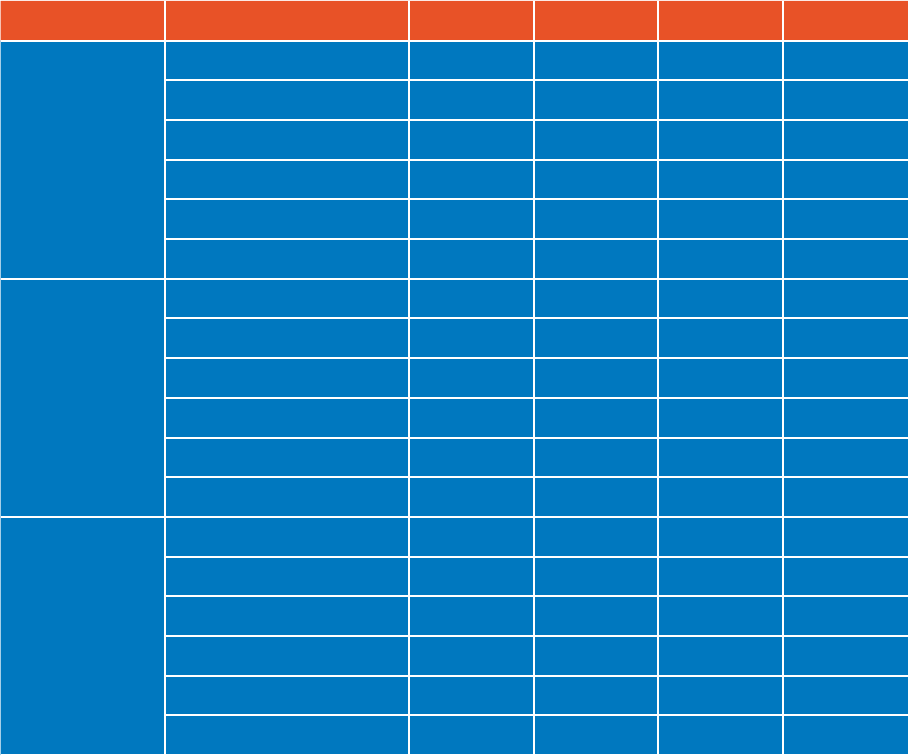
218
15.3. Overall economic contribution
The overall economic contribution of the screen sector tax reliefs combines the total economic
impact across the screen sector value chain with the impact of the various spillover impacts
associated with screen content supported by the tax reliefs. In 2019, the screen sector tax reliefs
generated 218,790 FTEs, £13.48 billion in GVA and £3.60 billion in tax revenue for the UK.
Table 94
Overall economic contribution of screen sector tax reliefs, 2016-2019
2016 2017 2018 2019
Employment
(FTEs)
FTR 95,130 114,200 114,290 120,650
HETR 34,900 48,320 52,320 74,620
ATR 4,030 4,810 4,780 4,360
CTR 1,660 2,980 4,220 4,030
VGTR 14,830 11,540 14,230 15,130
Total 150,550 181,850 189,840 218,790
GVA (£m)
FTR 5,673.4 6,946.1 7,231.5 7,684.9
HETR 1,822.0 2,589.6 2,860.2 4,177.0
ATR 220.1 290.5 293.0 285.2
CTR 83.9 179.1 251.2 264.1
VGTR 843.6 893.1 1,061.8 1,070.4
Total 8,643.0 10,898.4 11,697.6 13,481.6
Tax revenue
(£m)
FTR 1,385.3 1,702.2 1,801.4 1,892.9
HETR 497.6 776.7 878.1 1,263.1
ATR 68.3 107.6 114.0 110.2
CTR 21.6 53.5 77.7 84.0
VGTR 238.3 197.6 240.3 247.7
Total 2,211.0 2,837.6 3,111.6 3,597.9
Source: Olsberg•SPI/Nordicity estimates based on data from the BFI, industry surveys, ONS, ABS, ASHE, Ofcom, public
nancial reports, Attentional, BARB, Licensing International, Entertainment One, Mattel, Ukie, D&B, Ortus Economic Research,
Superdata, NPD, OCC, BPI, Nielsen, ABC GfK, Kantar World Panel, Newzoo, and interviews with games publishers

219
APPENDIX 1
16
Total video games sector impact

220
As noted in Section 6, the Video Games Tax Relief (VGTR) supported video games sector in
the UK represents only a portion of current activity. To provide a full picture of the impact of the
video games sector in the UK, analysis has been undertaken to estimate the total economic
contribution, which is presented in this appendix.
225
Notes
2016 data have been revised from the previous edition of Screen Business to account
for updates in projects tracked by the BFI since publication. Due to the video games
development process, and the way in which VGTR is used by developers, there can be a
significant lag in reporting. Data on expenditure and corresponding economic impacts for
recent years outlined in this chapter do not therefore represent a year-on-year decline,
but are reflective of this lag.
16.1. Direct impact
16.1.1. Development
To estimate the total value of spending, employment, compensation of employment (CoE) and
gross value added (GVA) in the development sub-sector, data from Ukie’s UK Games Map was
combined with research conducted by Ortus Economic Research (Ortus) for 2016, additional
research from Ukie, data from D&B and public financial reports (available from Companies
House), Office for National Statistics (ONS) and the results of video games sector research
conducted by Nordicity for the Entertainment Software Association of Canada (ESAC):
• The UK Games Map provided a detailed list of companies engaged in video games
development in the UK
226
• Data provided by Ortus were combined with research conducted by Olsberg•SPI, Nordicity
and Ukie to assign actual or estimated levels of employment and GVA to each company
for 2016
• For 2017 to 2019, Olsberg•SPI, Nordicity and Ukie conducted research to assign actual or
estimated levels of employment and GVA to each company
• These company-based statistics were aggregated to arrive at an estimate of £1.80 billion in
total GVA in 2019 generated across the developer companies in the Games Map
• Survey research conducted for ESAC indicated that the average GVA-to-turnover ratio
among video games developers located in Canada was 0.66 in 2016.
227
For 2017 to 2019,
the GVA-to-output ratio reported by ONS for SIC 62.01/1, Ready-made interactive leisure and
entertainment software development was used. Based on these GVA ratios, overall revenue in
the UK’s development sub-sector was an estimated £2.77 billion in 2019
The UK Games Map and the associated company research conducted by Ortus, Ukie,
Olsberg•SPI and Nordicity also indicated that development companies in the UK employed
17,937 people in 2019. This total employment was converted to FTEs using a conversion factor
225. As a general note, the video games trade association TIGA also undertakes research into the sector. See: https://tiga.org
226. UK Games Map accessible at: https://gamesmap.uk
227. Although this ratio was derived from survey data from outside the UK, the assumption is that the global nature of the video games
development sector implies a congruence of business models and cost structures across peer jurisdictions such as the UK and Canada
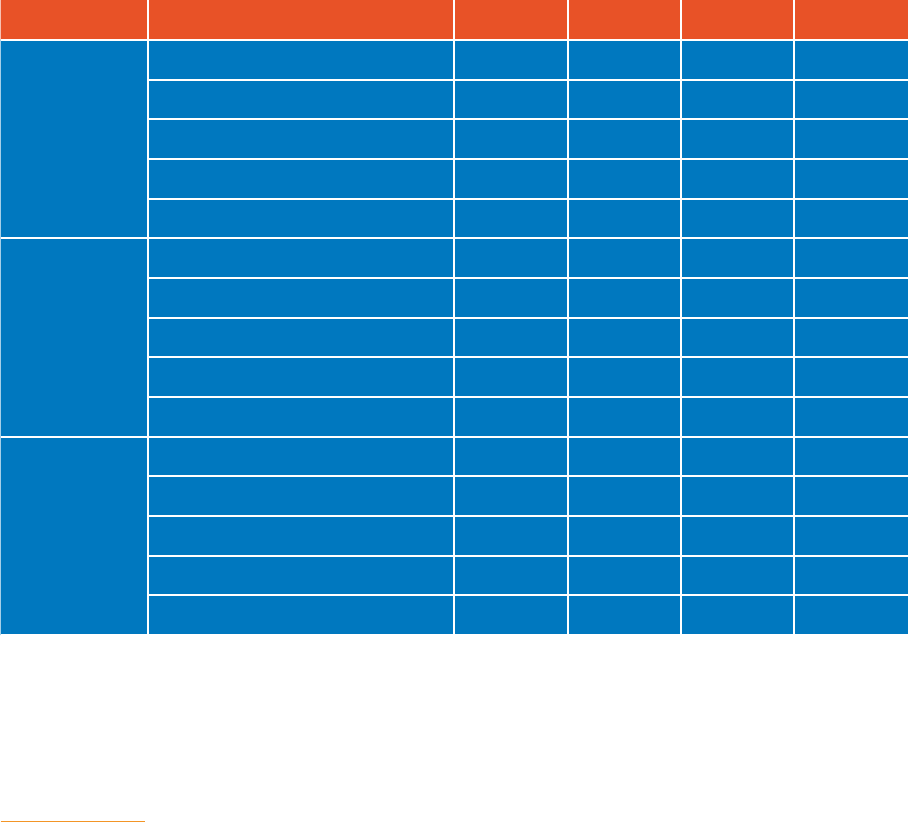
221
of 0.97.
228
In total, therefore, video games development generated an estimated 17,350 FTEs of
direct employment in 2019.
Based on statistics published by the BFI and HM Revenue & Customs (HMRC), an estimated
£860.4 million was spent in the UK in 2019 on the development of video games supported by
VGTR in 2019.
229
This spend represented 31% of the total estimated turnover of UK video games
development companies in 2019.
The direct economic contribution generated by the development of VGTR titles and other
UK-made video games was estimated, respectively, by applying their pro-rata shares of total
development spend to the estimates of total employment, employment compensation and
GVA across all video games development companies. The results of this pro-rata allocation are
presented in Table 95.
Table 95
Direct economic impact of video games development in the UK, 2016-2019
2016 2017 2018 2019
VGTR
UK spend/turnover (£m)
†
624.5 700.8 791.0 860.4
Share of spend/turnover (%) 50 38 38 31
Employment (FTEs) 6,910 5,550 5,670 5,390
CoE (£m) 368.1 280.7 310.8 294.8
GVA (£m) 412.2 567.6 585.3 559.3
Other
UK-made
video games
UK spend/turnover (£m)
†
627.0 1,120.6 1,304.3 1,911.7
Share of spend/turnover (%) 50 62 62 69
Employment (FTEs) 6,930 8,870 9,340 11,960
CoE (£m) 369.6 448.9 512.6 654.9
GVA (£m) 413.8 907.7 965.2 1,242.6
Total
UK spend/turnover (£m)
†
1,251.5 1,821.4 2,095.3 2,772.1
Share of spend/turnover (%) 100 100 100 100
Employment (FTEs) 13,840 14,420 15,010 17,350
CoE (£m) 737.6 729.6 823.4 949.7
GVA (£m) 826.0 1,475.4 1,550.5 1,801.9
Source: the BFI and Olsberg•SPI/Nordicity estimates based on data from Ukie, Ortus, D&B, ASHE and ABS
Note:
† Includes a mark-up of 48.1% to account for administration, marketing and other non-core activities at video games
development companies
228. Employment statistics published by BRES indicate that part-time employees in SIC 6201/1, Ready-made interactive leisure and
entertainment software development accounted for 6.5% of total employment. When these part-time employees are given a 50% weight,
the implication is that the sector employs the equivalent of 0.97 FTEs for each person employed in the industry
229. The year-to-year growth in VGTR payments reported by HMRC for 2016/17 to 2018/19 (accrual basis) was applied to the total devel-
opment spending supported by VGTR in 2016 (as reported by the BFI) to estimate the levels of VGTR-supported development spending
in 2017, 2018 and 2019. This approach was required because of the lag in reporting of VGTR activity to the BFI, on account of the length
of VGTR projects

222
16.1.2. Publishing
According to Ukie’s research, in 2019 UK consumers spent over £3.86 billion on the purchase
of video games – through both digital and physical sales.
230
As with the development sub-sector,
the UK Games Map in combination with research conducted by Olsberg•SPI, Nordicity and
Ortus was used to estimate the total employment, employment compensation and GVA in the
publishing sub-sector:
• The UK Games Map provided a detailed list of companies engaged in video games publishing
in the UK
• Data provided by Ortus were combined with research conducted by Olsberg•SPI, Nordicity
and Ukie to assign actual or estimated levels of employment and GVA to each company for
2016
• For 2017 to 2019, Olsberg•SPI, Nordicity and Ukie conducted research to assign actual or
estimated levels of employment and GVA to each company
• These company-based statistics were aggregated to arrive at an estimate of 3,773
employees in the publishing sub-sector in 2019. This figure was converted to 3,430 FTEs
using an FTE conversion factor of 0.91
• The average full-time salary in SIC 5821, Publishing of computer games (£47,325) in 2016
was adjusted for annual consumer price index (CPI) inflation to arrive at an average full-time
salary of £50,517 in 2019. This 2019 average full-time salary was adjusted to account for
social security costs to arrive at an average FTE cost of £57,134.
231
The total number of direct
FTEs (3,430) was multiplied by the average FTE cost (£57,134) to estimate direct CoE of
£196.0 million in 2019
• These company-based statistics were aggregated to arrive at an estimate of £706.6 million in
total GVA in 2019
A title-by-title review of video games sales in the UK conducted by Ukie concluded that UK-
made video games had an overall market share of 14.1% across the digital and physical sales
parts of the value chain in 2019. This estimated revenue market share (14.1%) was used to
apportion total consumer sales between UK-made and non-UK titles, as well as the economic
contribution.
In 2019, therefore, UK-made video games accounted for £547.9 million in consumer sales.
Within the publishing sub-sector, UK-made video games accounted for 410 FTEs of direct
employment, £23.4 million in direct employment compensation and £84.8 million in direct GVA.
The share of total development spend accounted for by VGTR projects (ie 31% in 2019) was
used to apportion the value of sales of UK-made titles between VGTR and non-VGTR video
games. The economic contribution of UK-made titles was, in turn, calculated using the same
31% share.
230. UK Video Games Market: 2019 Stats. Ukie, 2021. Accessible at: https://ukiepedia.ukie.org.uk/index.php/UK_Video_Games_Mar-
ket#2019_Stats
231. The average full-time salary in SIC 5821 was obtained from the Annual Survey of Employment and Hours (ASHE). The social
security adjustment factor was obtained from employment cost statistics for SIC 5821 published in the Annual Business Survey (ABS)

223
Table 96
Direct economic impact of video games publishing in the UK, 2016-2019
2016 2017 2018 2019
VTGR
Consumer sales (£m) 267.0 169.5 207.8 170.1
Share (%) 8.6 4.8 5.2 4.4
Employment (FTEs) 200 120 220 130
CoE (£m) 10.7 6.6 12.4 7.4
GVA (£m) 45.5 30.7 53.6 26.3
Other UK-made
video games
Consumer sales (£m) 268.1 271.1 342.7 377.8
Share (%) 8.6 7.6 8.5 9.8
Employment (FTEs) 200 180 370 280
CoE (£m) 10.7 9.9 20.8 16.0
GVA (£m) 45.6 49.1 88.4 58.5
Sub-total –
UK-made
games
Consumer sales (£m) 535.1 440.7 550.5 547.9
Share (%) 17.3 12.4 13.7 14.2
Employment (FTEs) 400 300 590 410
CoE (£m) 21.4 16.5 33.1 23.4
GVA (£m) 91.1 79.7 142.1 84.8
Other games
Consumer sales (£m) 2,565.9 3,120.3 3,467.5 3,300.1
Share (%) 82.7 87.6 86.3 85.8
Employment (FTEs) 1,900 2,210 2,470 3,020
CoE (£m) 101.7 121.3 138.8 172.6
GVA (£m) 435.5 584.7 590.3 621.8
Grand total – all
games sold in
the UK
Consumer sales (£m) 3,101.0 3,561.0 4,018.0 3,848.0
Share (%) 100 100 100 100
Employment (FTEs) 2,300 2,510 3,060 3,430
CoE (£m) 123.1 137.8 171.9 196.0
GVA (£m) 526.6 664.4 732.4 706.6
Source: Ukie, GfK, Kantar World Panel, Superdata, and Olsberg•SPI/Nordicity estimates based on data from Ukie, Ortus, D&B,
ASHE and ABS
Note:
Figures may not sum to totals due to rounding

224
16.1.3. Digital retail
The digital sales of video games generated £3.19 billion in consumer sales in the UK in 2019.
On a global basis, these digital sales generated an estimated 6,830 FTEs of direct employment,
£295.7 million in direct employment compensation and £612.5 million in direct GVA. However, as
the vast majority of digital distribution platforms are based outside of the UK, it is estimated that
only a small portion of this global impact occurs within the UK.
To estimate the impact of digital sales within the UK, employment data for certain small digital
platform companies based in the UK were obtained, along with data on the UK’s share of global
workforce at the leading online global games platforms for which public financial information is
readily available (for example, Apple Inc., Alphabet Inc. [Google] and Amazon.com, Inc.).
232, 233
Based on this approach, digital sales generated 280 FTEs of direct employment, £12.1 million
in CoE and £25.1 million in direct GVA in 2019 (Table 97). Of this total, UK-made video games
accounted for an £468.9 million in sales, 40 FTEs of direct employment, £1.8 million in CoE and
£3.7 million in direct GVA in 2019.
232. Data supplied by Ukie indicated that GAME (online), Green Man Gaming, Fanatical and Stopto.net were all active in the digital plat-
form market and employed a combined 105 persons
233. Data from public financial reports published by the multinational companies and by Companies House indicated that – after adjusting
for their respective shares of global games platform market – their UK operations accounted for 4.1% of their global workforce
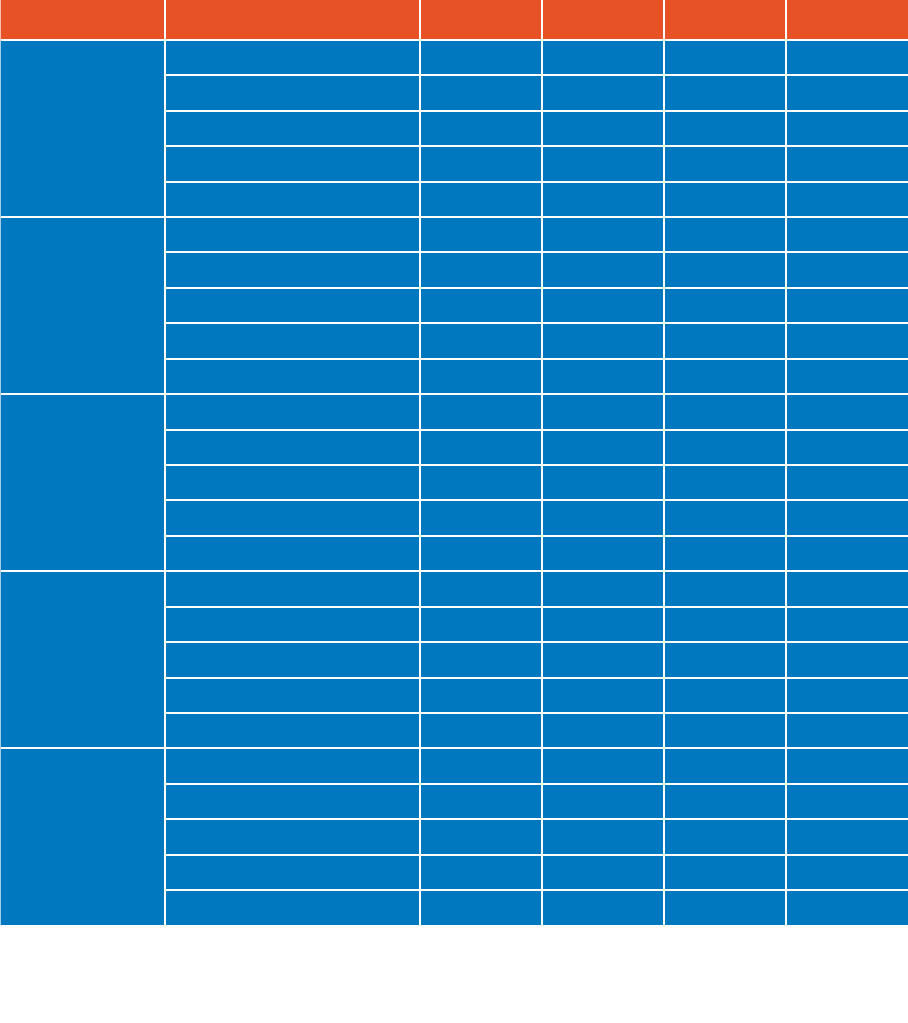
225
Table 97
Direct economic impact of digital sales of video games in the UK, 2016-2019
2016 2017 2018 2019
VTGR
Consumer spending (£m) 201.2 128.4 146.5 145.5
Share (%) 9.1 4.8 4.6 4.6
Employment (FTEs) 10 10 10 10
CoE (£m) 0.8 0.5 0.6 0.6
GVA (£m) 1.8 1.1 1.2 1.1
Other UK-made
video games
Consumer spending (£m) 202.0 205.3 241.5 323.4
Share (%) 9.1 7.7 7.6 10.1
Employment (FTEs) 20 20 20 30
CoE (£m) 0.8 0.8 0.9 1.2
GVA (£m) 1.8 1.7 1.9 2.5
Sub-total –
UK-made
games
Consumer spending (£m) 403.1 333.8 388.0 468.9
Share (%) 18.2 12.5 12.2 14.7
Employment (FTEs) 30 30 30 40
CoE (£m) 1.5 1.2 1.5 1.8
GVA (£m) 3.7 2.8 3.1 3.7
Other games
Consumer spending (£m) 1,811.9 2,336.3 2,792.0 2,721.1
Share (%) 81.8 87.5 87.8 85.3
Employment (FTEs) 160 170 200 240
CoE (£m) 6.1 7.2 8.9 10.3
GVA (£m) 16.6 19.3 22.0 21.4
Grand total – all
games sold in
the UK
Consumer spending (£m) 2,215.0 2,670.0 3,180.0 3,190.0
Share (%) 100 100 100 100
Employment (FTEs) 190 200 230 280
CoE (£m) 7.4 8.2 10.2 12.1
GVA (£m) 20.3 22.0 25.0 25.1
Source: Olsberg•SPI/Nordicity estimates based on data from Ukie, Omdia, Superdata, GfK, Kantar World Panel, ABS and
ASHE
Note:
Figures may not sum to totals due to rounding
16.1.4. Physical retail
The physical sales of video games generated £658.0 million in consumer sales in the UK in
2019. These physical sales, in turn, generated 2,960 FTEs of direct employment, £71.7 million in
employment compensation and £161.2 million in direct GVA (Table 98).
Of this total, UK-made video games accounted for an estimated £79.0 million in sales, 360 FTEs
of direct employment, £8.6 million in employment compensation and £19.3 million in direct
GVA in 2019.

226
Table 98
Direct economic impact of physical sales of video games in the UK, 2016-2019
2016 2017 2018 2019
VGTR
Consumer spending (£m) 65.9 41.1 61.4 24.5
Share (%) 7.4 4.6 7.3 3.7
Employment (FTEs) 290 210 290 110
CoE (£m) 6.5 4.6 6.7 2.7
GVA (£m) 9.8 8.1 15.0 6.0
Other UK-made
video games
Consumer spending (£m) 66.1 65.8 101.2 54.5
Share (%) 7.5 7.4 12.1 8.3
Employment (FTEs) 300 330 480 250
CoE (£m) 6.5 7.4 11.0 5.9
GVA (£m) 9.9 13.0 24.8 13.3
Sub-total – UK-
made games
Consumer spending (£m) 132.0 106.9 162.6 79.0
Share (%) 14.9 12.0 19.4 12.0
Employment (FTEs) 590 540 770 360
CoE (£m) 12.9 12.1 17.7 8.6
GVA (£m) 19.7 21.1 39.8 19.3
Other games
Consumer spending (£m) 754.0 784.1 675.4 579.0
Share (%) 85.1 88.0 80.6 88.0
Employment (FTEs) 3,390 3,940 3,180 2,600
CoE (£m) 73.9 88.6 73.6 63.1
GVA (£m) 112.3 154.5 165.5 141.9
Grand total – all
games sold in
the UK
Consumer spending (£m) 886.0 903.6 838.0 658.0
Share (%) 100 100 100 100
Employment (FTEs) 3,980 4,480 3,950 2,960
CoE (£m) 86.8 100.7 91.3 71.7
GVA (£m) 132.0 175.5 205.3 161.2
Source: Olsberg•SPI/Nordicity estimates based on data from Ukie, Superdata, GfK, Kantar World Panel, ABS and ASHE
Note:
Figures may not sum to totals due to rounding

227
16.1.5. Summary
Summing these sub-sectors together, all UK-developed video games during 2019 generated
18,160 FTEs of direct employment, £983.5 million in direct employment compensation and
£1.91 billion in direct GVA (Table 99). This includes only the publishing value related to UK-made
content.
Table 99
Summary of direct economic impact of UK-made video games across the value chain,
2016-2019
2016 2017 2018 2019
Employment
(FTEs)
Development 13,840 14,420 15,010 17,350
Publishing 400 300 590 410
Digital sales 30 30 30 40
Physical sales 590 540 770 360
Total 14,860 15,290 16,400 18,160
CoE
(£m)
Development 737.6 729.6 823.4 949.7
Publishing 21.4 16.5 33.1 23.4
Digital sales 1.5 1.2 1.5 1.8
Physical sales 12.9 12.1 17.7 8.6
Total 773.5 759.4 875.7 983.5
GVA
(£m)
Development 826.0 1,475.4 1,550.5 1,801.9
Publishing 91.1 79.7 142.1 84.8
Digital sales 3.7 2.8 3.1 3.7
Physical sales 19.7 21.1 39.8 19.3
Total 940.5 1,578.9 1,735.5 1,909.7
Source: Olsberg•SPI/Nordicity estimates based on data from Ukie, Superdata, GfK, Kantar World Panel, ABS and ASHE
Note:
Figures may not sum to totals due to rounding

228
Summing these sub-sectors together, all video games developed, published or sold in the
UK during 2019 generated 24,020 FTEs of direct employment, £1.23 billion in employment
compensation and £2.69 billion in direct GVA (Table 100). This includes only the publishing value
related to UK-made content.
Table 100
Summary of direct economic impact of all video games developed, published or sold
in the UK, 2016-2019
2016 2017 2018 2019
Employment
(FTEs)
Development 13,840 14,420 15,010 17,350
Publishing 2,300 2,510 3,060 3,430
Digital sales 190 200 230 280
Physical sales 3,980 4,480 3,950 2,960
Total 20,310 21,610 22,250 24,020
CoE
(£m)
Development 737.6 729.6 823.4 949.7
Publishing 123.1 137.8 171.9 196.0
Digital sales 8.4 9.9 12.1 12.2
Physical sales 86.8 100.7 91.3 71.7
Total 956.0 978.0 1,098.8 1,229.6
GVA
(£m)
Development 826.0 1,475.5 1,550.5 1,801.9
Publishing 526.6 664.4 732.4 706.6
Digital sales 20.3 22.0 25.0 25.1
Physical sales 132.0 175.5 205.3 161.2
Total 1,504.9 2,337.4 2,513.3 2,694.8
Source: Olsberg•SPI/Nordicity estimates based on data from Ukie, Superdata, GfK, Kantar World Panel, ABS and ASHE

229
16.1.6. Total economic impact
The total economic impact (including indirect and induced impacts) of UK-made video games –
VGTR and non-VGTR – was equal to 48,310 FTEs, £1.84 billion in employment compensation
and £3.43 billion in GVA in 2019 (Table 101).
Table 101
Total economic impact generated by UK-made video games throughout all parts of the
value chain, 2016-2019
2016 2017 2018 2019
Employment
(FTEs)
Direct 14,860 15,290 16,400 18,160
Indirect 8,730 7,410 11,940 18,120
Induced 5,840 6,970 9,140 12,030
Total 29,430 29,670 37,480 48,310
CoE
(£m)
Direct 773.5 759.4 875.7 983.5
Indirect 271.0 230.6 375.0 535.4
Induced 153.0 185.4 243.1 324.9
Total 1,197.5 1,175.3 1,493.8 1,843.8
GVA
(£m)
Direct 940.5 1,578.9 1,735.5 1,909.7
Indirect 444.7 382.9 610.9 927.8
Induced 287.1 344.6 449.1 592.6
Total 1,672.2 2,306.3 2,795.5 3,430.1
Source: Olsberg•SPI/Nordicity estimates based on data from Ukie, Superdata, GfK, Kantar World Panel, ABS and ASHE
Note:
Figures may not sum to totals due to rounding

230
In 2019, all video games – either developed, published or sold in the UK – generated a total
economic impact (including indirect and induced impacts) of 71,400 FTEs, £2.62 billion in
employment compensation and £5.12 billion in GVA.
Table 102
Total economic impact generated by all video games developed, published and sold in
the UK, 2016-2019
2016 2017 2018 2019
Employment
(FTEs)
Direct 20,310 21,610 22,250 24,020
Indirect 15,860 18,340 22,920 29,150
Induced 10,000 13,080 15,380 18,230
Total 46,170 53,030 60,550 71,400
CoE
(£m)
Direct 956.0 978.0 1,098.8 1,229.5
Indirect 427.2 544.9 706.0 900.5
Induced 238.8 328.5 395.1 493.2
Total 1,621.9 1,851.4 2,199.9 2,623.2
GVA
(£m)
Direct 1,504.9 2,337.3 2,513.3 2,694.8
Indirect 809.4 977.3 1,179.5 1,522.2
Induced 491.8 654.2 749.0 902.8
Total 2,806.1 3,968.9 4,441.8 5,119.8
Source: Olsberg•SPI/Nordicity estimates based on data from Ukie, Superdata, GfK, Kantar World Panel, ABS and ASHE
Note:
Figures may not sum to totals due to rounding
16.1.7. Impact in UK nations and England’s regions
This sub-section provides an estimate of the impact of the overall video games sector on the UK
nations and England’s regions. Estimates of the total employment and GVA impacts (including
direct, indirect and induced impacts) are presented for the video games development sub-sector
and for the entire video games value chain. This includes the development of video games in the
UK and the publishing and sales (digital and physical) of all games in the UK regardless of the
country in which they were developed.
The following approaches were used to prepare this nations/regions breakdown of the total
economic impact.

231
Development and publishing: Within the Ukie Games Map, each video games company was
classified to a nation or NUTS 1 region of England.
234
The employment data and estimated GVA
for these companies were tabulated by nation and region to arrive at an estimate of the direct
economic impact. Indirect and induced impacts were assumed to be distributed in proportion to
direct impacts.
Digital sales: Data from ONS and the Northern Ireland Statistics and Research Agency (NISRA)
for employment in SIC 63.1, Data processing, hosting and related activities; web portals by
nation and region were used to allocate the UK-wide total economic impact.
Physical sales: Data from ONS and NISRA for employment in the retail sector by nation/region
were used to allocate the UK-wide total economic impact.
In contrast to the nations and regions data for High-end Television Tax Relief (HETR) and Film Tax
Relief (FTR), the nations and regions analysis for the video games sector uses the ‘London’ (ie
Greater London) NUTS 1 region rather than the ‘Metro London’ region.
The nations and regions data demonstrate that London accounts for approximately one
quarter of the total employment impact in the development sub-sector and between 30% and
40% of the GVA impact. The South East also accounts for a significant share of development
employment and GVA.
234. Nomenclature of Territorial Units for Statistics (NUTS)
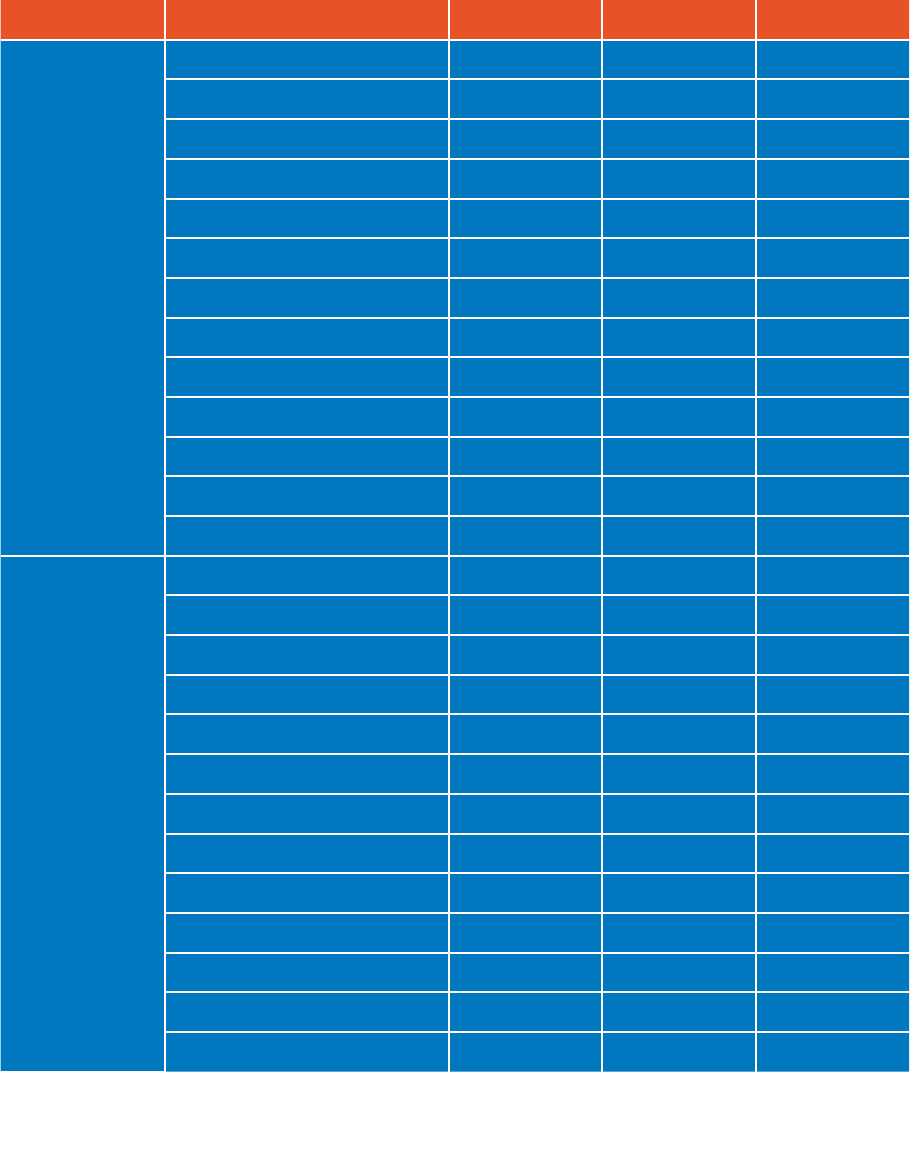
232
Table 103
Total employment impact of video games development, by UK nation and England’s
regions (includes direct, indirect and induced effects), 2017-2019
2017 2018 2019
Employment
(FTEs)
East Midlands 1,965 3,344 3,783
East of England 2,116 2,115 3,223
London 6,563 8,093 11,268
North East 1,058 1,138 1,765
North West 2,785 3,287 4,523
Northern Ireland 107 135 194
Scotland 2,505 4,118 5,674
South East 4,571 4,930 6,882
South West 845 945 1,309
Wales 180 173 240
West Midlands 2,645 2,740 4,816
Yorkshire and the Humber 1,141 993 1,455
Total 26,480 32,010 45,130
Share
of UK total
East Midlands 7.4% 10.4% 8.4%
East of England 8.0% 6.6% 7.1%
London 24.8% 25.3% 25.0%
North East 4.0% 3.6% 3.9%
North West 10.5% 10.3% 10.0%
Northern Ireland 0.4% 0.4% 0.4%
Scotland 9.5% 12.9% 12.6%
South East 17.3% 15.4% 15.2%
South West 3.2% 3.0% 2.9%
Wales 0.7% 0.5% 0.5%
West Midlands 10.0% 8.6% 10.7%
Yorkshire and the Humber 4.3% 3.1% 3.2%
Total 100% 100% 100%
Source: Olsberg•SPI/Nordicity estimates based on data from Ukie, Ortus, D&B, ASHE and ABS
Note:
Figures may not sum to totals due to rounding
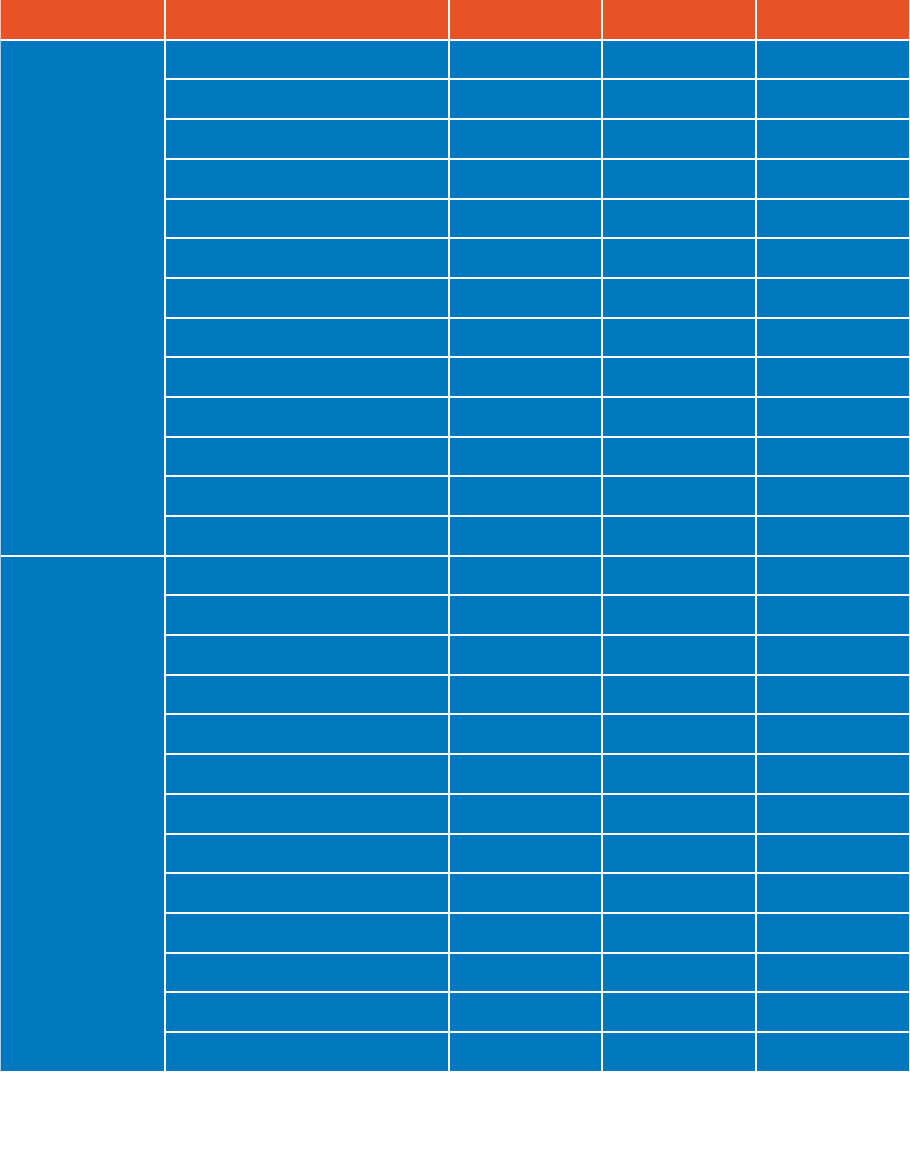
233
Table 104
Total GVA impact of video games development, by UK nation and England’s regions
(includes direct, indirect and induced effects), 2017-2019
2017 2018 2019
GVA
(£m)
East Midlands 132.8 188.9 195.5
East of England 228.8 213.8 357.3
London 674.9 926.6 1,232.0
North East 125.7 113.8 158.9
North West 125.0 137.6 187.2
Northern Ireland 4.0 4.3 5.5
Scotland 175.2 219.3 334.6
South East 354.3 363.4 362.0
South West 46.3 44.9 56.6
Wales 7.0 5.2 6.4
West Midlands 135.9 135.4 229.9
Yorkshire and the Humber 69.6 50.1 72.2
Total 2,079.5 2,403.2 3,198.2
Share
of UK total
East Midlands 6.4% 7.9% 6.1%
East of England 11.0% 8.9% 11.2%
London 32.5% 38.6% 38.5%
North East 6.0% 4.7% 5.0%
North West 6.0% 5.7% 5.9%
Northern Ireland 0.2% 0.2% 0.2%
Scotland 8.4% 9.1% 10.5%
South East 17.0% 15.1% 11.3%
South West 2.2% 1.9% 1.8%
Wales 0.3% 0.2% 0.2%
West Midlands 6.5% 5.6% 7.2%
Yorkshire and the Humber 3.3% 2.1% 2.3%
Total 100% 100% 100%
Source: Olsberg•SPI/Nordicity estimates based on data from Ukie, Ortus, D&B, ASHE and ABS
Note:
Figures may not sum to totals due to rounding
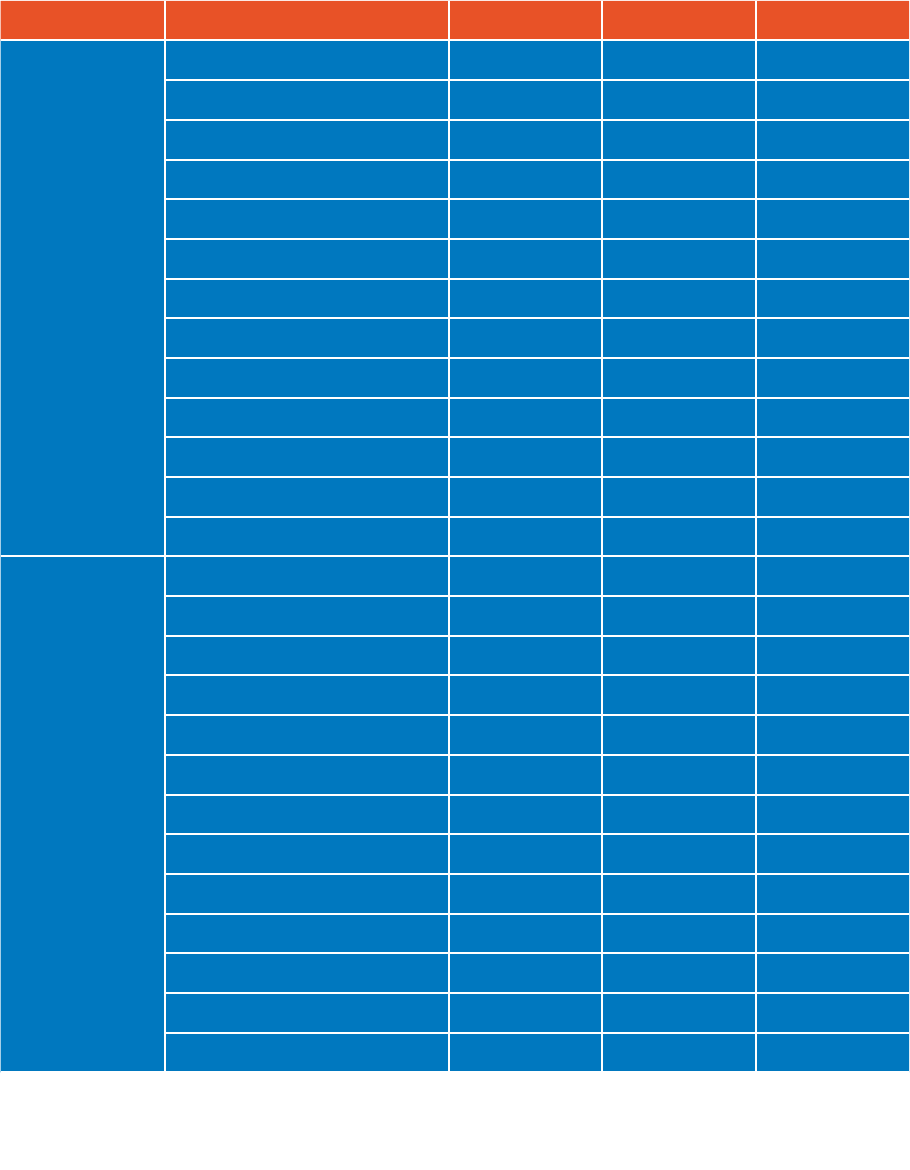
234
Across the entire video games value chain, London accounts for 30% to 35% of the total
employment impact and an even higher share of the GVA impact. London was followed by the
South East and West Midlands in terms of impact.
Table 105
Total employment impact of video games value chain, by UK nation and England’s
regions (includes direct, indirect and induced effects), 2017-2019
2017 2018 2019
Employment
(FTEs)
East Midlands 2,453 3,742 4,089
East of England 3,083 3,009 4,024
London 18,794 20,486 21,974
North East 1,461 1,514 2,449
North West 3,693 4,054 5,157
Northern Ireland 315 294 315
Scotland 3,068 4,553 6,005
South East 12,091 12,827 13,950
South West 1,476 1,440 1,689
Wales 523 444 448
West Midlands 3,982 5,997 8,644
Yorkshire and the Humber 2,091 2,189 2,657
Total 53,030 60,550 71,400
Share
of UK total
East Midlands 4.6% 6.2% 5.7%
East of England 5.8% 5.0% 5.6%
London 35.4% 33.8% 30.8%
North East 2.8% 2.5% 3.4%
North West 7.0% 6.7% 7.2%
Northern Ireland 0.6% 0.5% 0.4%
Scotland 5.8% 7.5% 8.4%
South East 22.8% 21.2% 19.5%
South West 2.8% 2.4% 2.4%
Wales 1.0% 0.7% 0.6%
West Midlands 7.5% 9.9% 12.1%
Yorkshire and the Humber 3.9% 3.6% 3.7%
Total 100% 100% 100%
Source: Olsberg•SPI/Nordicity estimates based on data from Ukie, Ortus, D&B, Superdata, GfK, Kantar World Panel, ASHE
and ABS
Note:
Figures may not sum to totals due to rounding
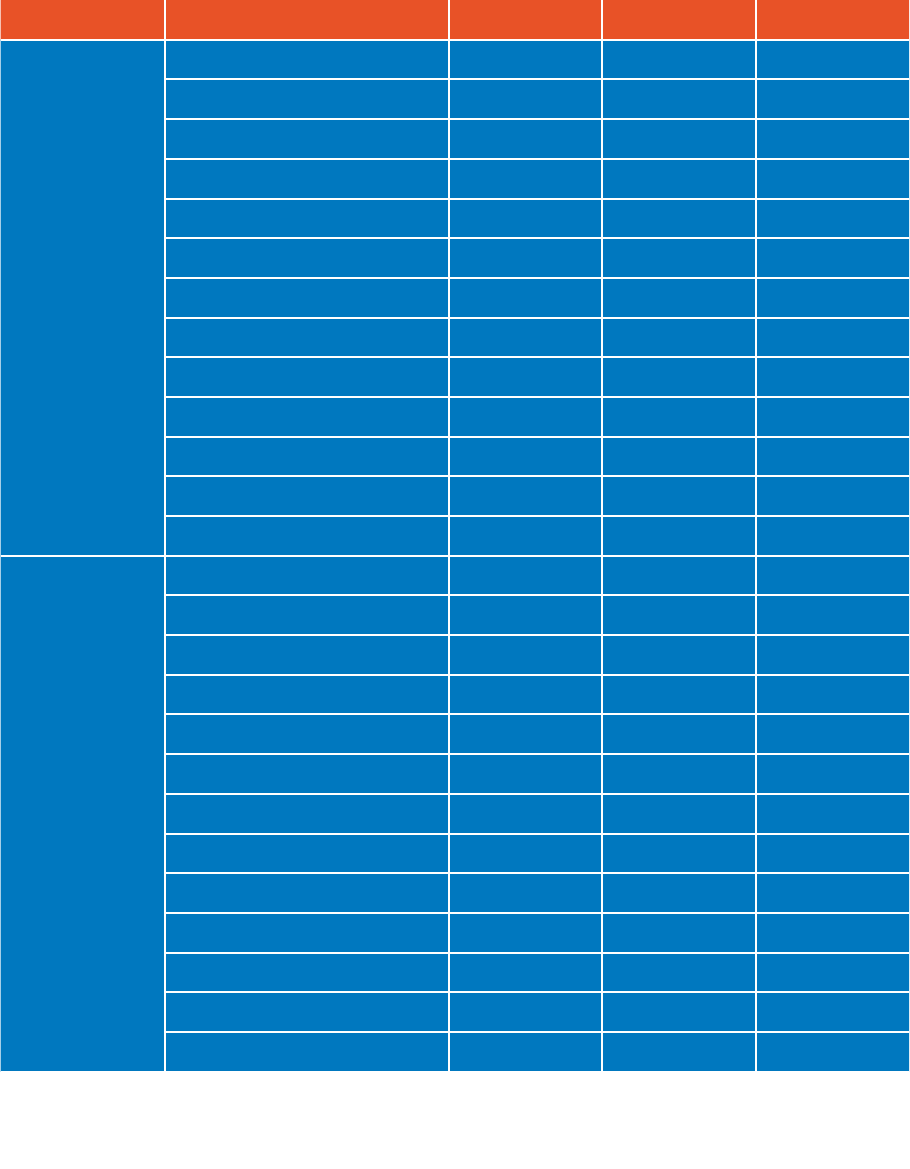
235
Table 106
Total GVA impact of video games value chain, by UK nation and England’s regions
(includes direct, indirect and induced effects), 2017-2019
2017 2018 2019
GVA
(£m)
East Midlands 154.5 210.2 212.6
East of England 293.2 274.9 413.9
London 1,616.7 1,842.8 2,032.3
North East 148.4 137.4 208.0
North West 167.4 180.6 224.8
Northern Ireland 12.6 12.4 11.8
Scotland 198.6 241.4 352.0
South East 932.0 947.6 894.3
South West 73.6 70.7 77.3
Wales 23.2 20.1 18.3
West Midlands 223.1 372.8 517.2
Yorkshire and the Humber 125.7 130.8 157.3
Total 3,968.9 4,441.8 5,119.8
Share
of UK total
East Midlands 3.9% 4.7% 4.2%
East of England 7.4% 6.2% 8.1%
London 40.7% 41.5% 39.7%
North East 3.7% 3.1% 4.1%
North West 4.2% 4.1% 4.4%
Northern Ireland 0.3% 0.3% 0.2%
Scotland 5.0% 5.4% 6.9%
South East 23.5% 21.3% 17.5%
South West 1.9% 1.6% 1.5%
Wales 0.6% 0.5% 0.4%
West Midlands 5.6% 8.4% 10.1%
Yorkshire and the Humber 3.2% 2.9% 3.1%
Total 100% 100% 100%
Source: Olsberg•SPI/Nordicity estimates based on data from Ukie, Ortus, D&B, Superdata, GfK, Kantar World Panel, ASHE
and ABS
Note:
Figures may not sum to totals due to rounding

236
16.2. Spillover impacts
16.2.1. Merchandise and events
The major source of spillovers from video games, as with some of the other sectors in this study,
is to the retail sector via merchandise. However, games-related events also generate spillover
impacts.
Ukie publishes an annual valuation of the UK video games market which contains useful data
which helps to calculate this impact. In 2019, games-related merchandise sales and events
generated £146.4 million in revenue in the UK. This total included toys and merchandising sales
(£94.2 million), books and magazine sales (£13.9 million), revenue from movies and soundtracks
(£29.5 million), and events and venues revenue (£8.8 million).
Table 107
Video games-related merchandise and events revenue in the UK, 2016-2019 (£m)
2016 2017 2018 2019
Toys and merchandising 66.8 72.9 59.3 94.2
Books and magazines 18.4 18.0 17.8 13.9
Movies and soundtracks 7.8 17.6 23.6 29.5
Events and venues 7.5 8.4 8.9 8.8
Total sales 100.5 117.0 109.6 146.4
Source: Ukie, Superdata, NPD, OCC, BPI, the BFI, Nielsen, ABC GfK and Kantar World Panel
Note:
Figures may not sum to totals due to rounding
The average retail margin for the UK of 30% was then applied to this total share to give an
estimated retail margin of £43.8 million in 2019. ONS-derived ratios for the retail sector were
applied to this to derive other economic impacts, allowing an estimation of 760 FTEs and
£27.6 million in GVA in 2019.
Table 108
Total economic impact of video games-related merchandise sales in the UK
(£m unless indicated otherwise), 2016-2019
2016 2017 2018 2019
Retail sales 100.5 117.0 109.6 146.4
Retail margin 30.2 35.1 32.9 43.8
Employment (FTEs) 630 660 600 760
GVA 19.0 22.1 20.7 27.6
Tax revenue 3.8 4.4 4.1 5.5
Source: Olsberg•SPI/Nordicity estimates based on data from Ukie, Superdata, NPD, OCC, BPI, the BFI, Nielsen, ABC GfK,
Kantar World Panel, ABS and ASHE

237
16.2.2. Esports
Esports is a rapidly-growing part of the video games sector, which involves the broadcast of
video games being played competitively with large prizes and audiences. While it is a significant
new and standalone component of the video games sector, for the purposes of this study the
economic benefits of esports are counted as a spillover from the video games sector.
In 2020, Ukie published the first ever study of the economic value of the esports sector in the
UK.
235
That study found that esports generated economic benefits for the UK through four key
segments:
1. Esports services
2. Streaming platforms
3. Visitor tourism
4. Esports-related employment at games publishing companies
In total, esports generated 1,210 FTEs and £111.5 million in GVA for the UK economy in 2019.
The esports sector is also estimated to have grown at an average annual rate of 8.5% between
2016 and 2019.
Table 109
Total economic impact of the esports sector in the UK, 2016-2019
1
2016 2017 2018 2019
Employment (FTEs) 950 1,030 1,120 1,210
GVA (£m) 87.3 94.7 102.8 111.5
Tax revenue (£m) 20.1 21.8 23.6 25.6
Source: Olsberg•SPI/Nordicity estimates based on data from Ukie, Newzoo, industry survey (2019/2020), ONS and interviews
with games publishers
Note:
1. Figures for 2016 to 2018 estimated by applying annual average growth rate of 8.5%
235. The value of esports in the UK. Ibid

238
16.2.3. Summary
In total, it is estimated that games sector spillovers generated 1,970 FTEs, £139.1 million in GVA
and £31.1 million in tax revenue for the UK economy in 2019.
Table 110
Summary of economic impact of video games sector spillovers in the UK, 2016-2019
2016 2017 2018 2019
Employment
(FTEs)
Merchandise and events 630 660 600 760
Esports 950 1,030 1,120 1,210
Total 1,580 1,690 1,720 1,970
GVA
(£m)
Merchandise and events 19.0 22.1 20.7 27.6
Esports 87.3 94.7 102.8 111.5
Total 106.3 116.8 123.5 139.1
Tax revenue
(£m)
Merchandise and events 3.8 4.4 4.1 5.5
Esports 20.1 21.8 23.6 25.6
Total 23.9 26.2 27.7 31.1
Source: Olsberg•SPI/Nordicity estimates based on data from Ukie, Superdata, NPD, OCC, BPI, the BFI, Nielsen, ABC GfK,
Kantar World Panel, Newzoo, industry survey (2019/2020), ONS and interviews with games publishers
Note:
Figures may not sum to totals due to rounding
16.3. Overall economic contribution
Including these spillover impacts, the total impact of the entire video games sector in the UK
(including video games developed, published or sold in the UK) amounted to 73,370 FTEs, and
£5.26 billion in GVA in 2019.

239
Table 111
Overall economic contribution of the UK video games sector (all games made or sold
in the UK), 2016-2019
2016 2017 2018 2019
Employment
(FTEs)
Total value chain impact 46,170 53,030 60,550 71,400
Spillover impacts 1,580 1,690 1,720 1,970
Overall economic
contribution
47,750 54,720 62,270 73,370
GVA
(£m)
Total value chain impact 2,806.1 3,968.9 4,441.8 5,119.8
Spillover impacts 106.3 116.8 123.5 139.1
Overall economic
contribution
2,912.4 4,085.7 4,565.3 5,258.9
Tax revenue
(£m)
Total value chain impact 860.5 1,016.1 1,141.0 1,273.4
Spillover impacts 23.9 26.2 27.7 31.1
Overall economic
contribution
884.4 1,022.3 1,168.7 1,304.5
Source: Olsberg•SPI/Nordicity estimates based on data from Ukie, D&B, Ortus Economic Research, Superdata, NPD, OCC,
BPI, the BFI, Nielsen, ABC GfK, Kantar World Panel, Newzoo, industry survey (2019/2020), ONS and interviews with games
publishers
16.4. Corporate investments and acquisitions
Recent years have seen significant levels of corporate investment flowing into the UK video
games sector, with a number of developers attracting investment from foreign investors.
According to analysis undertaken by Ukie, the total value of corporate investment and
acquisitions of UK video games companies amounted to more than £5.1 billion between 2017
and 2020.
236
This activity underlines the clear interest in UK video games companies. While the link between
VGTR and these investments has not been tested by this study, the existence of a stable and
supportive tax relief for the sector in the UK can be considered to be an influential factor.
Between 2017 and 2020, corporate investments amounted to approximately £756 million. As
Table 112 demonstrates, 2017 was a particularly strong year for investment in UK video games
companies. This was led primarily by an investment of $502 million in London-based video
games technology company Improbable in May 2017. The investment, led by Softbank, was to
be invested in further developing Improbable’s SpatialOS-distributed operating system, as well as
other technology.
237
In November 2020, $25 million was invested into Lockwood Publishing, led by the Chinese
technology conglomerate Tencent. Known for its successful online game Avakin Life, Lockwood
Publishing has employees based in offices in Newcastle and Nottingham, as well as overseas in
Lithuania and Portugal.
236. This total excludes some deals which did not publicly announce investment levels
237. Improbable raises $502m series B funding round led by SoftBank. Improbable, 11th May 2017. Accessible at: https://www.improb-
able.io/blog/improbable-raises-502m-series-b-funding-round-led-by-softbank

240
Between 2017 and 2020, the acquisition of UK video games companies amounted to more than
£3.8 billion. In 2020 alone, over £2.6 billion was spent acquiring UK video games companies,
with the total driven by the acquisition of Codemasters by EA (Electronic Arts) for $1.2 billion in
December 2020. Also in 2020, mobile video games developer Hutch was acquired by Modern
Times Group for $275 million.
Between 2017 and 2020, the acquisition of UK video games companies has been led by globally
renowned technology or video games corporations, including Snap Inc (PlayCanvas in 2018),
Microsoft (Ninja Theory and Playground Games in 2018), Rockstar Games (Ruffian Games,
renamed Rockstar Dundee in 2020), and Ubisoft (Freestylegames in 2017).
Many of the UK video games companies either being acquired or receiving investment are
based in the UK nations and England’s regions. Examples include Red Kite Games in Leeds,
Studio Gobo in Brighton, Playground Games in Leamington Spa, Cloudgine in Edinburgh, Milky
Tea in Liverpool, Lockwood Publishing in both Nottingham and Newcastle and Ninja Theory in
Cambridge.
Table 112
Investments and acquisitions of UK video games companies, 2017-2020 (£m)
2017 2018 2019 2020
Investment (£m) 468.6 83.4 64.2 139.9
Acquisition (£m)
238
859.2 215.2 131.5 2,640
Stock Market Activity (£m) - 497.0 0 13.1
Total value (£m) 1,330 795.6 195.7 2,790
Source: Ukie
238. Note: These figures do not include the acquisition amounts of companies where the deal amounts are not available

241
APPENDIX 2
17
Total VFX sector

242
As outlined in Section 9, production within the tax reliefs represents only part of the total UK
visual effects (VFX) sector. To provide full insight into the impact of this important sector, analysis
has also been undertaken to estimate the economic contribution outside of the tax reliefs.
Notes
2016 data have been revised from the previous edition of Screen Business to account
for updates in projects tracked by the BFI since publication. Analysis in this chapter
is based on projects certified to the end of 2020 only, so data may change in time as
new applications for the years in question are submitted. In addition, adjustments have
been made to the 2016 VFX data to account for an expanded cohort of VFX companies
(derived from LinkedIn mapping) included in the analysis for 2017-2019
17.1. Direct impact
A survey of VFX studios in the UK was conducted to establish spending within the wider VFX
sector – ie including VFX work for commercials, music videos, installations and interactive
content.
In 2019, an estimated £710.0 million was spent on VFX in the UK (Table 113). Film and television
made outside of the tax reliefs, along with television commercials and other video content,
accounted for the largest proportion of this, at £346.5 million (49%). This was closely followed
by Film Tax Relief (FTR) related productions, which accounted for £309.0 million (44%). High-end
Television Tax Relief (HETR) projects accounted for £50.9 million (7%) in 2019, while Animation
Tax Relief (ATR) programmes and Children’s Television Tax Relief (CTR) programmes accounted
for less than 1%.
Table 113
Total spending on all VFX services in the UK, 2016-2019 (£m)
2016 2017 2018 2019
FTR 216.4 269.4 324.5 309.0
HETR 22.0 28.6 32.9 50.9
ATR 1.4 2.7 4.2 3.2
CTR 0.0 0.6 0.3 0.3
Other film/television
†
, television
commercials and other video content
334.9 359.0 318.5 346.5
Total 574.7 660.3 680.5 710.0
Source: Olsberg•SPI/Nordicity estimates based on data from survey of VFX companies and D&B
Notes:
† Includes lms and television projects made without support of the tax reliefs
Excludes any revenue earned by VFX companies from video or audio post-production services
Figures may not sum to totals due to rounding
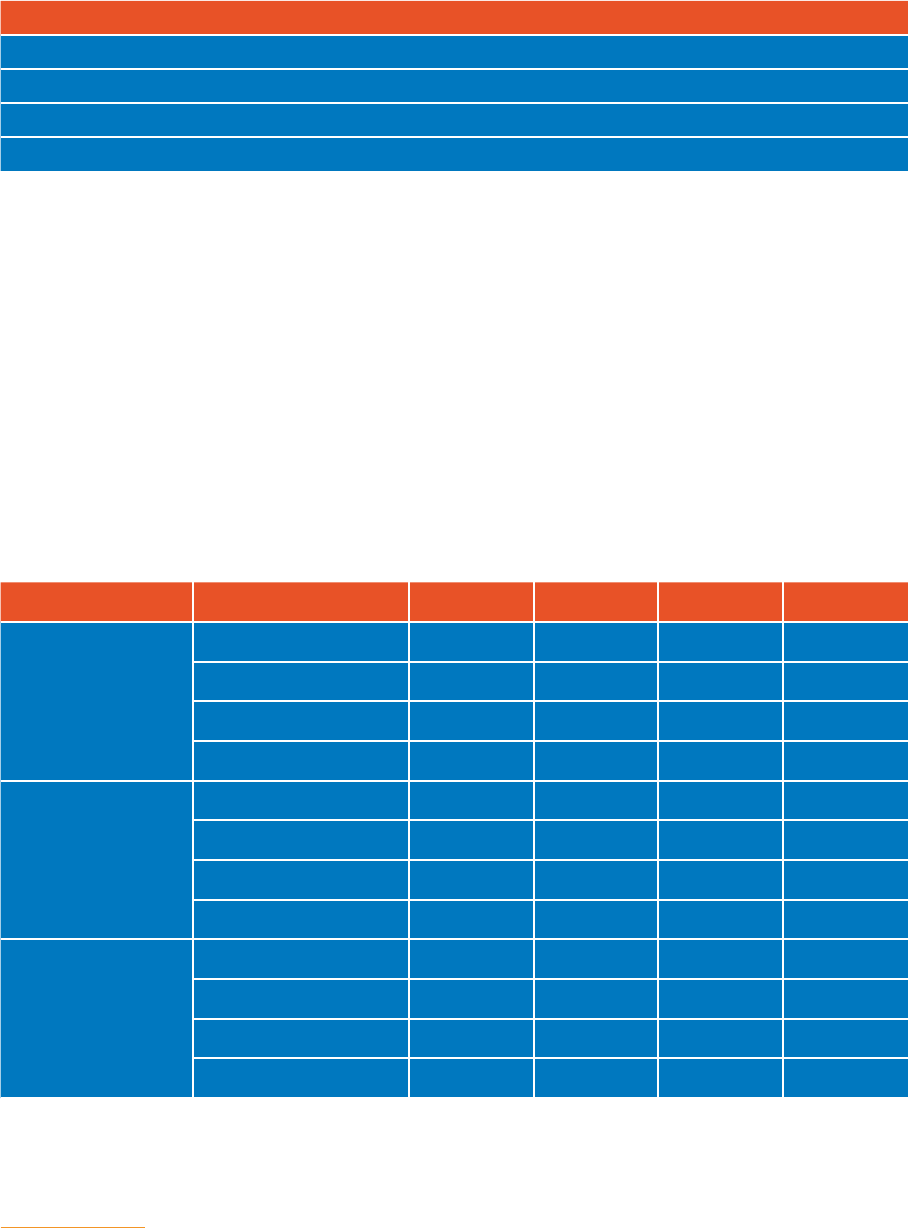
243
Foreign clients accounted for £255.6 million, or 36%, of total VFX spend in the UK in 2019
(Table 114).
Table 114
VFX spend in the UK, by location of client, 2016-2019 (£m)
2016 2017 2018 2019
Non-UK clients 281.6 237.7 221.3 255.6
UK-based clients 293.1 422.6 459.2 454.4
Total 574.7 660.3 680.5 710.0
Foreign client share 49% 36% 33% 36%
Source: Olsberg•SPI/Nordicity estimates based on data from survey of VFX companies and D&B
Notes:
Excludes any revenue earned by VFX companies from video or audio post-production services
Figures may not sum to totals due to rounding
Using the Job Creation Model, total VFX production expenditure figures were analysed to
estimate the value and impact of spending from each relevant fiscal tax relief through the VFX
sector.
239
This analysis shows that VFX-related production generated 10,680 direct full-time
equivalent (FTE) jobs in 2019, £517.6 million in direct compensation of employment (CoE) and
£593.6 million in direct gross value added (GVA). Of these totals, production supported by one
of the tax reliefs accounted for 5,470 FTEs, £265.0 million in employment compensation and
£303.9 million in GVA (Table 115).
Table 115
Direct economic impact of all VFX production in the UK, 2016-2019
2016 2017 2018 2019
Tax reliefs
VFX spend (£m) 239.8 301.3 361.9 363.5
Employment (FTEs) 3,820 4,730 5,390 5,470
CoE (£m) 174.8 219.7 263.8 265.0
GVA (£m) 200.5 251.9 302.6 303.9
Other film/
television
†
,
television
commercials
and other video
content
VFX spend (£m) 334.9 359.0 318.5 346.5
Employment (FTEs) 5,340 5,640 4,750 5,210
CoE (£m) 244.1 261.7 232.2 252.6
GVA (£m) 279.9 300.1 266.3 289.7
Total
VFX spend (£m) 574.7 660.3 680.5 710.0
Employment (FTEs) 9,160 10,370 10,140 10,680
CoE (£m) 418.9 481.4 496.1 517.6
GVA (£m) 480.4 552.0 568.9 593.6
Source: Olsberg•SPI/Nordicity estimates based on data from survey of VFX companies and D&B
Notes:
† Includes lms and television projects made without support of the tax reliefs
Excludes any revenue earned by VFX companies from video or audio post-production services
Figures may not sum to totals due to rounding
239. Further information on the Job Creation Model can be found in Section 4.3.1.
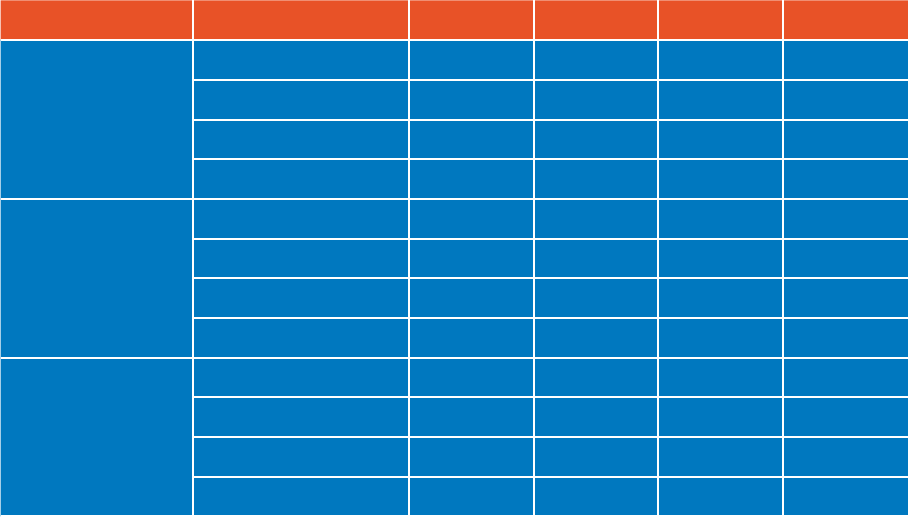
244
As with the other production sectors covered in this study, spending through the VFX sector
generates indirect impacts through purchases of goods and services and induced impacts
through the re-spending of wages by direct and indirect employees. To estimate the value
of these multiplier effects, a bespoke model was generated through an analysis of Office for
National Statistics (ONS) input-output (I-O) tables.
This model indicated that the VFX sector generated a total economic impact, including indirect
and induced impacts, of 15,130 FTEs, £633.8 million in employment compensation and
£812.3 million in GVA in 2019 (Table 116).
Table 116
Total economic impact of all VFX production in the UK, 2016-2019
2016 2017 2018 2019
Employment
(FTEs)
Direct 9,160 10,370 10,140 10,680
Indirect 1,730 1,950 2,050 2,130
Induced 1,890 2,150 2,240 2,320
Total 12,780 14,470 14,430 15,130
CoE
(£m)
Direct 418.9 481.4 496.1 517.6
Indirect 43.1 48.4 51.0 53.3
Induced 50.8 58.3 60.2 62.9
Total 512.9 588.1 607.2 633.8
GVA
(£m)
Direct 480.4 552.0 568.9 593.6
Indirect 84.4 95.1 100.0 104.3
Induced 92.7 106.1 109.8 114.5
Total 657.5 753.2 778.7 812.3
Source: Olsberg•SPI/Nordicity estimates based on data from the BFI, ABS, ASHE and survey of VFX companies and D&B
Note:
Figures may not sum to totals due to rounding
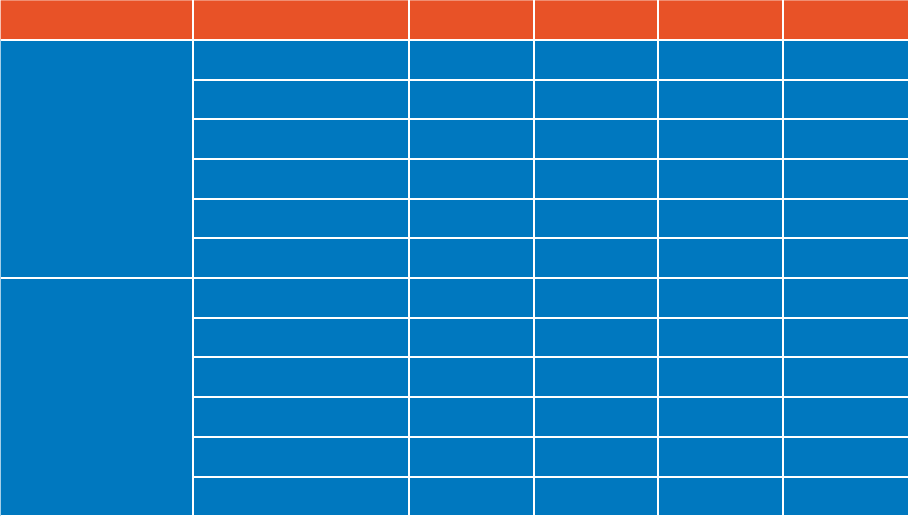
245
17.1.1. Value chain impact
Table 117 combines the economic impact of all VFX production with the economic impact that
VFX content (for film and television) generates across the value chain (see Table 76 in Section
9.3.). This combined economic impact generated 19,220 FTEs and £1.25 billion in GVA in 2019.
Table 117
Total economic impact across the screen sector value chain of all VFX content in the
UK, 2016-2019
2016 2017 2018 2019
Employment
(FTEs)
Production 12,780 14,470 14,430 15,130
Distribution 810 1,150 1,410 1,610
Cinema exhibition 930 1,060 1,730 1,680
Television broadcast 170 250 290 300
Video platforms
†
350 380 470 500
Total 15,040 17,310 18,330 19,220
GVA
(£m)
Production 657.5 753.2 778.7 812.3
Distribution 157.2 214.1 279.2 291.2
Cinema exhibition 45.0 52.2 92.5 92.7
Television broadcast 17.3 18.6 18.7 23.0
Video platforms
†
17.5 21.3 28.5 33.1
Total 894.5 1,059.4 1,197.6 1,252.4
Source: Olsberg•SPI/Nordicity estimates based on data from the BFI, Ofcom, Omdia, ABS, public nancial reports, Ofcial
Charts Company, BASE, ASHE, survey of VFX companies and D&B
Notes:
† Includes physical video (ie DVD sales and rentals) and digital video platforms
Figures may not sum to totals due to rounding
17.2. Overall economic contribution
In Table 118 the value of the spillover impacts generated by the production of VFX content for
film and television is added to the total economic impact of VFX content across the value chain
to estimate the overall economic contribution of all VFX content in the UK – though it should be
noted that this excludes any spillover impacts associated with VFX for commercials and other
video production. In 2019, all VFX content in the UK generated 27,430 FTEs and £1.68 billion
in GVA.

246
Table 118
Overall economic contribution (including spillover impacts
†
) of all VFX content in the
UK, 2016-2019
2016 2017 2018 2019
Employment
(FTEs)
Value chain impact 15,040 17,310 18,330 19,220
Spillover impacts
†
3,840 5,190 7,460 8,210
Total 18,880 22,500 25,790 27,430
GVA
(£m)
Value chain impact 894.5 1,059.4 1,197.6 1,252.4
Spillover impacts
†
181.1 253.7 377.8 429.2
Total 1,075.6 1,313.1 1,575.4 1,681.5
Source: Olsberg•SPI/Nordicity estimates based on data from the BFI, Ofcom, Omdia, ABS, public nancial reports, Ofcial
Charts Company, BASE, ASHE and survey of VFX companies
Notes:
† Only includes spillover impacts associated with VFX content incorporated in lm and television production supported by the
tax reliefs; excludes any spillover impacts associated with VFX for commercials and other video production
Figures may not sum to totals due to rounding

247
APPENDIX 3
18
Economic contribution methodology

248
18.1. Direct impact
Direct employment, compensation of employment (CoE) and gross value added (GVA) were
estimated using a variety of different methods as outlined in the sub-sections and tables below.
Data points for 2019 have been used to illustrate certain methodology calculations.
18.1.1. Film sector
Table 119
Film sector methodology summary
Production • Production expenditures sourced from the BFI
• Employment, CoE and GVA estimated based on the employment, CoE
and GVA ratios in Job Creation Model
• Inward investment films: 10.6 FTEs per million pounds, £0.44m CoE
per million pounds, £0.53m GVA per million pounds
• UK domestic and co-production films: 12.2 FTEs per £m, £0.47m
CoE per £m, £0.63m GVA per £m
Distribution • Historical average of UK films’ share of UK box office (43.7%) multiplied
by total employment, CoE and GVA
• Total FTEs in SIC 59.13/1 (5,020) = total employment in SIC 59.13/1
(5,320) x FTE adjustment factor (0.944)
240
• FTEs (2,190) = box office share (43.7%) x total FTEs in SIC 59.13/1
(5,020)
• CoE (£159.1m) = box office share (43.7%) x total CoE in SIC 59.13/1
(£364m)
• GVA (£1,387.5) = box office share (43.7%) x total GVA in SIC 59.13/3
(£3,175m)
Cinema
exhibition
• The box office and box office share of UK films were obtained from
the BFI
• UK films’ share of UK box office in 2019 (47.6%) multiplied by total
employment, CoE and GVA
• Total FTEs in SIC 59.14 (12,976) = total employment in SIC 59.14
(20,731) x FTE adjustment factor (0.626)
• FTEs (6,180) = box office share (47.6%) x total FTEs in SIC 59.14
(12,976)
• CoE (£149.0m) = box office share (47.6%) x total CoE in SIC 59.14
(£313m)
• GVA (£346.5) = box office share (47.6%) x total GVA in SIC 59.14
(£728m)
240. The FTE adjustment factor was derived by examining the distribution of full-time and part-time employment in a given SIC (as report-
ed in BRES) and then assigning a weight of 1.0 FTE to each full-time employee and 0.5 FTE to each part-time employee. The ratio of the
estimated number of FTEs to the total number of employees represents the FTE adjustment factor

249
TV broadcast • UK films’ value on UK television was sourced from the BFI
• CoE and GVA estimated using ratios of CoE-to-turnover and GVA-to-
turnover for SIC 60.2
• CoE (£11.8m) = attributable revenue (£118m) x CoE ratio (0.10) for
SIC 60.2
• GVA (£21.2m) = attributable revenue (£118m) x GVA ratio (0.18) for
SIC 60.2
• Employment estimated by dividing CoE by average FTE cost of £55,994
• Average FTE cost £47,736 = annualised median weekly salary
(£918) x 52 x social security factor 1.173
• FTEs (210) = CoE (£11.8m) ÷ average FTE cost (£55,994)
Physical video • UK films’ value in the UK physical video market (sales and rentals) was
sourced from the BFI
• ABS data for SIC 47, Retail trade, except of motor vehicles and
motorcycles were used to derive CoE-to-turnover and GVA-to-turnover
ratios
• The CoE and GVA ratios were multiplied by the attributable physical video
revenue for UK films to estimate the attributable CoE and GVA
• CoE (£18.1m) = CoE ratio (0.123) x attributable physical video revenue
(£147m)
• GVA (£31.8m) = GVA ratio (0.216) x attributable physical video revenue
(£147m)
• Annual Survey of Hours and Earnings (ASHE) data were used to derive
the average FTE cost (£24,190) for SIC 47
• FTEs (750) = CoE (£18.1m) ÷ average FTE cost (£24,190)
Digital video • UK films’ value in the UK digital video market was sourced from the BFI
• Public financial information for Amazon’s video operations in the UK was
used to ascertain CoE-to-turnover and GVA-to-turnover ratios
• CoE (£8.3m) = CoE ratio (0.033) x attributable revenue (£250m)
• GVA (£30.3m) = GVA ratio (0.121) x attributable revenue (£250m)
• Public financial information for Amazon’s video operations in the UK was
used to derive an employment-to-turnover ratio
• FTEs (80) = employment ratio (0.32 FTEs per £m) x attributable revenue
(£250m)
Table 119
Film sector methodology summary (continued)

250
18.1.2. High-end television sector
Table 120
High-end television sector methodology summary
Production • Production expenditures sourced from the BFI
• Employment, CoE and GVA estimated based on the employment, CoE
and GVA ratios in Job Creation Model (11.9 FTEs per £m, £0.49m CoE
per £m, £0.58m GVA per £m)
Television
broadcast
• The BFI conducted an analysis of HETV titles to determine their share of
television viewing
• This audience share was multiplied by overall television industry revenue
(as reported by Ofcom) to ascertain the share of industry revenue or
‘economic share’ of HETR
• Attributable revenue (£1,706.7m) = economic share (12.9%) x total
television sector revenue (£13,230m)
• CoE and GVA estimated using ratios of CoE-to-turnover and GVA-to-
turnover for SIC 60.2
• CoE (£170.7m) = attributable revenue (£1,706.7m) x CoE ratio (0.10)
• GVA (£307.2m) = attributable revenue (£1,706.7m) x GVA ratio (0.18)
• Employment estimated by dividing CoE by average FTE cost of £55,994
• Average FTE cost £47,736 = annualised median weekly salary (£918) x
52 x social security factor 1.173
• FTEs (3,050) = CoE (£170.7m) ÷ average FTE cost (£55,994)
Distribution • The economic share was adjusted to account for genres of television
programming not typically subject to audiovisual distribution
• This adjusted economic share was multiplied by the total CoE and GVA
reported in the ABS in SIC 59.13/3, Television programme distribution
activities to estimate the CoE and GVA generated by HETV
• CoE (£33.8m) = adjusted economic share (21.3%) x CoE in SIC 59.13/3
(£159m)
• GVA (£167.7) = adjusted economic share (21.3%) x GVA in SIC 59.13/3
(£788m)
• Adjusted economic share was multiplied by the total employment in
SIC 59.13/3 – as per Inter-Departmental Business Register (IDBR) – to
estimate the employment generated by HETV. Total employment was
converted to FTEs based on FTE conversion ratio
• FTEs (340) = adjusted economic share (21.3%) x employment in SIC
59.13/3 (1,736) x FTE conversion ratio (0.92)

251
Physical video • The economic share (12.9%) was adjusted to account for genres of
television programming not typically prominent in the physical video
market and resulted in an adjusted economic share of 39.4%
• Annual Business Survey (ABS) data for SIC 47, Retail trade, except of
motor vehicles and motorcycles were used to derive CoE-to-turnover
and GVA-to-turnover ratios
• The CoE and GVA ratios were multiplied by the attributable physical video
revenue to estimate the attributable CoE and GVA
• CoE (£6.7m) = CoE ratio (0.123) x attributable physical video revenue
(£54.7m)
• GVA (£11.8m) = GVA ratio (0.216) x attributable physical video revenue
(£54.7m)
• ASHE data were used to derive the average FTE cost (£24,190) for
SIC 47
• FTEs (280) = CoE (£6.7m) ÷ average FTE cost (£24,190)
Digital video • The economic share (12.9%) was adjusted to account for genres of
television programming not typically prominent in the digital video market
and resulted in an adjusted economic share of 39.4%
• This adjusted economic share was multiplied by the total value of UK
digital video market to estimate the digital video revenue attributable to
HETV
• Public financial information for Amazon’s video operations in the UK was
used to ascertain CoE-to-turnover and GVA-to-turnover ratios
• CoE (£28.1m) = CoE ratio (0.033) x attributable revenue (£852.9m)
• GVA (£103.2m) = GVA ratio (0.121) x attributable revenue (£852.9m)
• Public financial information for Amazon’s video operations in the UK was
used to derive an employment-to-turnover ratio.
• FTEs (270) = employment ratio (0.32 FTEs per £m) x attributable revenue
(£852.9m)
Table 120
High-end television sector methodology summary (continued)

252
18.1.3. Video games sector
Table 121
Video games sector methodology summary
Development • A list of video games companies was obtained from the database
underpinning Ukie’s UK Games Map
• This list of companies was shared with Ortus Economic Research, which
sourced and assigned employment and turnover data for a sample of
companies for 2016
• These employment and turnover data were validated against other
sources (for example, Companies House accounts, direct interviews with
video games companies) and, in some cases, were amended
• For 2017 to 2019, Ukie, Olsberg•SPI and Nordicity researched or
modelled employment levels for each company
• Companies without employment data were assumed to have either one
or two employees
• Data from Companies House were also used to estimate GVA for large
companies
• For small companies (and companies with no public GVA data), the
GVA per employee in SIC 62, Computer programming, consultancy and
related activities (adjusted for regional differences in GVA per employee)
was used to impute GVA
• The wage-to-GVA ratio implied by the results of Nordicity’s survey of
video games companies for the Entertainment Software Association of
Canada (ESAC) was used to estimate CoE
• The turnover-to-GVA ratio implied by the results of Nordicity’s survey
of video games companies for the ESAC was used to estimate total
turnover in the database behind Ukie’s UK Games Map; for 2017-2019,
the turnover-to-GVA for SIC 62.01/1, Ready-made interactive leisure and
entertainment software development (as per the UK ABS published by
ONS) was used to convert GVA to turnover

253
Publishing • A list of video games companies was obtained from the database
underpinning Ukie’s UK Games Map
• This list of companies was shared with Ortus Economic Research, which
sourced and assigned employment and turnover data for a sample of
companies for 2016
• For 2017 to 2019, Ukie, Olsberg•SPI and Nordicity researched or
modelled employment levels for each company
• These employment and turnover data were validated against other
sources (for example, Companies House accounts, direct interviews with
video games companies) and, in some cases, were amended
• Companies without employment data were assumed to have either one
or two employees
• Data from Companies House were also used to estimate GVA for large
companies
• For small companies (and companies with no public GVA data), the GVA
per employee in SIC 58.21, Publishing of computer games, (adjusted for
regional differences in GVA per employee) was used to impute GVA
• The wage-to-GVA ratio as per ABS for SIC 58.21, Publishing of computer
games was used to estimate CoE
Consumption
(ie digital and
physical sales)
• Consumer spending data were obtained from Ukie (and originally sourced
from GfK, Kantar World Panel and Superdata)
• Ukie conducted a title review to determine the market share held by UK-
made titles in the physical and digital markets
• Data from the ABS for SIC 47.63, Retail sale of music and video
recordings in specialised stores were used to determine the ratios of
CoE-to-turnover, GVA-to-turnover and employment-to-turnover ratios
• These ratios were multiplied by the estimated consumer spending on
physical video games (UK-made and non-UK) to estimate CoE, GVA and
employment
• Data from the ABS for SIC 63.11, Data processing, hosting and related
were used to determine the ratios of CoE-, GVA- and employment-to-
turnover ratios
• These ratios were multiplied by the estimated consumer spending on
digital video games (UK-made and non-UK) to estimate CoE, GVA and
employment
• For both physical and digital markets, the UK development expenditure
accounted for by VGTR projects was used to apportion the economic
contribution of consumption (ie digital and physical sales) between VGTR
and non-VGTR titles
Table 121
Video games sector methodology summary (continued)

254
18.1.4. Animation programme sector
Table 122
Animation programme sector methodology summary
Production • Production expenditures for ATR were sourced from the BFI
• A survey of animation companies (conducted in 2017) was used to
obtain data to estimate the CoE ratio (0.575)
• The estimate of the operating-surplus ratio for VFX companies derived for
the Job Creation Model (0.107) was combined with the CoE ratio (0.575)
to arrive at a GVA ratio of 0.682 for ATR
• The median salary of £37,160 from the survey of animation companies
was multiplied by 1.138 to convert it to a median FTE cost of £42,280;
the annual average change in hourly earnings was used to derive median
FTE costs for subsequent years (2019: £44,686)
• FTEs estimated by dividing CoE by the average FTE cost
Television
broadcast
• The BFI conducted an analysis of ATR titles to determine their share of
television viewing
• This audience share was multiplied by overall television industry revenue
(as reported by Ofcom) to ascertain the share of industry revenue or
‘economic share’ of ATR
• Attributable revenue (£238.1m) = economic share (1.80%) x total
television sector revenue (£13,230m)
• CoE and GVA estimated using ratios of CoE-to-turnover and GVA-to-
turnover for SIC 60.2, Television programming and broadcasting activities
• CoE (£23.8m) = attributable revenue (£238.1m) x CoE ratio (0.10)
• GVA (£42.9m) = attributable revenue (£238.1m) x GVA ratio (0.18)
• Average FTE cost £55,994 = annualised median weekly salary (£918) x
52 x social security factor 1.173 FTEs (430) = CoE (£23.8m) ÷ average
FTE cost (£55,994)
Distribution • The economic share derived for the broadcast of ATR programming was
adjusted to account for genres of television programming not typically
subject to audiovisual distribution
• This adjusted economic share (2.97%) was multiplied by the total
turnover in SIC 59.13/3, Television programme distribution activities
(£2,275m), to estimate the distribution revenue attributable to ATR
programming (£65.6m)
• CoE (£4.7m) = adjusted economic share (2.97%) x CoE in SIC 59.13/3
(£159m)
• GVA (£23.4m) = adjusted economic share (2.97%) x GVA in SIC 59.13/3
(£788m)

255
Distribution
(continued)
• Adjusted economic share was multiplied by the total employment in
SIC 59.13/3 (as per IDBR) to estimate the employment generated by
ATR content; total employment was converted to FTEs based on FTE
conversion ratio
• FTEs (50) = adjusted economic share (2.97%) x employment in
SIC 59.13/3 (1,736) x FTE conversion ratio (0.92)
Physical video • The economic share (1.80%) was adjusted to account for genres of
television programming not typically prominent in the physical video
market and resulted in an adjusted economic share of 6.0%
• ABS data for SIC 47, Retail trade, except of motor vehicles and
motorcycles were used to derive CoE-to-turnover and GVA-to-turnover
ratios
• The CoE and GVA ratios were multiplied by the attributable physical video
revenue to estimate the attributable CoE and GVA
• CoE (£2.4m) = CoE ratio (0.123) x attributable physical video revenue
(£19.7m)
• GVA (£4.2m) = GVA ratio (0.216) x attributable physical video revenue
(£19.7m)
• ASHE data were used to derive the average FTE cost (£24,190) for
SIC 47
• FTEs (100) = CoE (£2.4m) ÷ average FTE cost (£24,190)
Digital video • The economic share (1.80%) was adjusted to account for genres of
television programming not typically prominent in the digital video market
and resulted in an adjusted economic share of 6%
• This adjusted economic share was multiplied by the total value of UK
digital video market to estimate the digital video revenue attributable
to ATR
• Public financial information for Amazon’s video operations in the UK was
used to ascertain CoE- and GVA-to-turnover ratios
• CoE (£4.3m) = CoE ratio (0.033) x attributable revenue (£128.9m)
• GVA (£15.6m) = GVA ratio (0.121) x attributable revenue (£128.9m)
• Public financial information for Amazon’s video operations in the UK was
used to derive an employment-to-turnover ratio
• FTEs (40) = employment ratio (0.32 FTEs per £m) x attributable revenue
(£128.9m)
Table 122
Animation programme sector methodology summary (contined)

256
18.1.5. Children’s television sector
Table 123
Children's television sector methodology summary
Production • Production expenditures sourced from the BFI
• Employment, CoE and GVA estimated based on the employment, CoE
and GVA ratios in Job Creation Model (11.9 FTEs per £m, £0.49m CoE
per £m, £0.59m GVA per £m)
TV broadcast • The BFI conducted an analysis of CTR titles to determine their share of
television viewing
• This audience share was multiplied by overall television industry revenue
(as reported by Ofcom) to ascertain the share of industry revenue or
'economic share' of CTR
• Attributable revenue (£224.9m) = economic share (1.70%) x total
television sector revenue (£13,230m)
• CoE and GVA estimated using ratios of CoE- and GVA-to-turnover for
SIC 60.2, Television programming and broadcasting activities
• CoE (£22.5m) = attributable revenue (£224.1m) x CoE ratio (0.10)
• GVA (£40.5m) = attributable revenue (£224.1m) x GVA ratio (0.18)
• Average FTE cost £55,994 = annualised median weekly salary
(£918) x 52 x social security factor 1.173
• FTEs (400) = CoE (£22.5m) ÷ average FTE cost (£55,994)
Distribution • The economic share derived for the broadcast of CTR programming was
adjusted to account for genres of television programming not typically
subject to audiovisual distribution
• This adjusted economic share (2.81%) was multiplied by the total
turnover in SIC 59.13/3, Television programme distribution activities
(£2,275m), to estimate the distribution revenue attributable to ATR
programming (£65.6m)
• CoE (£4.5m) = adjusted economic share (2.81%) x CoE in SIC 59.13/3
(£159m)
• GVA (£22.1m) = adjusted economic share (2.81%) x GVA in SIC 59.13/3
(£788m)
• Adjusted economic share was multiplied by the total employment in
SIC 59.13/3 (as per IDBR) to estimate the employment generated by
ATR content; total employment was converted to FTEs based on FTE
conversion ratio
• FTEs (50) = adjusted economic share (2.81%) x employment in SIC
59.13/3 (1,736) x FTE conversion ratio (0.92)

257
Physical video • The economic share (1.70%) was adjusted to account for genres of
television programming not typically prominent in the physical video
market and resulted in an adjusted economic share of 5.6%
• ABS data for SIC 47, Retail trade, except of motor vehicles and
motorcycles were used to derive CoE-to-turnover and GVA-to-turnover
ratios
• The CoE and GVA ratios were multiplied by the attributable physical video
revenue to estimate the attributable CoE and GVA
• CoE (£2.3m) = CoE ratio (0.123) x attributable physical video revenue
(£18.7m)
• GVA (£4.0m) = GVA ratio (0.216) x attributable physical video revenue
(£18.7m)
• ASHE data were used to derive the average FTE cost (£24,190) for
SIC 47
• FTEs (90) = CoE (£2.3m) ÷ average FTE cost (£24,190)
Digital video • The economic share (1.70%) was adjusted to account for genres of
television programming not typically prominent in the digital video market
and resulted in an adjusted economic share of 5.6%
• This adjusted economic share was multiplied by the total value of UK
digital video market to estimate the digital video revenue attributable to
CTR
• Public financial information for Amazon’s video operations in the UK was
used to ascertain CoE-to-turnover and GVA-to-turnover ratios
• CoE (£4.0m) = CoE ratio (0.033) x attributable revenue (£121.7m)
• GVA (£14.7m) = GVA ratio (0.121) x attributable revenue (£121.7m)
• Public financial information for Amazon’s video operations in the UK was
used to derive an employment-to-turnover ratio
• FTEs (40) = employment ratio (0.32 FTEs per £m) x attributable revenue
(£121.7m)
General • For parts of the value chain with retail sales, VAT was estimated at 17%
of gross sales (inclusive of VAT)
• Income Tax, NIC, Corporation Tax and Council Tax were estimated by
modelling the average level of taxation per pound of GVA that would be
generated by an employee receiving the average salary of the particular
sectoral area. For example, for television broadcast, the average
annual salary (as per ASHE) in SIC 60.2, Television programming and
broadcasting activities was used
Table 123
Children's television sector methodology summary (continued)

258
18.1.6. VFX sector
Table 124
VFX sector methodology summary
Production • A survey of VFX companies was administered to obtain data on the level
and types of VFX production and company turnover
• The survey data were supplemented by data for VFX companies
identified through research in LinkedIn
• For the sample of VFX companies identified through the LinkedIn
research, employment data were sourced from D&B Hoovers
• CoE and GVA were estimated based on the CoE and GVA ratios derived
in the Job Creation Model. These ratios were established using data from
the UK Screen Alliance annual workforce survey
• Employment was estimated by dividing CoE by the average FTE cost for
the VFX sector, derived from UK Screen Alliance annual workforce survey
Film and television:
• CoE (£265.0m) = CoE ratio for VFX (0.729) x VFX expenditures (£363.5m)
• GVA (£303.9m) = GVA ratio for VFX (0.836) x VFX expenditures
(£363.5m)
• Employment (5,470 FTEs) = CoE (£265.0m) ÷ average FTE cost
(£48,500)
All VFX (including commercials and other production):
• CoE (£517.6m) = CoE ratio for VFX (0.729) x VFX expenditures (£710.0m)
• GVA (£593.6m) = GVA ratio for VFX (0.836) x VFX expenditures
(£710.0m)
• Employment (10,680 FTEs) = CoE (£517.6m) ÷ average FTE cost
(£48,500)
Television
broadcast /
distribution /
physical video
/ digital
• The survey data were used to estimate the portion of total expenditures
under FTR, HETR, ATR and CTR associated with VFX. These
represented the ‘VFX shares’
• The VFX shares were multiplied by the total economic contributions
of FTR, HETR, ATR and CTR, respectively, to television broadcast,
distribution, physical video and digital video markets to apportion part of
the value chain impacts in each case to VFX (as opposed to live action
production)
259
18.2. Indirect and induced impacts
(multiplier effects)
The multiplier effects include the incremental economic activity (ie income and employment)
generated in the supply chains for each part of the screen value chain, as well as the effects
across the wider UK economy that arise from additional household spending.
For each part of the value chain, the indirect and induced impacts were estimated using
Nordicity’s MyEIA Model. This model utilises the input-output (I-O) tables published by ONS,
along with other economic data (for example, median wages) to estimate how increased
purchases of goods and services translate into incremental employment, CoE and GVA. The
MyEIA Model also provides estimates of induced impacts.
18.2.1. Indirect impacts
After netting out CoE and other components of GVA from the total output in each part of the
value chain, an estimate of each part’s total spending on purchases of goods and services from
other industries (ie input purchases) was developed.
Data from production budgets, ABS and other industry studies were used to prepare a
breakdown of these input purchases into industry categories that correspond with ONS input-
output (I-O) tables.
The profile of input purchases for each part of the value chain was then entered into Nordicity’s
MyEIA Model as an increase in output in each of these supplier industries (ie an output shock).
These industry-by-industry output shocks provided the basis upon which the MyEIA Model
estimated the incremental employment, CoE and GVA that would be generated in these supplier
industries.
On the basis of the ONS I-O tables, the MyEIA Model also traced each supplier industry’s
purchase of inputs from other industries and the incremental employment, CoE and GVA
associated with those follow-on input purchases.

260
18.2.2. Induced impacts
Nordicity’s MyEIA Model also provides estimates of induced impacts; however, these estimates
are not based directly on the ONS I-O tables. Instead, they are based on existing observations of
the average ratio of Type II and Type I multipliers in the UK economy.
241
For example, in The Economic Impact of the UK Film Industry (2012), Oxford Economics
reported that the induced-impact multiplier was 1.25.
242
This means that the ratio of the Type II to
Type I multipliers for the UK economy was 1.25.
This is corroborated by the Type I and Type II multipliers published by the Scottish Government
for the Scottish economy. For the Scottish economy, the Type II employment multipliers are on
average equal to 1.20 times the Type I multipliers.
243
The slightly lower induced impact multiplier
for Scotland is understandable, given the likelihood that some portion of household spending will
leak from the Scottish economy into the economies of England, Wales or Northern Ireland.
Based on these observations, Nordicity’s MyEIA Model used an induced impact ratio of 1.25 and
thereby assumed that induced impacts will add 25% in CoE to the sum of the estimates of direct
and indirect CoE generated by the MyEIA Model.
This additional CoE was then converted to GVA based on the overall ratio of GVA to costs of
employment (as per the input-output tables). The additional CoE was converted to employment
impact (FTEs) based on the median full-time wage across the UK economy.
241. In the field of economic impact analysis, the Type I multiplier refers to the ratio of the sum of direct and indirect impacts to direct
impacts. It can be derived through the analysis of input-output tables. The Type II multiplier refers to the ratio of the sum of direct, indirect
and induced impacts to the direct impact. It can also be estimated through an analysis of input and output tables, if those tables also take
into consideration the additional economic effects associated with the re-spending of household income within a domestic economy. The
construction of the Type I and Type II multipliers implies that the ratio of these multipliers provides an indication of the induced impact ratio
that can be utilised for economic impact analysis
242. The Economic Impact of the UK Film Industry (2012). Ibid
243. Input-Output Tables 1998-2013 – Leontief Type 2 Table. Scottish Government, 2016. Accessible at: https://www.webarchive.org.uk/
wayback/archive/20161003212045/http://www.gov.scot/Topics/Statistics/Browse/Economy/Input-Output/Downloads/IO1998-2013L2

261
18.3. Total economic impact
The total economic impact was calculated as equal to the sum of direct, indirect and induced
impacts.
18.4. Additionality and return on investment
18.4.1. Gross additionality
FTR, HETR, ATR and CTR
The additionality rate for the production sub-sector for FTR, HETR, ATR and CTR was
established through an online survey of producers. This survey was sent to all producers who
received final certification for one of the various film and/or TV tax reliefs between in 2017 and
2019. To determine the rate of additionality, producers were asked the following questions:
1. In terms of your decision to produce in the UK, please rank the following factors in
order of importance (from 1 to 7 in order of importance, with 1 as the most important).
i. Quality and availability of suitably skilled cast and crew
ii. Overall cost base of the UK production market
iii. Exchange rate
iv. Quality and availability of facilities and infrastructure
v. Tax Relief
vi. Story setting
vii. Availability and accessibility of relevant locations
2. Taking into account all of the factors outlined above that influenced your decision to
undertake production in the UK, please answer the following:
On a scale of 0-10, please rate the importance of Film Tax Relief in your decision to
produce or co-produce in the UK (where 0 indicates it was not at all a factor and 10
indicates that it was the only factor)?
3. If Film Tax Relief had not been available to you, how much lower do think your
project’s expenditures in the UK would have been (where 0% indicates the same
expenditures, and 100% indicates that no part of the project would have been produced
in the UK)?
The results of these survey questions (particularly Question 3) were analysed with reference to the
volume of production spend in the UK originating domestically (including co-productions), and
from inward investment, to derive gross additionality rates.
VGTR
A slightly different survey questionnaire was circulated to companies that applied for VGTR
between 2017 and 2019.

262
18.4.2. About the survey
As noted in the previous sub-section, the gross rates of additionality for each tax relief were
derived from data collected through a survey of tax relief recipients.
Response rates
When measured in terms of the monetary value of production spending, the response rates were
relatively high.
For example, in the case of FTR, nearly 90% of production spending is accounted for by inward
investment production. The survey received responses from three major inward investors – and
while the spend accounted for by these is not known, the fact that there was no variability in
their responses (ie they all indicated a 100% additionality) suggests that the survey provides a
representative sample for the inward investment producers and, thereby, for nearly 90% of FTR
production and over 70% of HETR production.
Similarly, the 34 companies responding to the survey for Animation Tax Relief accounted for a
combined £159 million in tax-relief-supported production revenue between 2017-2019. That
represented 66% of the total value of production spending supported by ATR (£238.8m) over
that three year period.
The following table provides a breakdown of the gross additionality rates for inward investment
and domestic production for FTR and HETR. For the other tax reliefs, gross additionality
was calculated strictly on the basis of the survey response without any weighting for inward
investment production spending vs domestic production spending. This approach was taken
for several reasons. For these other tax reliefs, data on inward investment production was
not available; inward investment production was a relatively smaller share of total production
(compared to FTR and HETR); or there was no way to clearly identify inward investment
producers, developers or projects in the survey data.
Table 125
Gross rates of additionality from survey research, inward investment vs domestic
producers
FTR HETR
Inward investment
Mean reported additionality 100% 100%
Production spend weighting 86% 72%
Domestic
Mean reported additionality 46% 43%
Production spend weighting 14% 28%
Spend-weighted mean additionality 92% 84%
Source: Olsberg•SPI/Nordicity analysis based on data from survey of tax relief recipients (2021)
263
Respondent bias
The survey and analysis of additionality was based on self-reported data which can be prone to
respondent bias. In this case, this respondent bias could mean that the rates of additionality were
overstated. To address the risk of respondent bias, the survey included questions preceding
the additionality, which listed the various factors that film and TV producers and video game
developers consider when locating their production or development work in a particular country
(for example, exchange rate, suitability of local labour force, story setting). In fact, survey
respondents were asked to rate these various factors. The inclusion of this question would have
helped to ‘remind’ respondents of all these factors beyond the tax relief.
18.4.3. Net additionality
The gross rates of additionality were converted to net rates of additionality by accounting for
zero or lower rates of additionality in certain parts of the value chain. No discount was applied to
production (FTR, HETR, ATR and CTR), inbound tourism (FTR and HETR) or games development
(VGTR). The following discounts were applied to other parts of the value chain:
• Distribution/Publishing 86% to 45%
• Exhibition 86%
• Television broadcast 80% to 95%
• Physical video 90%
• Digital video 95% to 100%
• Digital and physical sales of video games 90%
In some cases (where ranges are provided), the discounts varied based on market share held
by domestic production vs inward investment production. In other cases, the discount was
varied between different sub-sectors. For example, in the digital platforms market, a 100%
discount was applied to FTR, but a 95% discount was applied to HETR to account for the fact
that some HETR titles were critical to consumers’ overall subscription decisions during the 2017
to 2019 period.
The net (ie ‘discounted’) additionality rates were applied to the total GVA and total tax impact of
each tax relief to estimate its additional GVA. These estimates of additional GVA were compared
to estimates of tax relief outlays to calculate the economic return on investment (RoI) of each
tax relief.
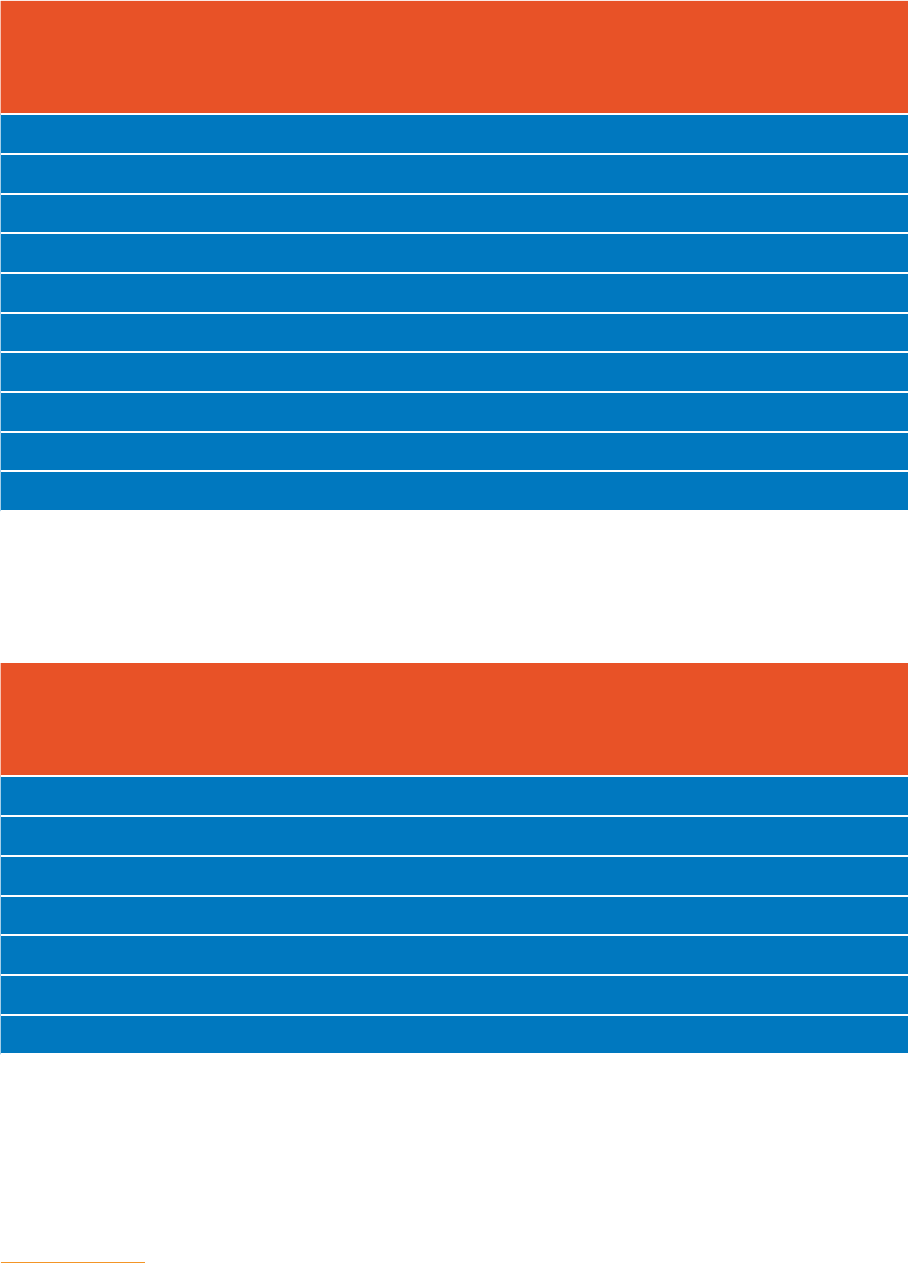
264
The following tables illustrate how the additional GVA was derived for each tax relief for 2019.
Table 126
Derivation of additional GVA, FTR, 2019
Total
GVA (A)
£m
Additionality
rate,
production
(B)
Discount
rate
C
Net rate of
additionality
(D=Bx[1-C])
Additional
GVA
(E=AxD)
£m
Production 2,362.3 92% 0% 92%
2,173.3
Distribution 1,831.5 92% 85% 14%
257.5
Exhibition 604.5 92% 85% 14%
85.0
Television broadcast 37.3 92% 95% 5%
1.7
Physical video 43.1 92% 90% 9% 4.0
Digital video 96.9 92% 100% 0% 0.0
Tourism 898.0 92% 0% 92% 826.2
UK brand promotion
244
1,737.9 92% 100% 0% 0.0
Merchandise 73.5 92% 100% 0% 0.0
Total 7,684.9 - - - 3,347.7
Source: Olsberg•SPI/Nordicity estimates based on data from the BFI, Omdia, ABS, IDBR, BRES, CAA, Comscore, BARB,
public nancial reports, Ofcial Charts Company, BASE, ASHE, ONS and HM Revenue & Customs (HMRC)
Table 127
Derivation of additional GVA, HETR, 2019
Total
GVA (A)
£m
Additionality
rate,
production
(B)
Discount
rate
C
Net rate of
additionality
(D=Bx[1-C])
Additional
GVA
(E=AxD)
£m
Production 2,450.3 84% 0% 84%
2,058.3
Distribution 326.4 84% 67% 28%
89.8
Television broadcast 541.5 84% 80% 17%
91.0
Physical video 17.0 84% 90% 8%
1.4
Digital video 339.0 84% 95% 4% 14.2
Tourism 502.7 84% 0% 84% 422.3
Total 4,177.0 - - - 2,677.0
Source: Olsberg•SPI/Nordicity estimates based on data from the BFI, BARB, Ofcom, Omdia, ABS, IDBR, BRES, public
nancial reports, ASHE, ONS and HMRC
244. See Section 4.4.3. for explanation

265
Table 128
Derivation of additional GVA, ATR, 2019
Total
GVA (A)
£m
Additionality
rate,
production
(B)
Discount
rate
C
Net rate of
additionality
(D=Bx[1-C])
Additional
GVA
(E=AxD)
£m
Production 75.7 50% 0% 50%
37.9
Distribution 47.5 50% 49% 26%
12.2
Television broadcast 75.6 50% 80% 10%
7.6
Physical video 5.8 50% 90% 5%
0.3
Digital video 50.0 50% 95% 3% 1.2
Merchandise 30.6 50% 100% 0% 0.0
Total 285.2 - - - 59.2
Source: Olsberg•SPI/Nordicity estimates based on data from the BFI, BARB, Ofcom, Omdia, ABS, IDBR, BRES, public
nancial reports, ASHE, ONS and HMRC
Table 129
Derivation of additional GVA, CTR, 2019
Total
GVA (A)
£m
Additionality
rate,
production
(B)
Discount
rate
C
Net rate of
additionality
(D=Bx[1-C])
Additional
GVA
(E=AxD)
£m
Production 99.7 40% 0% 40%
39.9
Distribution 40.8 40% 49% 21%
8.4
Television broadcast 71.1 40% 80% 8%
5.7
Physical video 5.4 40% 90% 4%
0.2
Digital video 47.1 40% 95% 2% 0.9
Total 264.1 - - - 55.1
Source: Olsberg•SPI/Nordicity estimates based on data from the BFI, BARB, Ofcom, Omdia, ABS, IDBR, BRES, public
nancial reports, ASHE, ONS and HMRC
18.4.4. Sensitivity analysis
Given the statistical uncertainty related to the precise rate of gross and thereby net additionality
for each tax relief, a sensitivity analysis was conducted to assess how the RoI varied with respect
to different levels of gross additionality. The sensitivity analysis shows that even at levels of gross
additionality below 50% but above 15%, the tax reliefs deliver RoIs of between £1.00 (VGTR) and
£4.50 (FTR and ATR).
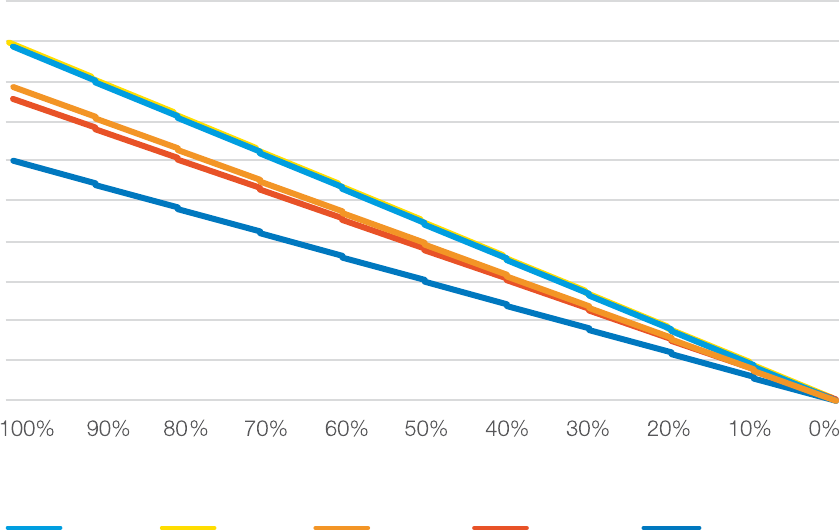
266
Figure 31
Sensitivity analysis
18.5. Audience analysis and derivation of
economic shares
18.5.1 Calculation of the economic share in 2016
The economic impact of the television programming supported by tax relief is not confined to the
production sub-sectors. When such programming is broadcast on television, it also generates
economic value for UK broadcasters.
To estimate the contribution that HETR, ATR and CTR programming made to the UK’s broadcast
sector, the audience performance of this programming was used to derive its ‘economic
share’. The term ‘economic share’ was used to account for the fact that this exercise arrived
at estimates of the share of television broadcast revenue attributable to television programming
supported by tax relief and, thereby, the proportion of the television broadcast sector’s
employment and GVA attributable to this programming.
Adjustments were also applied to the economic shares for HETR, ATR, CTR and UK-made
television animation programmes so that they could also be used to estimate attributable
employment and GVA for distribution and video platforms.
0.00
1.00
2.00
3.00
4.00
5.00
6.00
7.00
8.00
9.00
10.00
RoI (£)
ATR FTR CTR HETR VGTR
Source: Olsberg•SPI/Nordicity analysis based on data from survey of tax relief recipients (2021)
Note:
FTR line is obscured by ATR line
Gross additionality rate

267
To estimate the economic share for 2016, Attentional analysed the audience ratings for a sample
of television programmes supported by either HETR, ATR or CTR. This analysis established the
audience for each supported television programme airing on commercial television in the UK,
which was converted into an estimate of the net advertising revenue (revenue less advertising
commissions) which such a programme would achieve.
• For each episode of a television programme, Attentional obtained data on the
number of impacts
245
(measured in thousands) in the Adults-16-43, Adults-ABC and
Housewives+Children demographic groupings
246
• The tabulation of the number of impacts for each television programme was based on
Attentional’s analysis of audience data for the centre break and end break of that television
programme. The volume and complexity of the audience data meant that it was not possible
to also include the going-in breaks for each television programme. As per standard industry
practice, centre breaks were valued at 100%; end breaks were valued at 50% weight
• The total number of impacts in each demographic was multiplied by the cost-per-thousand
(CPT) for each demographic for each airing date to estimate the advertising revenue
generated by each episode
• The estimated advertising revenue was summed across all episodes and the three
demographics to arrive at an estimate of a particular television programme’s gross
advertising revenue
• The gross advertising revenue was converted to net advertising revenue (ie net of
commissions paid to agencies selling airtime on behalf of broadcasters) by multiplying gross
advertising by 85%
• The net advertising revenue represented the value to commercial television broadcasters
Revenue estimates were also generated for programmes airing on the BBC, even though they do
not generate advertising revenue. This was achieved by matching television programmes on the
BBC with their closest commercial television equivalent.
• Television programmes were matched on the basis of their audience levels and broadcast
channel. This means that a television programme with an audience of 2 million on BBC1 was
matched with a television programme with an audience of approximately 2 million on ITV1. A
television programme with an audience of 1 million on BBC2 was matched with a television
programme with an audience of approximately 1 million on Channel 4
• The revenue equivalent for the BBC television programme was then derived by scaling
(up or down) the revenue performance of the matched commercial television programme,
depending on the actual relationship in audience levels between the actual and matched
television programmes, while factoring in the number of transmissions and CPT differences
between the matched and actual television programme
245. A single impact is equal to one member of the target audience watching one commercial. On this basis, 10 impacts can be achieved
by 10 different viewers watching a single commercial, one viewer watching a commercial 10 times, or 5 viewers each watching a com-
mercial twice
246. Attentional audience data analysis was based on data from BARB, which excludes Netflix, Amazon Prime Video, and other VoD/
SVoD services, but does include certain subscription-based services offered by Sky

268
The net advertising revenue generated by the television programmes airing on a commercial
broadcaster and the derived equivalent revenue for television programmes airing on the BBC
were summed to arrive at an estimate of the total attributable television broadcast revenue
generated by the sample of television programmes. This estimate for the sample was then
grossed-up, based on the sample’s share (in terms of the total number of television programmes)
of the total population of television programmes supported by either HETR, ATR or CTR between
2014 and 2016 (Table 130).
Table 130
Derivation of economic shares for television broadcast
HETR ATR CTR
Total population (A) 125 70 48
Sample size (B) 86 56 42
Gross-up factor (C=A÷B) 1.45 1.25 1.14
Total attributable television broadcast revenue generated
by sample (£m) (D)
184.1 33.1 4.9
Total revenue generated by population (£m) (E=DxC) 267.6 41.4 5.6
UK television industry revenue (£m) (F) 6,660 6,660 6,660
Economic share for television broadcast (G=E÷F) 4.2% 0.62% 0.08%
Source: Olsberg•SPI/Nordicity estimates based on data from the BFI, Attentional and Ofcom
Notes:
A. The total number of television programmes that received tax relief between 2014 and 2016
B. The sample sizes for HETR, ATR and CTR have a margin of error of ±5% (18 times out 20)
C. Equals: A÷B
D. Attentional’s estimate of the revenue generated by the sample of programmes for UK broadcasters
E. Equals: DxC
F. See Table 131
G. Equals: E÷F
The denominator for estimated economic share consisted of the television broadcast sector’s
net advertising revenue and the portion of BBC’s income allocated to television operations. The
denominator excluded subscription revenue in the television sector, online television revenue and
revenue earned from other television services, since these types of revenue were not included in
Attentional’s estimate of television programme revenue.

269
Table 131
Derivation of denominator for economic share calculation, 2016
Amount (£m)
Net advertising revenue in UK television broadcast sector
1
4,123
BBC income allocated to television operations
2
2,537
Total
3
6,660
Source: Ofcom, Communications Market Report 2017, p51 (Figure 2.11)
Notes:
1. Net advertising represents the gross advertising less commissions paid to agencies that sell advertising airtime on behalf of
broadcasters
2. Represents the portion of BBC licence fee and other revenue allocated to its television operations. Also includes money
allocated to S4C
3. Subscription revenue earned by Sky UK, Virgin Media, BT Television and TalkTalk (£6,392m) has been excluded from the
total, since subscription revenue estimates did not form part of Attentional’s analysis. Revenue for other television services
– including television shopping, sponsorship, interactive, programme sales and S4C’s grant from the Department for Digital,
Culture, Media & Sport (DCMS) – and online television have also been excluded
18.5.2. Calculation of the economic share for 2017 to 2019
To estimate the economic share for 2017, 2018 and 2019, the BFI analysed the audience ratings
for HETR, ATR and CTR titles that accessed the tax relief since its introduction. This analysis
established the audience for each title airing on television in the UK. The total audience across all
titles was then compared to the total viewing minutes in each year to establish the audience and,
thereby, economic share of the titles supported by tax relief.
These economic shares were then multiplied by the annual total revenue in the UK television
broadcast programming market to generate a monetary estimate of the value of the television
content supported by the tax reliefs.
Table 132
Total revenue in the UK broadcasting sector, 2017-2019 (£m)
2017 2018 2019
PSB channels
1
4,744.7 4,710.5 4,595.7
Commercial multi-channels 2,517.2 2,474.4 2,350.7
Platform operators
2
6,148.7 6,342.5 6,284.0
Total 13,410.6 13,527.5 13,230.5
Source: Ofcom
Notes:
1. Includes commercial revenue sources and income from household licence fees and grant-in-aid
2. Platform operators includes Sky TV, Virgin Media, BT TV and TalkTalk subscriber revenue (excluding revenue from
broadband and telephony), but excludes revenue of digital video platforms (SVoD, VoD and TVoD) and online video advertising
revenue from catch-up services
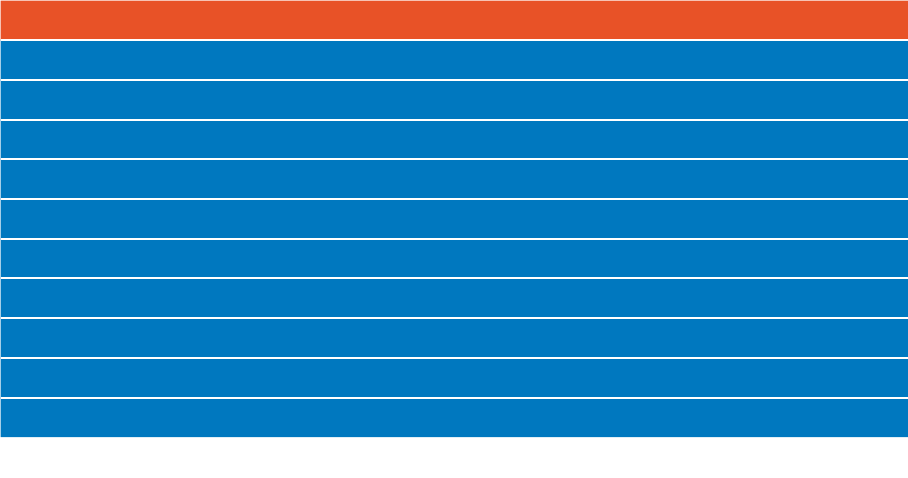
270
18.6. Adjusted economic shares
While the economic shares (derived above) provide a reasonable approximation of HETR,
ATR and CTR programming’s contribution to television broadcast revenue, adjustments to the
economic shares were required so that they could be used to estimate attributable revenue,
employment and GVA for the distribution and video platforms (ie DVD sales and rentals, VoD/
SVoD/TVoD) sub-sectors.
18.6.1. Distribution
For the distribution sub-sector, the economic share was adjusted to take into account that many
genres of broadcast television programming are not typically subject to significant distribution
sales. For example, while news and sports programming garner large audience shares on
broadcast television, the programming is not typically licensed to other countries or windows in
the same manner as fiction programming. This would imply that the economic shares applicable
to the distribution sub-sector should be higher than those applicable to the television broadcast
sub-sector.
To arrive at the adjusted economic shares, the economic shares of HETR, ATR and CTR
programming were expressed as percentages of the aggregate audience share for the television
genres more likely to be subject to distribution sales. The audience share of these distribution
genres totalled 60.6% in 2019 (Table 133).
Table 133
Share of total television audience accounted for by distribution genres, 2016-2019
2016 2017 2018 2019
Children's 4.9% 4.2% 3.7% 3.1%
Comedy 3.6% 3.8% 3.7% 3.5%
Entertainment 13.9% 15.1% 15.5% 14.8%
Documentaries – science and nature 2.4% 2.6% 2.4% 2.4%
Documentaries – other 10.5% 11.7% 11.8% 12.4%
UK drama 6.7% 6.2% 6.2% 7.1%
UK soaps 4.2% 4.3% 4.6% 4.6%
Drama other 4.8% 5.1% 5.0% 4.4%
Leisure interests 8.2% 8.1% 7.8% 8.3%
Total 59.2% 61.1% 60.7% 60.6%
Source: Ofcom (BARB All individuals 4+)

271
An illustration of the adjusted economic shares for 2019 applicable to the distribution sub-sector
can be found in the following table.
Table 134
Derivation of adjusted economic shares for distribution sub-sector, 2019
HETR ATR CTR
Gross economic share (A) 12.9% 1.80% 1.70%
Audience share of distribution genres (B) 60.6% 60.6% 60.6%
Adjusted economic share (C=A÷B) 21.3% 2.97% 2.81%
Source: Olsberg•SPI/Nordicity estimates based on data from the BFI, BARB and Ofcom
18.6.2. Video platforms
For the video platforms sub-sector, the economic share was also adjusted to take into account
the television genres that are more popular on video platforms – ie physical video sales and
rentals, digital video (VoD/SVoD/TVoD). According to data published in the BFI Statistical
Yearbook, the fiction genres account for nearly 97% of sales of feature film DVDs in the UK in
2016.
247
Documentaries and other genres only accounted for 3%. With that in mind, only the
fiction genres were defined as video platform genres for this analysis and used to arrive at the
adjusted economic shares for HETR, ATR and CTR.
Table 135
Share of total television audience accounted for by video platform genres, 2016-2019
2016 2017 2018 2019
Children's 4.9% 4.2% 3.7% 3.1%
Comedy 3.6% 3.8% 3.7% 3.5%
UK drama 6.7% 6.2% 6.2% 7.1%
UK soaps 4.2% 4.3% 4.6% 4.6%
Drama other 4.8% 5.1% 5.0% 4.4%
UK films
1.0% 1.2% 1.2% 1.2%
Films other 7.5% 7.5% 7.2% 6.3%
Total 32.7% 32.3% 31.6% 30.2%
Source: Ofcom (BARB All individuals 4+)
247. Statistical Yearbook 2017. The BFI. Accessible at: https://www2.bfi.org.uk/sites/bfi.org.uk/files/downloads/bfi-statistical-year-
book-2017.pdf

272
To arrive at the adjusted economic shares applicable to video platforms, the economic shares of
HETR, ATR and CTR programming were expressed as percentages of the aggregate audience
share for video platform genres. An illustration of the 2019 adjusted economic shares applicable
to video platforms can be found in Table 136.
Table 136
Derivation of adjusted economic shares for video platform sub-sector
HETR ATR CTR
Gross economic share (A) 12.9% 1.80% 1.70%
Audience share of distribution genres (B) 30.2% 30.2% 30.2%
Adjusted economic share (C=A÷B) 42.7% 6.0% 5.6%
Source: Olsberg•SPI/Nordicity estimates based on data from the BFI, BARB and Ofcom.
18.7. Tax revenue impacts
The tax revenue impacts for each sector and sub-sector were estimated by combining the
following approaches.
Retail VAT: For parts with retail sales (for example, cinema exhibition, physical video), VAT was
estimated by multiplying the gross sales (inclusive of VAT) by 17%.
Income Tax, National Insurance Contributions (NIC), Corporation Tax, and employees’ VAT were
estimated using Nordicity’s Tax Impact Model. In general, this model divides GVA into its two
main components – employment compensation and operating surplus – and estimates Income
Tax, NIC and employees’ VAT based on the former and Corporation Tax based on the latter.
• Income Tax, NIC and employees’ VAT: These are estimated by modelling the average level
of taxation per £1 of employment compensation that would be generated by an employee
receiving the average salary of the particular sector or sub-sector under analysis. For
example, for the television broadcast sub-sector, the model estimates the average rate of
tax revenue per £1 of employment compensation associated with an employee earning the
average annual salary (as per the ONS Annual Survey of Hours and Earnings) in SIC 60.2,
Television programming and broadcasting activities. Where relevant, the modelling takes into
account the lower rates of taxation incurred by self-employed workers and uses a weighted
average of the taxation ratio of employed and self-employed workers.
• Corporation Tax: Data from Companies House, HMRC and ONS were used to establish the
ratio of Corporation-Tax-to-operating-surplus in each sector and sub-sector. This was done
on the basis of a review of Companies House accounts for leading companies in a sub-sector
or by observing the rate for closest two-digit SIC.
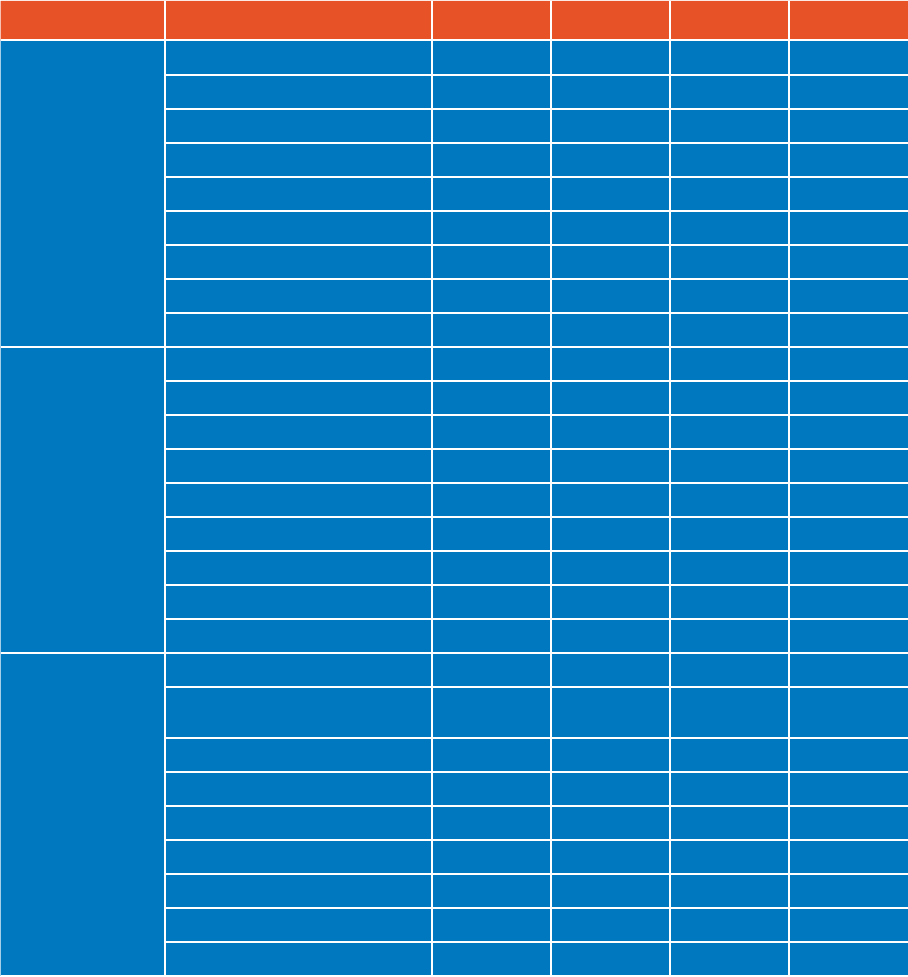
273
The following table summarises the effective tax ratios generated by Nordicity’s Tax Impact
Model. A more detailed description of the model is found below.
Table 137
Tax-to-GVA ratio, 2016-2019
Sub-sector 2016 2017 2018 2019
Average
annual
salary (£)
UK economy 28,306 27,700 28,480 29,588
Production 41,735 35,656 34,351 32,677
Distribution 50,929 49,780 48,703 48,745
Cinema exhibition 12,150 9,162 10,384 20,727
Television broadcasting 50,724 40,149 42,172 47,736
Physical video 16,904 20,332 20,852 21,871
Digital video 41,124 43,139 42,988 41,387
Video games development 44,769 38,007 41,293 41,740
Video games publishing 47,325 49,119 39,302 38,189
Effective tax
ratio for
Income Tax,
NIC and
employee VAT
1
UK economy 0.32 0.36 0.36 0.36
Production 0.37 0.38 0.38 0.37
Distribution 0.44 0.45 0.43 0.42
Cinema exhibition 0.19 0.11 0.13 0.30
Television broadcasting 0.41 0.41 0.41 0.42
Physical video 0.28 0.31 0.31 0.31
Digital video 0.39 0.42 0.41 0.41
Video games development 0.40 0.40 0.41 0.41
Video games publishing 0.42 0.44 0.40 0.40
Corporation
tax ratio
2
UK economy 0.075 0.061 0.065 0.063
Production
0.00 /
0.060
3
0.00 /
0.061
3
0.00 /
0.065
3
0.00 /
0.063
3
Distribution 0.060 0.061 0.065 0.063
Cinema exhibition 0.060 0.061 0.065 0.063
Television broadcasting 0.060 0.061 0.065 0.063
Physical video 0.060 0.061 0.065 0.063
Digital video 0.060 0.061 0.065 0.063
Video games development 0.060 0.061 0.065 0.063
Video games publishing 0.060 0.061 0.065 0.063
Source: Nordicity estimates based on data from HMRC, ONS and Companies House
Notes:
1. Effective tax ratios multiplied by total employment compensation to estimate impact on Income Tax, NIC and
employees’ VAT
2. Effective tax ratios multiplied by operating surplus (ie GVA – employment compensation) to estimate impact on
Corporation Tax
3. A ratio of 0.00 was used for FTR, HETR and CTR production since this production typically takes place through special
purpose vehicles (SPVs) in which tax credits offset any Corporation Tax (if any). A ratio of 0.06 to 0.65 was used for ATR
production, since this production often takes place through going-concern entities

274
Table 138
Key assumptions of the Tax Impact Model
Income Tax • The average effective tax rate applicable to employment compensation is
based on the statutory tax that an employee earning the average annual
salary in the sector or sub-sector under the analysis would have to pay
• To estimate the tax revenue generated by indirect and induced impacts,
the average annual salary across the UK economy was used
• Self-employed workers are assumed to deduct 25% of their income as
expenses and thereby pay Income Tax on 75% of their income
• No allowances are made for tax credits, pension contributions, salary
sacrifice or taxable benefits
NIC • The average effective NIC rate applicable to employment compensation
is based on the statutory NIC rates that an employee or self-employed
worker earning the average annual salary in the sector or sub-sector
under the analysis would have to pay
• To estimate the tax revenue generated by indirect and induced impacts,
the average annual salary across the UK economy was used
• No allowances are made for tax credits, pension contributions, salary
sacrifice or taxable benefits
VAT • Employees and self-employed workers were assumed to save 6% of
gross income and spend 52% of their remaining income on VAT-able
consumption
• The total value of VAT-able consumption per employee was multiplied by
17% to arrive at estimate of average VAT payments per employee
Corporation
Tax
• Production: A review of Companies House filings for the 36 companies in
SIC 59.11/1, Motion picture production activities with revenue of £29m or
higher in 2016 indicated that the vast majority of these companies were
SPVs and did not, in fact, pay any net tax. The vast majority of these
companies reported Corporation Tax liabilities that were partially or wholly
offset by tax relief. For this reason, an effective tax ratio of 0.00 was used
to estimate the direct tax impact of the production sub-sector in the FTR,
HETR and CTR sectors. For the ATR sector where the use of SPVs is
less common (though not uncommon) the average Corporation Tax ratio
(ie Corporation Tax ÷ operating surplus) was applied
• The average Corporation Tax was also used to estimate the direct tax
impacts in the other screen sectors and sub-sectors
• To estimate the Corporation Tax impact generated by indirect and
induced impacts, the ‘UK economy’ (ie economy-wide Corporation Tax
ratio) was applied

275
APPENDIX 4
19
Additional data tables

276
19.1. Film Tax Relief
The tables below provide additional data on the value chain segments within the UK film sector’s
total economic impact, as outlined in Section 4.4. – Total economic impact.
Table 139
Economic contribution of FTR, production, 2016-2019
2016 2017 2018 2019
Employment
(FTEs)
Direct 21,600 25,050 22,160 21,750
Indirect 14,140 16,740 14,670 14,620
Induced 8,920 10,430 9,190 9,090
Total 44,660 52,220 46,020 45,460
CoE (£m)
Direct 834.8 985.7 916.7 893.5
Indirect 370.7 445.3 411.1 405.5
Induced 301.0 357.3 331.5 324.3
Total 1,506.5 1,788.2 1,659.4 1,623.3
GVA (£m)
Direct 1,031.9 1,210.5 1,129.0 1,095.2
Indirect 725.4 871.9 804.7 794.2
Induced 439.9 521.2 484.0 472.9
Total 2,197.2 2,603.6 2,417.8 2,362.3
Source: Olsberg•SPI/Nordicity estimates based on data from the BFI, ABS and ASHE
Note:
Figures may not sum to totals due to rounding
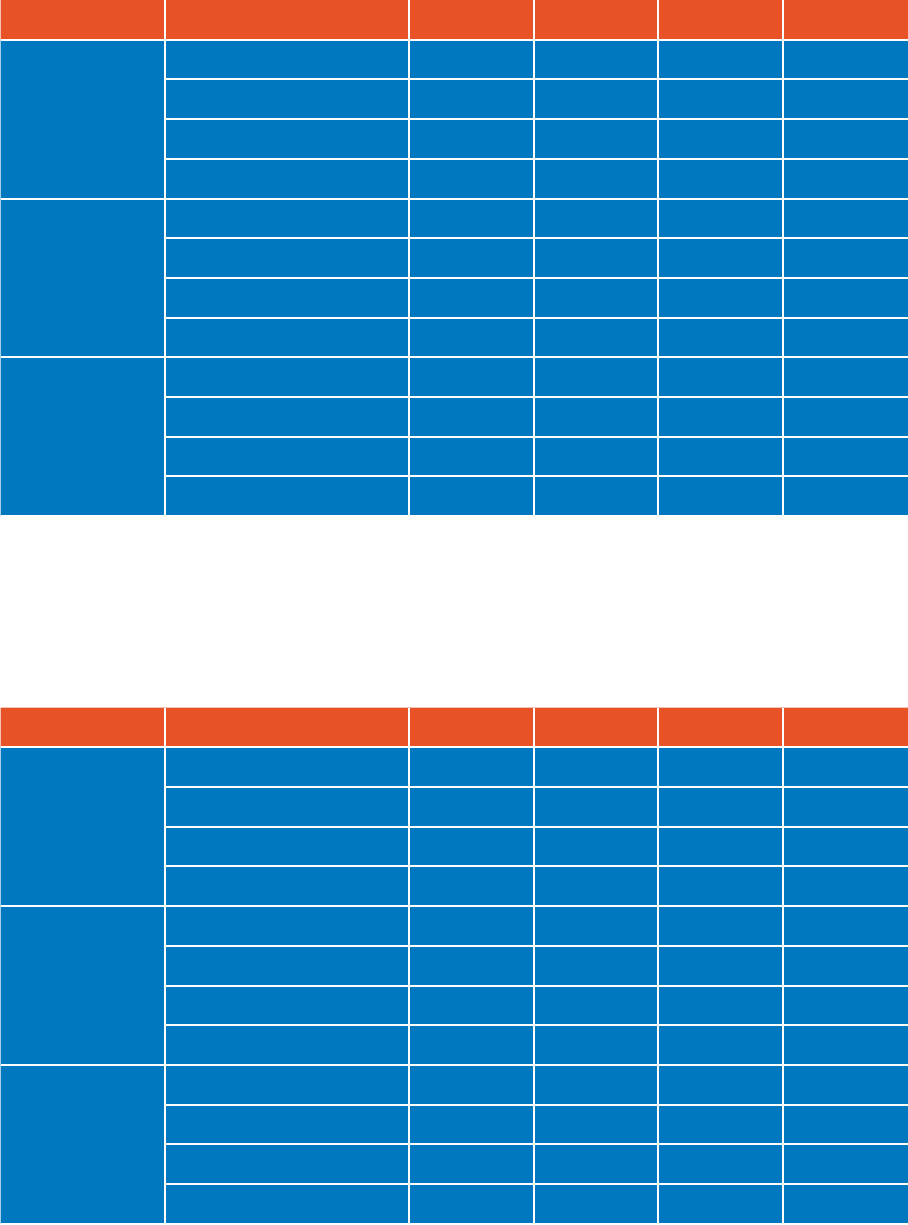
277
Table 140
Economic contribution of FTR, distribution, 2016-2019
2016 2017 2018 2019
Employment
(FTEs)
Direct 1,710 1,980 1,840 2,190
Indirect 3,780 5,180 4,930 5,550
Induced 1,390 1,910 1,820 2,050
Total 6,880 9,070 8,590 9,790
CoE (£m)
Direct 136.4 138.5 140.5 159.1
Indirect 111.2 154.7 155.1 172.7
Induced 38.6 53.7 53.8 59.9
Total 286.2 346.8 349.4 391.6
GVA (£m)
Direct 1,065.1 1,327.1 1,334.1 1,387.5
Indirect 217.9 303.0 303.8 338.3
Induced 68.1 94.7 94.9 105.7
Total 1,351.0 1,724.8 1,732.9 1,831.5
Source: Olsberg•SPI/Nordicity estimates based on data from the BFI, BARB, Ofcom, Omdia, ABS, IDBR, BRES, Comscore,
public nancial reports, Ofcial Charts Company, BASE and ASHE
Note:
Figures may not sum to totals due to rounding
Table 141
Economic contribution of FTR, cinema exhibition, 2016-2019
2016 2017 2018 2019
Employment
(FTEs)
Direct 4,590 5,030 6,330 6,180
Indirect 2,370 2,540 3,220 3,270
Induced 1,070 1,150 1,460 1,480
Total 8,030 8,720 11,010 10,930
CoE (£m)
Direct 93.7 101.0 135.5 149.0
Indirect 61.8 69.3 92.5 92.9
Induced 29.8 32.4 43.3 43.5
Total 185.3 202.8 271.3 285.3
GVA (£m)
Direct 215.8 237.9 331.0 346.5
Indirect 119.2 133.5 178.1 178.8
Induced 54.2 59.1 78.8 79.1
Total 389.1 430.5 587.9 604.5
Source: Olsberg•SPI/Nordicity estimates based on data from the BFI, Comscore, IDBR, ABS and ASHE
Note:
Figures may not sum to totals due to rounding
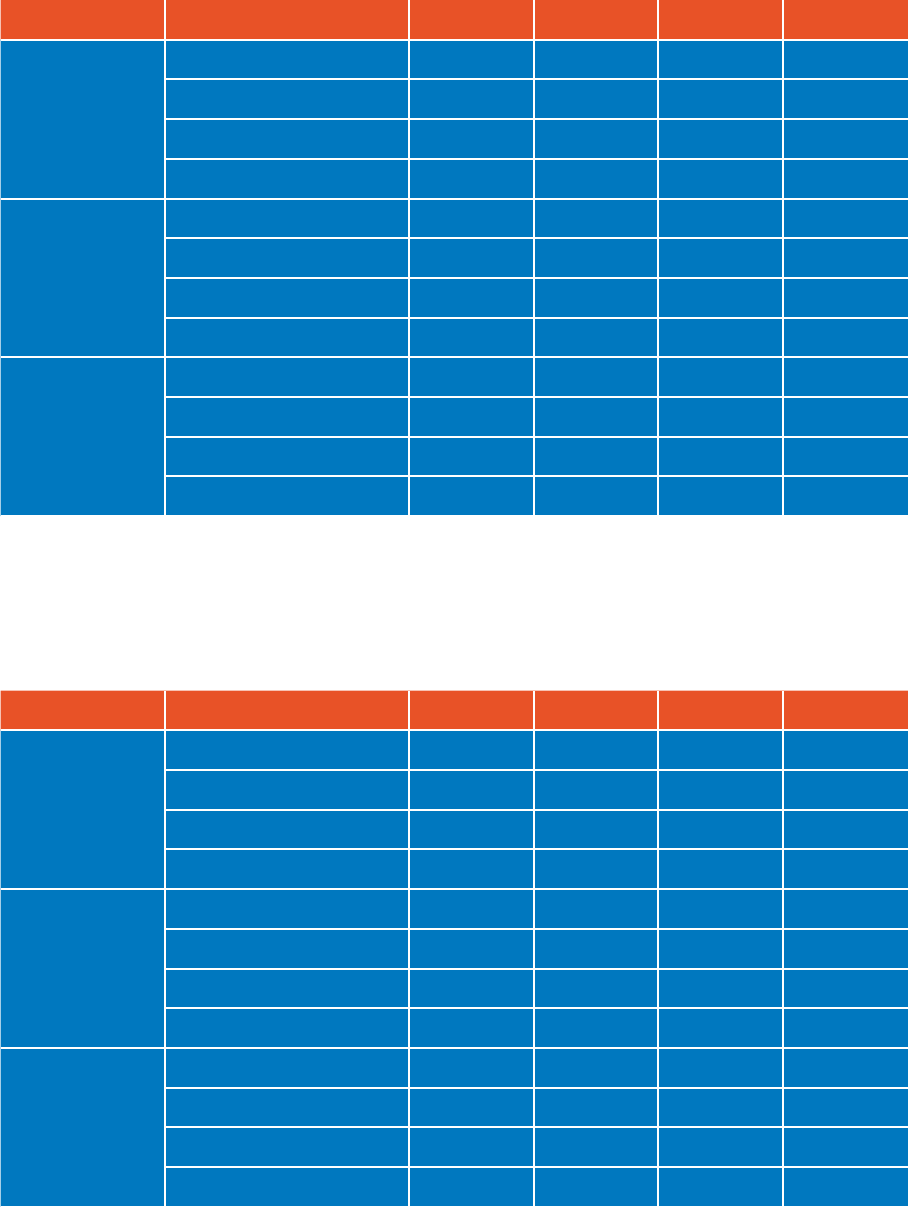
278
Table 142
Economic contribution of FTR, television broadcast, 2016-2019
2016 2017 2018 2019
Employment
(FTEs)
Direct 410 300 270 210
Indirect 310 240 210 190
Induced 140 110 100 90
Total 860 650 580 490
CoE (£m)
Direct 19.9 14.2 13.4 11.8
Indirect 9.1 7.1 6.7 5.9
Induced 3.7 2.9 2.8 2.4
Total 32.7 24.2 22.9 20.1
GVA (£m)
Direct 65.2 28.4 20.1 21.2
Indirect 17.9 14.0 13.2 11.6
Induced 6.8 5.3 5.0 4.4
Total 89.8 47.7 38.3 37.3
Source: Olsberg•SPI/Nordicity estimates based on data from the BFI, BARB, Ofcom, ABS and ASHE
Note:
Figures may not sum to totals due to rounding
Table 143
Economic contribution of FTR, video platforms, 2016-2019
2016 2017 2018 2019
Employment
(FTEs)
Direct 1,250 1,070 1,030 830
Indirect 1,000 800 750 900
Induced 500 470 480 530
Total 2,750 2,340 2,260 2,260
CoE (£m)
Direct 31.2 28.2 28.9 26.3
Indirect 27.3 22.6 21.8 26.1
Induced 13.7 12.2 12.9 14.4
Total 72.2 63.0 63.6 66.8
GVA (£m)
Direct 65.2 58.5 63.5 62.0
Indirect 45.8 42.2 42.1 51.7
Induced 24.8 22.3 23.6 26.2
Total 135.8 123.0 129.2 139.9
Source: Olsberg•SPI/Nordicity estimates based on data from the BFI, BARB, Ofcom, Omdia, ABS, public nancial reports and
ASHE
Note:
Figures may not sum to totals due to rounding
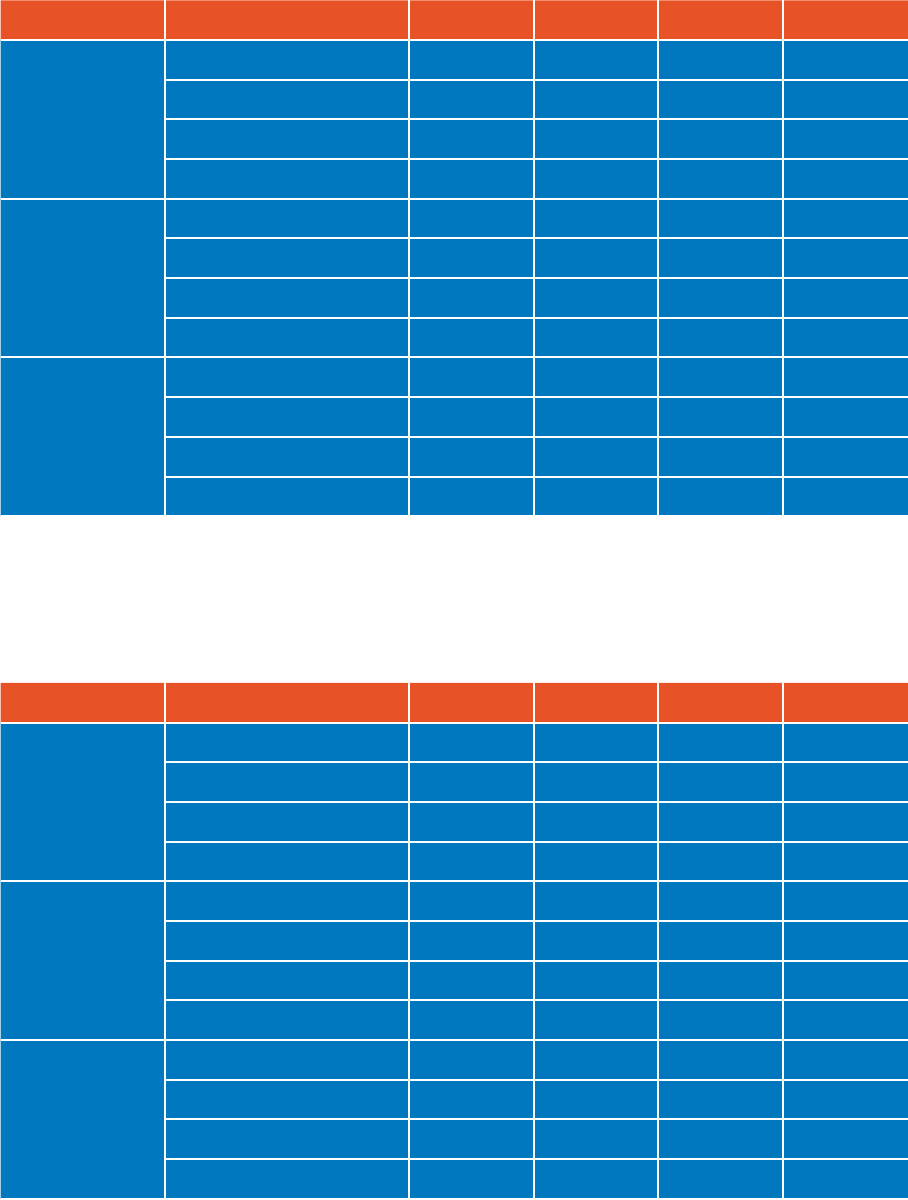
279
19.2. High-end Television Tax Relief
Table 144
Economic contribution of HETR, production, 2016-2019
2016 2017 2018 2019
Employment
(FTEs)
Direct 12,320 15,250 16,410 24,780
Indirect 7,230 8,950 9,640 14,550
Induced 4,890 6,050 6,510 9,830
Total 24,440 30,250 32,560 49,160
CoE (£m)
Direct 473.9 594.7 674.4 1,008.0
Indirect 186.6 234.2 265.6 397.0
Induced 165.1 207.2 235.0 351.2
Total 825.7 1,036.1 1,175.1 1,756.2
GVA (£m)
Direct 563.8 707.5 802.4 1,199.2
Indirect 357.7 448.8 509.0 760.7
Induced 230.6 289.4 328.2 490.5
Total 1,152.1 1,445.6 1,639.5 2,450.3
Source: Olsberg•SPI/Nordicity estimates based on data from the BFI, ABS and ASHE
Note:
Figures may not sum to totals due to rounding
Table 145
Economic contribution of HETR, distribution, 2016-2019
2016 2017 2018 2019
Employment
(FTEs)
Direct 40 100 270 340
Indirect 320 1,060 970 2,040
Induced 120 440 450 860
Total 480 1,600 1,690 3,240
CoE (£m)
Direct 4.0 18.5 24.5 33.8
Indirect 9.0 30.2 29.1 60.4
Induced 3.3 12.3 13.2 24.9
Total 16.3 60.9 66.9 119.2
GVA (£m)
Direct 19.8 82.2 105.0 167.7
Indirect 16.8 56.6 54.6 113.3
Induced 6.0 22.3 24.1 45.4
Total 42.6 161.1 183.7 326.4
Source: Olsberg•SPI/Nordicity estimates based on data from the BFI, BARB, Ofcom, Omdia, ABS, IDBR, BRES, public
nancial reports and ASHE
Note:
Figures may not sum to totals due to rounding
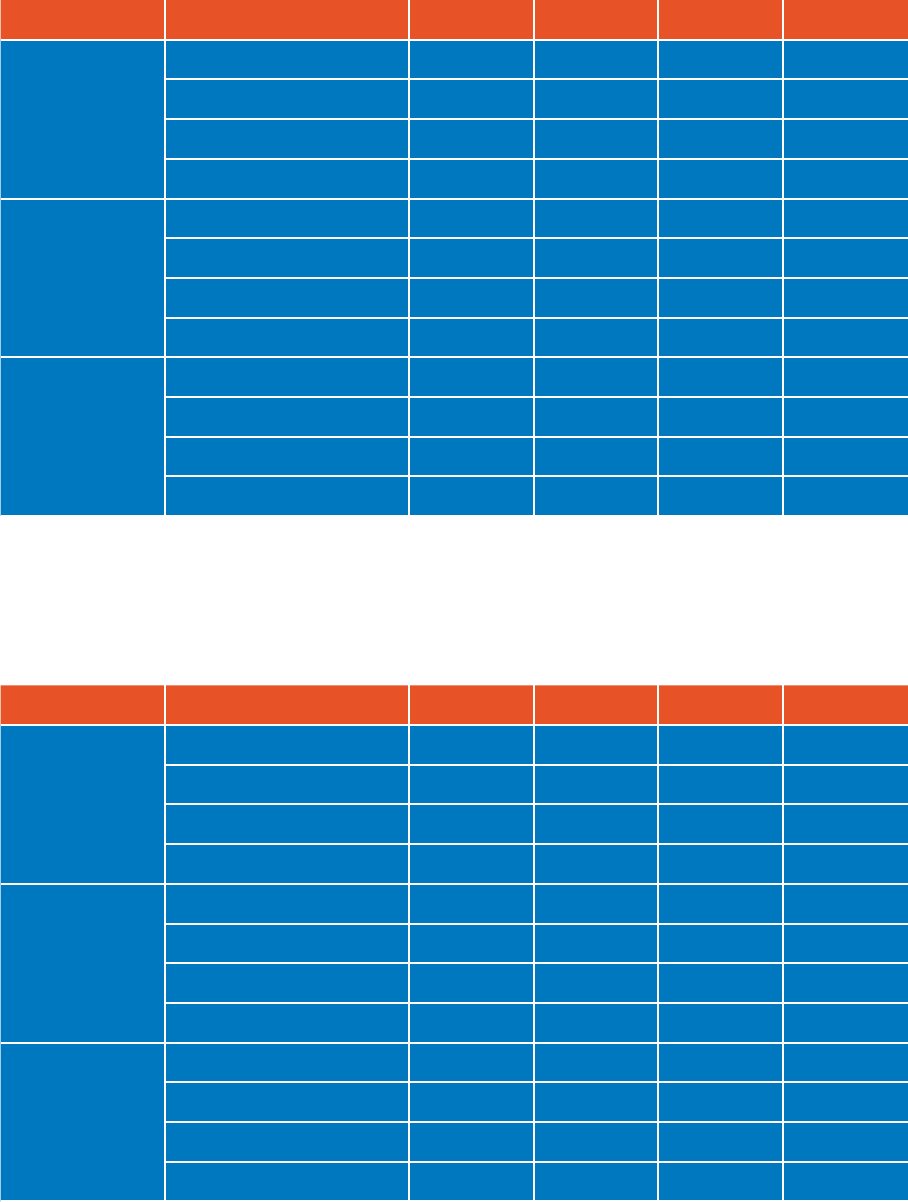
280
Table 146
Economic contribution of HETR, television broadcast, 2016-2019
2016 2017 2018 2019
Employment
(FTEs)
Direct 1,300 2,680 2,630 3,050
Indirect 1,000 2,160 2,120 2,810
Induced 440 960 990 1,310
Total 2,740 5,800 5,740 7,170
CoE (£m)
Direct 63.2 126.1 129.9 189.5
Indirect 29.0 63.7 65.6 86.2
Induced 11.9 26.1 26.9 35.4
Total 104.2 215.9 222.4 311.1
GVA (£m)
Direct 206.9 252.1 194.8 307.2
Indirect 57.2 125.5 129.3 169.9
Induced 21.7 47.6 49.0 64.4
Total 285.8 425.2 373.1 541.5
Source: Olsberg•SPI/Nordicity estimates based on data from the BFI, BARB, Ofcom, ABS and ASHE
Note:
Figures may not sum to totals due to rounding
Table 147
Economic contribution of HETR, video platforms, 2016-2019
2016 2017 2018 2019
Employment
(FTEs)
Direct 290 570 460 590
Indirect 650 1,650 1,820 2,730
Induced 310 890 950 1,420
Total 1,250 3,110 3,230 4,740
CoE (£m)
Direct 10.7 25.4 25.8 37.8
Indirect 18.1 47.9 53.3 80.2
Induced 8.6 24.2 25.7 38.2
Total 37.4 97.5 104.8 156.2
GVA (£m)
Direct 26.7 75.0 82.2 124.5
Indirect 31.1 94.1 106.3 161.9
Induced 15.6 41.9 46.7 69.6
Total 73.4 211.0 235.2 356.0
Source: Olsberg•SPI/Nordicity estimates based on data from the BFI, BARB, Ofcom, Omdia, ABS, public nancial reports and
ASHE
Note:
Figures may not sum to totals due to rounding
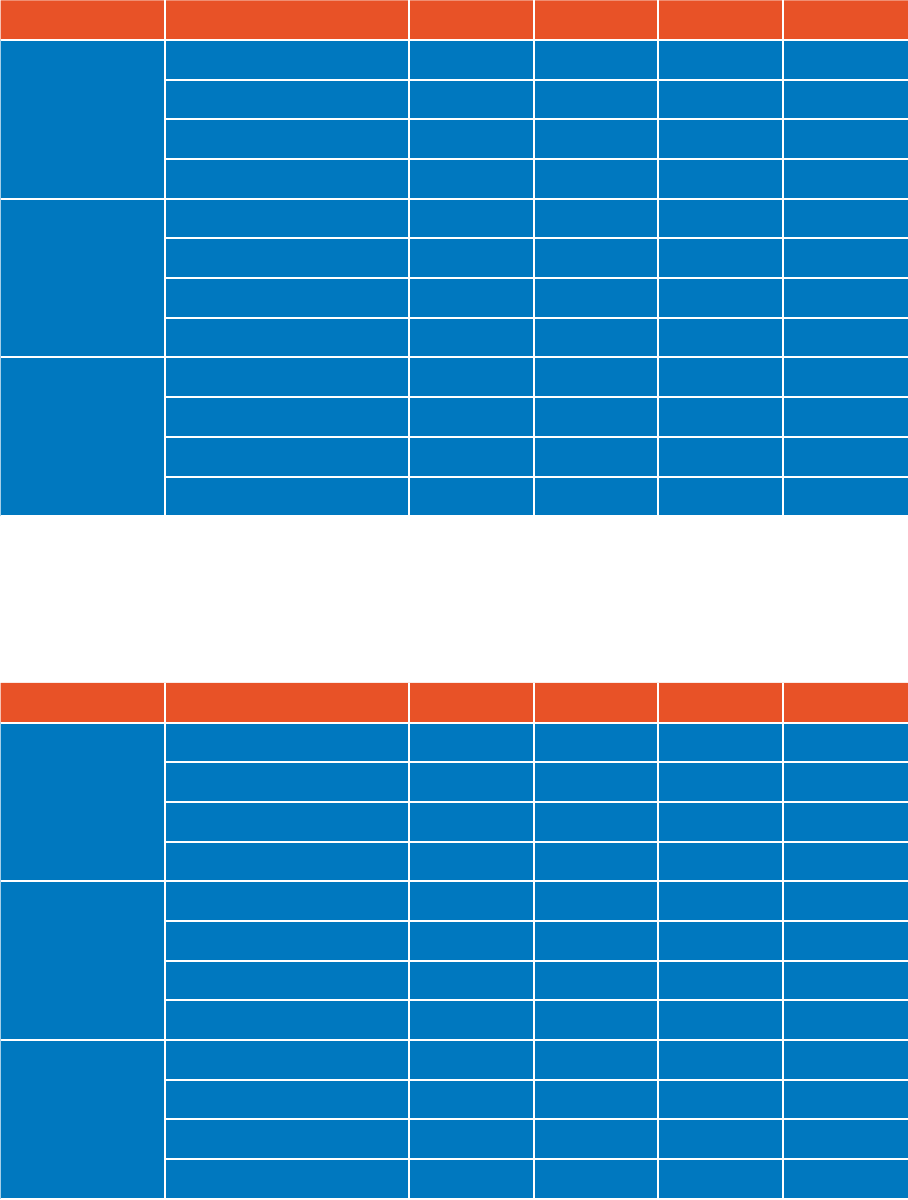
281
19.3. Animation Tax Relief
Table 148
Economic contribution of ATR, production, 2016-2019
2016 2017 2018 2019
Employment
(FTEs)
Direct 1,560 1,190 1,080 840
Indirect 680 520 470 360
Induced 460 350 320 250
Total 2,700 2,060 1,870 1,450
CoE (£m)
Direct 75.6 51.2 48.6 37.5
Indirect 16.6 12.9 12.3 9.5
Induced 12.2 9.4 9.0 6.9
Total 104.4 73.5 69.8 53.9
GVA (£m)
Direct 78.2 60.7 57.6 44.5
Indirect 32.7 25.4 24.1 18.6
Induced 22.1 17.2 16.3 12.6
Total 133.1 103.2 98.0 75.7
Source: Olsberg•SPI/Nordicity estimates based on data from the BFI, ABS and ASHE
Note:
Figures may not sum to totals due to rounding
Table 149
Economic contribution of ATR, distribution, 2016-2019
2016 2017 2018 2019
Employment
(FTEs)
Direct 10 20 60 50
Indirect 40 210 220 300
Induced 20 110 110 150
Total 70 340 390 500
CoE (£m)
Direct 0.5 3.5 4.9 4.7
Indirect 1.2 6.4 7.1 9.5
Induced 0.4 2.3 2.6 3.5
Total 2.2 12.3 14.6 17.7
GVA (£m)
Direct 2.6 15.7 20.8 23.4
Indirect 2.2 12.0 13.4 17.7
Induced 0.8 4.3 4.8 6.3
Total 5.7 32.0 38.9 47.5
Source: Olsberg•SPI/Nordicity estimates based on data from the BFI, BARB, Ofcom, Omdia, ABS, IDBR, BRES, public
nancial reports and ASHE
Note:
Figures may not sum to totals due to rounding
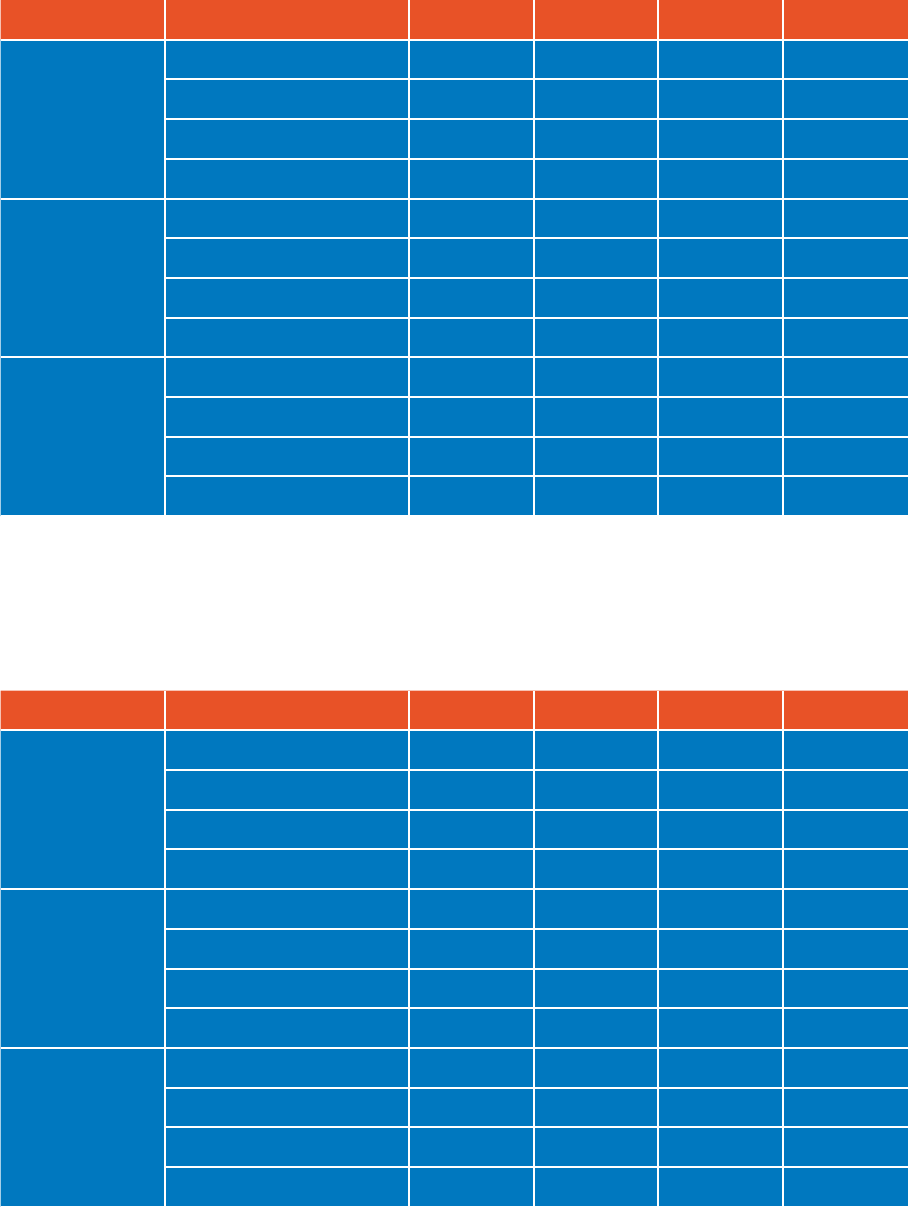
282
Table 150
Economic contribution of ATR, television broadcast, 2016-2019
2016 2017 2018 2019
Employment
(FTEs)
Direct 170 510 520 430
Indirect 130 400 410 380
Induced 60 190 190 180
Total 360 1,100 1,120 990
CoE (£m)
Direct 8.4 24.1 25.7 23.8
Indirect 3.9 12.2 13.0 12.0
Induced 1.6 5.0 5.3 4.9
Total 13.9 41.3 44.0 40.8
GVA (£m)
Direct 27.6 48.3 38.6 42.9
Indirect 7.6 24.0 25.6 23.7
Induced 2.9 9.1 9.7 9.0
Total 38.1 81.4 73.9 75.6
Source: Olsberg•SPI/Nordicity estimates based on data from the BFI, BARB, Ofcom, ABS and ASHE
Note:
Figures may not sum to totals due to rounding
Table 151
Economic contribution of ATR, video platforms, 2016-2019
2016 2017 2018 2019
Employment
(FTEs)
Direct 40 130 140 140
Indirect 80 310 380 420
Induced 40 170 200 230
Total 160 610 720 790
CoE (£m)
Direct 1.3 5.4 6.2 6.7
Indirect 2.3 9.1 11.1 12.4
Induced 1.1 4.5 5.5 6.1
Total 4.7 19.0 22.8 25.2
GVA (£m)
Direct 3.6 15.2 18.3 19.8
Indirect 4.0 17.8 22.0 24.9
Induced 2.0 8.4 10.0 11.1
Total 9.6 41.4 50.3 55.8
Source: Olsberg•SPI/Nordicity estimates based on data from the BFI, BARB, Ofcom, Omdia, ABS, public nancial reports and
ASHE
Note:
Figures may not sum to totals due to rounding
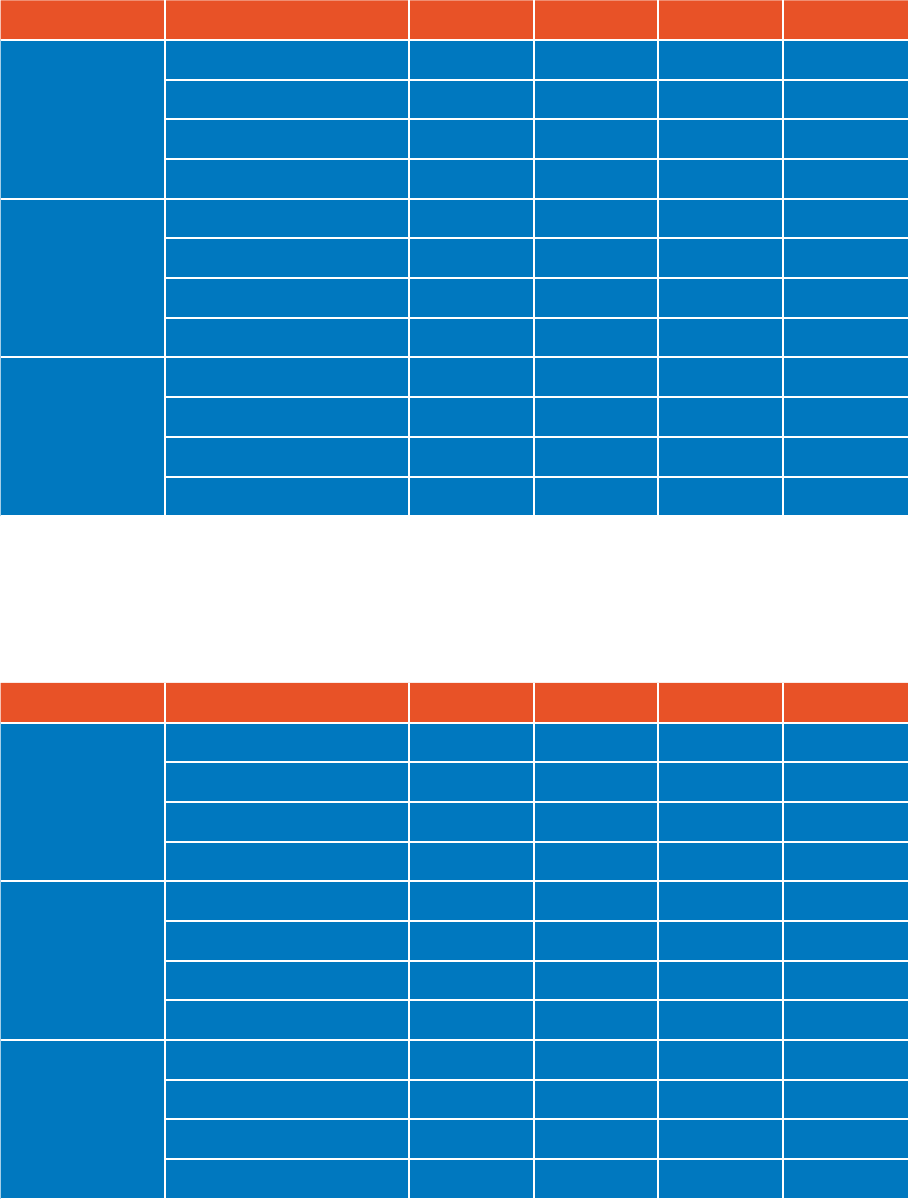
283
19.4. Children’s Television Tax Relief
Table 152
Economic contribution of CTR, production, 2016-2019
2016 2017 2018 2019
Employment
(FTEs)
Direct 830 920 1,390 1,030
Indirect 450 500 760 560
Induced 280 310 460 320
Total 1,560 1,730 2,610 1,910
CoE (£m)
Direct 32.3 36.4 57.6 42.2
Indirect 12.1 13.7 21.7 15.9
Induced 7.6 8.5 13.5 9.9
Total 52.0 58.6 92.8 68.0
GVA (£m)
Direct 39.0 43.9 69.5 50.9
Indirect 23.6 26.5 42.0 30.8
Induced 13.8 15.5 24.6 18.0
Total 76.3 85.9 136.1 99.7
Source: Olsberg•SPI/Nordicity estimates based on data from the BFI, ABS and ASHE
Note:
Figures may not sum to totals due to rounding
Table 153
Economic contribution of CTR, distribution, 2016-2019
2016 2017 2018 2019
Employment
(FTEs)
Direct 0 20 40 50
Indirect 10 110 110 260
Induced 0 40 60 100
Total 10 170 210 410
CoE (£m)
Direct 0.1 2.2 3.6 4.5
Indirect 0.2 3.2 3.2 7.3
Induced 0.1 1.2 1.2 2.7
Total 0.3 6.6 8.0 14.5
GVA (£m)
Direct 0.4 9.6 15.3 22.1
Indirect 0.3 6.1 5.9 13.8
Induced 0.1 2.2 2.1 4.9
Total 0.8 17.9 23.3 40.8
Source: Olsberg•SPI/Nordicity estimates based on data from the BFI, BARB, Ofcom, Omdia, ABS, IDBR, BRES, public
nancial reports and ASHE
Note:
Figures may not sum to totals due to rounding
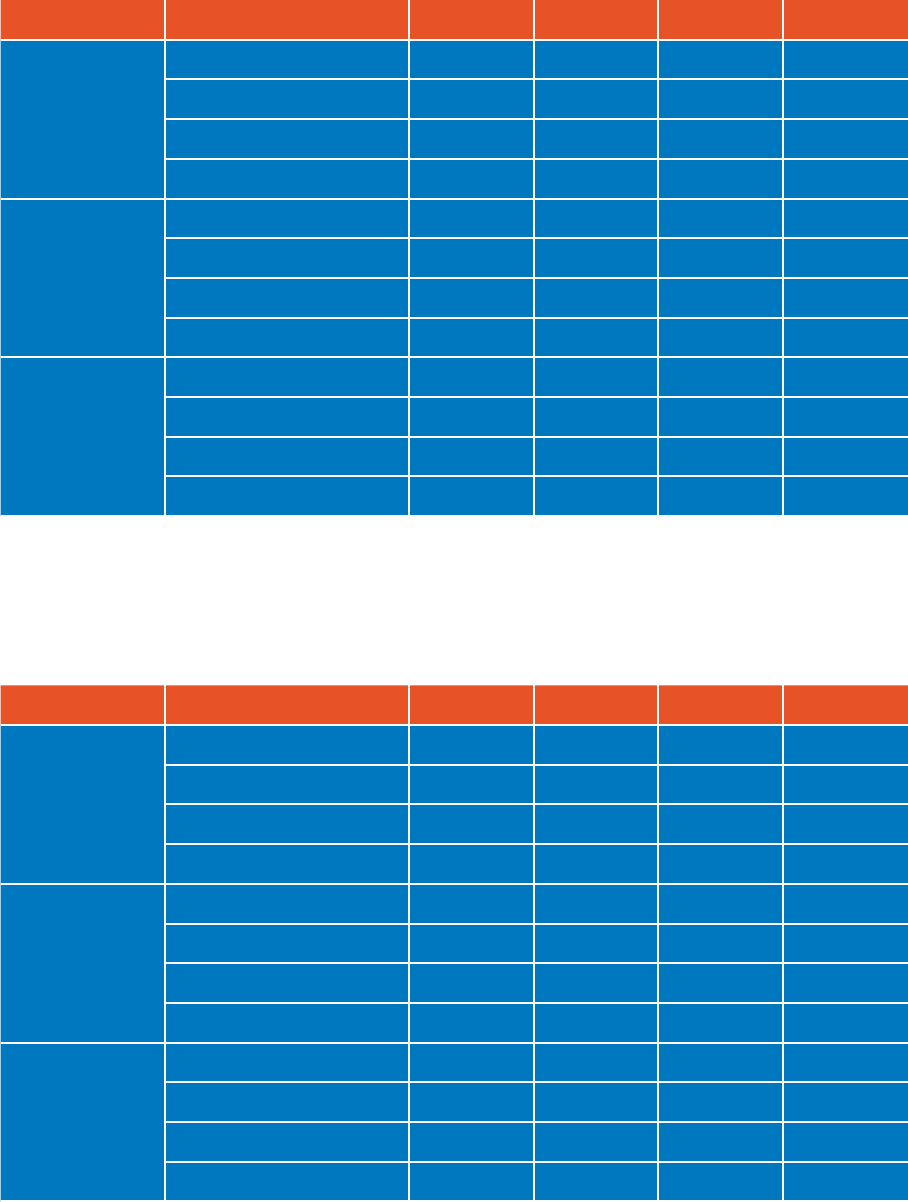
284
Table 154
Economic contribution of CTR, television broadcast, 2016-2019
2016 2017 2018 2019
Employment
(FTEs)
Direct 20 310 380 400
Indirect 20 260 320 380
Induced 10 130 160 190
Total 50 700 860 970
CoE (£m)
Direct 1.2 14.8 18.9 22.5
Indirect 0.5 7.4 9.5 11.3
Induced 0.2 3.0 3.9 4.6
Total 2.0 25.2 32.3 38.4
GVA (£m)
Direct 3.9 29.5 28.4 40.5
Indirect 1.1 14.6 18.7 22.2
Induced 0.4 5.5 7.1 8.4
Total 5.4 49.6 54.2 71.1
Source: Olsberg•SPI/Nordicity estimates based on data from the BFI, BARB, Ofcom, ABS and ASHE
Note:
Figures may not sum to totals due to rounding
Table 155
Economic contribution of CTR, video platforms, 2016-2019
2016 2017 2018 2019
Employment
(FTEs)
Direct 10 80 110 130
Indirect 20 200 280 400
Induced 10 100 150 210
Total 40 380 540 740
CoE (£m)
Direct 0.2 3.3 4.6 6.3
Indirect 0.3 5.8 8.2 11.7
Induced 0.1 2.8 4.1 5.8
Total 0.7 11.9 16.9 23.8
GVA (£m)
Direct 0.6 9.3 13.9 18.7
Indirect 0.6 11.3 16.3 23.4
Induced 0.2 5.1 7.4 10.4
Total 1.4 25.7 37.6 52.5
Source: Olsberg•SPI/Nordicity estimates based on data from the BFI, BARB, Ofcom, Omdia, ABS, public nancial reports and
ASHE
Note:
Figures may not sum to totals due to rounding

285
APPENDIX 5
20
Historical analysis

286
20.1. Film Tax Relief
Table 156
Economic contribution of FTR, production, 2009-2015
2009 2010 2011 2012 2013 2014 2015
Employment
(FTEs)
Direct 16,430 14,990 16,980 12,610 13,750 18,670 18,660
Indirect 10,660 9,660 11,130 7,860 8,860 12,310 12,170
Induced 6,760 6,150 7,020 5,100 5,650 7,740 7,700
Total 33,850 30,800 35,130 25,570 28,260 38,720 38,530
CoE (£m)
Direct 561.3 516.5 592.7 455.4 523.7 700.6 704.4
Indirect 247.4 226.6 263.5 194.4 229.7 312.9 312.0
Induced 201.9 185.5 213.8 162.3 188.1 253.1 253.8
Total 1,010.6 928.6 1,070.0 812.2 941.6 1,266.6 1,270.2
GVA (£m)
Direct 695.8 641.5 732.4 571.3 650.5 864.1 871.6
Indirect 483.9 443.0 515.6 379.8 449.1 612.5 610.4
Induced 295.3 271.5 312.4 238.1 275.3 369.6 371.0
Total 1,475.1 1,356.0 1,560.4 1,189.1 1,374.9 1,846.1 1,853.0
Source: Olsberg•SPI/Nordicity estimates based on data from the BFI, ABS and ASHE
Note:
Figures may not sum to totals due to rounding
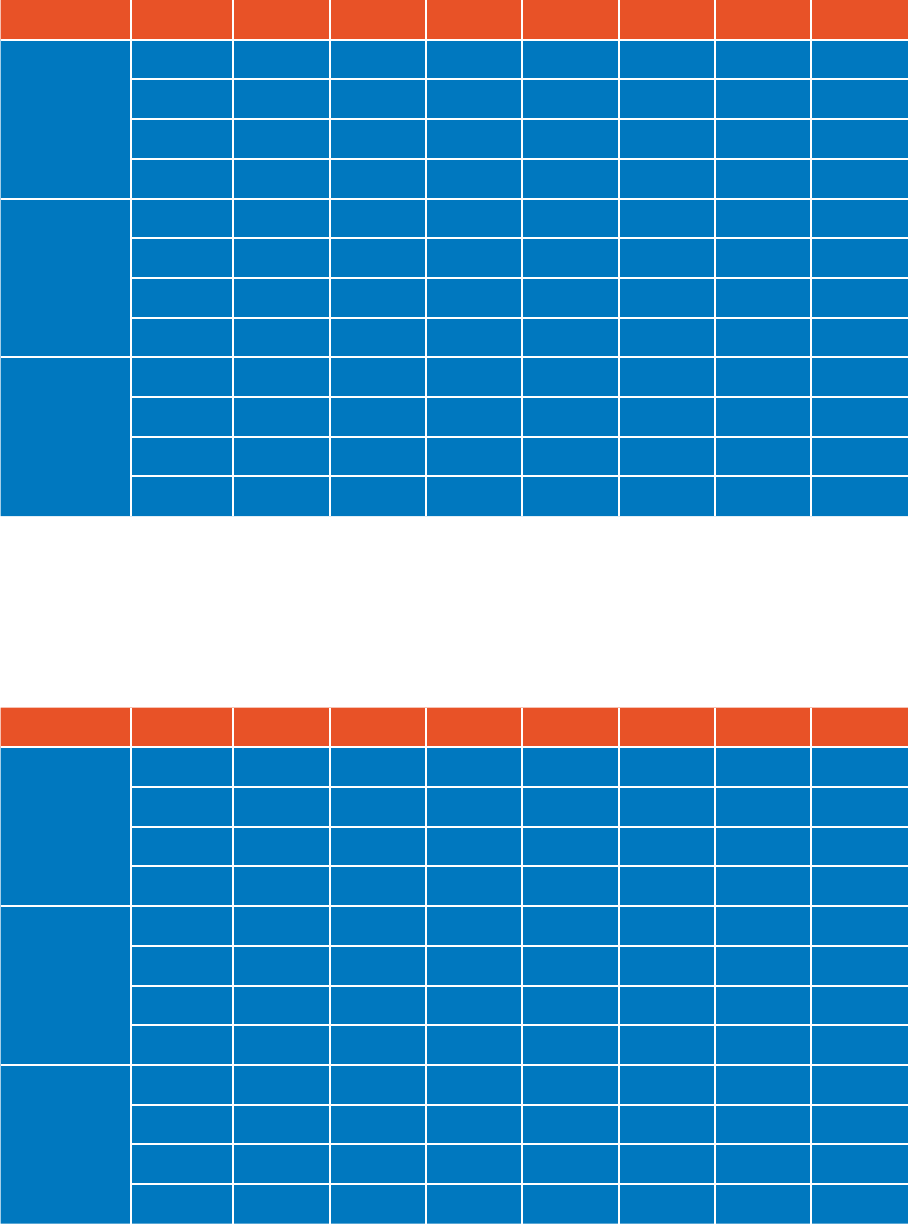
287
Table 157
Economic contribution of FTR, distribution, 2009-2015
2009 2010 2011 2012 2013 2014 2015
Employment
(FTEs)
Direct 1,060 1,160 1,230 850 910 1,210 1,350
Indirect 2,090 1,400 2,250 1,910 2,080 2,860 3,600
Induced 560 420 640 560 770 1,060 1,330
Total 3,710 2,980 4,120 3,320 3,760 5,130 6,280
CoE (£m)
Direct 78.9 64.1 61.4 43.5 72.5 82.4 100.8
Indirect 62.6 41.7 67.2 57.0 66.5 88.0 106.3
Induced 15.2 11.2 17.4 15.0 23.1 30.5 36.9
Total 156.7 117.0 146.0 115.5 162.1 200.9 244.0
GVA (£m)
Direct 386.3 380.1 367.2 76.2 496.8 450.9 728.2
Indirect 130.8 85.5 138.9 117.4 126.5 215.4 213.5
Induced 27.7 20.5 31.7 27.3 39.5 67.3 66.7
Total 544.8 486.1 537.8 220.9 662.9 733.6 1,008.4
Source: Olsberg•SPI/Nordicity estimates based on data from the BFI, BARB, Ofcom, Omdia, ABS, IDBR, BRES, Comscore,
public nancial reports, Ofcial Charts Company, BASE and ASHE
Note:
Figures may not sum to totals due to rounding
Table 158
Economic contribution of FTR, cinema exhibition, 2009-2015
2009 2010 2011 2012 2013 2014 2015
Employment
(FTEs)
Direct 2,020 3,190 4,510 4,060 2,670 3,210 5,390
Indirect 810 1,310 1,870 1,540 1,200 1,680 3,220
Induced 370 590 850 700 550 760 1,460
Total 3,200 5,090 7,230 6,300 4,420 5,650 10,070
CoE (£m)
Direct 32.4 50.9 73.9 65.8 43.8 59.0 101.9
Indirect 21.2 34.3 49.0 40.4 31.5 44.0 84.4
Induced 9.9 16.0 22.9 18.9 14.7 20.6 39.5
Total 63.5 101.2 145.8 125.1 90.0 123.6 225.8
GVA (£m)
Direct 77.8 115.9 180.3 182.0 112.9 137.5 275.4
Indirect 40.8 66.0 94.2 77.8 60.7 84.6 162.6
Induced 18.1 29.2 41.7 34.4 26.9 37.4 72.0
Total 136.7 211.1 316.2 294.2 200.5 259.5 510.0
Source: Olsberg•SPI/Nordicity estimates based on data from the BFI, Comscore, IDBR, ABS and ASHE
Note:
Figures may not sum to totals due to rounding
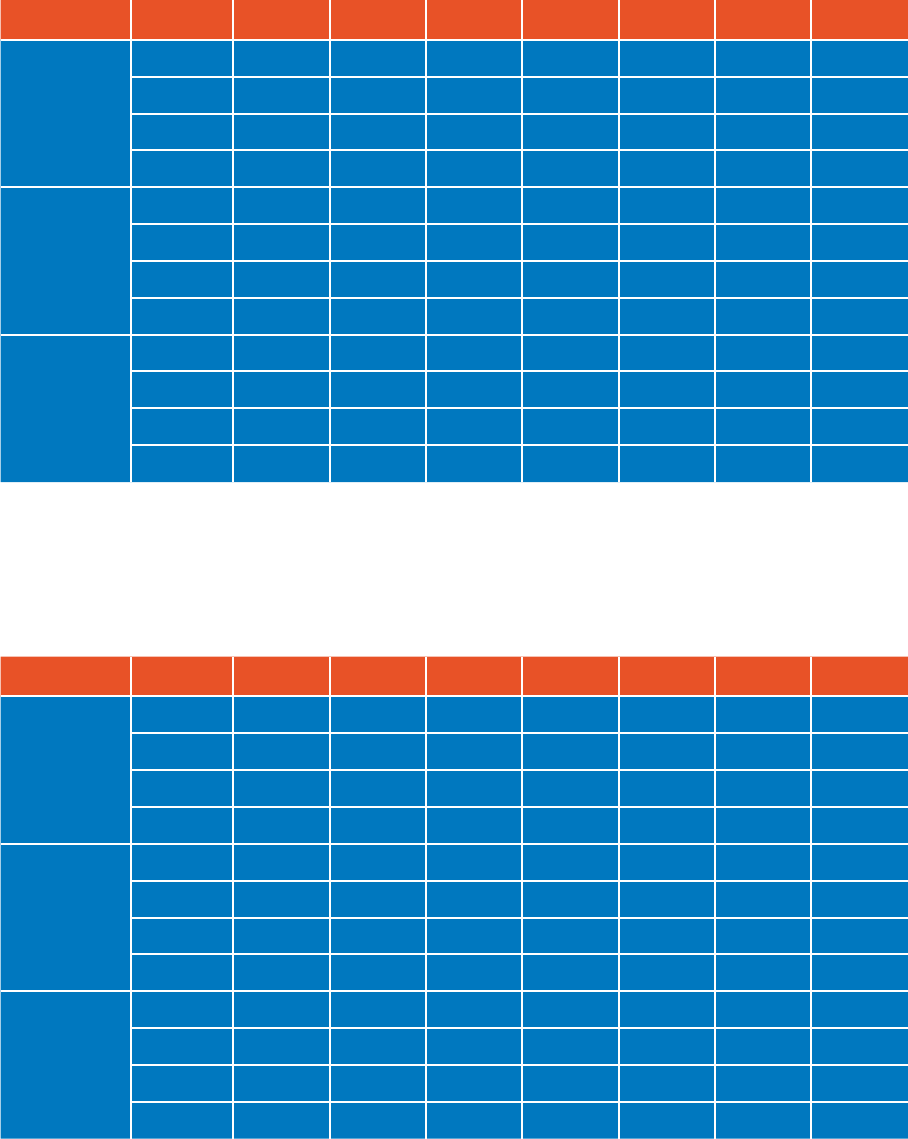
288
Table 159
Economic contribution of FTR, television broadcast, 2009-2015
2009 2010 2011 2012 2013 2014 2015
Employment
(FTEs)
Direct 390 320 380 430 430 260 290
Indirect 290 240 290 320 330 200 220
Induced 130 110 130 150 150 90 100
Total 810 670 800 900 910 550 610
CoE (£m)
Direct 16.6 13.8 16.8 19.6 20.9 12.4 13.6
Indirect 7.6 6.3 7.7 8.9 9.5 5.7 6.2
Induced 3.1 2.6 3.1 3.7 3.9 2.3 2.5
Total 27.3 22.6 27.6 32.1 34.3 20.4 22.4
GVA (£m)
Direct 54.4 45.0 55.1 64.1 68.4 40.7 44.6
Indirect 14.9 12.3 15.1 17.6 18.7 11.1 12.2
Induced 5.6 4.7 5.7 6.7 7.1 4.2 4.6
Total 74.9 62.0 75.9 88.3 94.2 56.0 61.5
Source: Olsberg•SPI/Nordicity estimates based on data from the BFI, BARB, Ofcom, ABS and ASHE
Note:
Figures may not sum to totals due to rounding
Table 160
Economic contribution of FTR, video platforms, 2009-2015
2009 2010 2011 2012 2013 2014 2015
Employment
(FTEs)
Direct 1,660 1,590 1,620 1,410 1,340 1,260 1,050
Indirect 880 850 870 770 740 720 610
Induced 470 450 470 420 410 400 340
Total 3,010 2,890 2,960 2,600 2,490 2,380 2,000
CoE (£m)
Direct 31.8 30.7 31.6 28.8 28.4 26.3 21.9
Indirect 20.8 20.2 20.9 19.4 19.6 18.6 15.8
Induced 11.4 11.1 11.5 10.8 11.1 10.7 9.2
Total 64.1 62.1 64.1 59.1 59.1 55.7 46.9
GVA (£m)
Direct 51.2 49.7 51.6 48.2 49.1 47.0 40.1
Indirect 34.1 33.1 34.3 31.9 32.3 30.8 26.2
Induced 20.8 20.2 21.0 19.8 20.2 19.5 16.7
Total 106.1 103.0 106.9 99.9 101.7 97.2 83.0
Source: Olsberg•SPI/Nordicity estimates based on data from the BFI, BARB, Ofcom, Omdia, ABS, public nancial reports,
Ofcial Charts Company, BASE and ASHE
Note:
Figures may not sum to totals due to rounding
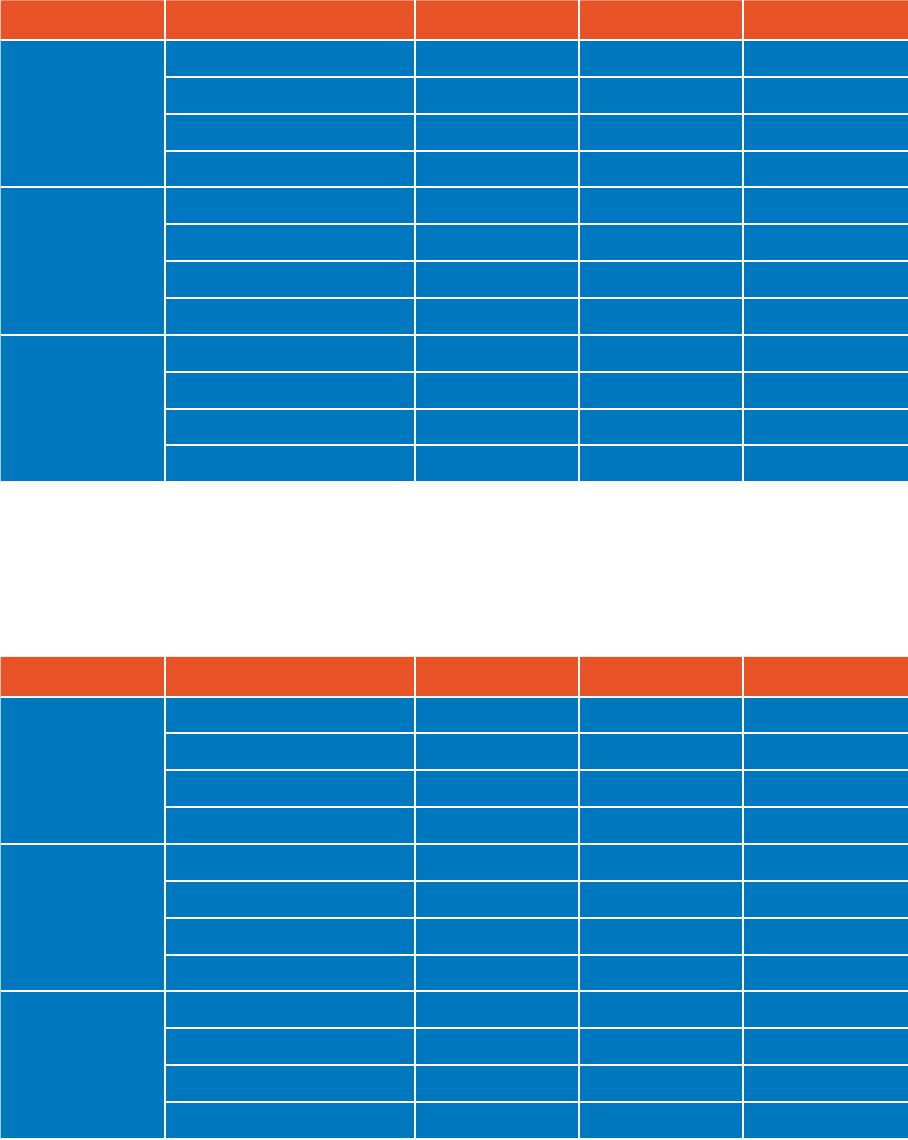
289
20.2. High-end Television Tax Relief
Table 161
Economic contribution of HETR, production, 2013-2015
2013 2014 2015
Employment
(FTEs)
Direct 5,290 8,320 11,100
Indirect 3,110 4,890 6,520
Induced 2,100 3,300 4,410
Total 10,500 16,510 22,030
CoE (£m)
Direct 201.3 310.4 417.7
Indirect 79.3 122.2 164.5
Induced 70.1 108.2 145.6
Total 350.7 540.8 727.8
GVA (£m)
Direct 239.5 369.3 497.0
Indirect 151.9 234.2 315.2
Induced 97.9 151.0 203.3
Total 489.3 754.6 1,015.5
Source: Olsberg•SPI/Nordicity estimates based on data from the BFI, ABS and ASHE
Note:
Figures may not sum to totals due to rounding
Table 162
Economic contribution of HETR, distribution, 2013-2015
2013 2014 2015
Employment
(FTEs)
Direct 10 10 10
Indirect 100 110 110
Induced 40 40 40
Total 150 160 160
CoE (£m)
Direct 1.2 1.3 1.4
Indirect 2.6 2.9 3.1
Induced 1.0 1.1 1.1
Total 4.8 5.3 5.7
GVA (£m)
Direct 5.8 6.5 6.9
Indirect 4.9 5.5 5.9
Induced 1.8 2.0 2.1
Total 12.5 14.0 14.8
Source: Olsberg•SPI/Nordicity estimates based on data from the BFI, BARB, Ofcom, Omdia, ABS, IDBR, BRES, public
nancial reports and ASHE
Note:
Figures may not sum to totals due to rounding

290
Table 163
Economic contribution of HETR, television broadcast, 2013-2015
2013 2014 2015
Employment
(FTEs)
Direct 770 810 1,320
Indirect 590 620 1,010
Induced 260 270 440
Total 1,620 1,700 2,770
CoE (£m)
Direct 37.0 38.1 63.0
Indirect 16.9 17.3 28.7
Induced 6.9 7.1 11.8
Total 60.8 62.5 103.5
GVA (£m)
Direct 121.3 124.6 206.3
Indirect 33.2 34.1 56.5
Induced 12.6 12.9 21.4
Total 167.1 171.7 284.2
Source: Olsberg•SPI/Nordicity estimates based on data from the BFI, BARB, Ofcom, ABS and ASHE
Note:
Figures may not sum to totals due to rounding
Table 164
Economic contribution of HETR, video platforms, 2013-2015
2013 2014 2015
Employment
(FTEs)
Direct 260 250 420
Indirect 160 170 290
Induced 90 100 180
Total 510 520 890
CoE (£m)
Direct 6.9 7.3 13.2
Indirect 4.4 4.5 8.0
Induced 2.5 2.7 5.0
Total 13.9 14.5 26.3
GVA (£m)
Direct 13.8 16.0 30.8
Indirect 7.2 7.4 13.3
Induced 4.6 5.0 9.2
Total 25.7 28.4 53.2
Source: Olsberg•SPI/Nordicity estimates based on data from the BFI, BARB, Ofcom, Omdia, ABS, public nancial reports and
ASHE
Note:
Figures may not sum to totals due to rounding
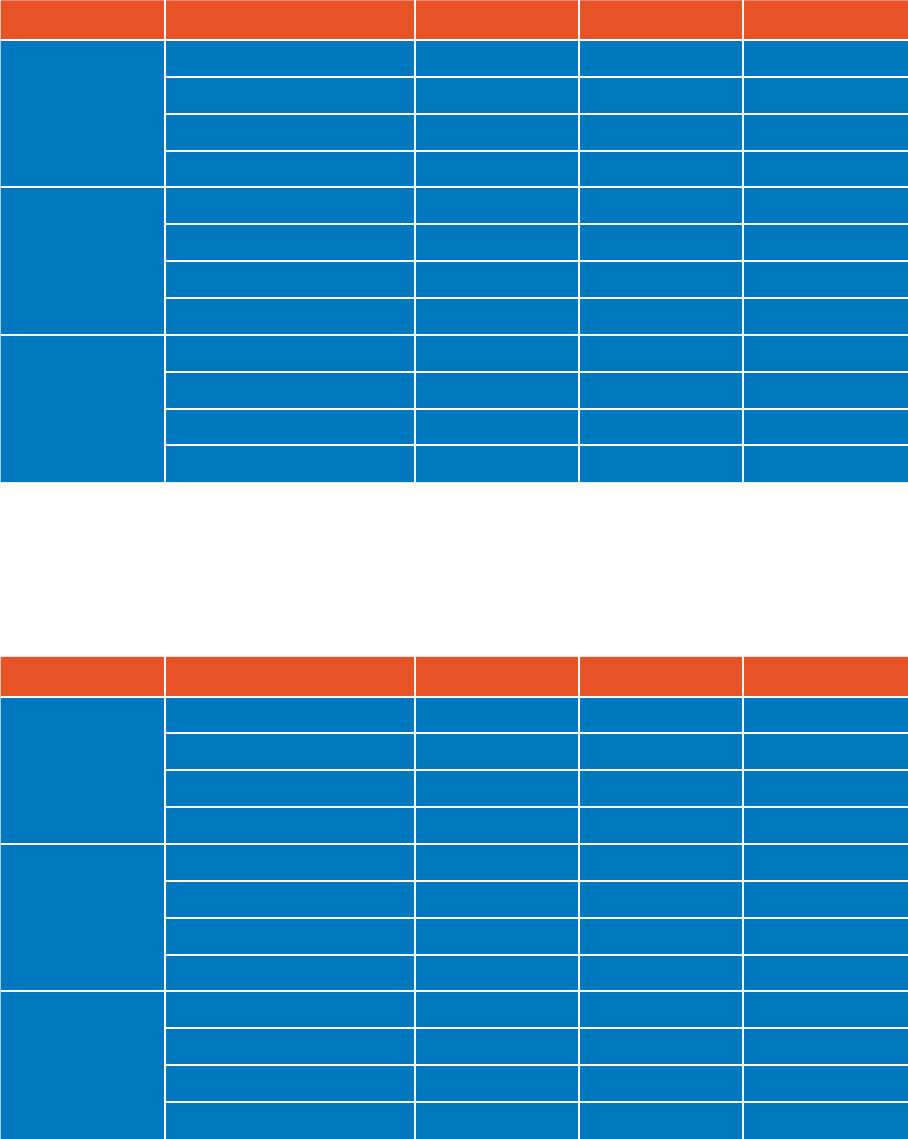
291
20.3. Animation Tax Relief
Table 165
Economic contribution of ATR, production, 2013-2015
2013 2014 2015
Employment
(FTEs)
Direct 1,100 1,230 810
Indirect 450 550 360
Induced 310 370 240
Total 1,860 2,150 1,410
CoE (£m)
Direct 45.7 51.9 34.0
Indirect 11.0 13.1 8.6
Induced 8.1 9.6 6.3
Total 64.8 74.6 48.8
GVA (£m)
Direct 52.0 61.6 40.3
Indirect 21.7 25.7 16.8
Induced 14.7 17.4 11.4
Total 88.4 104.7 68.6
Source: Olsberg•SPI/Nordicity estimates based on data from the BFI, ABS and ASHE
Note:
Figures may not sum to totals due to rounding
Table 166
Economic contribution of ATR, distribution, 2013-2015
2013 2014 2015
Employment
(FTEs)
Direct 0 10 0
Indirect 20 20 10
Induced 10 10 10
Total 30 40 20
CoE (£m)
Direct 0.3 0.3 0.2
Indirect 0.6 0.6 0.4
Induced 0.2 0.2 0.2
Total 1.0 1.1 0.8
GVA (£m)
Direct 1.3 1.4 0.9
Indirect 1.1 1.2 0.8
Induced 0.4 0.4 0.3
Total 2.7 3.0 2.0
Source: Olsberg•SPI/Nordicity estimates based on data from the BFI, BARB, Ofcom, Omdia, ABS, IDBR, BRES, public
nancial reports and ASHE
Note:
Figures may not sum to totals due to rounding
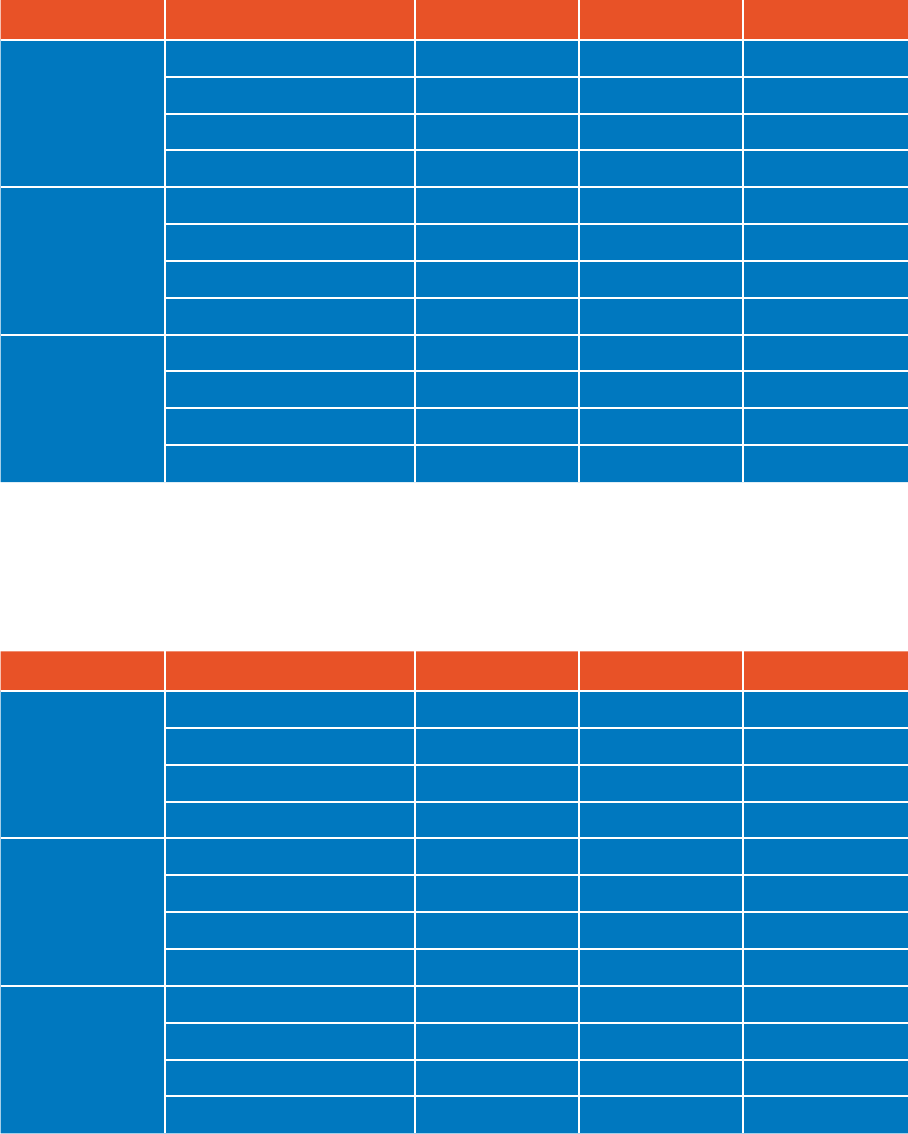
292
Table 167
Economic contribution of ATR, television broadcast, 2013-2015
2013 2014 2015
Employment
(FTEs)
Direct 170 180 180
Indirect 120 130 130
Induced 60 60 60
Total 350 370 370
CoE (£m)
Direct 8.0 8.2 8.4
Indirect 3.6 3.7 3.8
Induced 1.5 1.5 1.6
Total 13.1 13.5 13.8
GVA (£m)
Direct 26.1 26.9 27.5
Indirect 7.2 7.4 7.5
Induced 2.7 2.8 2.9
Total 36.0 37.0 37.9
Source: Olsberg•SPI/Nordicity estimates based on data from the BFI, BARB, Ofcom, ABS and ASHE
Note:
Figures may not sum to totals due to rounding
Table 168
Economic contribution of ATR, video platforms, 2013-2015
2013 2014 2015
Employment
(FTEs)
Direct 50 40 40
Indirect 30 20 30
Induced 30 20 30
Total 110 80 100
CoE (£m)
Direct 1.2 1.3 1.4
Indirect 0.7 0.7 0.8
Induced 0.4 0.5 0.5
Total 2.4 2.5 2.8
GVA (£m)
Direct 2.5 2.9 3.4
Indirect 1.2 1.2 1.4
Induced 0.8 0.9 1.0
Total 4.6 5.0 5.7
Source: Olsberg•SPI/Nordicity estimates based on data from the BFI, BARB, Ofcom, Omdia, ABS, public nancial reports and
ASHE
Note:
Figures may not sum to totals due to rounding

293
APPENDIX 6
21
Lists of figures and tables

294
Figure 1
Growth in UK spend supported by the screen sector tax reliefs, 2016-2019 (£m) 20
Figure 2
Growth in overall UK employment supported by the screen sector tax reliefs,
2016-2019 (FTEs, overall economic contribution including direct, indirect, induced
and spillover impacts) 22
Figure 3
Growth in overall GVA supported by the screen sector tax reliefs, 2016-2019 (£m, overall
economic contribution including direct, indirect, induced and spillover impacts) 23
Figure 4
Film sector value chain 49
Figure 5
UK spend on film production, 2009-2019 (£m) 50
Figure 6
Direct employment generated by film production in the UK, 2009-2019 (FTEs) 52
Figure 7
UK films’ share of domestic box office, annual and three-year moving average,
2009-2019 54
Figure 8
UK film distribution sub-sector revenue generated by UK films, 2009-2019 (£m) 55
Figure 9
UK film distribution sub-sector employment generated by UK films, 2009-2019 (FTEs) 57
Figure 10
Cinema box office and admissions in the UK, 2009-2019 58
Figure 11
Total turnover in the exhibition sub-sector in the UK, 2009-2019 (£m) 59
Figure 12
Exhibition sub-sector revenue generated in the UK by UK films, 2009-2019 (£m) 61
Figure 13
Direct employment in the UK exhibition sub-sector generated by UK films,
2009-2019 (FTEs) 62
Figure 14
Value of UK films on UK television, 2009-2019 (£m) 63
Figure 15
Value of UK films in digital video and physical video markets in the UK, 2009-2019 (£m) 65
21.1. List of figures
295
Figure 16
International trade in the UK film sector, 2009-2019 68
Figure 17
Exports-to-GVA ratio, UK film sector vs UK service industries, 2015-2019 69
Figure 18
HETV value chain 83
Figure 19
UK spend on HETV, 2013-2019 (£m) 83
Figure 20
Direct employment generated by HETV, production in the UK (FTEs) 84
Figure 21
Video games sector value chain 100
Figure 22
Animation programme value chain 115
Figure 23
UK spend on ATR programme production, 2013-2019 (£m) 116
Figure 24
Direct employment generated by ATR programme production, 2013-2019 (FTEs) 118
Figure 25
Children’s television programme value chain 132
Figure 26
Breakdown of project one spend by business area 167
Figure 27
Breakdown of project two spend by business area 169
Figure 28
Breakdown of project three spend by business area 171
Figure 29
Number of automatic incentives worldwide, 2017-2021 175
Figure 30
Global production incentives by type, 2021 176
Figure 31
Sensitivity analysis 266
296
Table 1
Annual GVA return on investment, 2016-2019 (£) 24
Table 2
Total spend in the UK supported by the screen sector tax reliefs,
2016-2019 (£m) 39
Table 3
Summary of areas of economic impact 45
Table 4
Direct economic impact of film production in the UK, 2016-2019 53
Table 5
Calculation of direct economic impact of distribution of UK films in the UK, 2016-2019 56
Table 6
Calculation of direct economic impact of exhibition of UK films in the UK, 2016-2019 60
Table 7
Direct economic impact of UK films broadcast on UK television, 2016-2019 64
Table 8
Direct economic impact of UK films on video platforms, 2016-2019 66
Table 9
Summary of direct economic impact of UK film across the value chain, 2016-2019 67
Table 10
Total economic impact of FTR, by value chain segment, 2016-2019 71
Table 11
Economic contribution of FTR, total value chain, 2016-2019 72
Table 12
Economic impact of film-related screen tourism, 2016-2019 73
Table 13
Economic impact of film-related merchandise sales in the UK, 2016-2019 74
Table 14
Economic impact of film-related UK brand promotion, 2016-2019 (£m, unless indicated
otherwise) 76
Table 15
Summary of film-related spillover impacts, 2016-2019 77
21.2. List of tables
297
Table 16
Summary of overall economic contribution of the UK film sector supported by tax relief,
2016-2019 77
Table 17
HM Treasury revenue, UK film content value chain, 2016-2019 (£m) 78
Table 18
FTR return on investment, 2016-2019 79
Table 19
Direct economic impact of HETV production 85
Table 20
Calculation of HETR viewing share 86
Table 21
Total revenue in the UK broadcasting sector (£m) 86
Table 22
Direct economic impact of HETV on UK television 86
Table 23
Direct economic impact of distribution of HETV 88
Table 24
Direct economic impact of HETV on video platforms 89
Table 25
Summary of direct economic impact of HETV across the value chain 90
Table 26
Total economic impact generated by HETV throughout all parts of the value chain, 2019 91
Table 27
Time series impact data, HETR-supported programming throughout all parts of the
value chain, 2016-2019 92
Table 28
Economic impact of HETV-related screen tourism, 2016-2019 93
Table 29
Summary of overall economic contribution of UK HETV sector supported by tax relief,
2016-2019 94
Table 30
HM Treasury revenue generated by HETV content, 2016-2019 (£m) 95
Table 31
HETR return on investment, 2016-2019 96
298
Table 32
Direct economic impact of VGTR-supported video games development, 2016-2019 102
Table 33
Direct economic impact of VGTR-supported games in the publishing sub-sector
in the UK, 2016-2019 103
Table 34
UK consumer spending on digital sales of video games, 2016-2019 104
Table 35
Direct economic impact of digital sales of VGTR-supported video games in the UK,
2016-2019 105
Table 36
UK consumer spending on physical sales across all video games and UK-made video
games, 2016-2019 105
Table 37
Direct economic impact of physical sales of VGTR-supported video games in the UK,
2016-2019 106
Table 38
Summary of direct economic impact of VGTR-supported video games across the
value chain, 2016-2019 106
Table 39
Total economic impact of VGTR-supported video games throughout the value chain,
2016-2019 107
Table 40
Video games-related merchandise and events revenue in the UK attributed to
VGTR (£m, unless indicated otherwise), 2016-2019 108
Table 41
Total economic impact of video games-related merchandise sales in the UK attributed
to VGTR (£m unless indicated otherwise), 2016-2019 109
Table 42
Total economic impact of the esports sector in the UK, 2016-2019 110
Table 43
Summary of economic impact of video games sector spillovers in the UK, 2016-2019 110
Table 44
Overall economic contribution of VGTR, 2016-2019 111
Table 45
Tax revenue generated by VGTR-supported video games, 2016-2019 112
299
Table 46
VGTR return on investment, 2016-2019 112
Table 47
Direct economic impact of ATR programme production, 2016-2019 117
Table 48
Calculation of ATR viewing share 119
Table 49
Direct economic impact of ATR programmes on UK television, 2016-2019 119
Table 50
Direct economic impact of distribution of ATR programmes, 2016-2019 120
Table 51
Direct economic impact of ATR programmes on video platforms, 2016-2019
(£m, unless indicated otherwise) 121
Table 52
Summary of direct economic impact of ATR programmes across the value chain,
2016-2019 122
Table 53
Total economic impact generated by ATR programmes throughout all parts of the
value chain, 2016-2019 123
Table 54
Estimated annual licensing and brand revenue earned by ATR recipients, in total,
over 2017-2019 (£m) 124
Table 55
Economic impact of ATR-related licensing and brand revenue, 2016-2019 124
Table 56
Estimated value of merchandise sales associated with ATR programmes over 2017-2019
(excluding Peppa Pig and Thomas & Friends megabrands) 125
Table 57
ATR-related merchandise sales in the UK, 2016-2019 (£m) 126
Table 58
Economic impact of ATR-related merchandise sales in the UK, 2016-2019 126
Table 59
Summary of overall economic contribution of ATR programmes, 2016-2019 128
Table 60
HM Treasury revenue generated by animation programmes, 2016-2019 (£m) 129
Table 61
ATR return on investment, 2016-2019 129
300
Table 62
Direct economic impact of CTR production, 2016-2019 133
Table 63
Calculation of CTR viewing share 133
Table 64
Direct economic impact of CTR-supported content on UK television, 2016-2019 134
Table 65
Direct economic impact of distribution of CTR, 2016-2019 135
Table 66
Direct economic impact of CTR on video platforms, 2016-2019 (£m, unless
indicated otherwise) 136
Table 67
Direct economic impact generated by CTR-supported productions throughout all
parts of the value chain, 2016-2019 137
Table 68
Total economic impact generated by CTR throughout all parts of the value chain,
2016-2019 138
Table 69
Summary of overall economic contribution of UK CTV sector supported by tax relief,
2016-2019 140
Table 70
HM Treasury revenue generated by CTR, 2016-2019 (£m) 140
Table 71
CTR return on investment, 2016-2019 141
Table 72
Total spending on VFX services for film and television production in the UK with tax relief
support, 2016-2019 (£m) 144
Table 73
VFX spend as a share of total UK spend by tax relief, 2016-2019 (£m) 144
Table 74
Direct economic impact of VFX production within the tax reliefs, 2016-2019 145
Table 75
Total economic impact generated by VFX production in the UK within the tax reliefs,
2016-2019 146
Table 76
Total economic impact across the screen sector value chain attributable to UK-made VFX
content, 2016-2019 147
301
Table 77
Overall economic contribution across the screen sector value chain attributable to UK-
made VFX content, including spillover impacts, 2016-2019 148
Table 78
UK production spend rate card 151
Table 79
Total HETV production spend, by UK nation and England’s regions (£m) 154
Table 80
Total economic impact of HETV production, by UK nation and England’s regions
(includes direct, indirect and induced effects) 155
Table 81
Total economic impact of HETV content value chain, by UK nation and England’s regions
(includes direct, indirect and induced effects) 156
Table 82
Total FTR production spend, by UK nation and England’s regions (£m) 158
Table 83
Total economic impact of FTR production, by UK nation and England’s regions
(includes direct, indirect and induced effects) 159
Table 84
Total economic impact of FTR content value chain, by UK nation and England’s regions
(includes direct, indirect and induced effects) 160
Table 85
Breakdown of project one spend by business area 168
Table 86
Breakdown of project two spend by business area 170
Table 87
Breakdown of project three spend by business area 172
Table 88
Summary of comparable film, television and video games incentive systems 178-186
Table 89
Investments in UK film and television studios, 2017-2019 201
Table 90
Planned investments in UK film and television studios, announced 2017-2020 201
Table 91
Direct economic impact of screen sector tax reliefs, 2016-2019 214
Table 92
Total value chain economic impact of screen sector tax reliefs, 2016-2019 215
302
Table 93
Total economic impact of HETV and film content value chain, by UK nation and
England’s regions, 2017-2019 (includes direct, indirect and induced effects) 217
Table 94
Overall economic contribution of screen sector tax reliefs, 2016-2019 218
Table 95
Direct economic impact of video games development in the UK, 2016-2019 221
Table 96
Direct economic impact of video games publishing in the UK, 2016-2019 223
Table 97
Direct economic impact of digital sales of video games in the UK, 2016-2019 225
Table 98
Direct economic impact of physical sales of video games in the UK, 2016-2019 226
Table 99
Summary of direct economic impact of UK-made video games across the value chain,
2016-2019 227
Table 100
Summary of direct economic impact of all video games developed, published or sold
in the UK, 2016-2019 228
Table 101
Total economic impact generated by UK-made video games throughout all parts of
the value chain, 2016-2019 229
Table 102
Total economic impact generated by all video games developed, published and sold
in the UK, 2016-2019 230
Table 103
Total employment impact of video games development, by UK nation and England's
regions (includes direct, indirect and induced effects), 2017-2019 232
Table 104
Total GVA impact of video games development, by UK nation and England’s regions
(includes direct, indirect and induced effects), 2017-2019 233
Table 105
Total employment impact of video games value chain, by UK nation and England’s
regions (includes direct, indirect and induced effects), 2017-2019 234
Table 106
Total GVA impact of video games value chain, by UK nation and England’s regions
(includes direct, indirect and induced effects), 2017-2019 235
303
Table 107
Video games-related merchandise and events revenue in the UK, 2016-2019 (£m) 236
Table 108
Total economic impact of video games-related merchandise sales in the UK
(£m unless indicated otherwise), 2016-2019 236
Table 109
Total economic impact of the esports sector in the UK, 2016-2019
237
Table 110
Summary of economic impact of video games sector spillovers in the UK, 2016-2019 238
Table 111
Overall economic contribution of the UK video games sector (all games made
or sold in the UK), 2016-2019 239
Table 112
Investments and acquisitions of UK video games companies, 2017-2020 (£m) 240
Table 113
Total spending on all VFX services in the UK, 2016-2019 (£m) 242
Table 114
VFX spend in the UK, by location of client, 2016-2019 (£m) 243
Table 115
Direct economic impact of all VFX production in the UK, 2016-2019 243
Table 116
Total economic impact of all VFX production in the UK, 2016-2019 244
Table 117
Total economic impact across the screen sector value chain of all VFX content
in the UK, 2016-2019 245
Table 118
Overall economic contribution (including spillover impacts) of all VFX content
in the UK, 2016-2019 246
Table 119
Film sector methodology summary 248-249
Table 120
High-end television sector methodology summary 250-251
Table 121
Video games sector methodology summary 252-253
Table 122
Animation programme sector methodology summary 254-255
304
Table 123
Children's television sector methodology summary 256-257
Table 124
VFX sector methodology summary 258
Table 125
Gross rates of additionality from survey research, inward investment vs domestic producers 262
Table 126
Derivation of additional GVA, FTR, 2019 264
Table 127
Derivation of additional GVA, HETR, 2019 264
Table 128
Derivation of additional GVA, ATR, 2019 265
Table 129
Derivation of additional GVA, CTR, 2019 265
Table 130
Derivation of economic shares for television broadcast 268
Table 131
Derivation of denominator for economic share calculation, 2016 269
Table 132
Total revenue in the UK broadcasting sector, 2017-2019 (£m) 269
Table 133
Share of total television audience accounted for by distribution genres, 2016-2019 270
Table 134
Derivation of adjusted economic shares for distribution sub-sector, 2019 271
Table 135
Share of total television audience accounted for by video platform genres, 2016-2019 271
Table 136
Derivation of adjusted economic shares for video platform sub-sector 272
Table 137
Tax-to-GVA ratio, 2016-2019 273
Table 138
Key assumptions of the Tax Impact Model 274
Table 139
Economic contribution of FTR, production, 2016-2019 276
305
Table 140
Economic contribution of FTR, distribution, 2016-2019 277
Table 141
Economic contribution of FTR, cinema exhibition, 2016-2019 277
Table 142
Economic contribution of FTR, television broadcast, 2016-2019 278
Table 143
Economic contribution of FTR, video platforms, 2016-2019 278
Table 144
Economic contribution of HETR, production, 2016-2019 279
Table 145
Economic contribution of HETR, distribution, 2016-2019 279
Table 146
Economic contribution of HETR, television broadcast, 2016-2019 280
Table 147
Economic contribution of HETR, video platforms, 2016-2019 280
Table 148
Economic contribution of ATR, production, 2016-2019 281
Table 149
Economic contribution of ATR, distribution, 2016-2019 281
Table 150
Economic contribution of ATR, television broadcast, 2016-2019 282
Table 151
Economic contribution of ATR, video platforms, 2016-2019 282
Table 152
Economic contribution of CTR, production, 2016-2019 283
Table 153
Economic contribution of CTR, distribution, 2016-2019 283
Table 154
Economic contribution of CTR, television broadcast, 2016-2019 284
Table 155
Economic contribution of CTR, video platforms, 2016-2019 284
Table 156
Economic contribution of FTR, production, 2009-2015 286
306
Table 157
Economic contribution of FTR, distribution, 2009-2015 287
Table 158
Economic contribution of FTR, cinema exhibition, 2009-2015 287
Table 159
Economic contribution of FTR, television broadcast, 2009-2015 288
Table 160
Economic contribution of FTR, video platforms, 2009-2015 288
Table 161
Economic contribution of HETR, production, 2013-2015 289
Table 162
Economic contribution of HETR, distribution, 2013-2015 289
Table 163
Economic contribution of HETR, television broadcast, 2013-2015 290
Table 164
Economic contribution of HETR, video platforms, 2013-2015 290
Table 165
Economic contribution of ATR, production, 2013-2015 291
Table 166
Economic contribution of ATR, distribution, 2013-2015 291
Table 167
Economic contribution of ATR, television broadcast, 2013-2015 292
Table 168
Economic contribution of ATR, video platforms, 2013-2015 292

307
APPENDIX 7
22
Bibliography

308
• About BSC. Birmingham Stage Company webpage. Accessible at: https://www.
birminghamstage.com/about/about-bsc
• About UK Creative Industry Tax Reliefs. The BFI webpage. Accessible at: https://www.bfi.org.
uk/apply-british-certification-tax-relief/about-uk-creative-industry-tax-reliefs
• Almost 20,000 jobs protected by Film & TV Production Restart Scheme. HM Treasury, 2
February 2021. Accessible at: https://www.gov.uk/government/news/almost-20000-jobs-
protected-by-film-tv-production-restart-scheme
• Appendix B – Descriptions of IDM Tax Credits. Nordicity, 2020.
• Apply for British certification and tax relief. The BFI webpage. Accessible at: https://www.bfi.
org.uk/apply-british-certification-tax-relief
• An Assessment of the Economic Impact of the BBC: A report for the BBC for Financial Year
2019/20. KPMG, March 2021. Accessible at: http://downloads.bbc.co.uk/aboutthebbc/
reports/reports/kpmg-economic-impact.pdf
• Assetto Corsa Competizione to Host 2021 British GT Esports Championship. GTPlanet, 3
March 2021. Accessible at: https://www.gtplanet.net/2021-british-gt-esports-20210303/
• Australia’s Digital Economy: Investment Incentives. Australian Government, 6 May 2021.
Accessible at: https://digitaleconomy.pmc.gov.au/fact-sheets/investment-incentives
• As Others See Us. British Council, 2014. Accessible at: https://www.britishcouncil.org/sites/
default/files/as-others-see-us-report.pdf
• Bam inks £190m Sky studios deal, Building, 1 February 2021. Accessible at: https://www.
building.co.uk/news/bam-inks-190m-sky-studios-deal/5110144.article
• Belfast City Council gives go-ahead for £45m Harbour film studios investment, Belfast
Telegraph, 22 July 2020. Accessible at: https://www.belfasttelegraph.co.uk/news/
northern-ireland/belfast-city-council-gives-go-ahead-for-45m-harbour-film-studios-
investment-39389633.html#:~:text=Belfast%20Harbour%20has%20now%20
secured,Park%20on%20the%20North%20Foreshore
• Best Practice in Screen Sector Development, a study undertaken for the Association of Film
Commissioners International (AFCI) by Olsberg•SPI and published in September 2019
• Booming production in High-end TV delivers record levy contributions. ScreenSkills, 23
April 2018. Accessible at: https://www.screenskills.com/about-us/press-releases/booming-
production-in-high-end-tv-delivers-record-levy-contributions/
• British Film Certification Co-production Guidance Notes. The BFI, 2019. Accessible at: https://
www.bfi.org.uk/apply-british-certification-tax-relief/co-production
• British Certification and Tax Relief. The BFI, 2019. Accessible at: https://core-cms.bfi.org.uk/
media/87/download
• Budget 2020: British Film Commission receives £4.8 million boost. British Film Commission,
12 March 2020. Accessible at: http://britishfilmcommission.org.uk/budget-2020-british-film-
commission-receives-4-8-million-boost/
309
• Build Back Better. HM Treasury, 2021. Accessible at: https://assets.publishing.service.gov.
uk/government/uploads/system/uploads/attachment_data/file/968403/PfG_Final_Web_
Accessible_Version.pdf
• Building the Value of Tourism. Tourism NI Annual Review, 2019. Accessible at: https://www.
tourismni.com/globalassets/about-tourism-ni/tourism-ni-annual-review/the-value-of-tourism-
2019-review.pdf
• Children’s television tax relief. HM Revenue & Customs, 10 December 2014. Accessible at:
https://assets.publishing.service.gov.uk/government/uploads/system/uploads/attachment_
data/file/385183/TIIN_2020.pdf
• Creative Industries Clusters Programme Mid-Term Review – Director’s Reflections.
Accessible at: https://drive.google.com/file/d/1Vv99_D_oTYiQ5IDcjNyFJcMAmdCSIT6V/
view?usp=sharing
• Creative Industries Statistics. HM Revenue & Customs, 13 August 2020. Accessible at:
https://assets.publishing.service.gov.uk/government/uploads/system/uploads/attachment_
data/file/907624/August_2020_Commentary_Creative_Industries_Statistics.pdf
• Creative Industry tax reliefs for Corporation Tax. HM Revenue & Customs, 15 February 2018.
Accessible at: https://www.gov.uk/guidance/corporation-tax-creative-industry-tax-reliefs
• DNEG and XR entertainment studio Dimension announce virtual production partnership, UK
Screen Alliance, 16 February 2021. Accessible at: https://www.ukscreenalliance.co.uk/news/
dneg-and-xr-entertainment-studio-dimension-announce-virtual-production-partnership/
• Eastbrook Studios: Hollywood firm sign deal for Dagenham studios, BBC News, 3 November
2020. Accessible at: https://www.bbc.co.uk/news/uk-england-london-54797953
• Economic Contribution of the UK’s Film, High-End TV, Video Game and Animation
Programming Sectors. Olsberg•SPI with Nordicity, 2015. Accessible at: https://www.o-spi.
co.uk/wp-content/uploads/2015/02/SPI-Economic-Contribution-Study-2015-02-24.pdf
• Exhibition. The BFI Statistical Yearbook, 2020. Accessible at: https://core-cms.bfi.org.uk/
media/4688/download
• Film, and high-end television production in the UK; January-June (H1) 2021. The BFI RSU, 29
July 2021. Accessible at: https://core-cms.bfi.org.uk/media/11588/download
• Film, high-end television and animation programmes production in the UK: full-year 2018. The
BFI RSU, 31 January 2019. Accessible at: https://core-cms.bfi.org.uk/media/965/download
• Film, high-end television and animation programmes production in the UK: full-year 2020. The
BFI RSU, 4 February 2021. Accessible at: https://core-cms.bfi.org.uk/media/6334/download
• Film and high-end television production in the UK, January-June (H1) 2020. The BFI RSU,
30 July 2020. Accessible at: https://www2.bfi.org.uk/sites/bfi.org.uk/files/downloads/bfi-film-
other-screen-sectors-production-uk-h1-2020.pdf
310
• Film and high-end television production in the UK; January-March (Q1) 2021. The BFI RSU, 6
May 2021. Accessible at: https://core-cms.bfi.org.uk/media/8864/download
• Film and TV boom pushes UK economy into black. Broadcast, 11 October 2019. Accessible
at: https://www.broadcastnow.co.uk/broadcasters/tv-and-film-boom-pushes-uk-economy-
into-black/5143756.article
• Film Productions Queuing Up in Georgia. Georgia.org, 20 July 2020. Accessible at: https://
www.georgia.org/newsroom/blogs/film-productions-queuing-georgia
• Film Production Tax Credit. New Mexico Taxation and Revenue Department, 2019. Accessible
at: https://nmfilm.com/wp-content/uploads/2020/09/FYI-370-Information-Regarding-Film-
Prouction-Tax-Credits.pdf
• First Stage Studios to open in Leith. Film Edinburgh, 13 March 2020. Accessible at: https://
www.filmedinburgh.org/News/First-Stage-Studios-to-open-in-Leith-56570
• Former Thunderbird exec Edward Fletcher to head new film division at Rebellion (exclusive).
Screen Daily, 26 January 2021. Accessible at: https://www.screendaily.com/news/former-
thunderbird-exec-edward-fletcher-to-head-new-film-division-at-rebellion-exclusive/5156496.
article
• Global Animation & VFX Strategies, Trends & Opportunities (2021-25). Digital Vector, January
2021. Accessible at: http://www.digital-vector.com/images/Global Animation, VFX & Video
Games - Sample Pages.pdf
• Global Games Market to Generate $175.8 Billion in 2021; Despite a Slight Decline, the Market
Is on Track to Surpass $200 Billion in 2023. Newzoo, 6 May 2021. Accessible at: https://
newzoo.com/insights/articles/global-games-market-to-generate-175-8-billion-in-2021-
despite-a-slight-decline-the-market-is-on-track-to-surpass-200-billion-in-2023/
• Global incentives Index. Olsberg•SPI, published in World of Locations, November 2020.
Accessible at: https://www.o-spi.co.uk/wp-content/uploads/2020/11/Olsberg-SPI-Global-
Incentives-Index-November-2020.pdf
• Global Licensing Survey. Licensing International, 2021. Accessible at: https://
licensinginternational.org/get-survey/
• Global product placement spend rises. WARC, 13 April 2013. Accessible at: https://www.
warc.com/newsandopinion/news/global-product-placement-spend-rises/31278
• Global Product Placement Spend Up 14.5% to $20.6B in 2019, But COVID-19 Impact
to End 10-Yr Growth Streak in 2020; Strong Rebound Seen in ‘21 on TV, Digital, Music
Growth. Cision PR Web, 27 May 2020. Accessible at: https://www.prweb.com/releases/
global_product_placement_spend_up_14_5_to_20_6b_in_2019_but_covid_19_impact_to_
end_10_yr_growth_streak_in_2020_strong_rebound_seen_in_21_on_tv_digital_music_growth/
prweb17146134.htm
311
• Global Screen Production – The Impact of Film and Television Production on Economic
Recovery From COVID-19. Olsberg•SPI, 25 June 2020. Accessible at: https://www.o-spi.
co.uk/wp-content/uploads/2020/06/Global-Screen-Production-and-COVID-19-Economic-
Recovery-Final-2020-06-25.pdf
• Guidance – Film & TV Production Restart Scheme. Department for Digital, Culture, Media &
SportandHM Treasury, 17 September 2020. Accessible at: https://www.gov.uk/government/
publications/film-tv-production-restart-scheme
• Hollywood studio planned for Reading. The Knowledge, 18 December 2020. Accessible
at: https://www.theknowledgeonline.com/the-knowledge-bulletin/post/2020/12/18/
lease-agreed-for-reading-film-studios-?utm_medium=email&utm_campaign=The%20
Knowledge%20Weekly%20Bulletin%2012th%20January%202021&utm_content=The%20
Knowledge%20Weekly%20Bulletin%2012th%20January%202021+Version+A+CID_
f11b5a574e0d28ea20825f0941f6bc14&utm_source=Newsletter&utm_term=Hollywood%20
studio%20planned%20for%20Reading
• Horrible Histories: Barmy Britain Announces Further London Tour Dates. Theatre Weekly,
14 August 2020. Accessible at: https://theatreweekly.com/horrible-histories-barmy-britain-
announces-further-london-tour-dates/
• Hypixel Studios to Establish Headquarters in Derry~Londonderry with support from
Riot Games. Northern Ireland Screen, 16 April 2020. Accessible at: https://www.
northernirelandscreen.co.uk/news/hypixel-studios-establish-headquarters-derrylondonderry-
support-riot-games/
• Improbable raises $502m series B funding round led by SoftBank. Improbable, 11 May 2017.
Accessible at: https://www.improbable.io/blog/improbable-raises-502m-series-b-funding-
round-led-by-softbank
• Industrial Light & Magic opens ILM StageCraft stage at Pinewood. British Cinematographer, 5
March 2021. Accessible at: https://britishcinematographer.co.uk/industrial-light-magic-opens-
ilm-stagecraft-stage-at-pinewood/
• Industrial Strategy: building a Britain fit for the future. HM Government, 27 November 2017.
Accessible at: https://assets.publishing.service.gov.uk/government/uploads/system/uploads/
attachment_data/file/664563/industrial-strategy-white-paper-web-ready-version.pdf
• Industry data and insights. The BFI webpage. Accessible at: https://www.bfi.org.uk/industry-
data-insights
• Input-Output Tables 1998-2013 – Leontief Type 2 Table. Scottish Government, 2016.
Accessible at: https://www.webarchive.org.uk/wayback/archive/20161003212045/http://
www.gov.scot/Topics/Statistics/Browse/Economy/Input-Output/Downloads/IO1998-2013L2
• InsideTripAdvisor’s number 1 UK theme park, Paultons Park. Blooloop, 28 February 2018.
Accessible at: https://blooloop.com/theme-park/in-depth/paultons-park-peppa-pig-world-
mancey/
312
• Jellyfish Pictures expands northern presence with new studio in Sheffield. Animation UK, 26
February 2020. Accessible at: https://www.animationuk.org/news/jellyfish-pictures-expands-
northern-presence-with-new-studio-in-sheffield/
• Liverpool hosts 670 filming days in 2020. The Knowledge Online, 16 December
2020. Accessible at: https://www.theknowledgeonline.com/the-knowledge-bulletin/
post/2020/12/16/liverpool-hosts-670-filming-days-during-2020-#:~:text=Liverpool%20
Film%20Office%20has%20released,to%20the%20Covid%2D19%20pandemic.
• Making It Real: A Policy Programme for UK Documentary Film. UWE Bristol, January 2021.
Accessible at: https://ukfd.org.uk/policy-reports/#:~:text=Published%3A%20January%20
2021-,Making%20It%20Real%3A%20A%20Policy%20Programme%20for%20UK%20
Documentary%20Film,success%20at%20home%20and%20internationally.
• Mapping the UK’s Animation Sector. Hatch Regeneris and Glass.ai, April 2020.
• Netflix and MBSE launch ‘Bring to Light’ electrician training programme. MBSE, 6 January
2021. Accessible at: https://mbseco.uk/bring-to-light-trainee-programme/
• Netflix creates UK production hub at Shepperton Studios. Netflix, 3 July 2019. Accessible at:
https://about.netflix.com/en/news/netflix-creates-uk-production-hub-at-shepperton-studios
• New Amazon Original series, The Rig, to be filmed exclusively in Scotland. Screen Scotland
website, 3 November 2020. Accessible at: https://www.screen.scot/news/2020/11/new-
amazon-original-series-the-rig-to-be-filmed-exclusively-in-scotland
• New books to enjoy. Terry Deary webpage. Accessible at: http://www.terry-deary.com/pg/new-books
• New Mexico Film Production Tax Incentive Study – Phase I Report. MNP, 21 July 2014.
Accessible at: http://abqstudios.com/wp-content/uploads/2014/09/Film-Incentive-Study-Phase-I.pdf
• Northern Ireland Screen Commission Annual Report and Financial Statements for the year
ended 31 March 2017. Northern Ireland Screen Commission. Accessible at: https://www.
northernirelandscreen.co.uk/wp-content/uploads/2017/01/Annual-Report-and-Financial-
Statements-2016-17.pdf
• Northern Ireland Screen Commission Annual Report and Financial Statements for the year
ended 31 March 2018. Northern Ireland Screen Commission. Accessible at: https://www.
northernirelandscreen.co.uk/wp-content/uploads/2017/01/Annual-Report-and-Financial-
Statements-2018.pdf
• Northern Ireland Screen Commission Annual Report and Financial Statements for the year
ended 31 March 2019. Northern Ireland Screen Commission. Accessible at: https://www.
northernirelandscreen.co.uk/wp-content/uploads/2020/07/Directors-Report-and-Financial-
statements-for-2018-19.pdf
• ONS. ITIS Survey, 2018
• ONS. ITIS Survey, 2019
313
• Opening Doors: A strategy to transform the screen industries in Northern Ireland
2014 to 2018. Northern Ireland Screen, 7 March 2014. Accessible at: https://www.
northernirelandscreen.co.uk/wp-content/uploads/2017/01/Opening-Doors-Northern-Ireland-
Strategy-2014-2018.pdf
• Opening Doors: A strategy to transform the screen industries in Northern Ireland 2018-22.
Northern Ireland Screen. Accessible at: https://www.northernirelandscreen.co.uk/wp-content/
uploads/2018/10/Opening-Doors-Strategy-Doc-for-website.pdf
• Panda Global create first Fall Guys esports roster. Dot Esports, 25 August 2020. Accessible at:
https://dotesports.com/streaming/news/panda-global-create-first-fall-guys-esports-roster
• Peaky Blinders mania puts Birmingham on global ‘screen tourism’ map. The Guardian, 2
September 2019. Accessible at: https://www.theguardian.com/uk-news/2019/sep/02/peaky-
blinders-mania-birmingham-screen-tourism-boom
• Peppa Pig Live 2019. What’s On MCR webpage, 20 May 2019. Accessible at: https://www.
whatsonmcr.co.uk/peppa-pig-live-2019/
• Pinewood enters into long-term contract with Disney. Pinewood Group, 8 September 2019.
Accessible at: https://pinewoodgroup.com/pinewood-today/news/pinewood-enters-into-long-
term-contract-with-disney
• Playing on: The UK games and interactive entertainment industry during the
COVID-19 pandemic. Ukie, 22 July 2020. Accessible at: https://ukie.org.uk/
download/4ehr0ncd3g2ngsw80b9dsjtkdj/0
• Portsmouth Historic Dockyard webpage. Accessible at: https://www.historicdockyard.co.uk/
tickets-and-offers
• Profitability of UK companies: April to June 2016. Office for National Statistics, 13 October
2016. Accessible at: https://www.ons.gov.uk/economy/nationalaccounts/uksectoraccounts/
bulletins/profitabilityofukcompanies/aprtojun2016#main-points.
• Queen’s announces multimillion-pound investment to boost screen industries in Northern
Ireland. Queen’s University Belfast, 18 December 2020. Accessible at: https://www.qub.ac.uk/
corporate-plan/innovation-impact/News/Queensannouncesmultimillion-poundinvestmenttoboo
stscreenindustriesinNorthernIreland.html
• Quantifying Film and Television Tourism in England. Olsberg•SPI, 4 March 2015. Accessible at:
https://www.creativeengland.co.uk/wp-content/uploads/2019/02/quantifying-film-and-tv-.pdf.
• Scoping the potential for a ‘Made in Wales’ initiative to support the Welsh screen
industry. Wavehill, December 2020. Accessible at: https://filmhubwales.org/wp-content/
uploads/2020/12/MiW-Report.pdf
• Scotland suffers scripted spending slump. Broadcast, 23 April 2021. Accessible at: https://
www.broadcastnow.co.uk/broadcasters/scotland-suffers-scripted-spending-slump/5159066.
article
• Screen Business. Olsberg•SPI with Nordicity, 2018. Accessible at: https://www.bfi.org.uk/
industry-data-insights/reports/uk-screen-sector-economy
314
• Screen and Media Innovation Lab. Belfast Region City Deal. Accessible at: https://www.brcd-
innovation.co.uk/projects/smil
• Screen Sector Certification. The BFI, 10 August 2020. Accessible at: https://www2.bfi.org.uk/
sites/bfi.org.uk/files/downloads/bfi-screen-sector-certification-2020-08-10.pdf
• Screen Sector Certification and Production. The BFI, 4 October 2019. Accessible at:
https://www2.bfi.org.uk/sites/bfi.org.uk/files/downloads/bfi-screen-sector-certification-and-
production-2019-10-04.pdf
• Senate Bill No. 144. Legislative Counsel’s Digest, 21 July 2021. Accessible at: https://leginfo.
legislature.ca.gov/faces/billStatusClient.xhtml?bill_id=202120220SB144
• Shepperton Studios’ $640 Million Expansion Plan Moves Forward. Variety, 13 February 2019.
Accessible at: https://variety.com/2019/film/news/pinewood-shepperton-studios-approval-
640-million-expansion-1203138250/
• Sky Studios Elstree receives planning approval. Sky, 9 July 2020. Accessible at: https://
corporate.comcast.com/stories/sky-studios-elstree-receives-planning-approval
• Statistical Yearbook 2017. The BFI. Accessible at: https://www2.bfi.org.uk/sites/bfi.org.uk/
files/downloads/bfi-statistical-yearbook-2017.pdf
• Statistical Yearbook 2018. The BFI. Accessible at: https://www2.bfi.org.uk/sites/bfi.org.uk/
files/downloads/bfi-statistical-yearbook-2018.pdf.
• StoryFutures Academy. Accessible at: https://www.storyfutures.com/academy
• StoryFutures Creative Clusters. Accessible at: https://www.storyfutures.com/creative-cluster
• Studios and Build Spaces. Screen Yorkshire webpage. Accessible at: https://www.
screenyorkshire.co.uk/filming-in-yorkshire/studios-and-build-spaces/
• Teletubbies – Live Tour Dates. Ents24, 2018. Accessible at: https://www.ents24.com/uk/tour-
dates/teletubbies-live
• ‘Tenet’ VFX House Forms Virtual Production Partnership. The Hollywood Reporter, 16 February
2021. Accessible at: https://www.hollywoodreporter.com/movies/movie-news/tenet-vfx-
house-forms-virtual-production-partnership-exclusive-4133068/
• The Art in the Artificial: AI and the creative industries. Nesta, June 2020. Accessible at: https://
www.pec.ac.uk/assets/publications/PEC-and-Nesta-research-report-The-art-in-the-artificial.
pdf
• The Canadian Video Game Industry 2019. Entertainment Software Association
of Canada. Accessible at: https://theesa.ca/wp-content/uploads/2019/11/
CanadianVideoGameSector2019_EN.pdf
• The Depot – Liverpool’s new temporary shooting space tops out. Liverpool Film Office, 18
March 2021. Accessible at: https://www.liverpoolfilmoffice.tv/press/the-depot-liverpools-new-
temporary-shooting-space-tops-out/
315
• The Economic Impact of the UK Film Industry. Oxford Economics, 2010. Accessible at:
https://www2.bfi.org.uk/sites/bfi.org.uk/files/downloads/economic-impact-of-the-uk-film-
industry-2010-06.pdf
• The Economic Impact of the UK Film Industry. Oxford Economics, 2012. Accessible at:
http://www.bfi.org.uk/sites/bfi.org.uk/files/downloads/bfi-economic-impact-of-the-uk-film-
industry-2012-09-17.pdf
• THEME Report 2020. MPA. Accessible at: https://www.motionpictures.org/wp-content/
uploads/2021/03/MPA-2020-THEME-Report.pdf
• ‘The Secret Garden’ Location Spotlight. Screen Yorkshire webpage. Accessible at: https://
www.screenyorkshire.co.uk/funding/productions/the-secret-garden-location-spotlight/
• The story of immersive users. StoryFutures Academy, 2021. Accessible at: https://www.
storyfutures.com/uploads/docs/Audience-Insight-Report-Complete-1.3.pdf
• The Story So Far – Creative Industries Clusters Programme. Accessible at: https://
creativeindustriesclusters.com/wp-content/uploads/2020/02/Clusters-Booklet-Story-So-Far-
V12-web.pdf
• The UK Film Market as Whole. The BFI Statistical Yearbook, 2020. Accessible at: https://core-
cms.bfi.org.uk/media/7370/download
• The UK games industry contributed a record £2.91bn to the national economy in 2019. MCV/
DEVELOP, 11 December 2020. Accessible at: https://www.mcvuk.com/business-news/the-
uk-games-industry-contributed-a-record-2-91bn-to-the-national-economy-in-2019/
• The UK takes a leading role for TV and film production, according to new CBRE report. CBRE,
19 January 2021. Accessible at: https://news.cbre.co.uk/the-uk-takes-a-leading-role-for-tv-
and-film-production-according-to-new-cbre-report/
• The value of esports in the UK. A study for Ukie by Olsberg•SPI with Nordicity, October 2020.
Accessible at: https://ukie.org.uk/esportsreport
• Theatrical Market Statistics 2012. Motion Picture Association. Accessible at: https://www.
motionpictures.org/wp-content/uploads/2014/03/2012-Theatrical-Market-Statistics-Report.
pdf
• T2 Trainspotting. Edinburgh.org webpage. Accessible at: https://edinburgh.org/edinburgh-on-
film/filmed-in-edinburgh/t2-trainspotting/
• TV and film studio plan for Glasgow’s Kelvin Hall. BBC News, 13 January 2021. Accessible at:
https://www.bbc.co.uk/news/uk-scotland-glasgow-west-55651494
• 2018/19 Average Spend Figures. Creative England, 2020.
• 2019 UK Consumer Games Market Valuation. Ukie. Accessible at: https://ukiepedia.ukie.org.
uk/index.php/2019_UK_Consumer_Games_Market_Valuation
316
• UK lockdowns fuel record year for home entertainment spending. The Guardian, 8 January
2021. Accessible at: https://www.theguardian.com/media/2021/jan/08/uk-lockdowns-fuel-
record-year-for-home-entertainment-spending#:~:text=British%20consumers%20spent%20
a%20record,sought%20to%20alleviate%20lockdown%20boredom.
• UK games industry makes record £2.91bn contribution to national economy. Ukie, 11
December 2020. Accessible at: https://ukie.org.uk/news/uk-games-industry-makes-
record-2-91bn-contribution-to-national-economy#:~:text=UK%20games%20industry%20
makes%20record%20%C2%A32.91bn%20contribution%20to%20national%20
economy&text=Game%20development%20and%20publishing%20directly,grew%20
9.1%25%20year%20on%20year.
• UK Games Industry Market Valuation 2020. Ukie, 19 March 2021. Accessible at: https://ukie.
org.uk/news/uk-games-industry-valuation-2020
• UK Games Map. Ukie. Accessible at: https://gamesmap.uk
• UK Video Games Market: 2019 Stats. Ukie, 2021. Accessible at: https://ukiepedia.ukie.org.uk/
index.php/UK_Video_Games_Market#2019_Stats
• Video Games: Tax Allowances Question for Treasury. UK Parliament, 20 January
2021. Accessible at: https://questions-statements.parliament.uk/written-questions/
detail/2021-01-20/140958
• Video games tax credit (CIJV). Ministry of the Economy, Finance and Recovery. Accessible at:
https://www.entreprises.gouv.fr/en/digital/digital-policy/why-france
• Video Games Tax Relief Evaluation. Ipsos MORI, March 2017. Accessible at: https://assets.
publishing.service.gov.uk/government/uploads/system/uploads/attachment_data/file/629773/
Video_Game_Tax_Relief_Evaluation.pdf
• Video games tax relief passes final hurdle. Gov.uk webpage, 27 March 2014 and updated
7 April 2014. Accessible at: https://www.gov.uk/government/news/video-games-tax-relief-
passes-final-hurdle
• Wallace & Gromit’s Musical Marvels. Webpage. Accessible at: https://wallaceandgromit.com/
news/wallace-gromit’s-musical-marvels
• Where was The Favourite filmed? Creative England webpage. Accessible at: https://www.
creativeengland.co.uk/where-was-the-favourite-filmed/
• Work starts on Liverpool’s Hollywood-style studios. Liverpool Business News, 18 December
2020. Accessible at: https://lbndaily.co.uk/work-starts-liverpools-hollywood-style-studios/

317
APPENDIX 8
23
Glossary

318
ASHE
Annual Survey of Hours and Earnings, an
ONS dataset
ABS
Annual Business Survey, a dataset provided
by the ONS
ATR
Animation Tax Relief
BARB
Broadcasters Audience Research Board
BFC
British Film Commission
BFI
British Film Institute
BPI
British Phonographic Industry, a trade
association representing the UK’s music
recording industry
BRES
Business Register and Employment Survey,
an ONS dataset
CAA
Cinema Advertising Association, a trade
organisation
CG
Computer graphics
CoE
Compensation of employment
CTR
Children’s Television Tax Relief
D&B
Dun & Bradstreet
DCMS
Department for Digital, Culture, Media & Sport
DVD
Digital video disc
Economic Impact
Direct Impact – economic activity
(employment and GVA) generated directly
throughout the value chain within the sectors
covered by this study
Total economic impact –direct impact
throughout the value chain within the sectors
covered by this study, plus indirect and
induced impacts
Overall economic contribution – impacts of
all parts of the value chain for the sectors
covered by this study plus spillover impacts
such as merchandise and screen tourism
ESAC
Entertainment Software Association of
Canada
FTE
Full-time equivalent, a unit to measure non-
standard employment,
where 1 FTE is equivalent to the average
annual workload of an individual employed full
time
FTR
Film Tax Relief
GDP
Gross domestic product, the monetary
measure of all final goods and services
produced in an economy over a given period
(in this case, annually)
GfK
A market research firm
GVA
Gross value added, a monetary measure
of the goods and services provided in a
geographical area, industry, or sector of the
economy
319
HETR
High-end Television Tax Relief
HETV
High-end television. For the purpose of HETR,
this is defined as a production made at £1m
or above per broadcast hour and a broadcast
timeslot of at least 30 minutes
IDBR
Inter-Departmental Business Register
IP
Intellectual property
ITIS
International Trade in Services, an ONS
dataset
Metro London
A geographical region created for this study,
Metro London combines Greater London with
Hertfordshire (from the East of England) and
Buckinghamshire and Surrey (the South East
of England). Metro London better reflects
the geography of the film and television
production sector, as several of the major
studio facilities are located in these counties
NPD
Refers to the NPD Group, an American
market research firm, formerly called National
Purchase Diary Panel Inc.
NUTS
Nomenclature of Territorial Units for Statistics;
a methodology for sub-dividing countries at
EU level
NUTS 1
The highest-level sub-division of NUTS,
representing the nations of Northern Ireland,
Scotland and Wales, and England’s 9 regions.
These are North East, North West, Yorkshire
and the Humber, East Midlands, West
Midlands, East of England, London, South
East and South West
Ofcom
Independent regulator and competition
authority for the UK communications
industries
OCC
OC&C Strategy Consultants
ONS
Office for National Statistics
Operating surplus
Operating surplus refers to the income
earned by a business’s owner-operator and
shareholders and is often similar to operating
profits. Operating surplus is the residual
income leftover after the value of employment
costs and other purchases of supplies and
services are deducted from the value of
output
Pact
Producers Alliance for Cinema and Television,
a trade organisation for the film and television
sector
Primary window
A platform or service in which a film or
television programme is first released
commercially to the public
PSB
Public Service Broadcaster, a free-to-air
broadcaster whose licence terms include
various public service remits, for example the
provision of news or children’s content
R&D
Research and development
RoI
Return on investment
Secondary window
A platform or venue in which a film
or television programme is released
commercially to the public following release in
the primary window
320
SIC
Standard Industrial Classification, a
methodology for classifying industries, using a
four-digit code
SOC
Standard Occupational Classification
SVoD
Subscription video-on-demand, a digital
rental model for video content
TVoD
Transactional video-on-demand, a digital
sales model for video content
Ukie
UK Interactive Entertainment, a trade
organisation for the games sector
VFX
Visual effects
VGTR
Video Games Tax Relief
VoD
Video-on-demand, a digital sales or rental
model for video content

b.org.uk/screen-business
